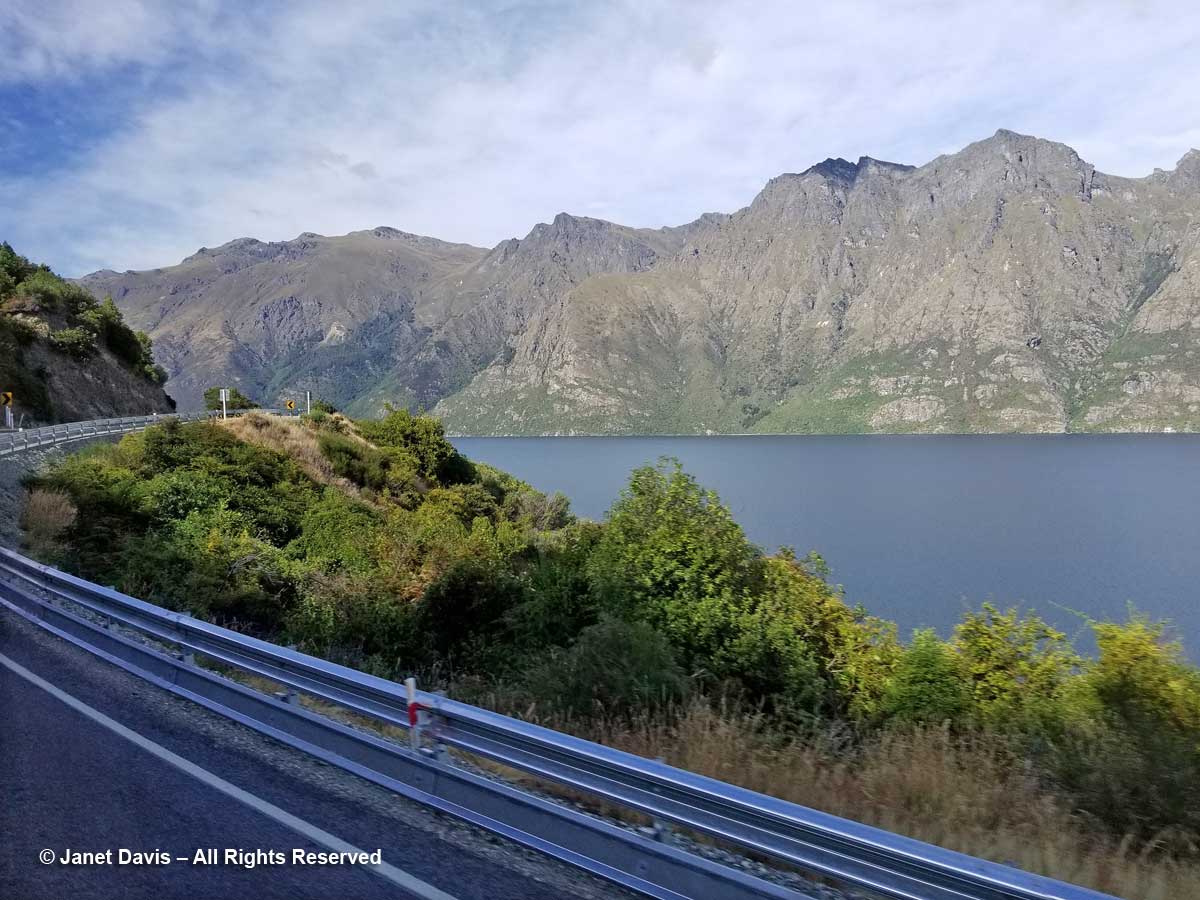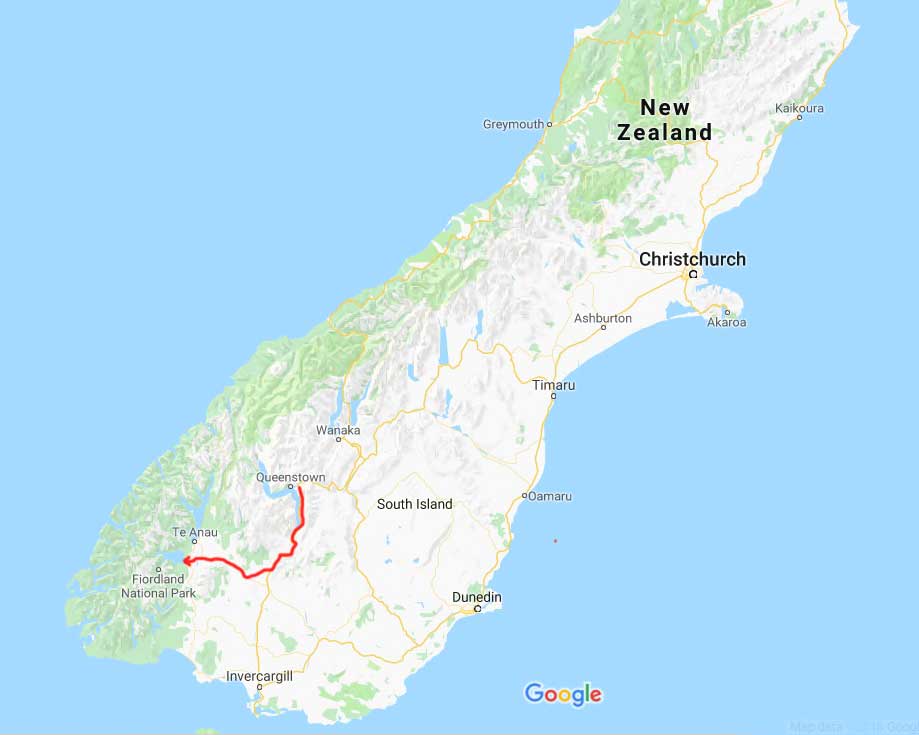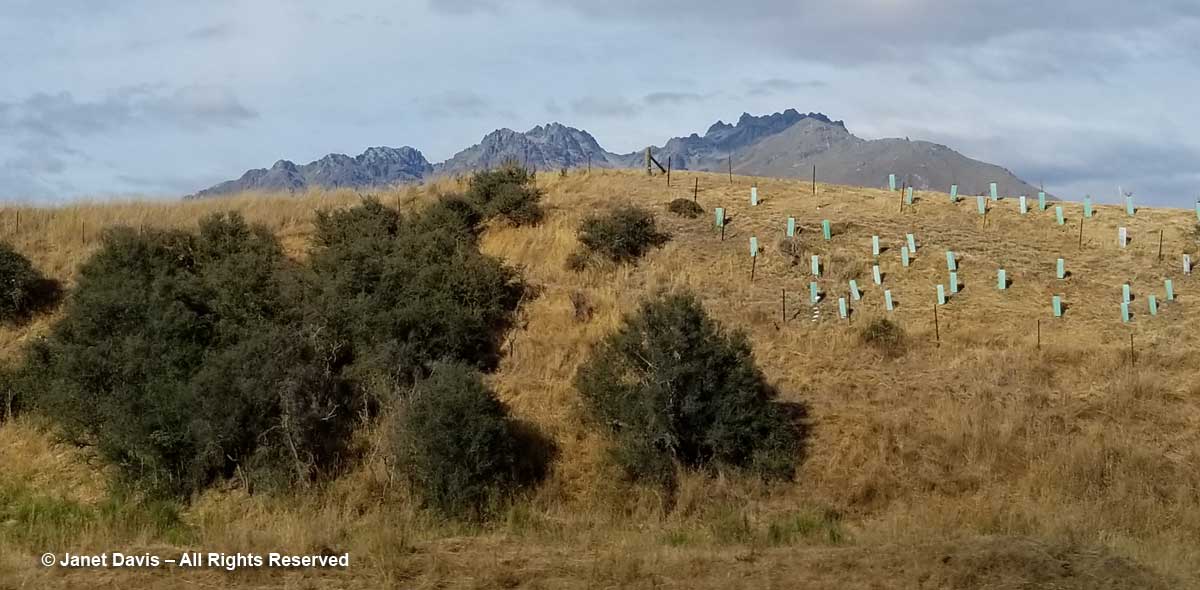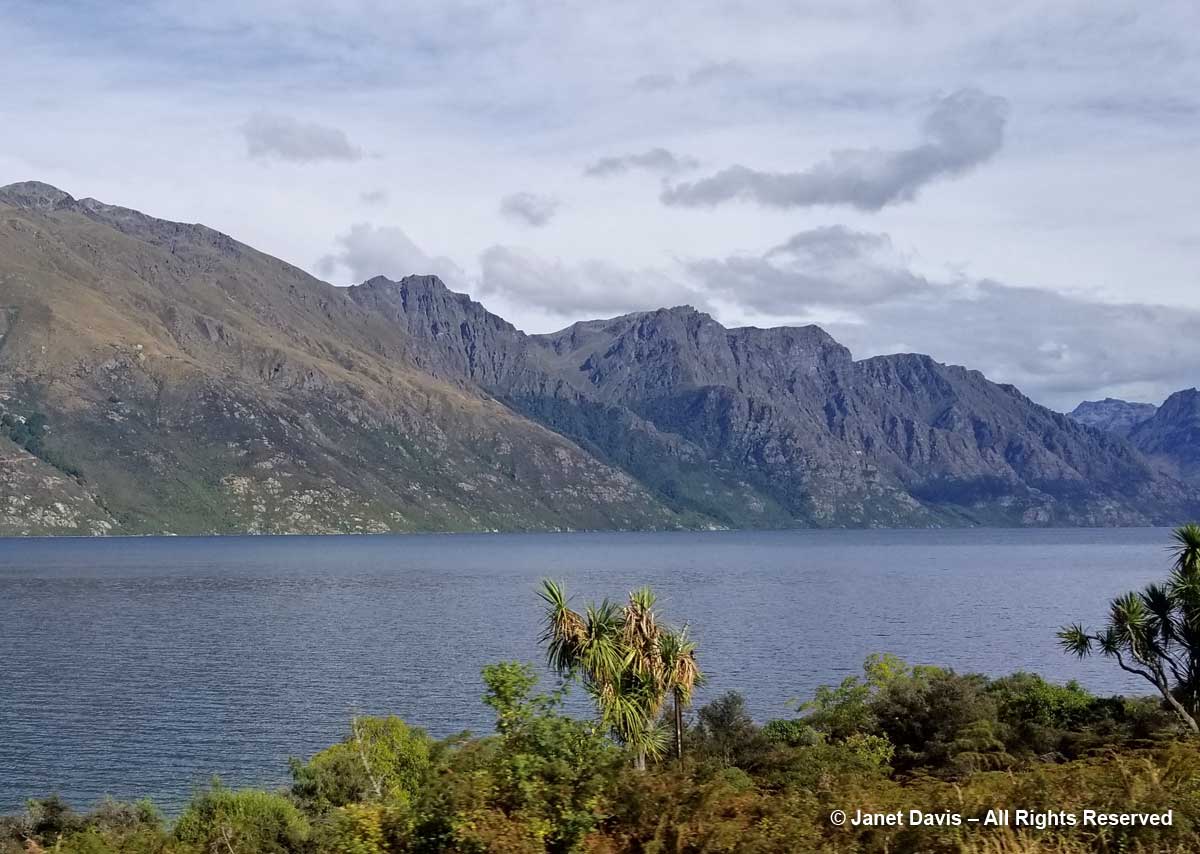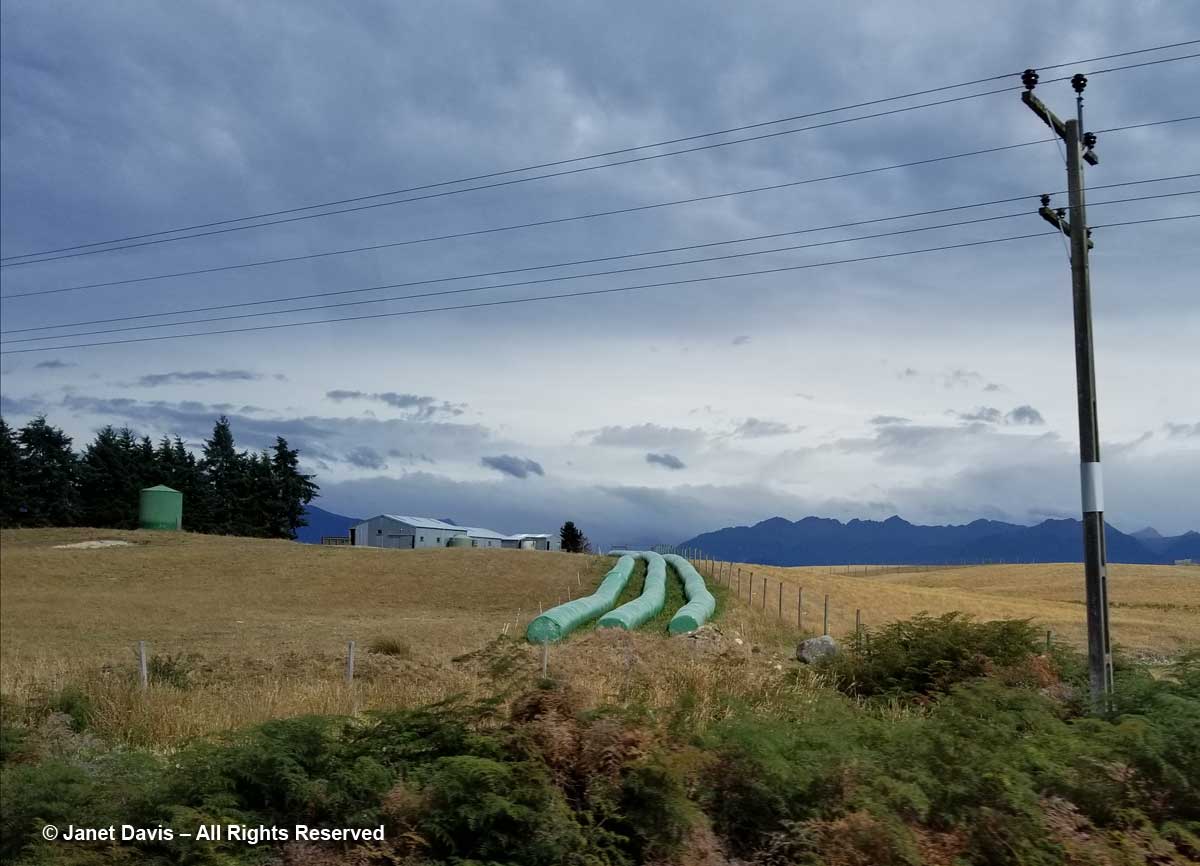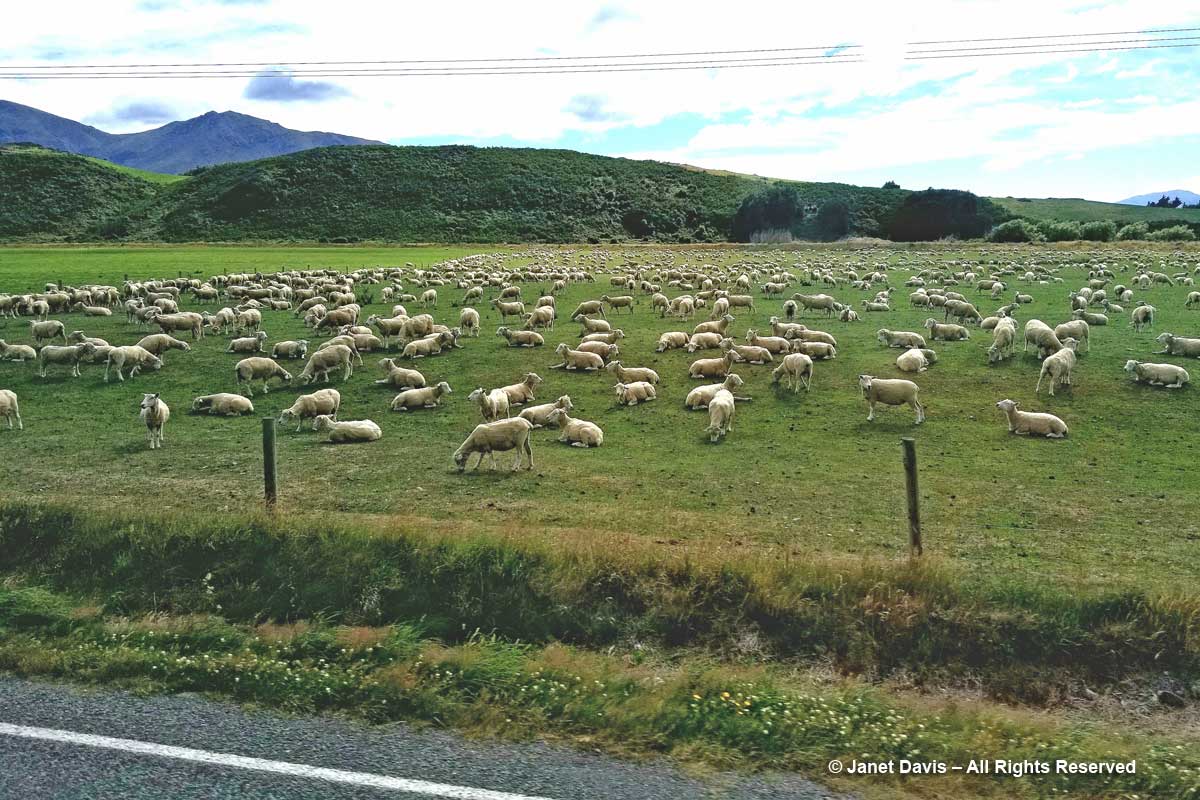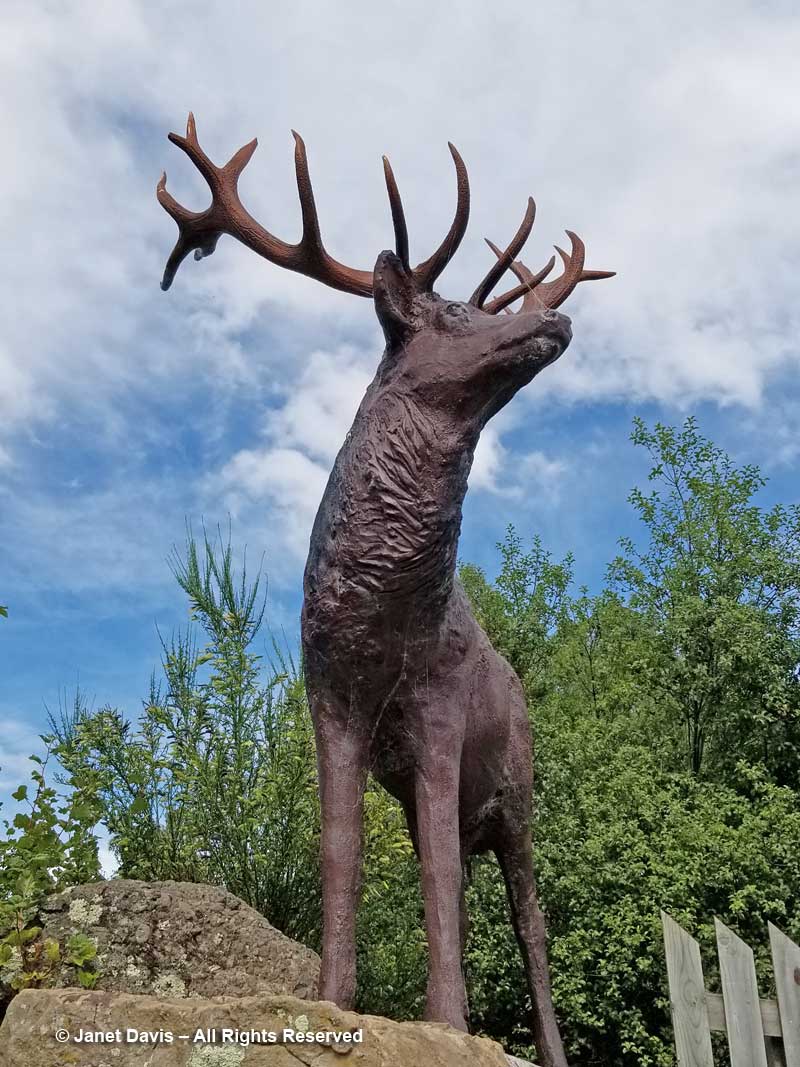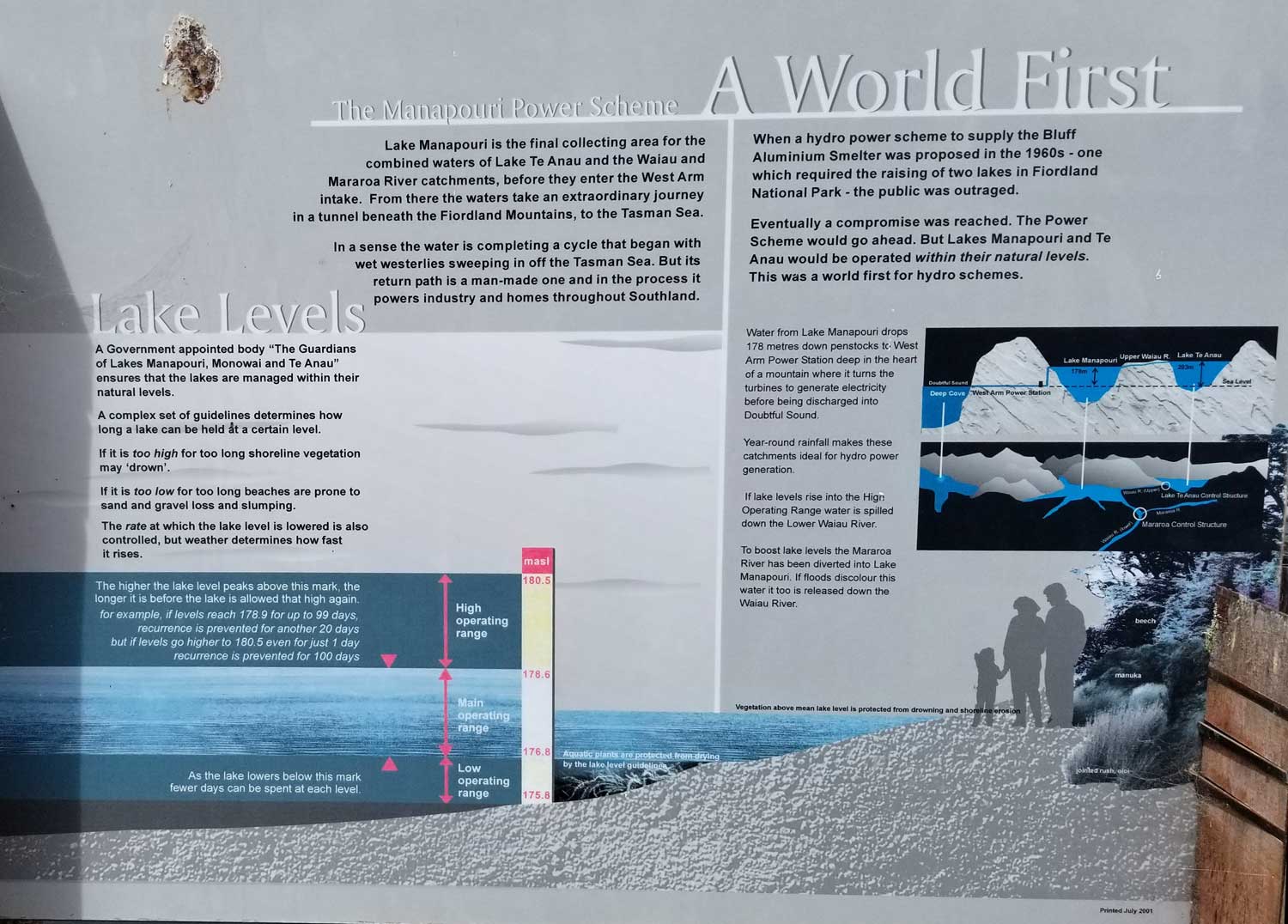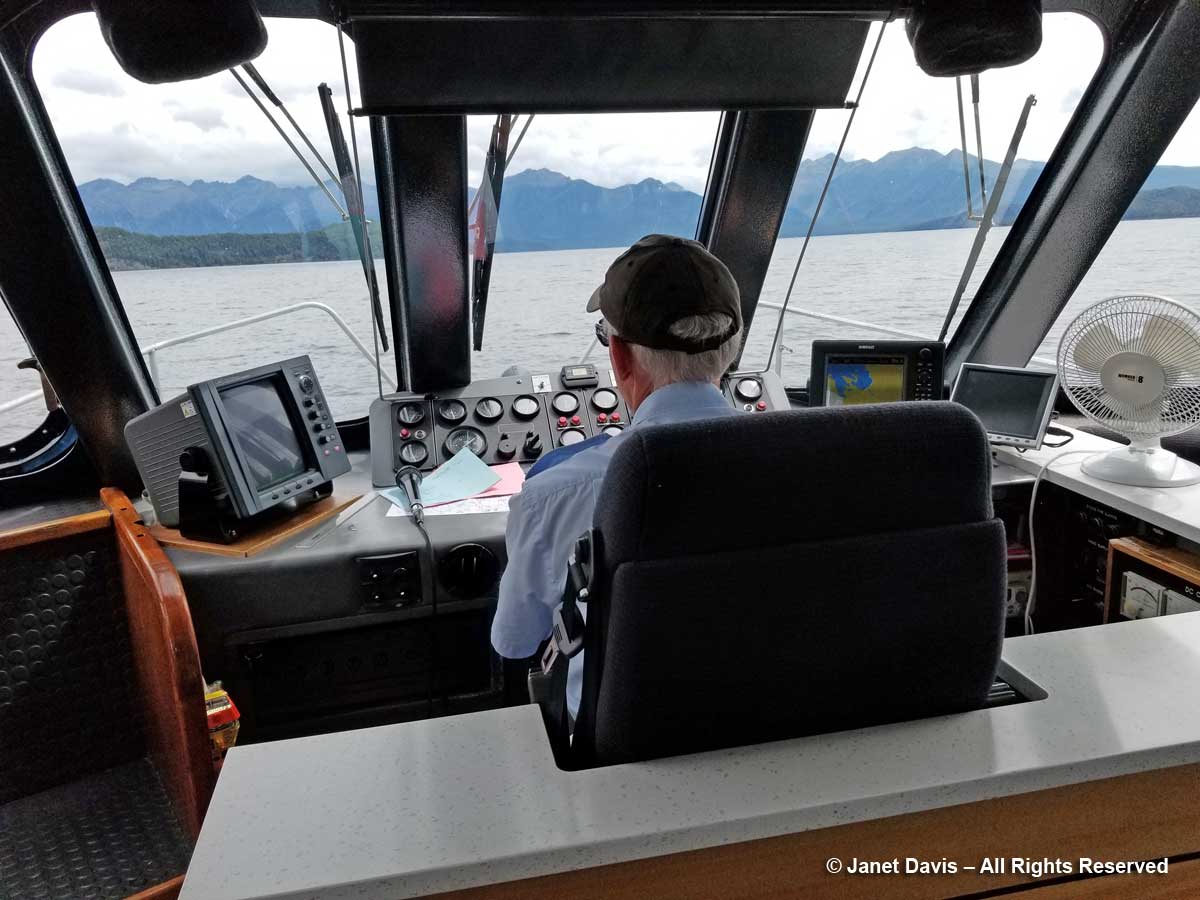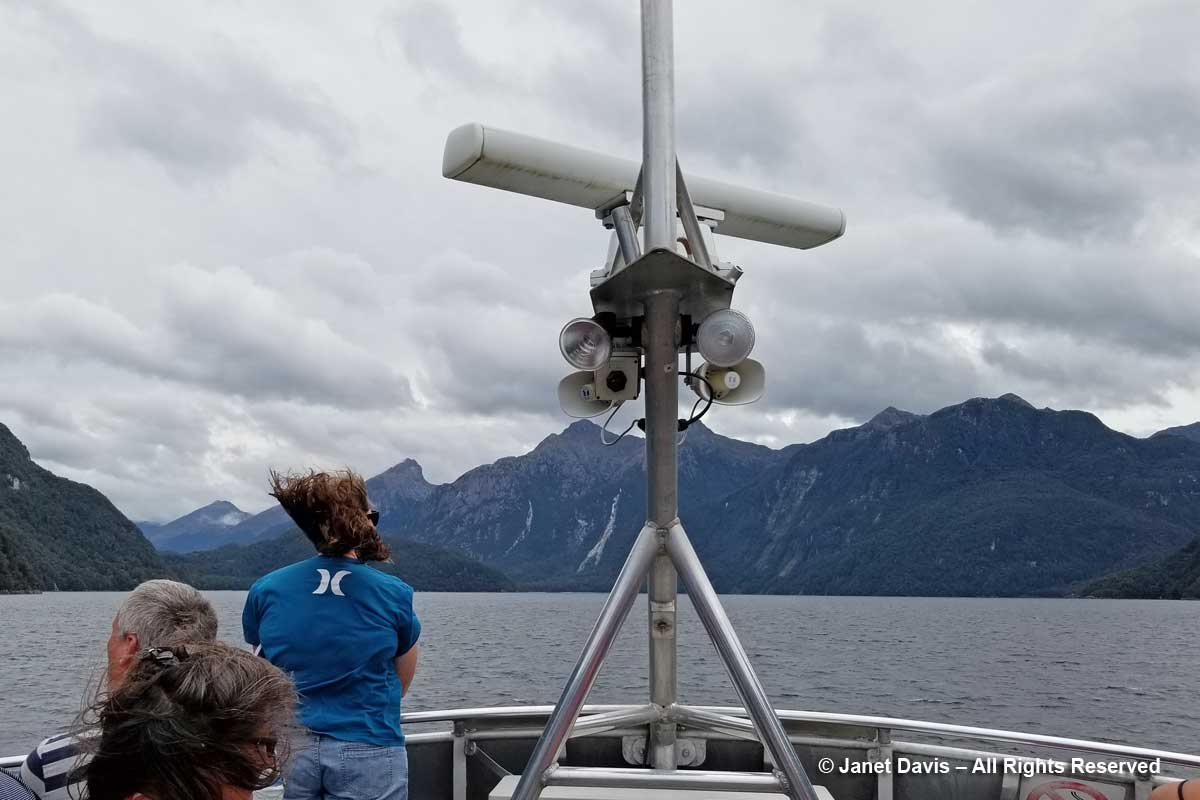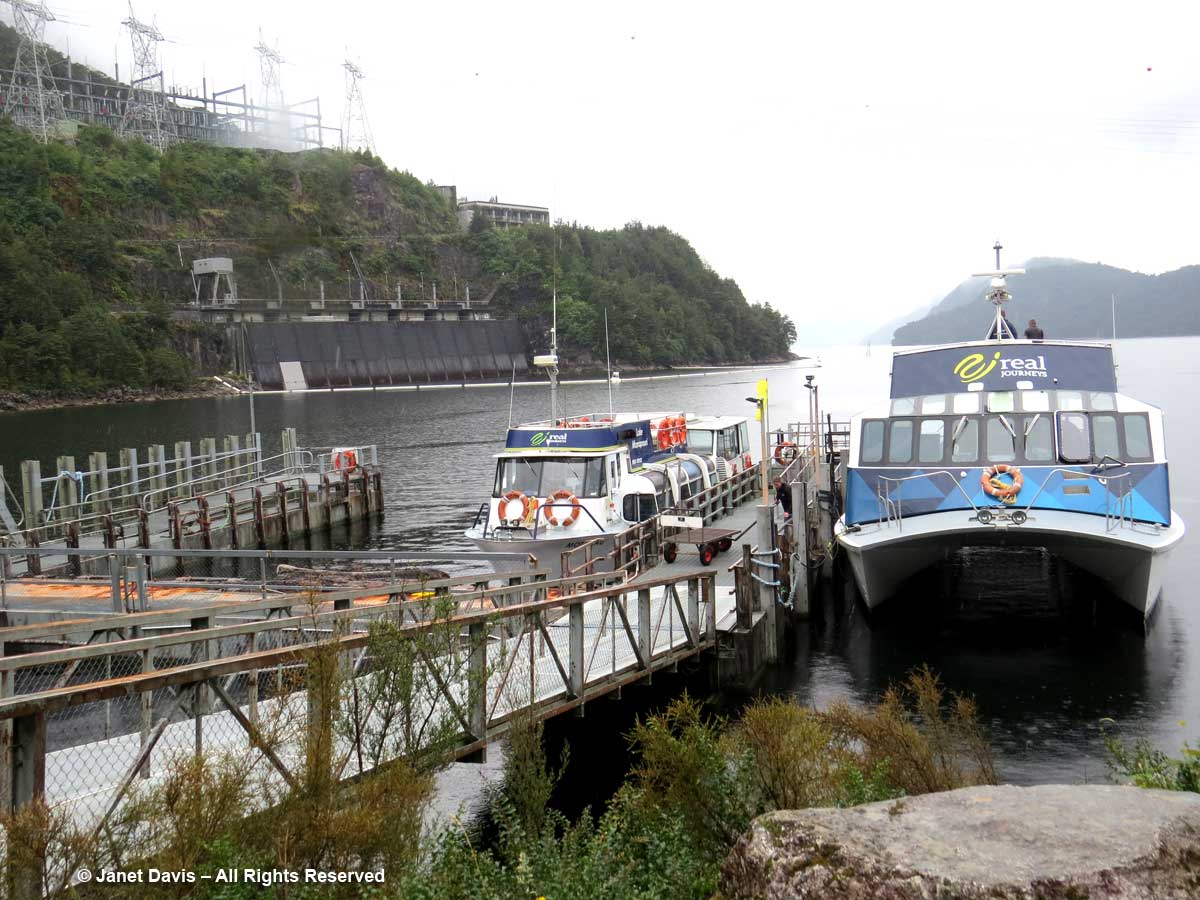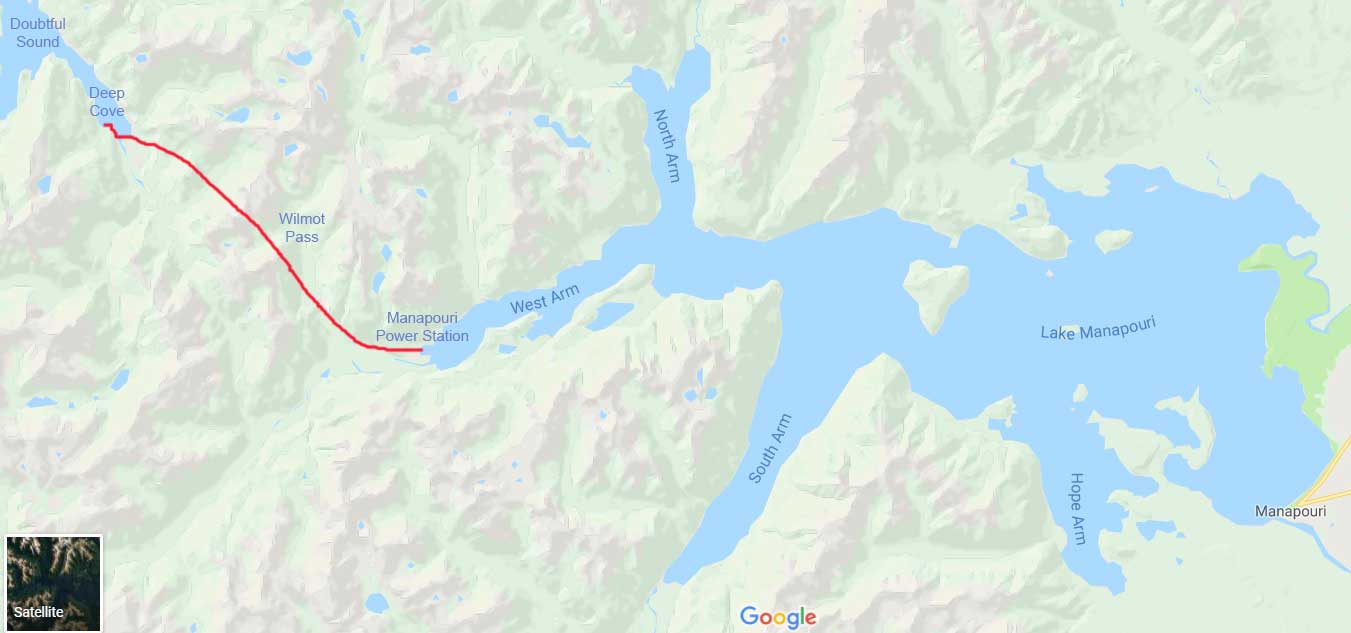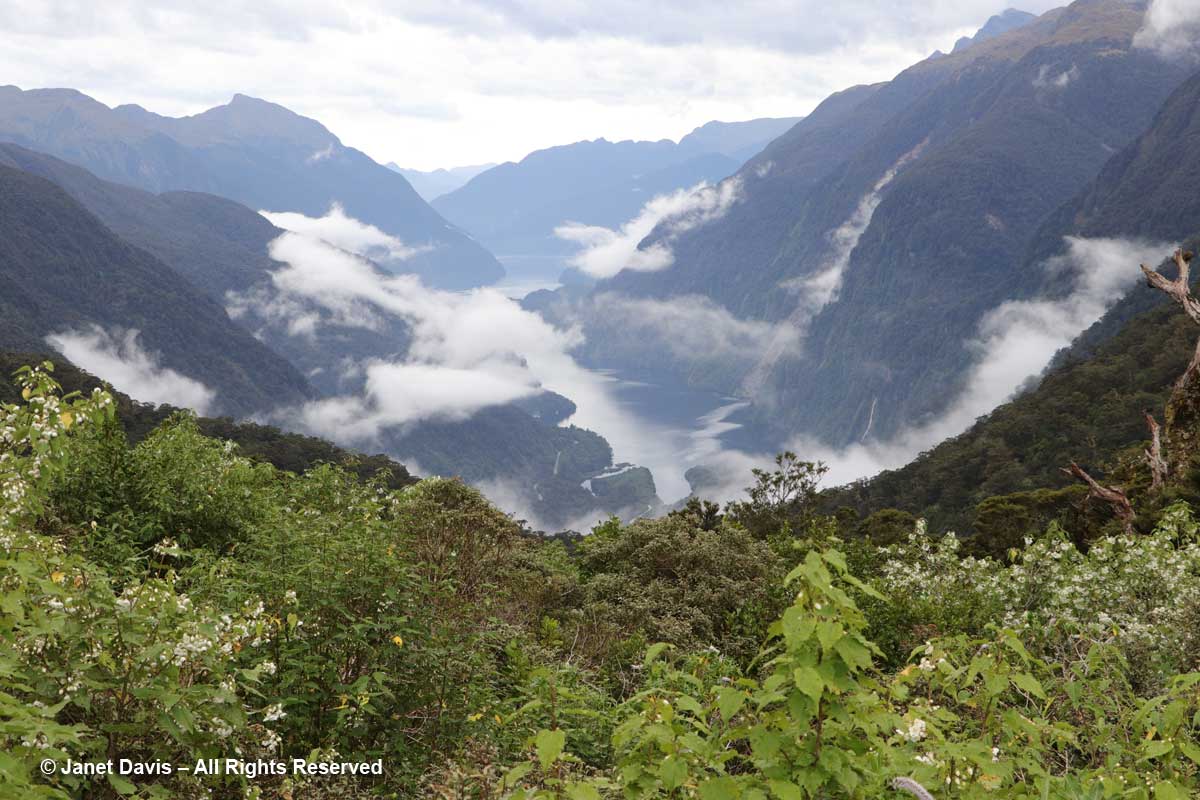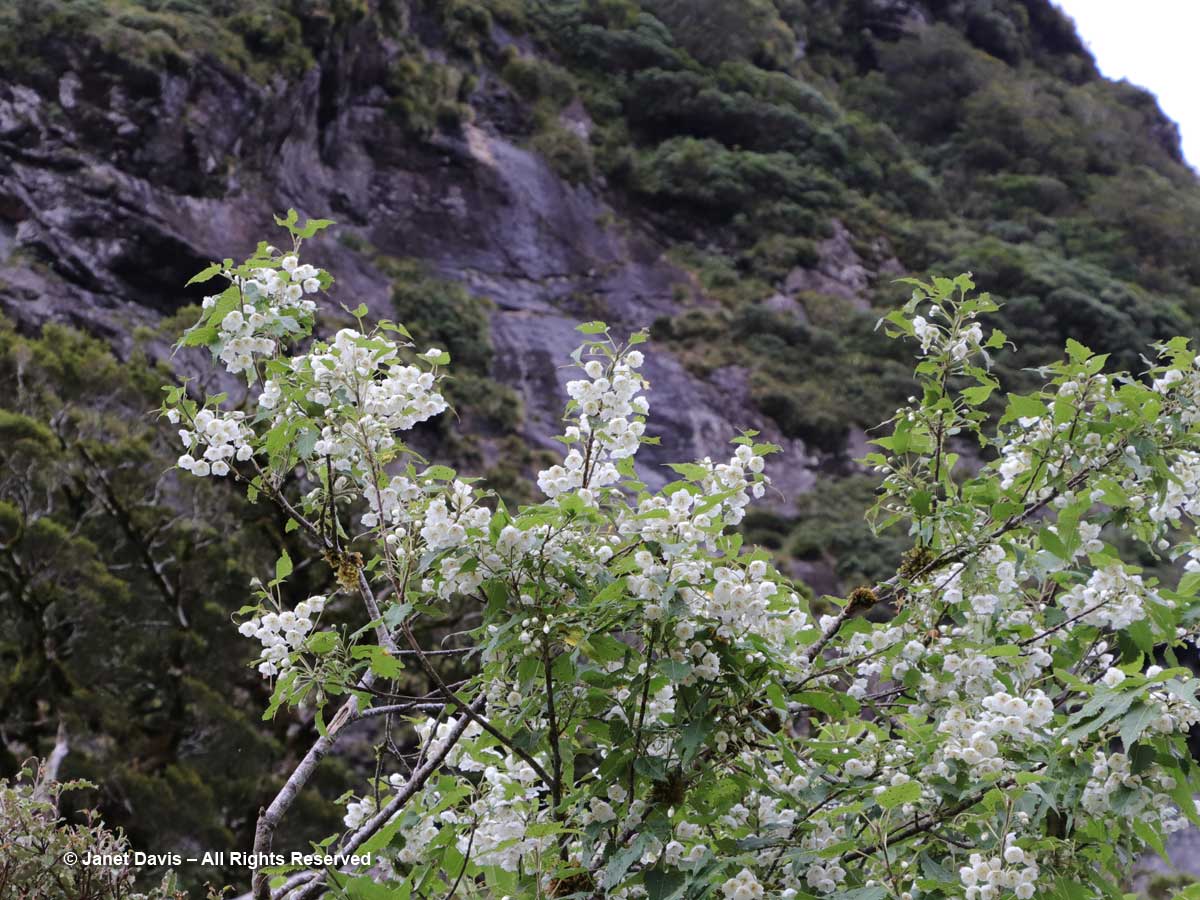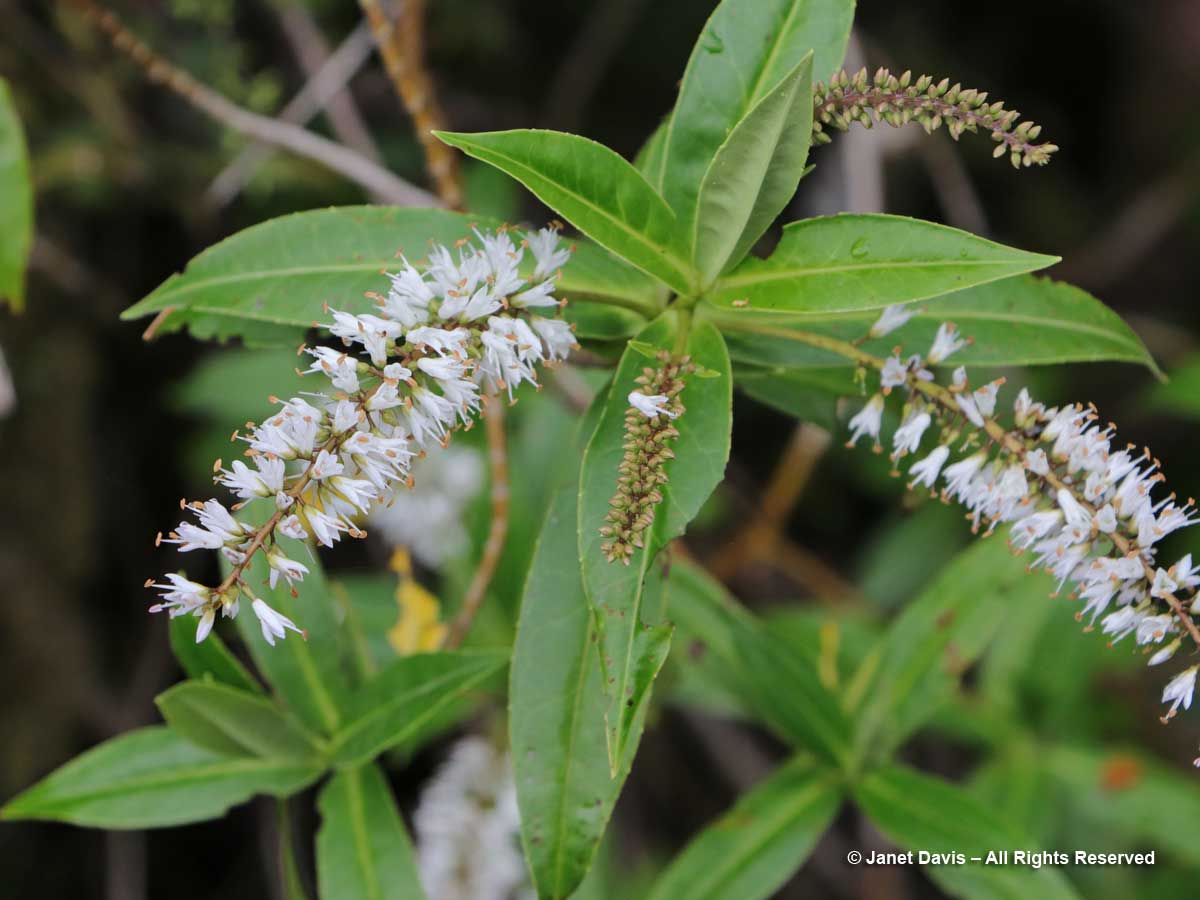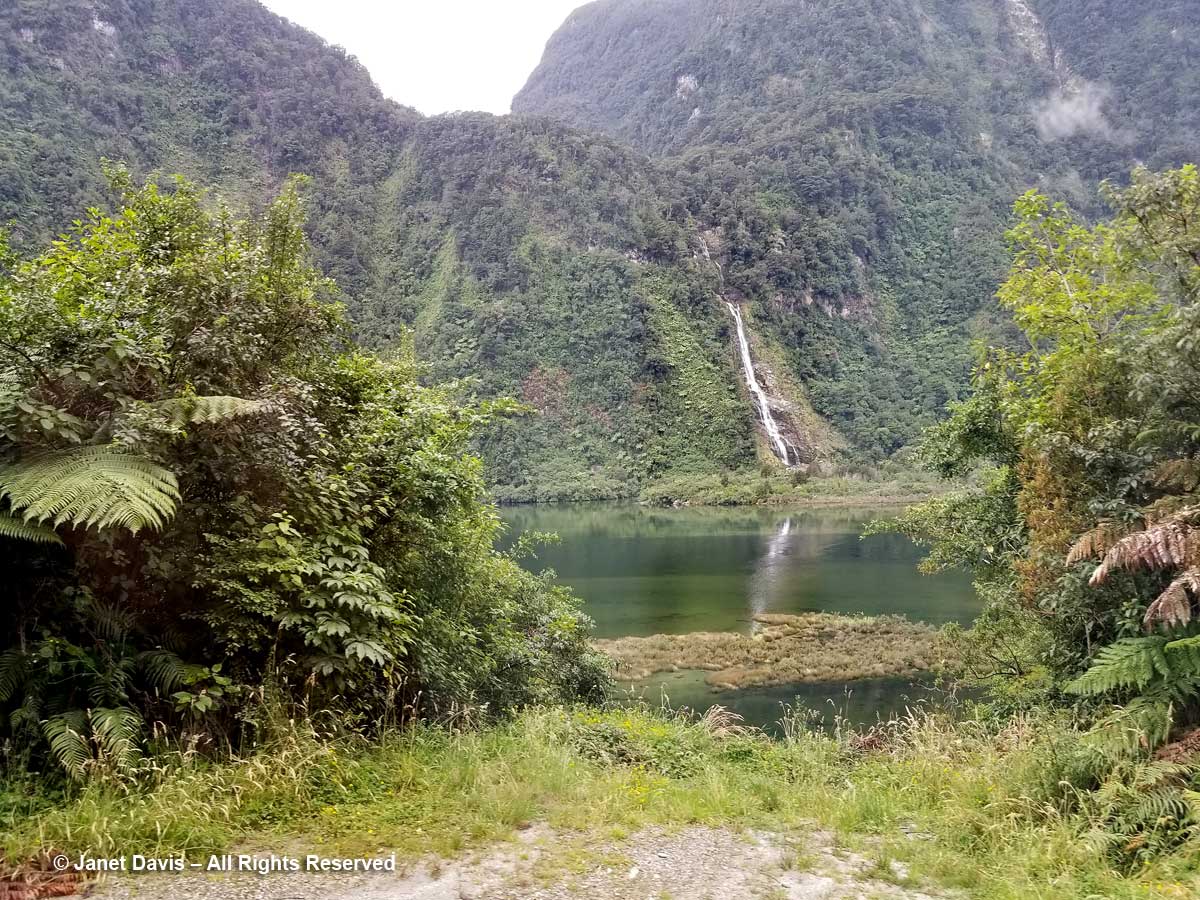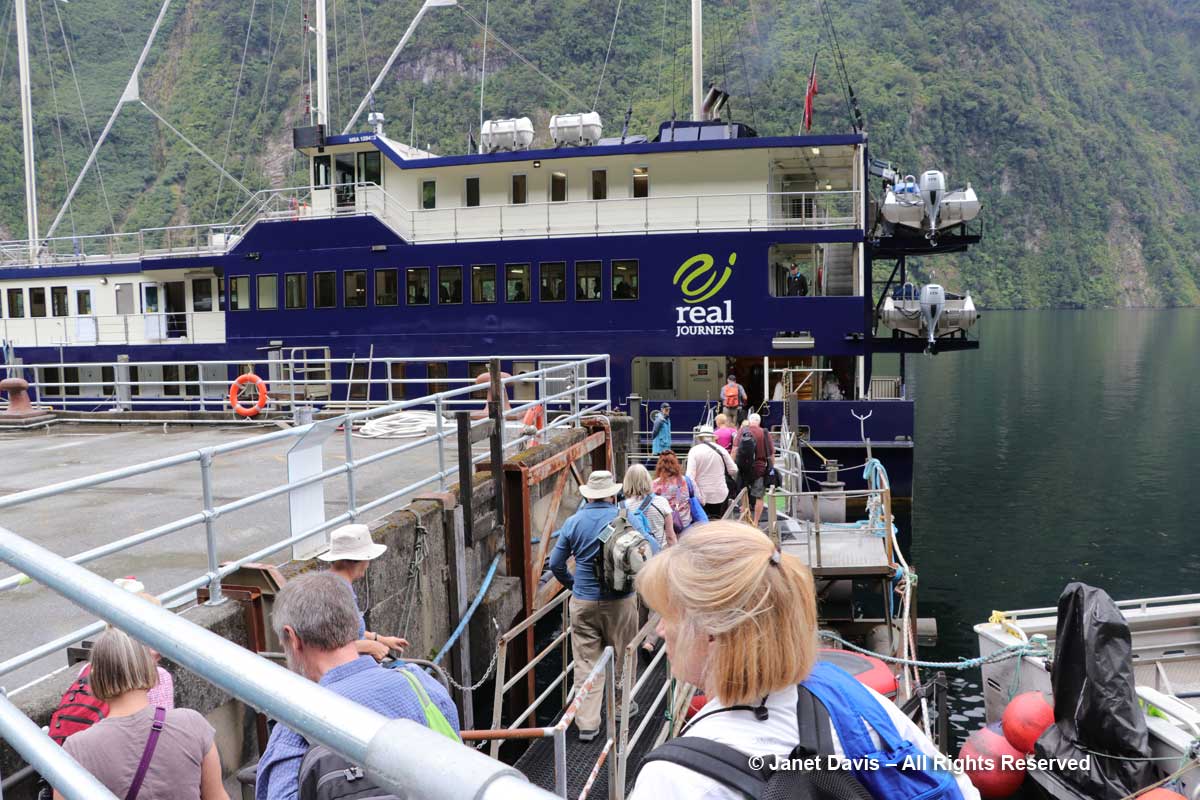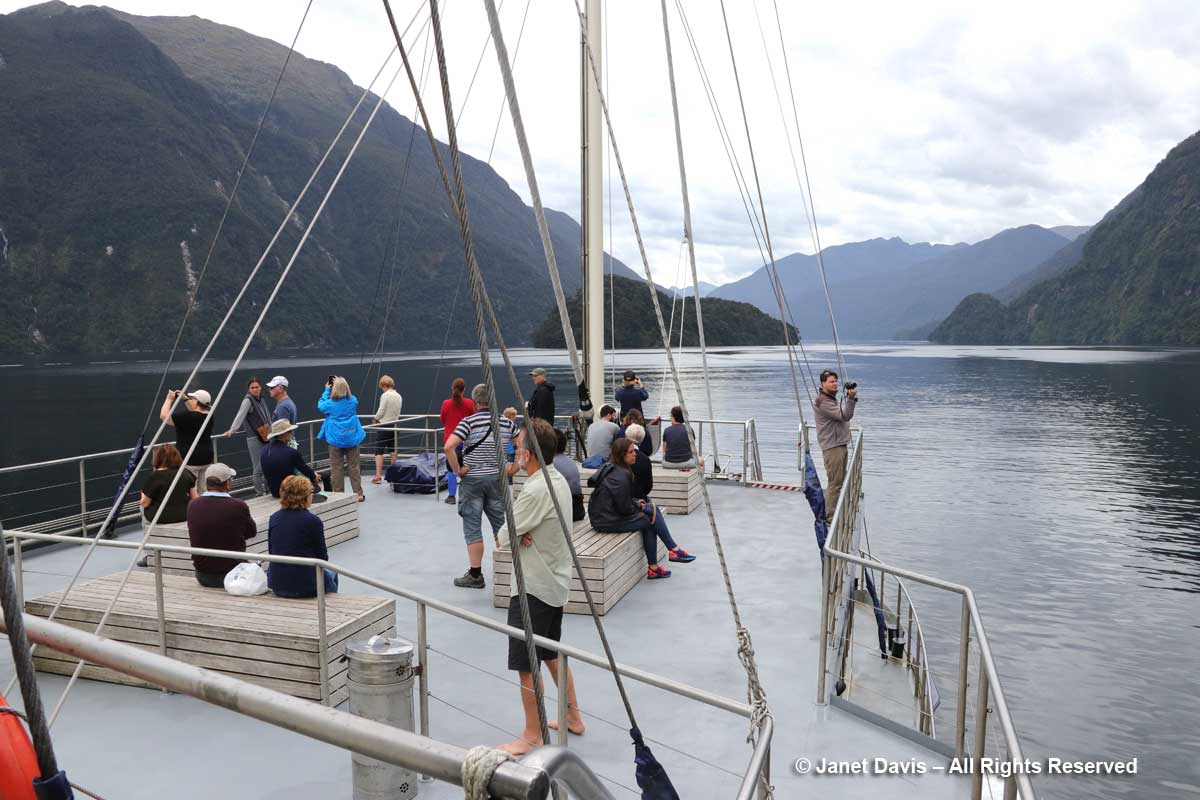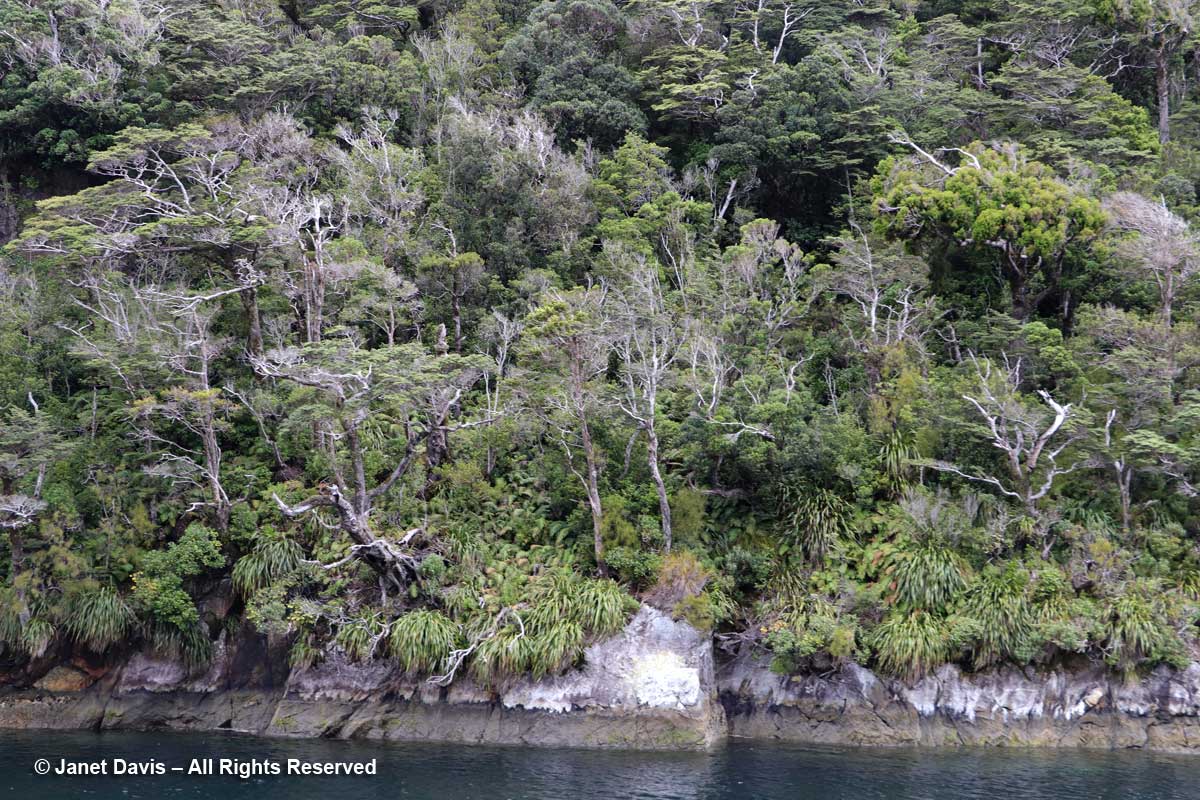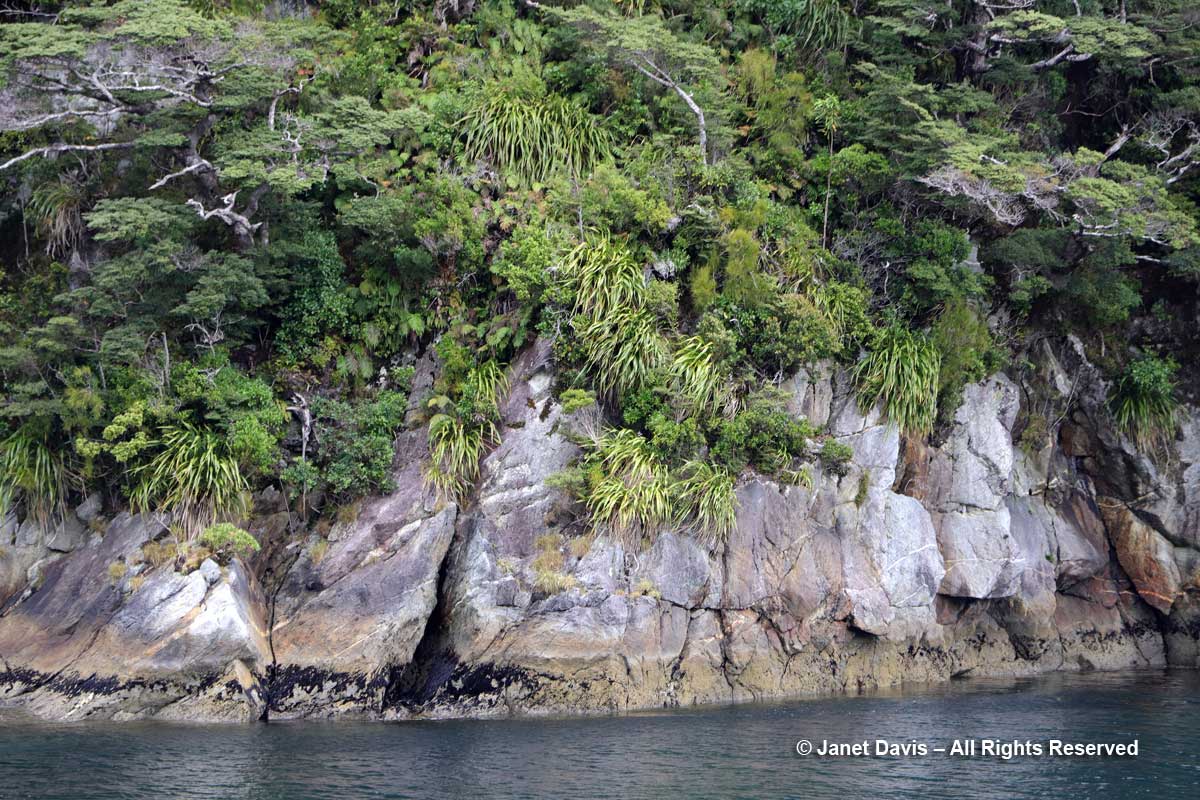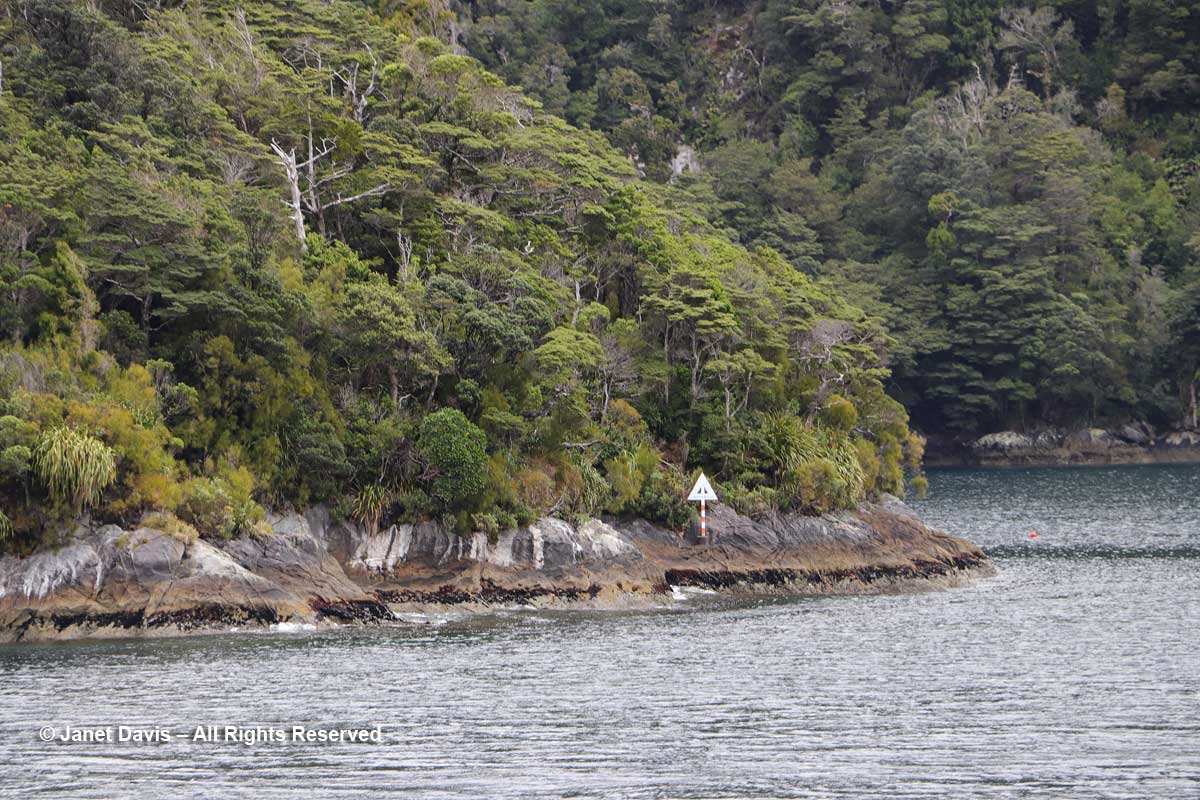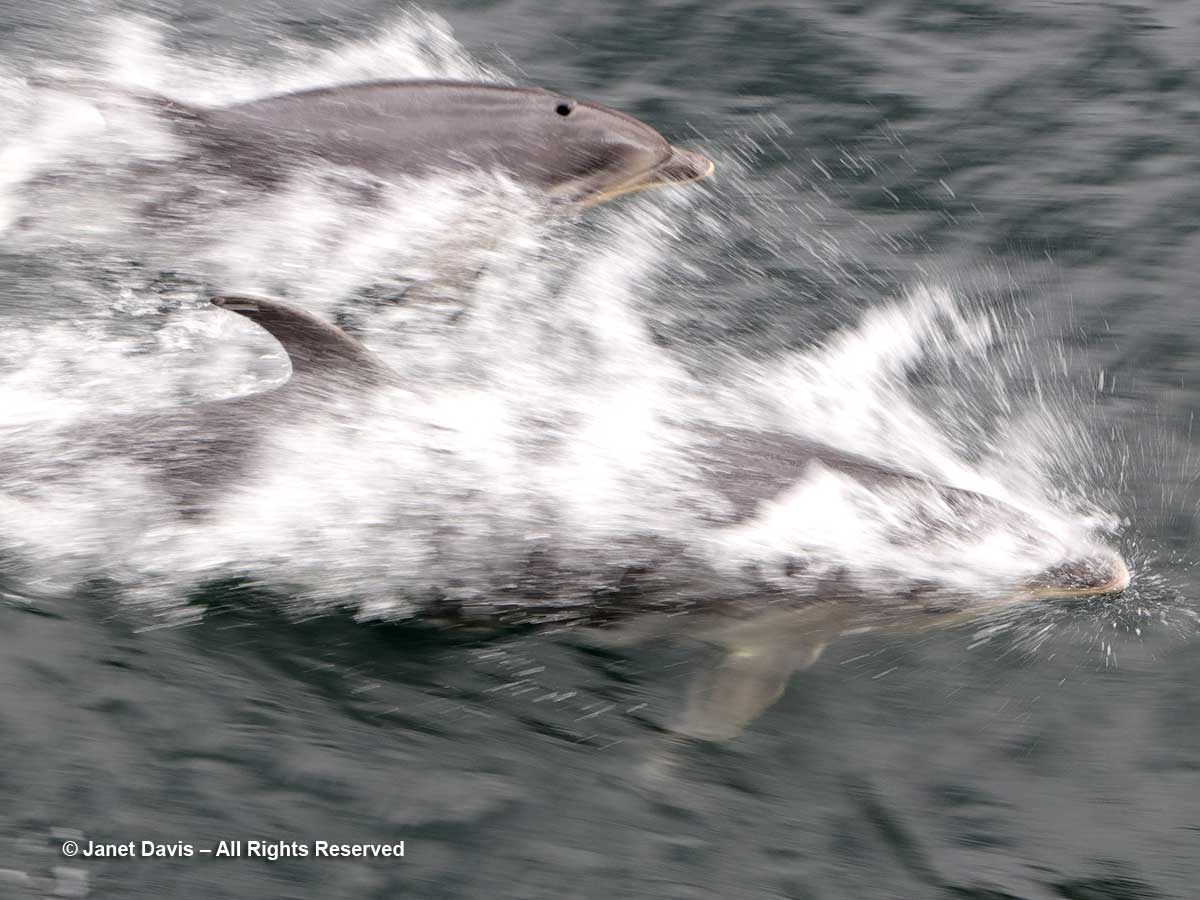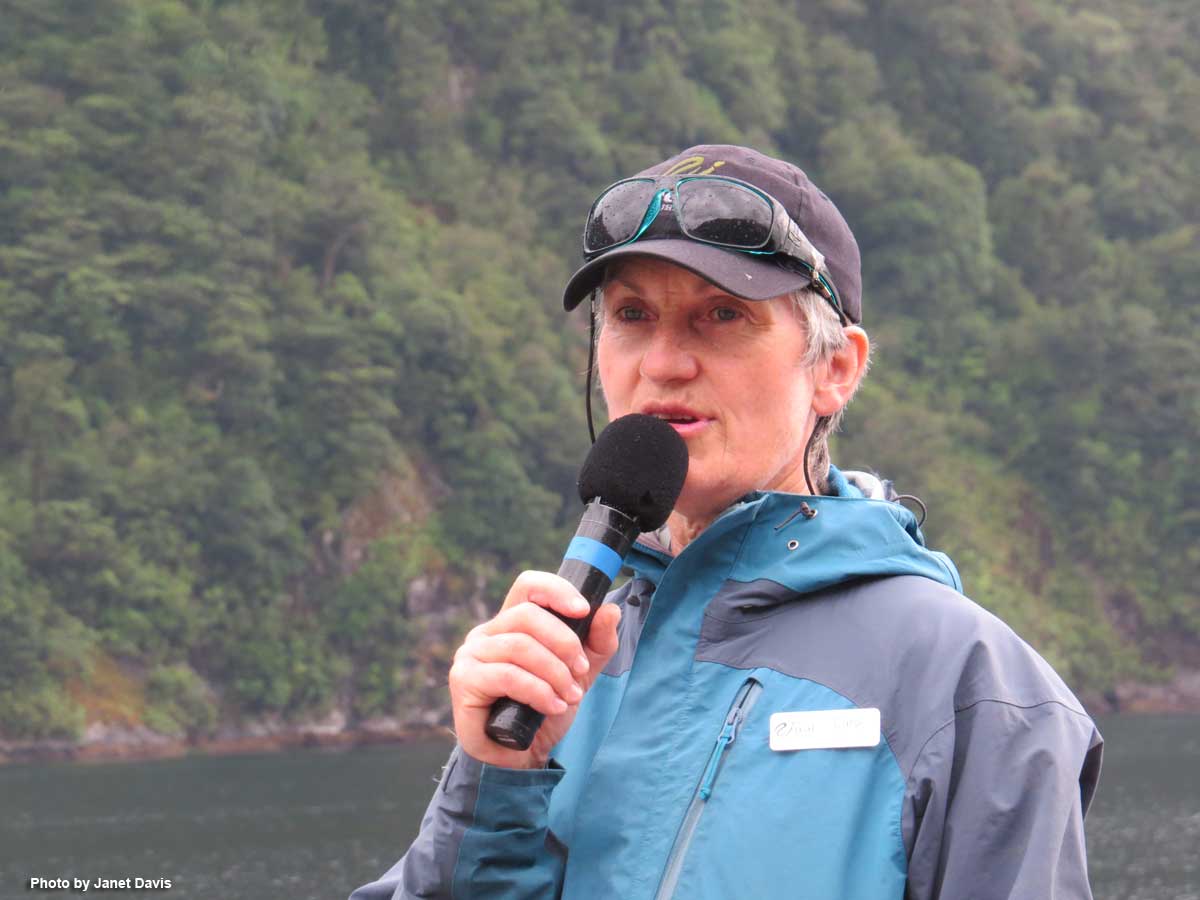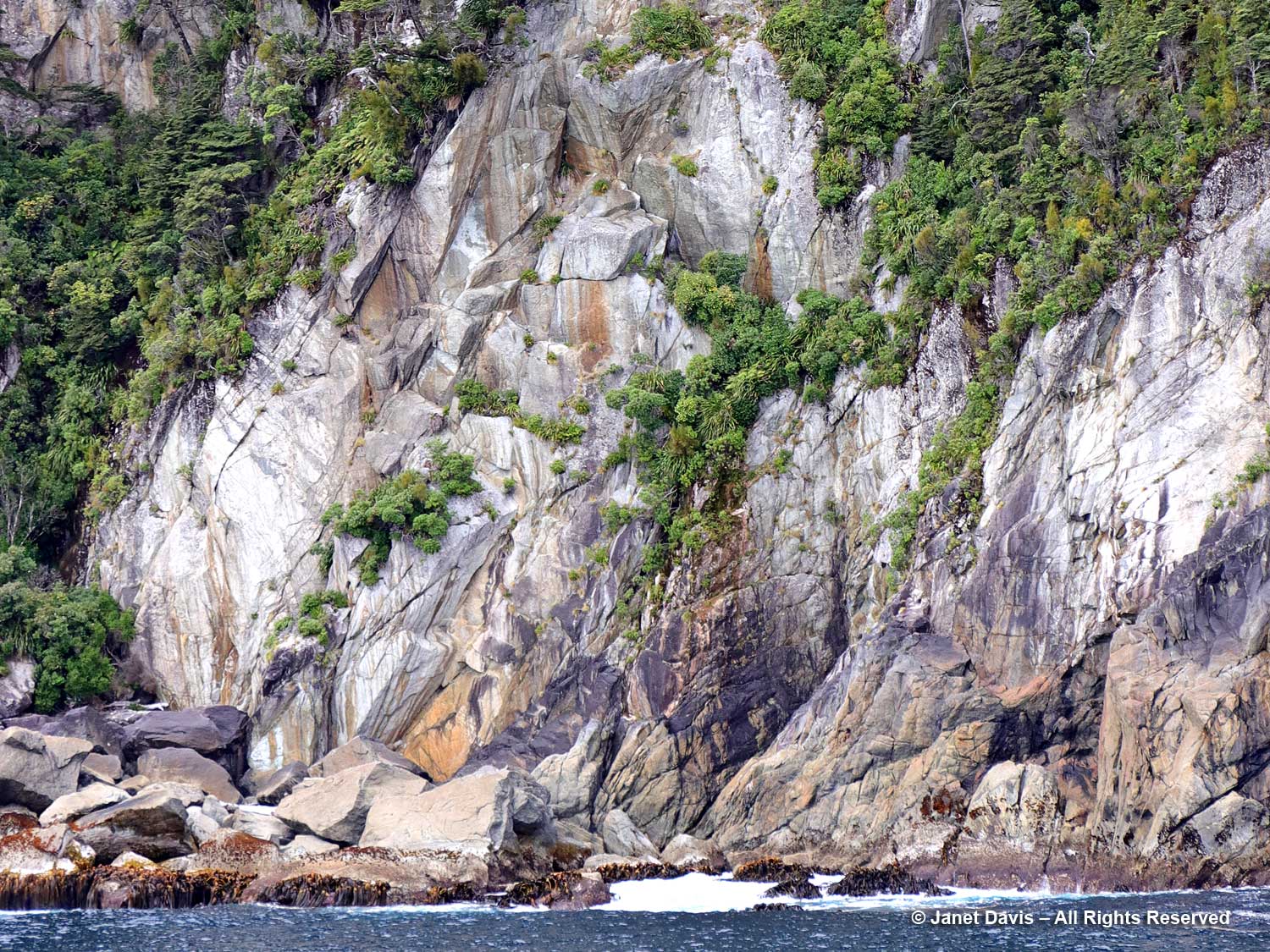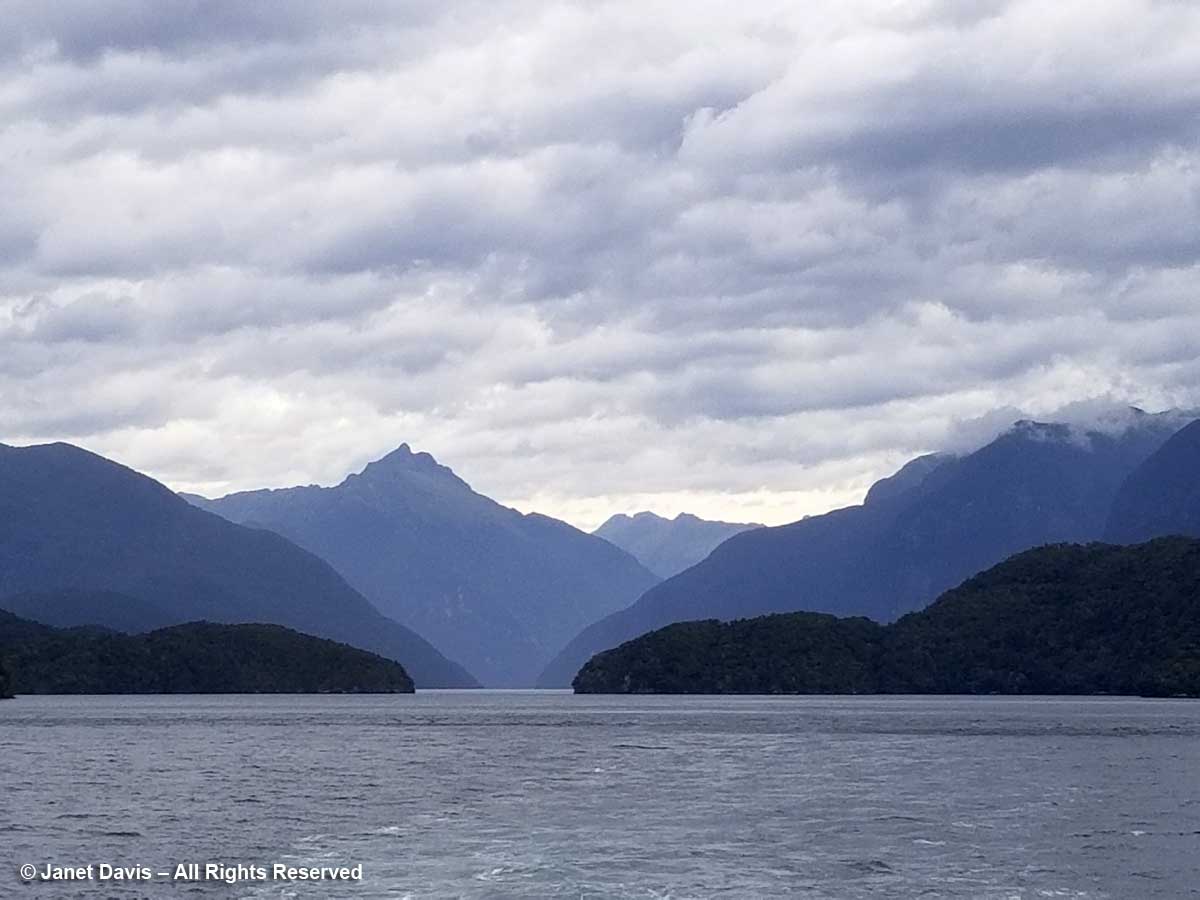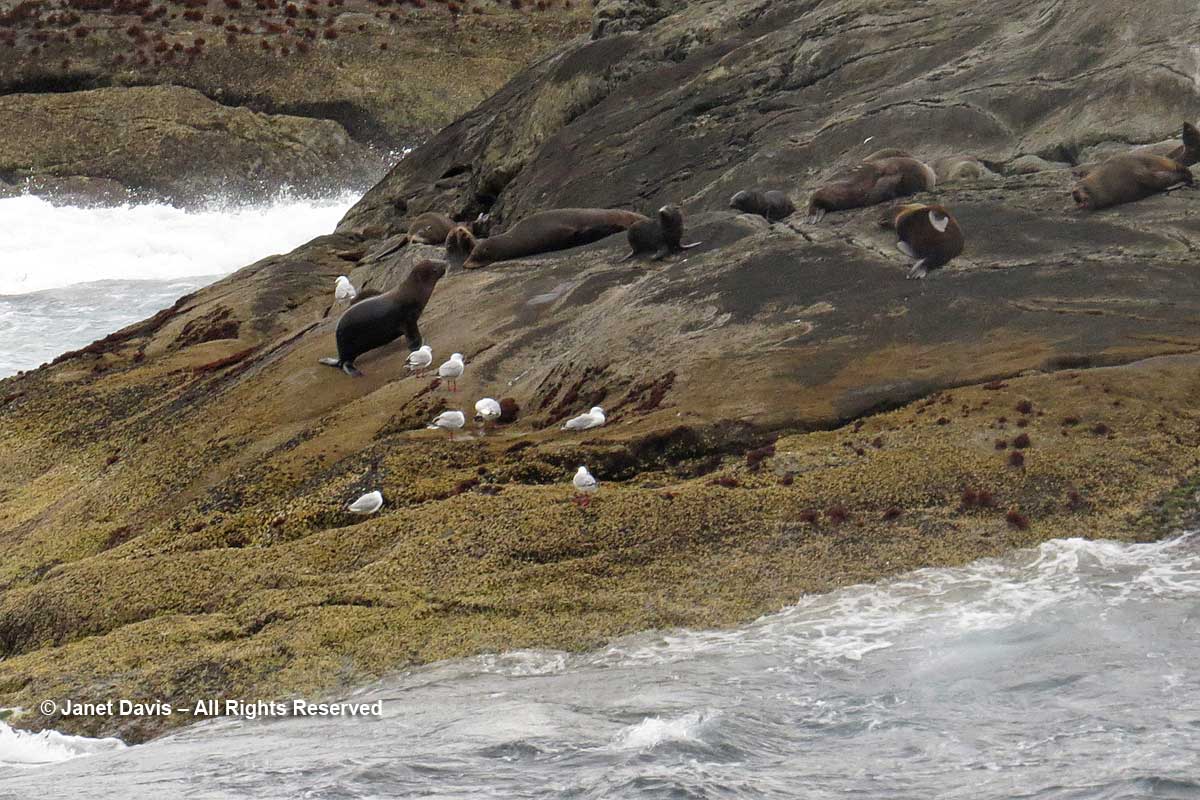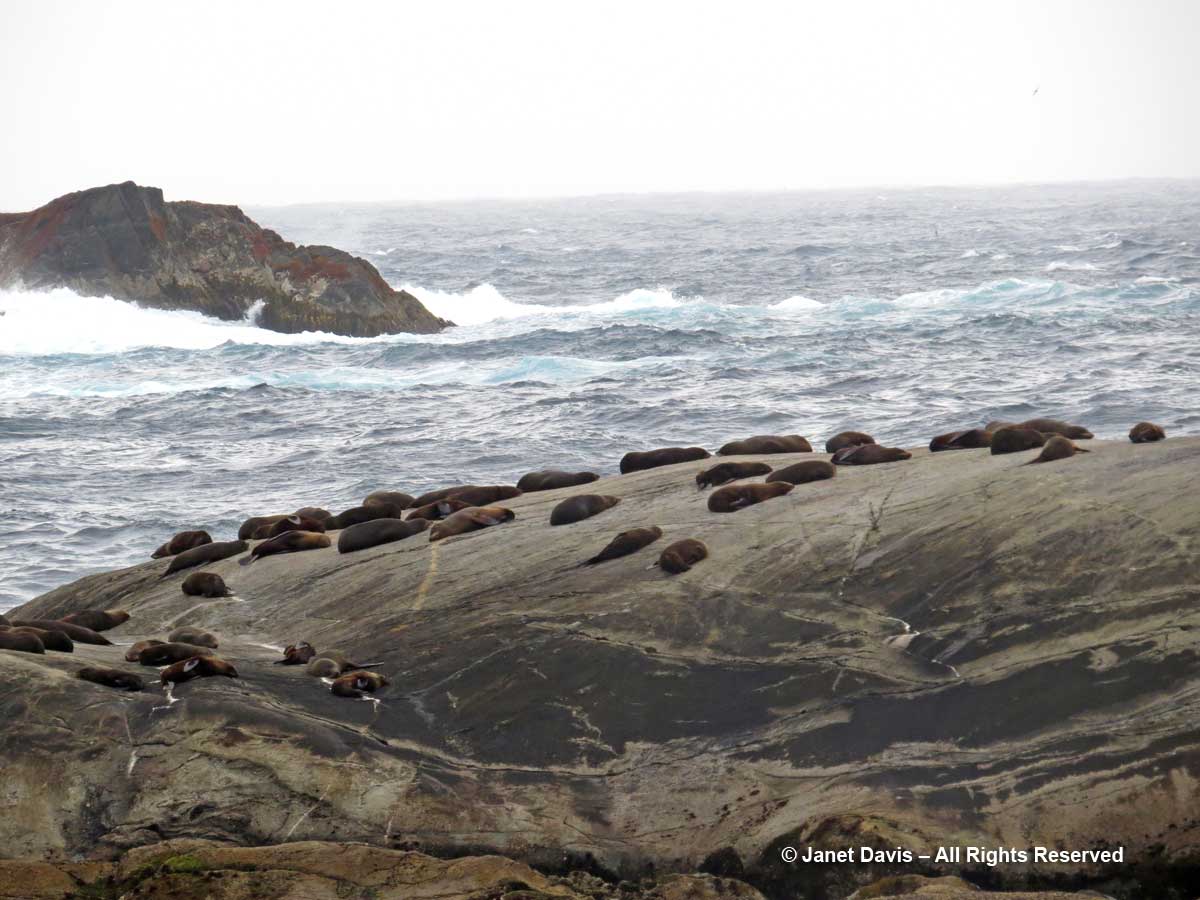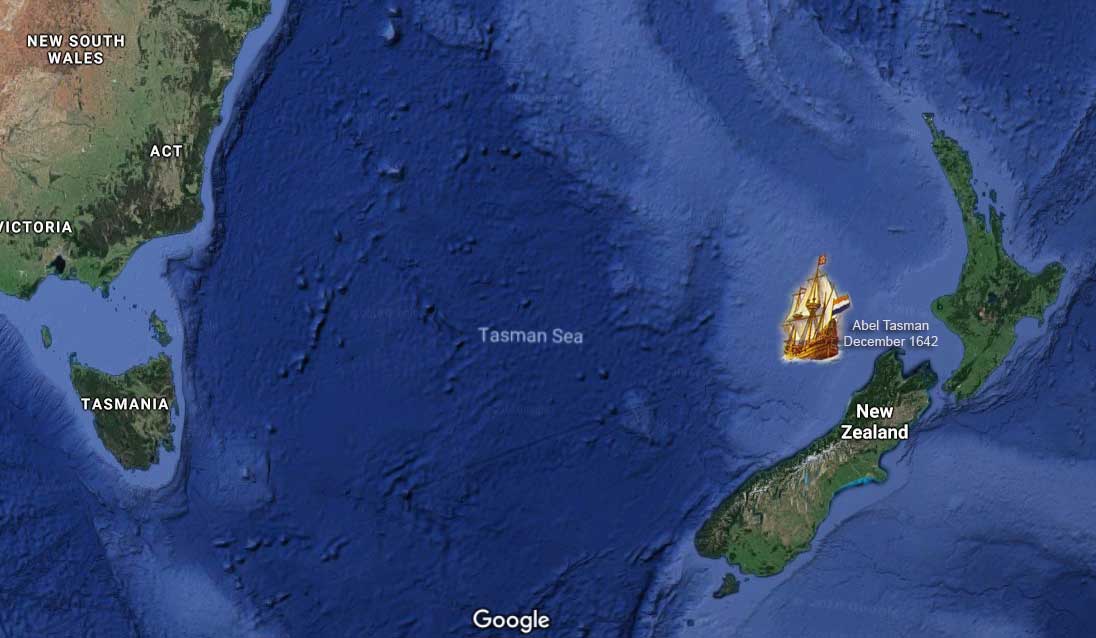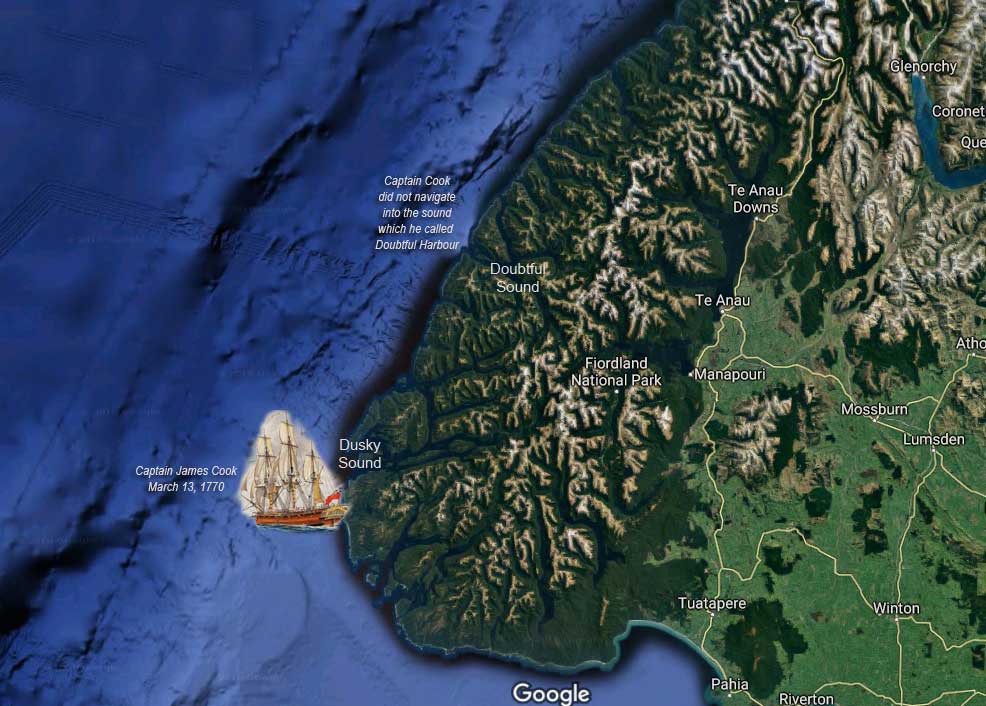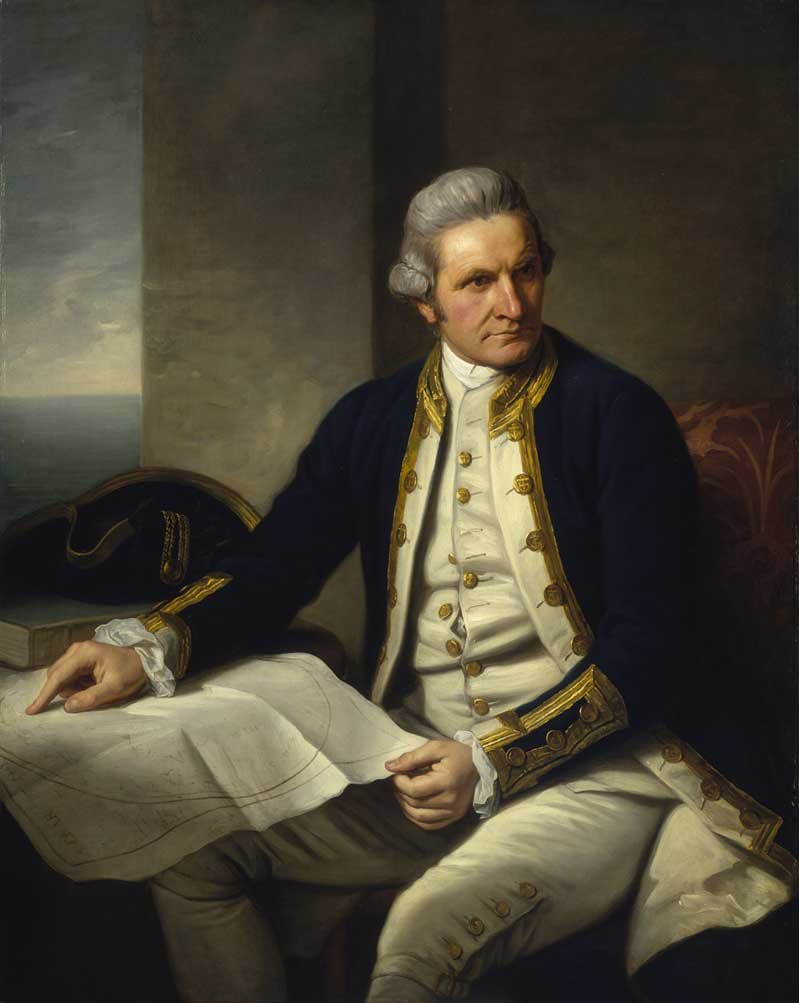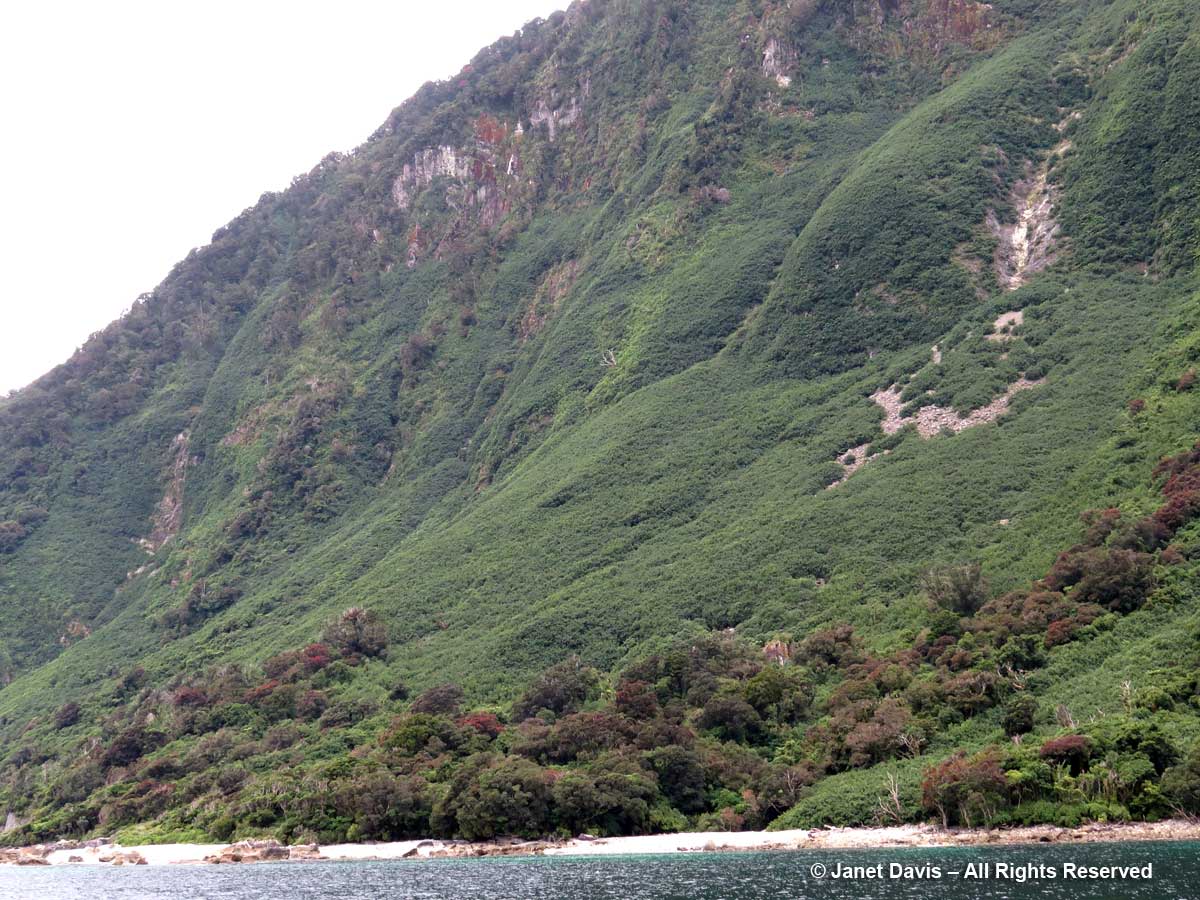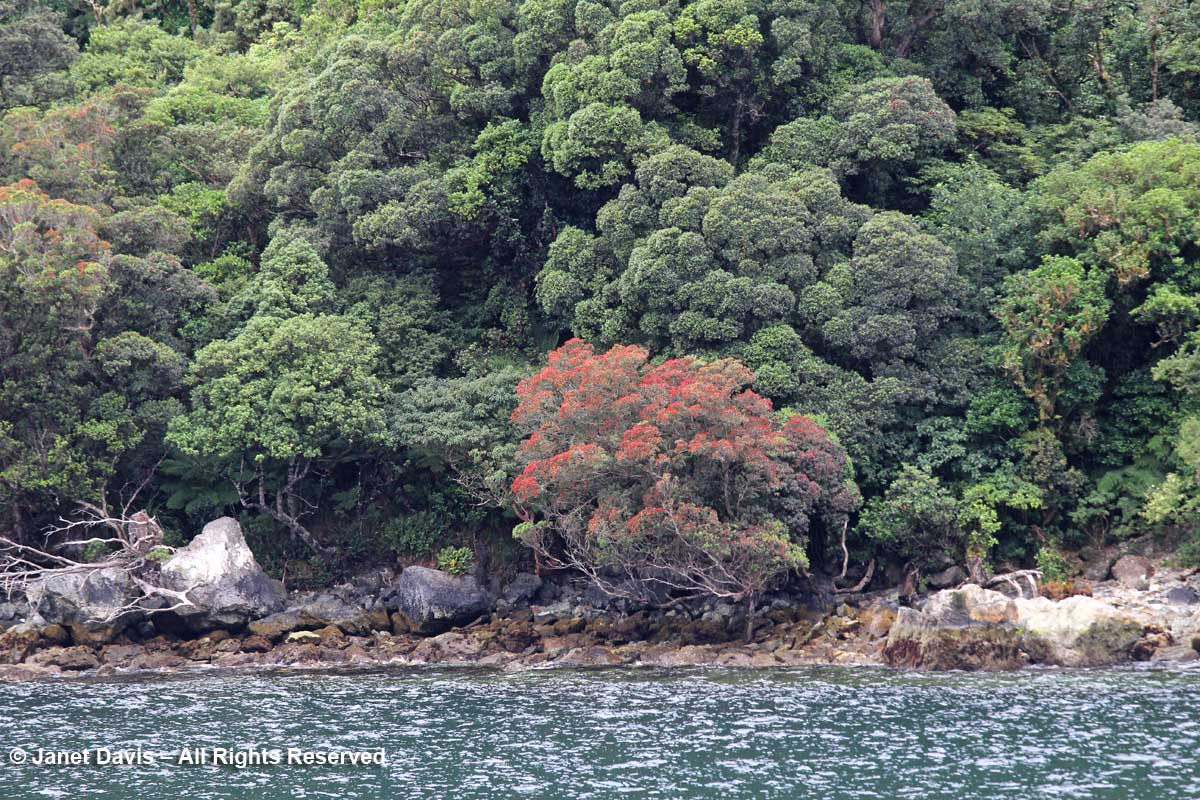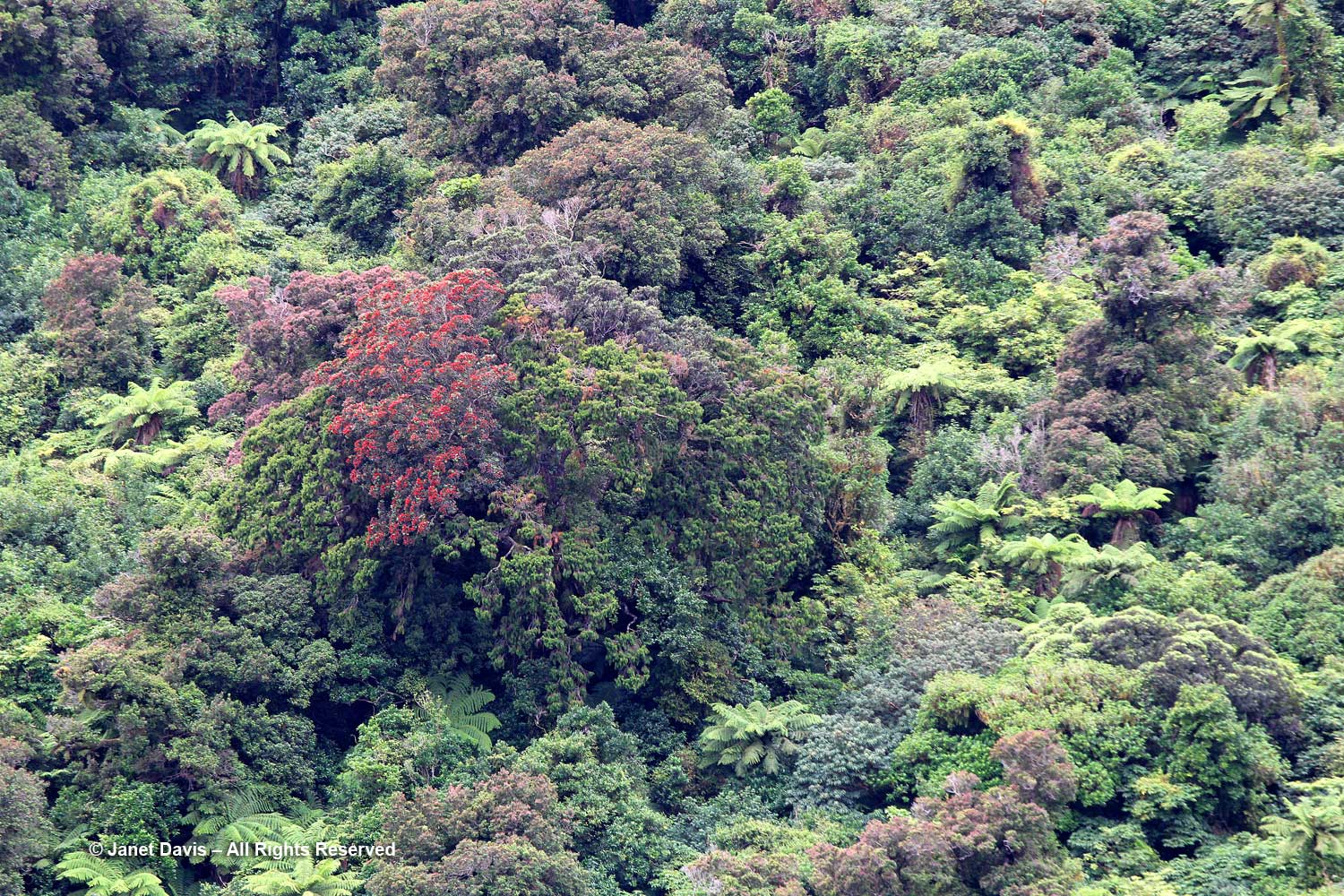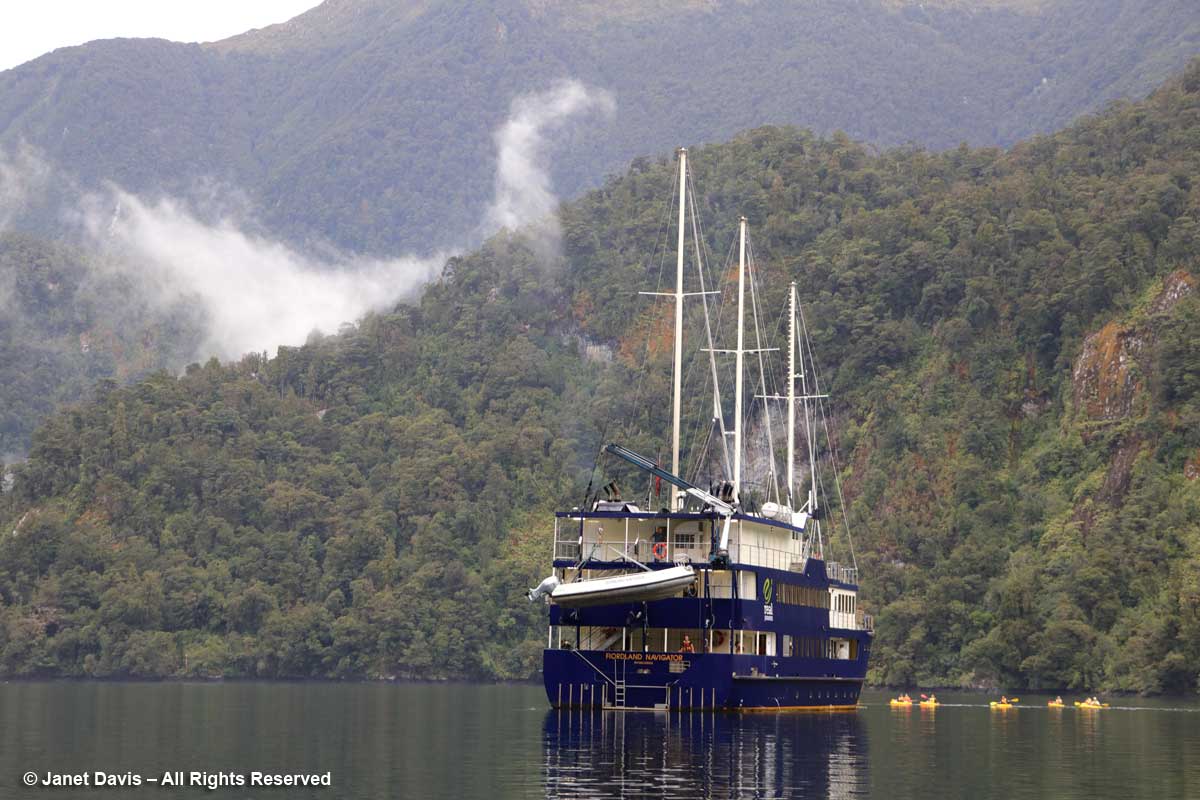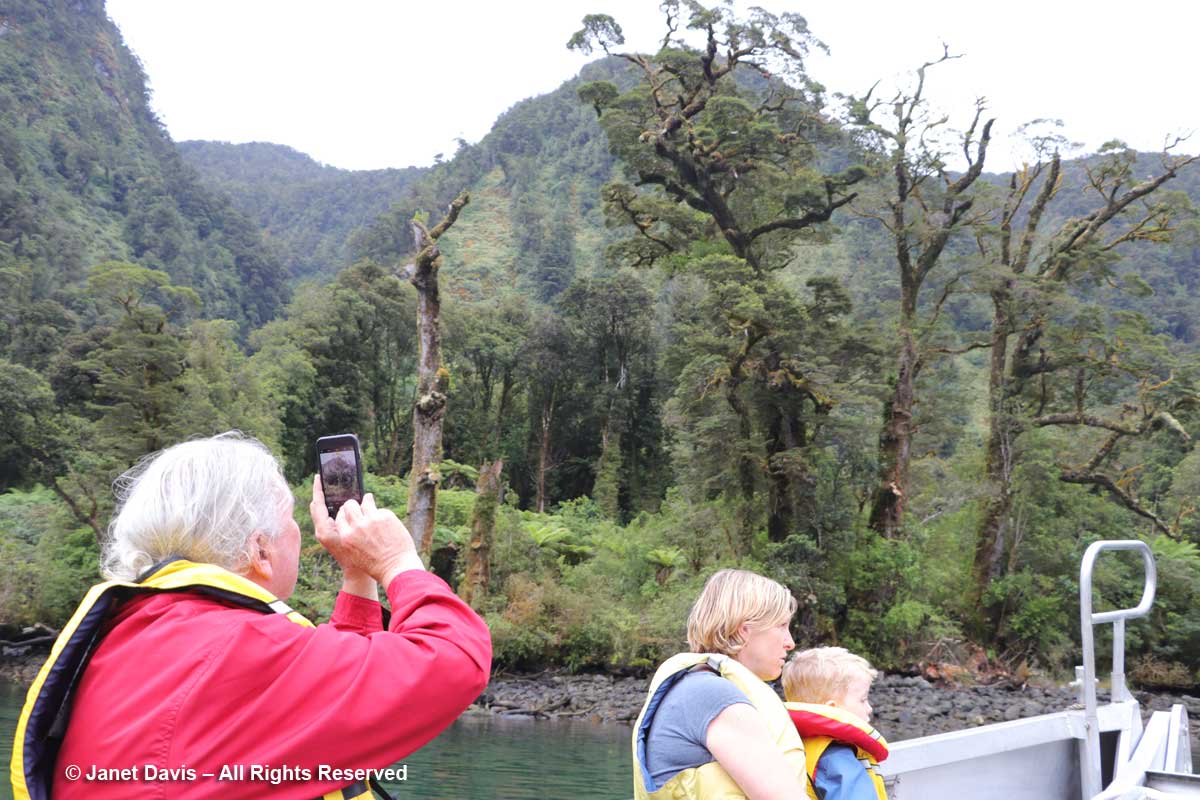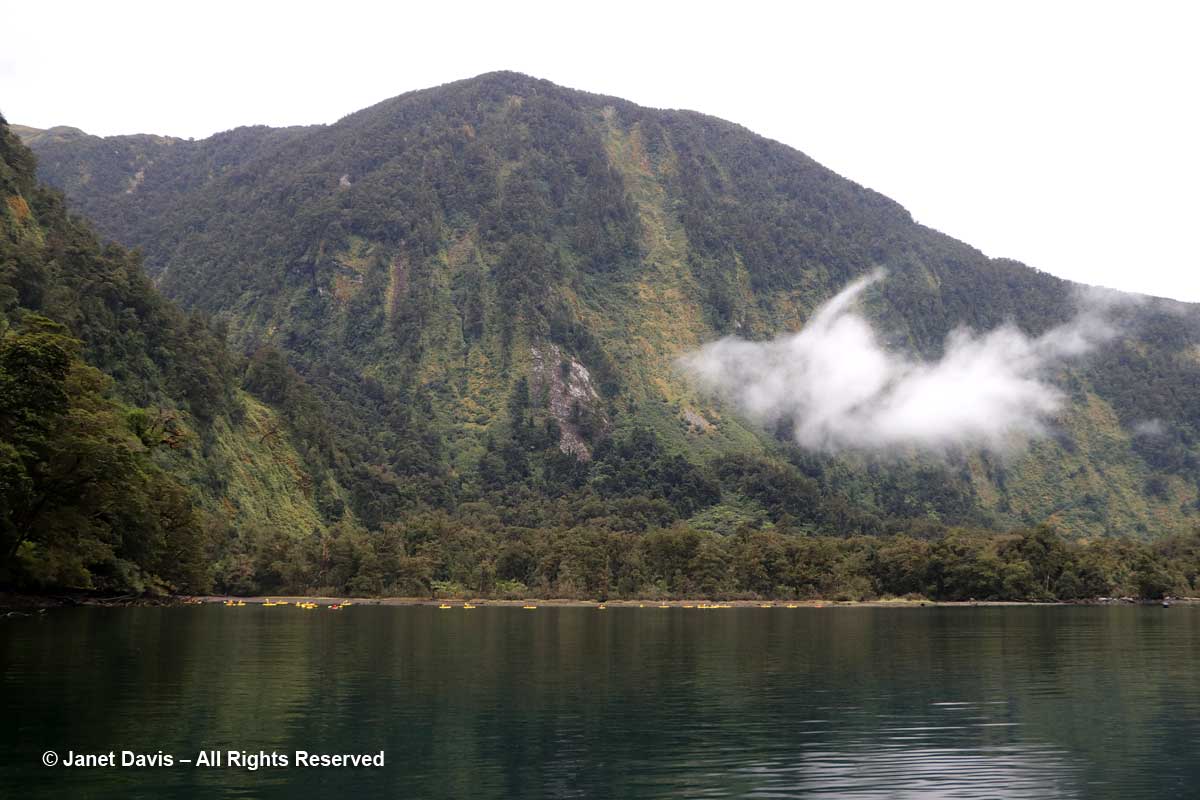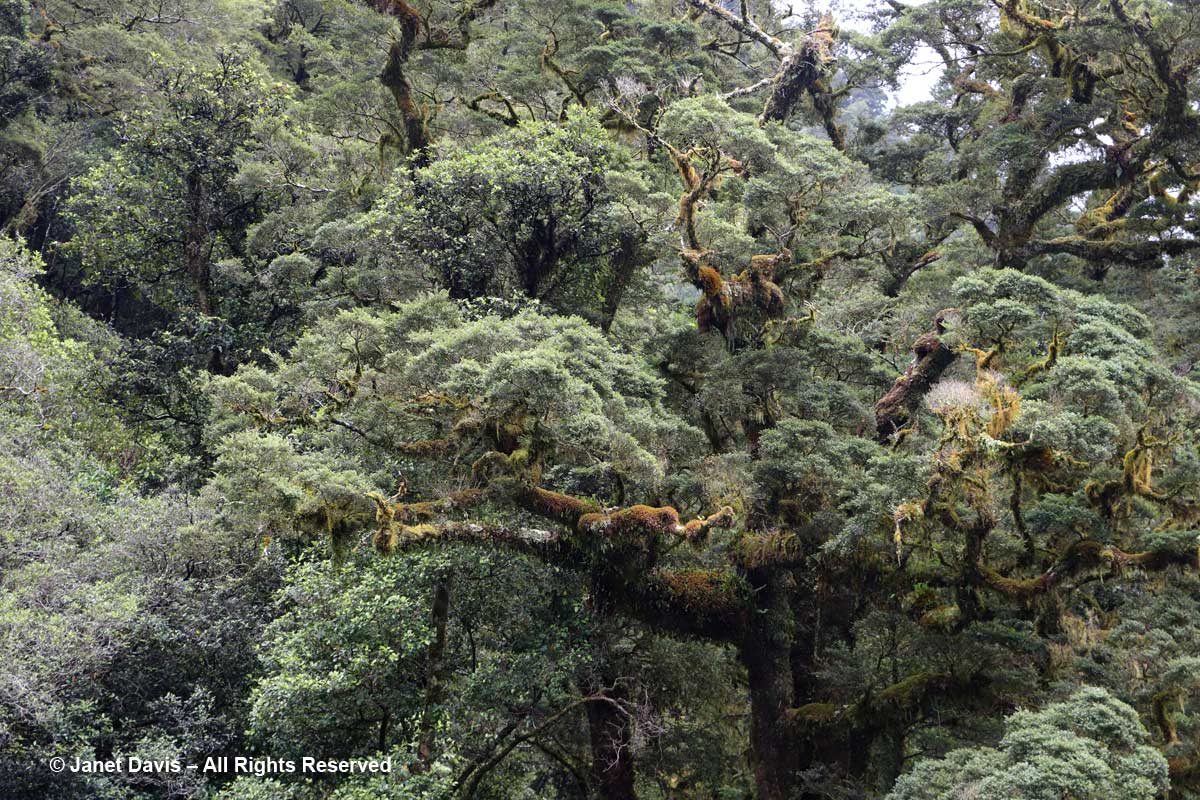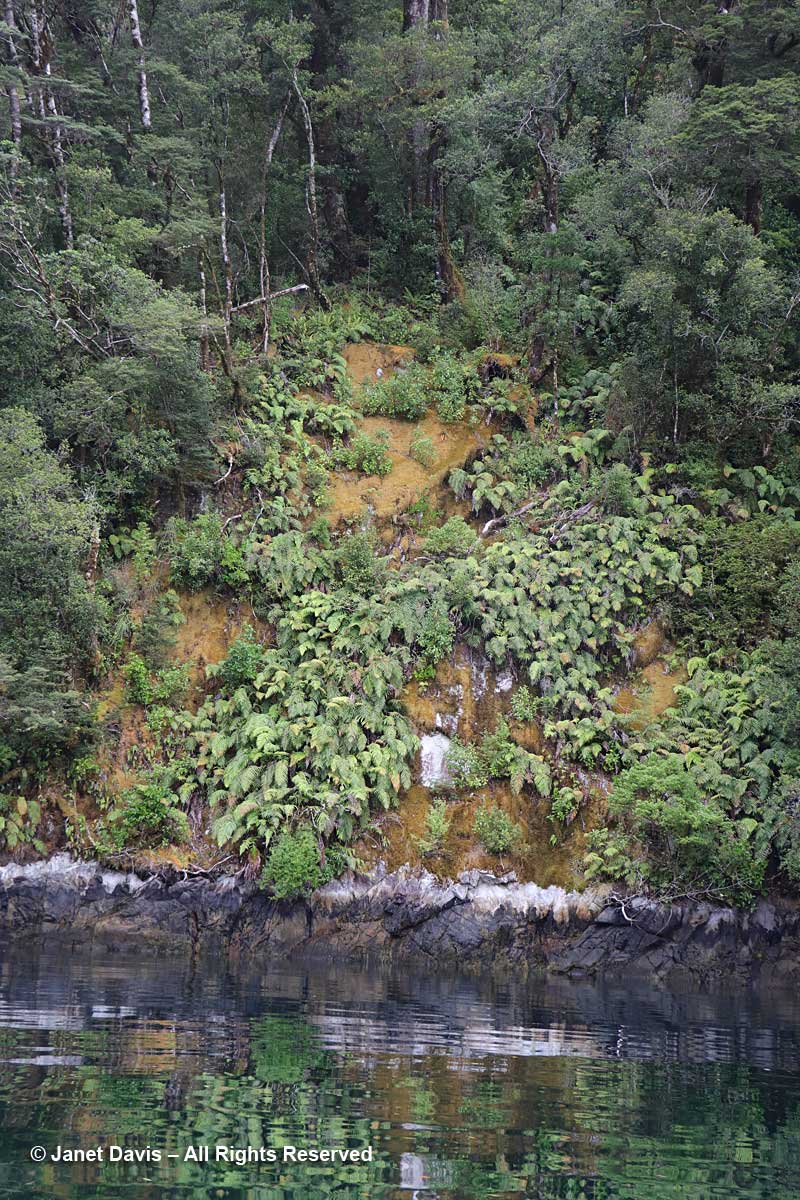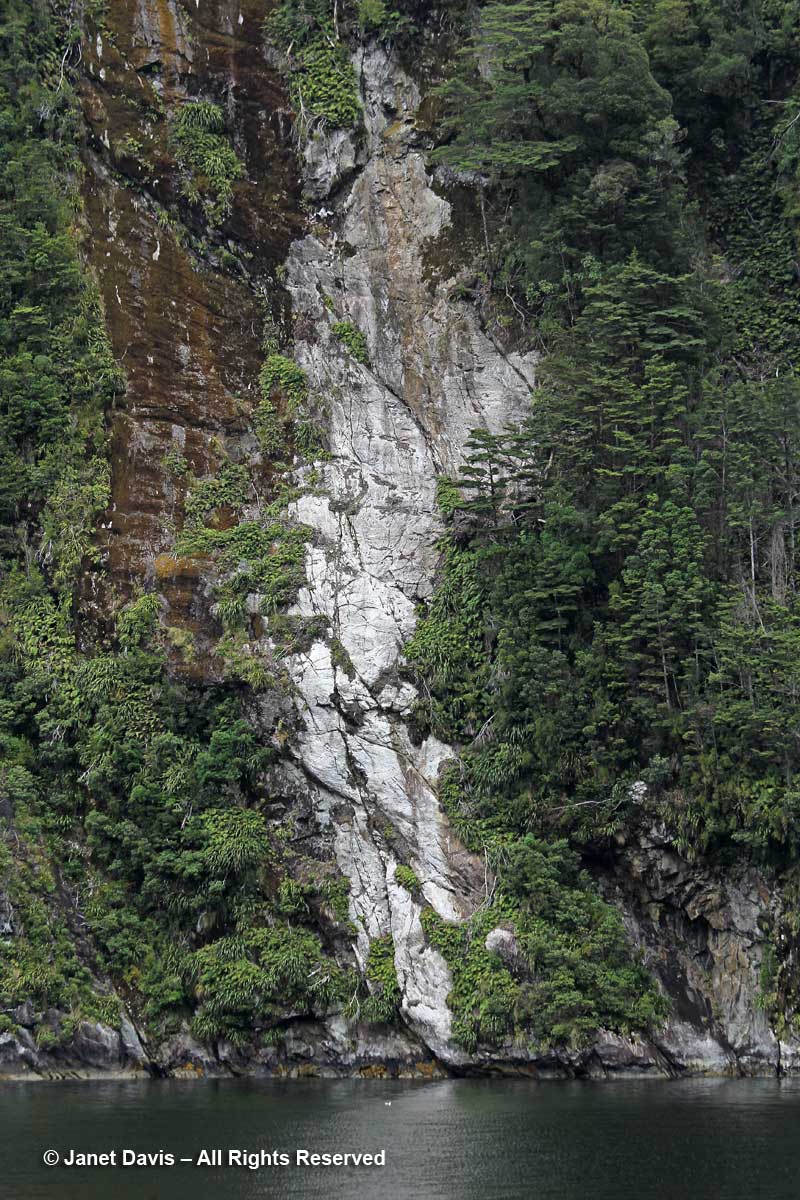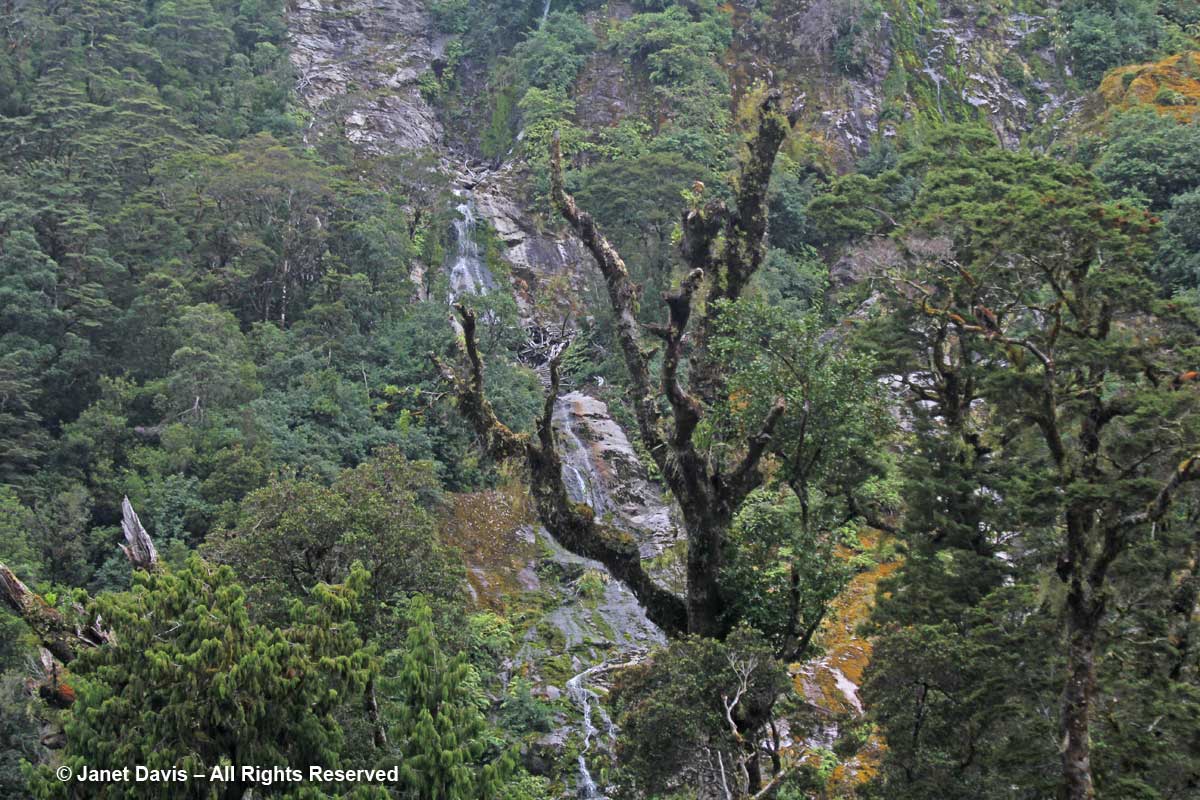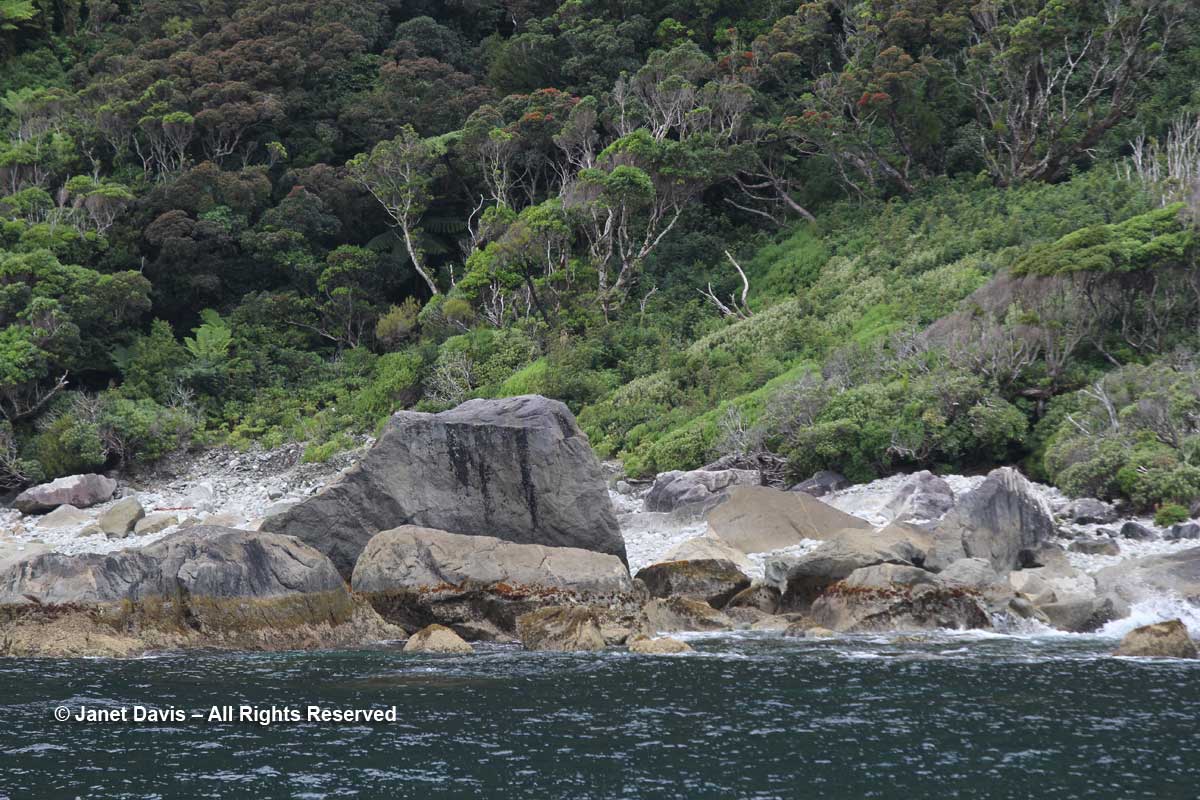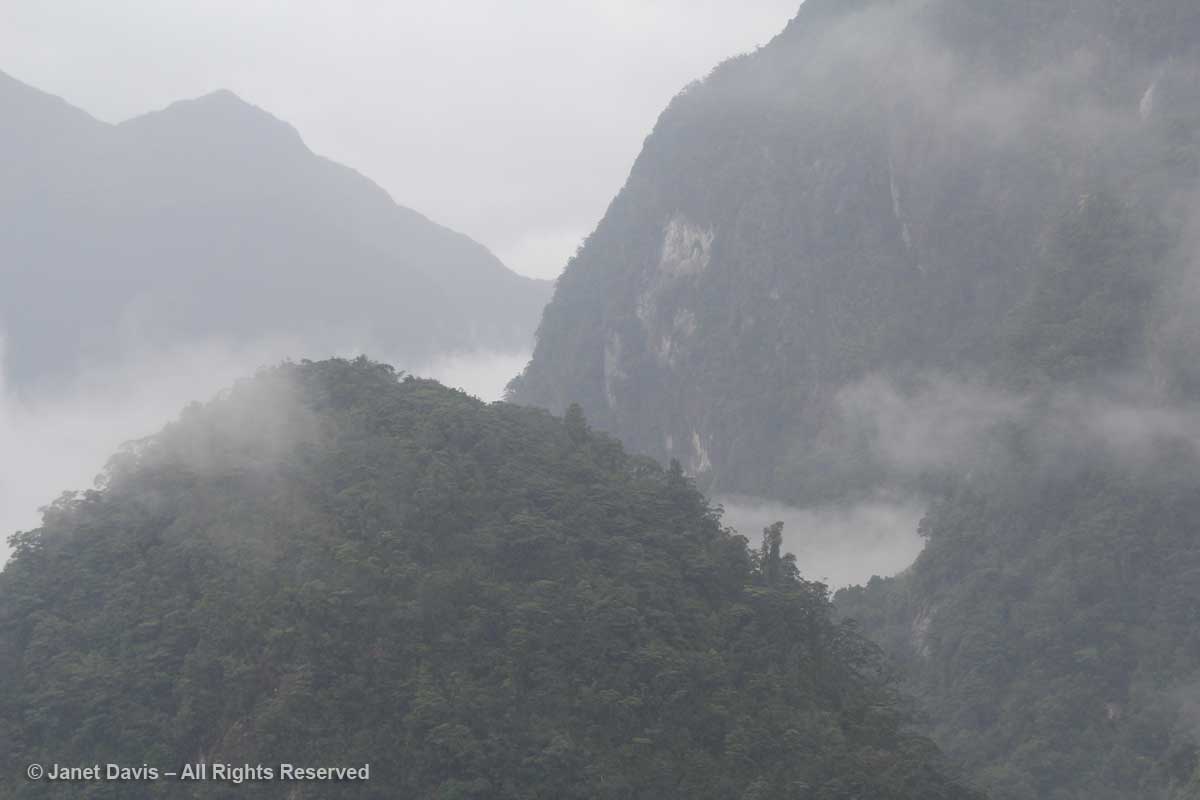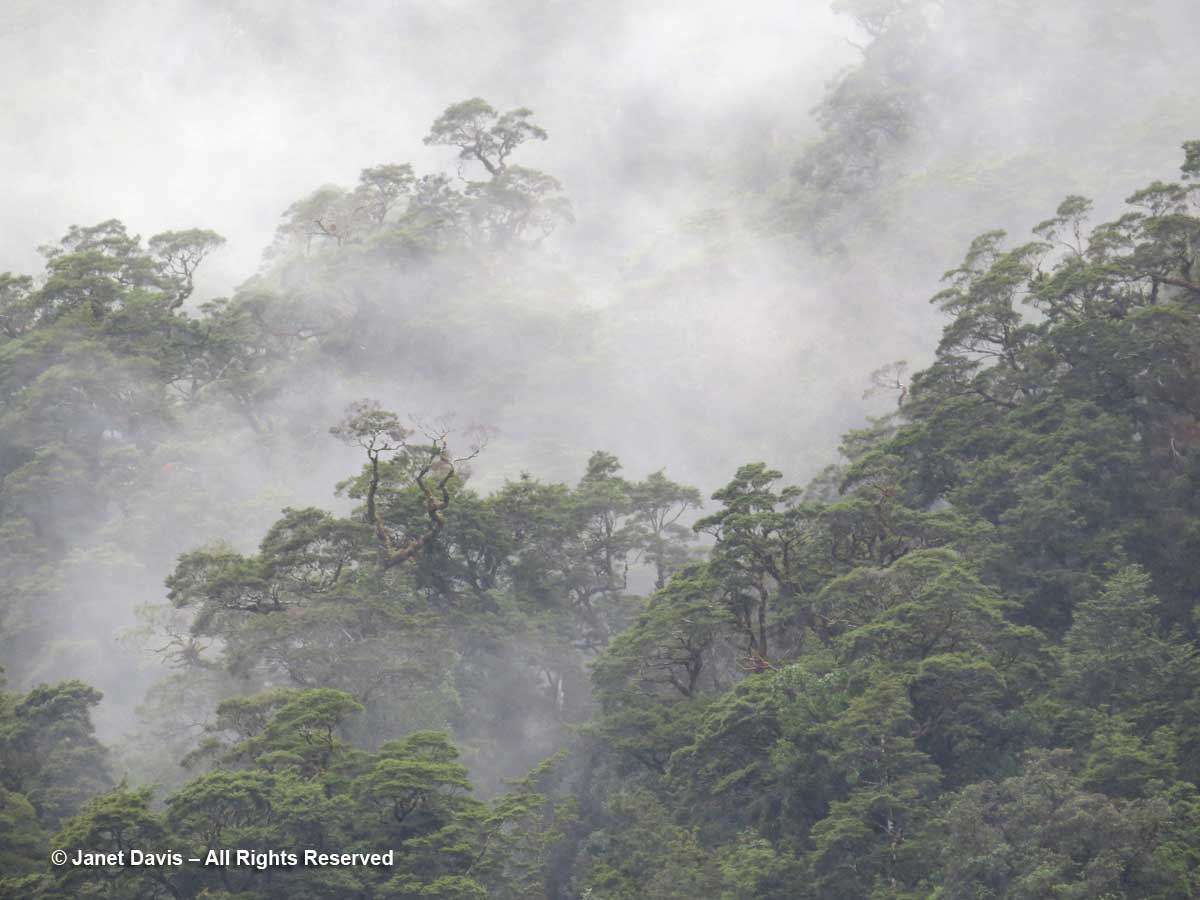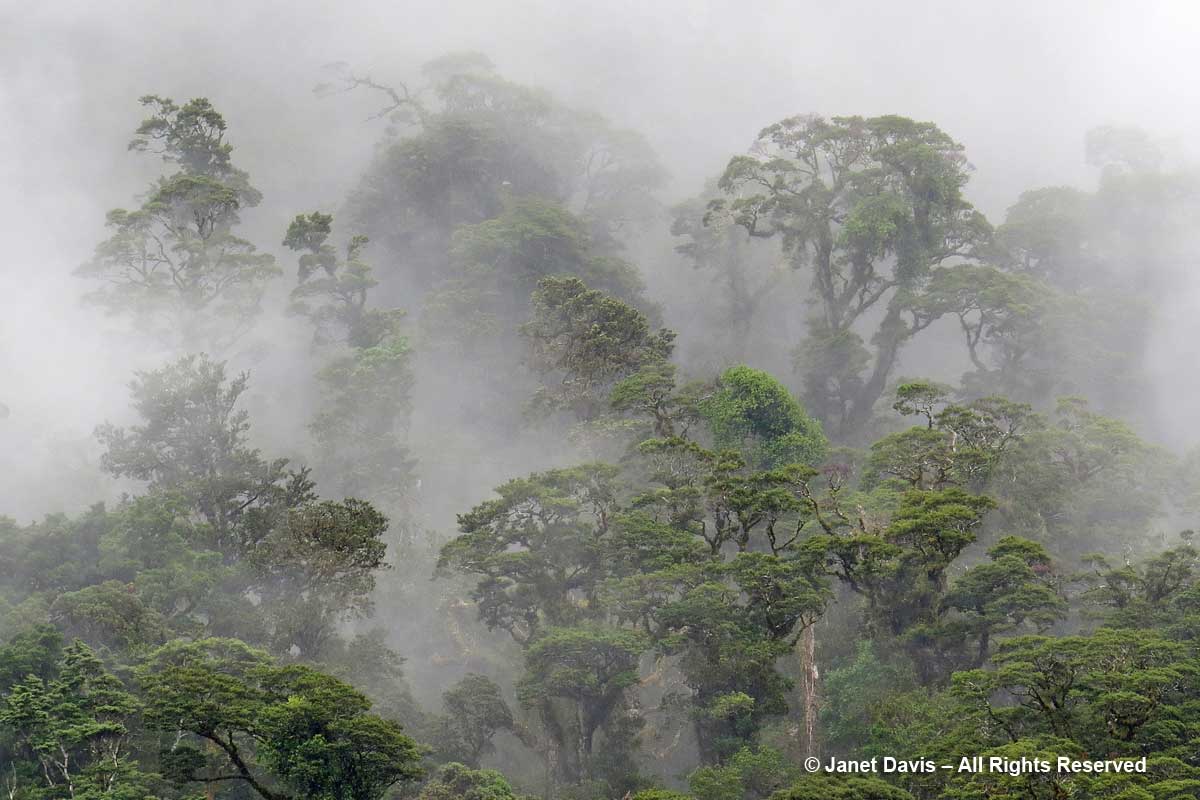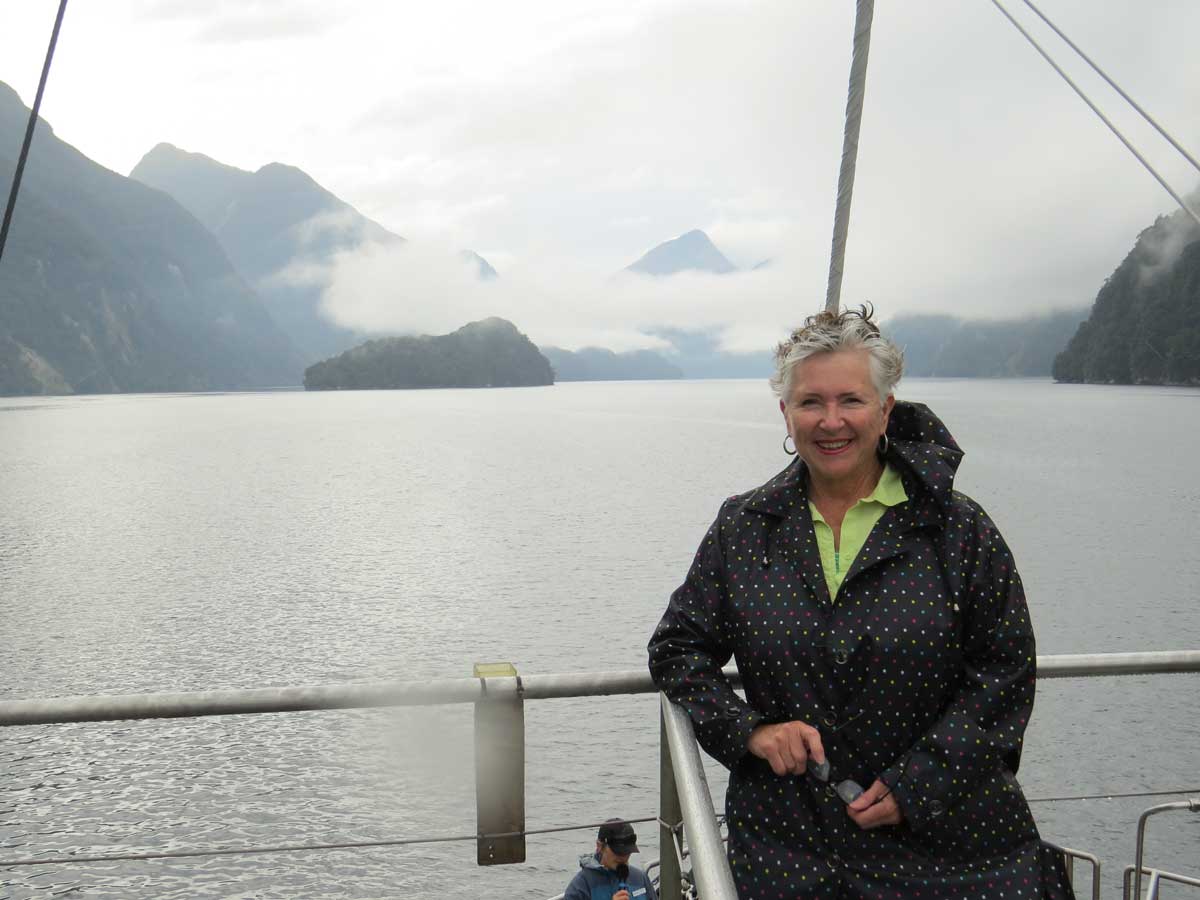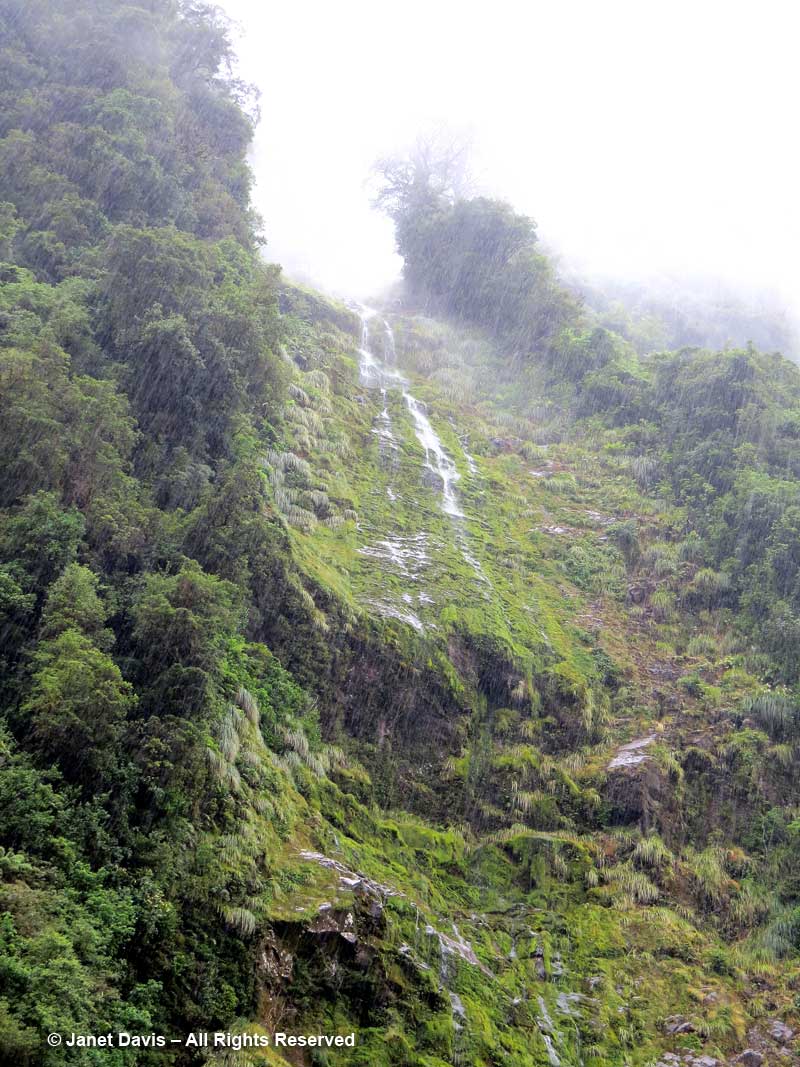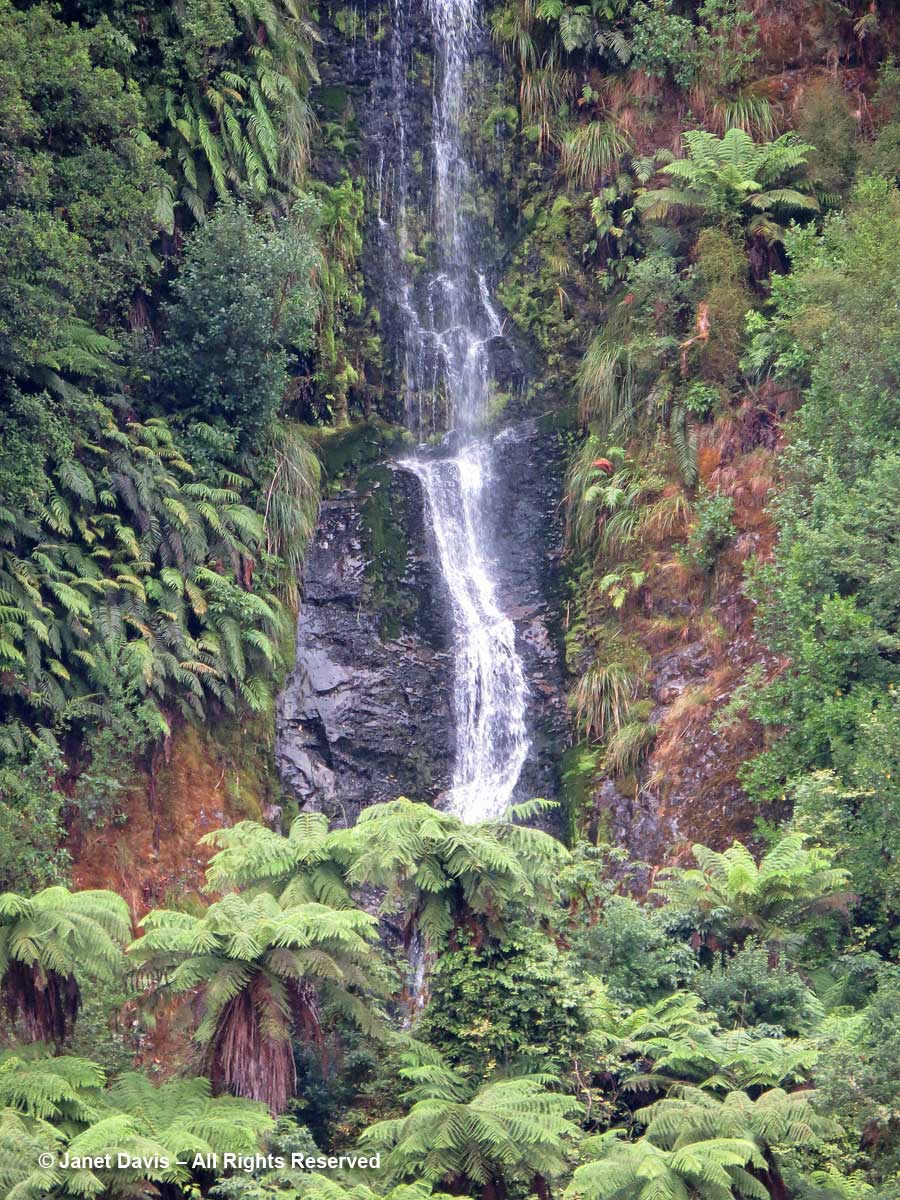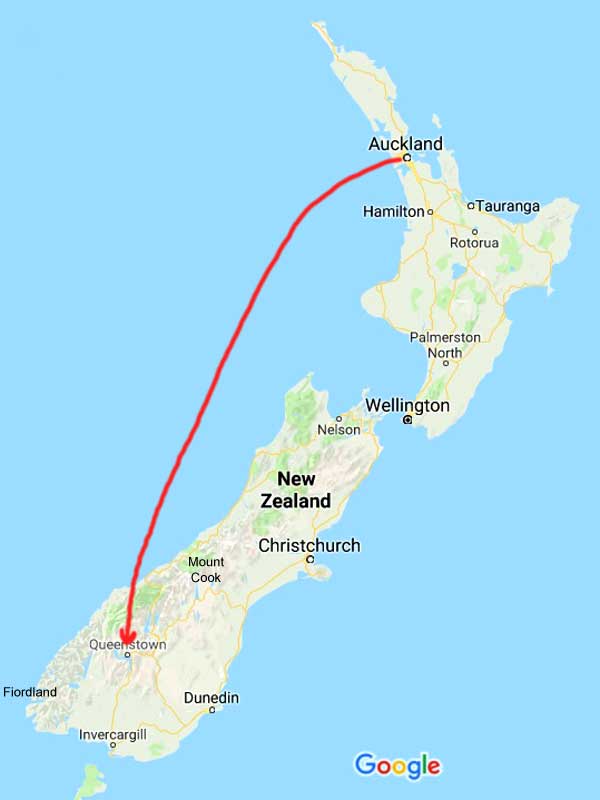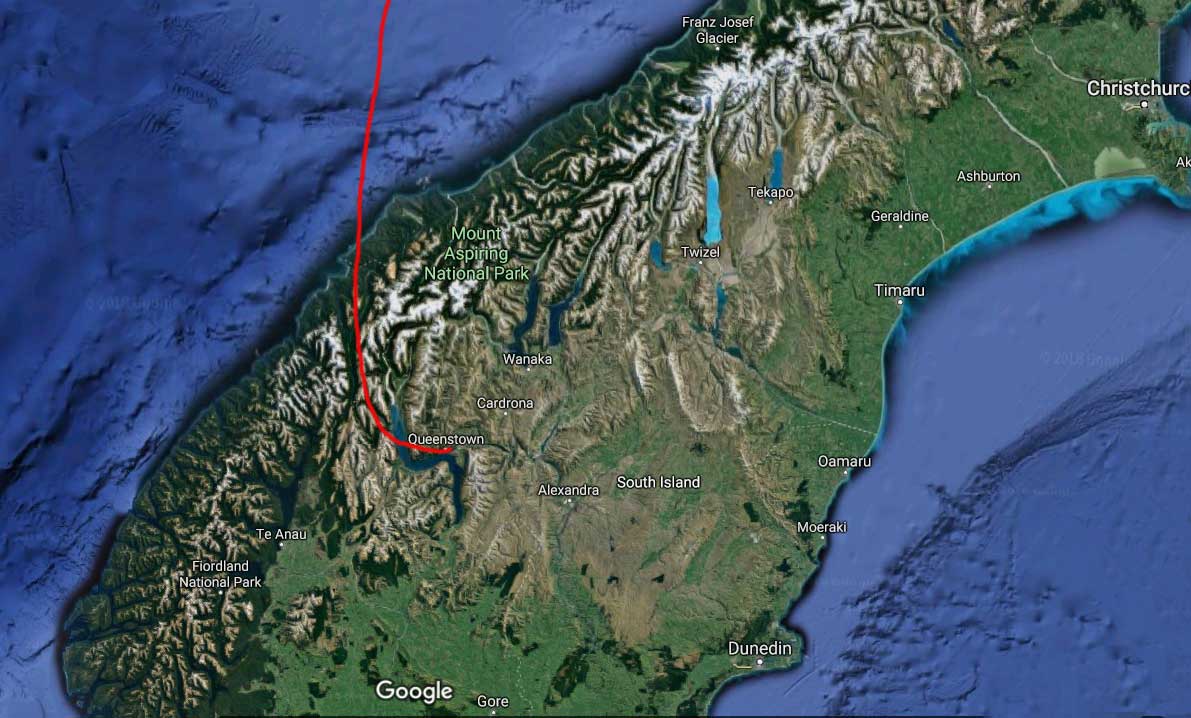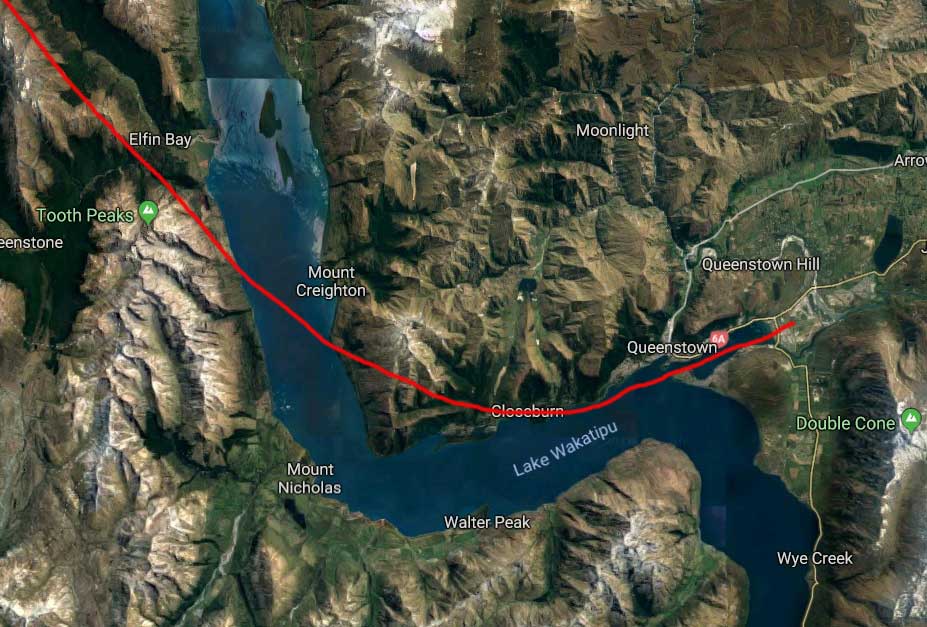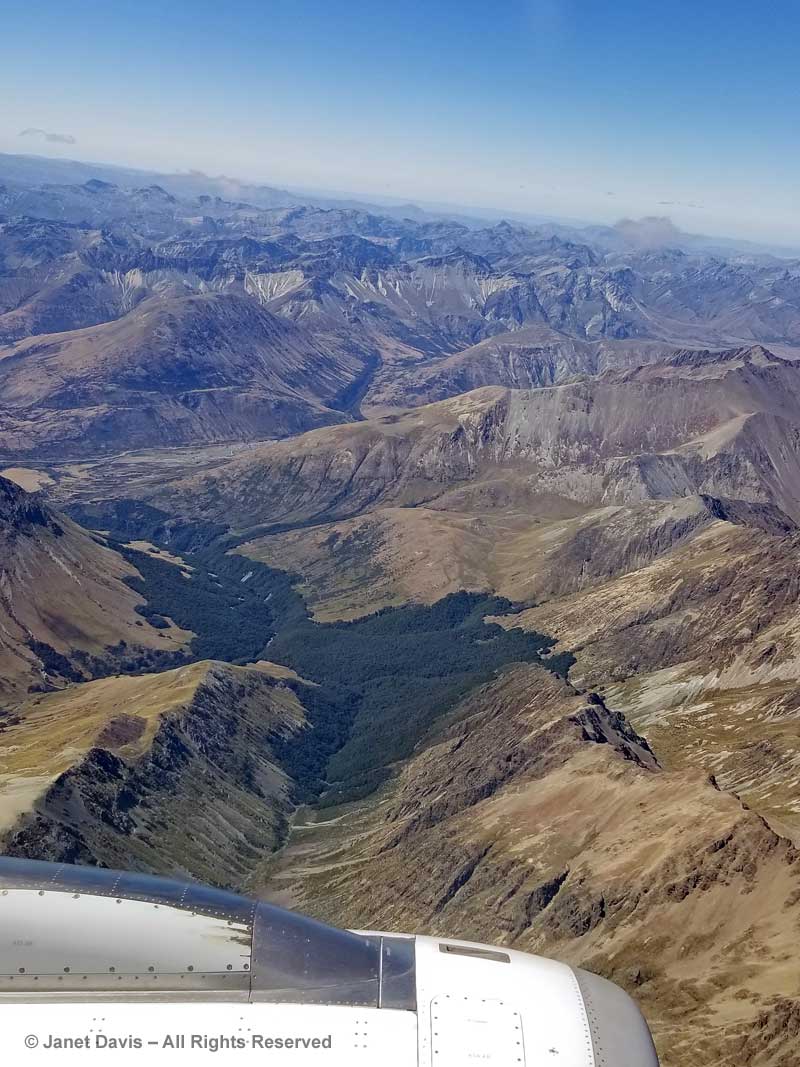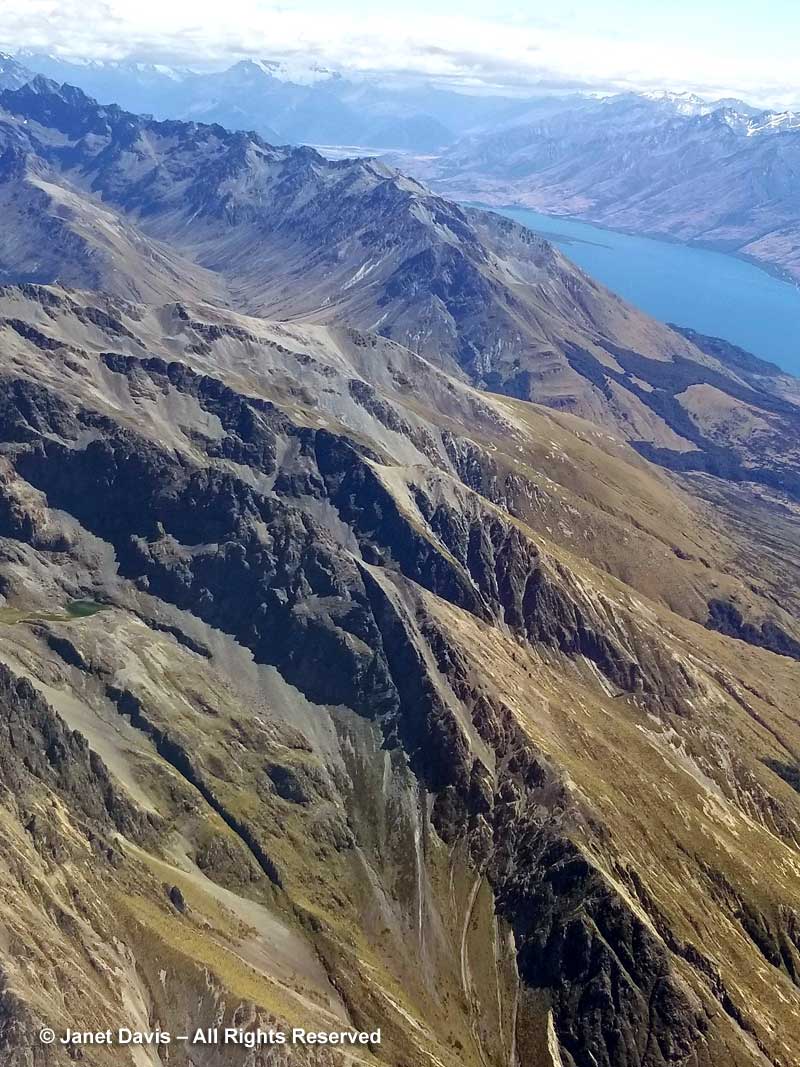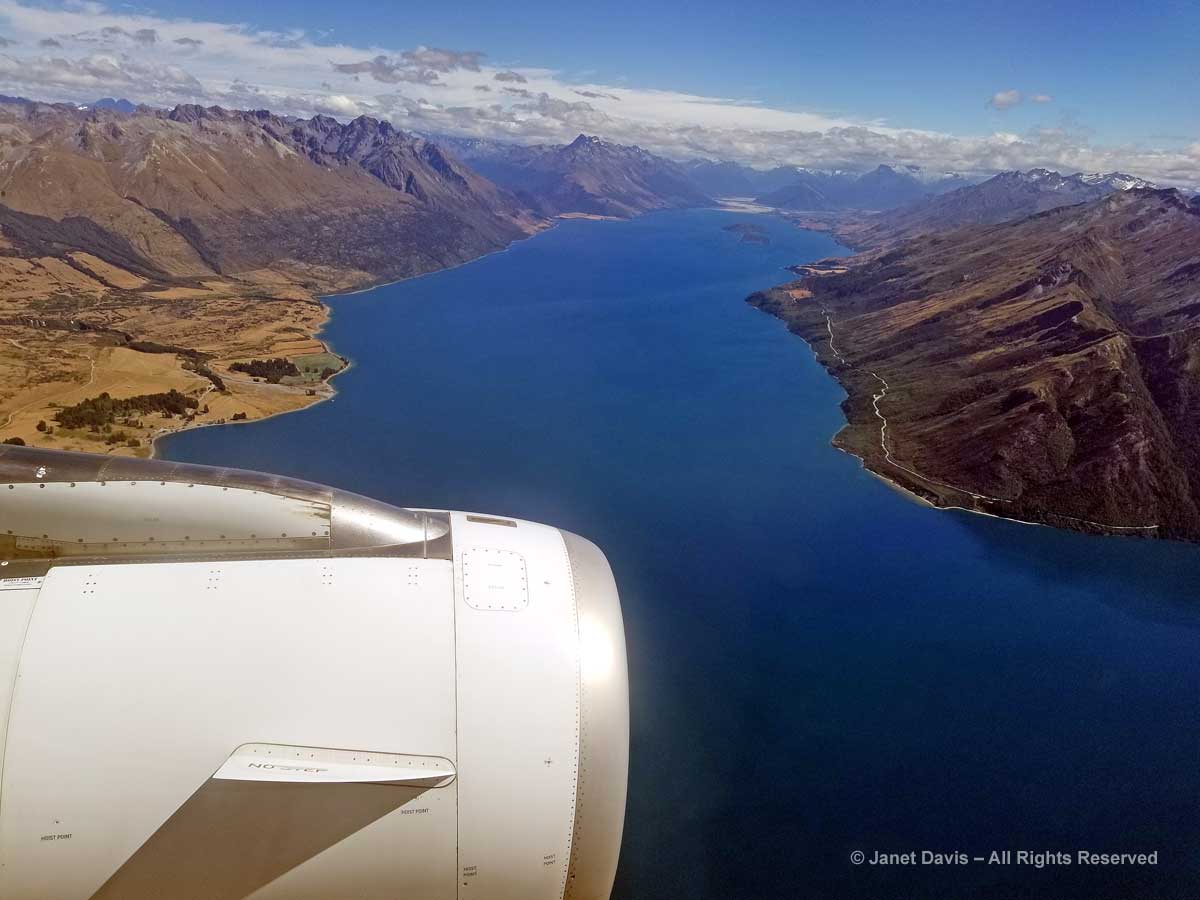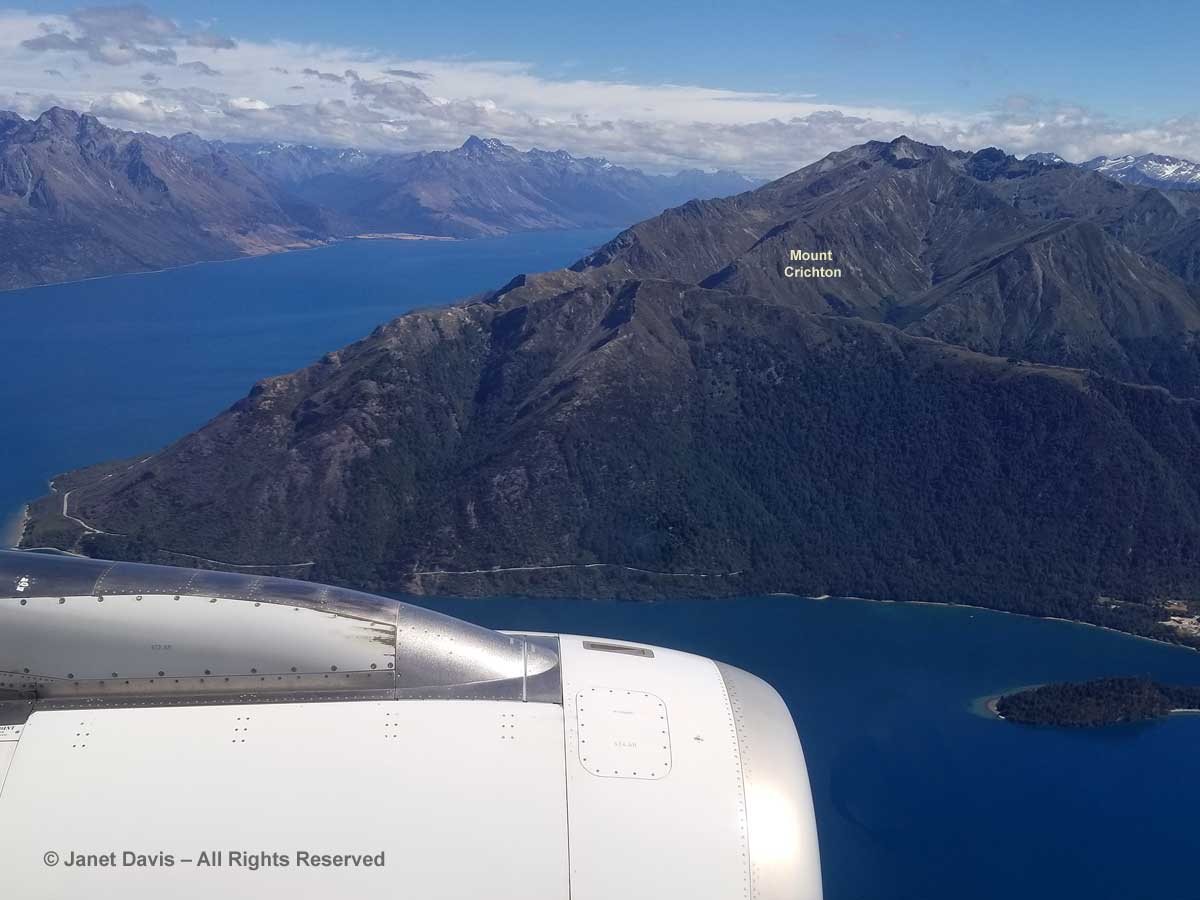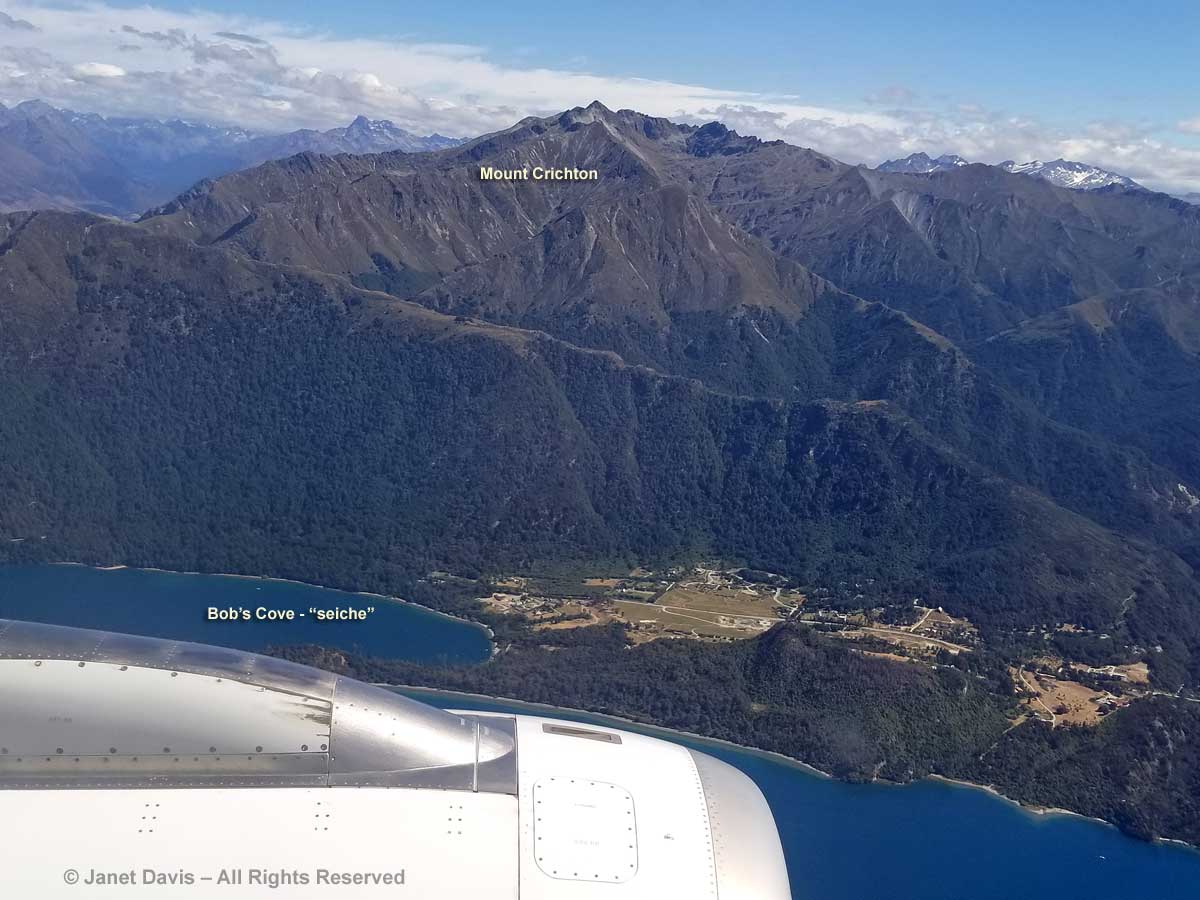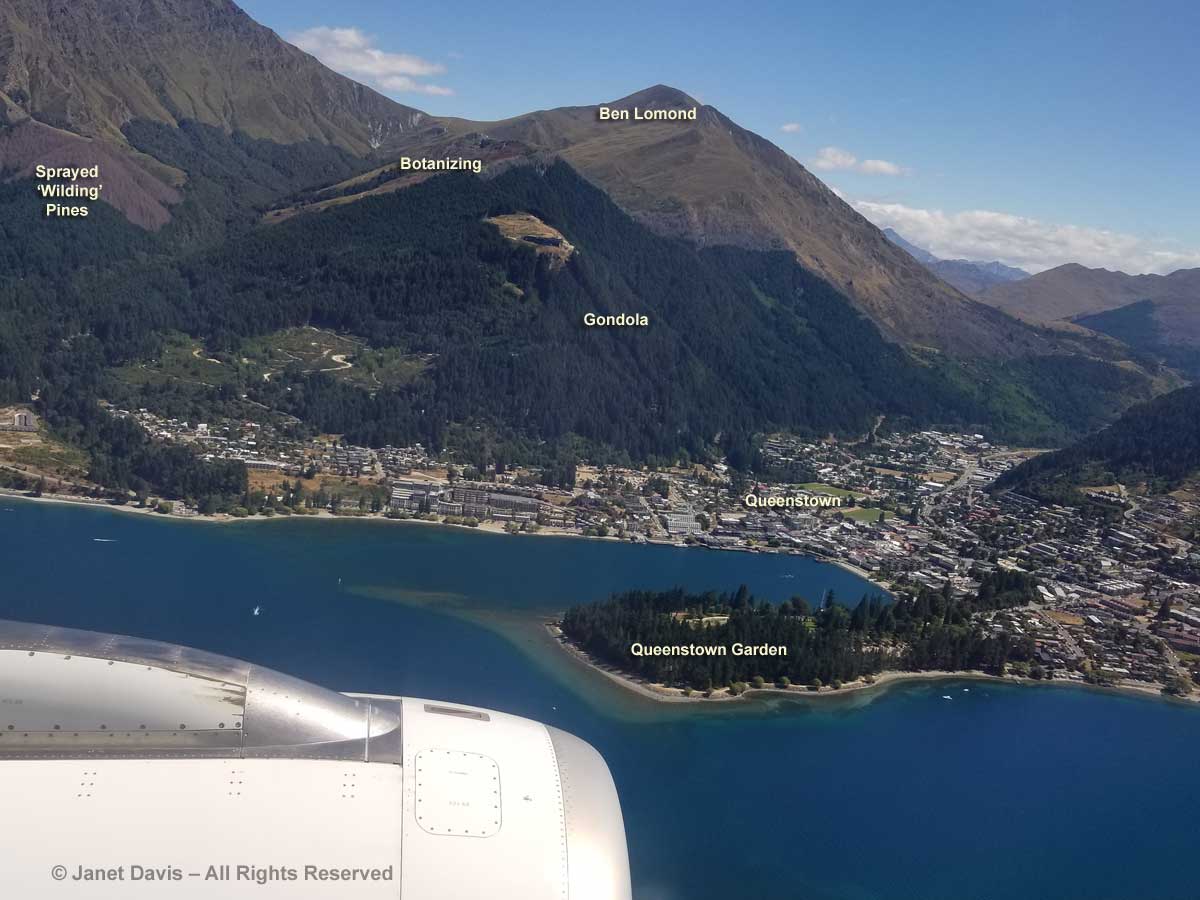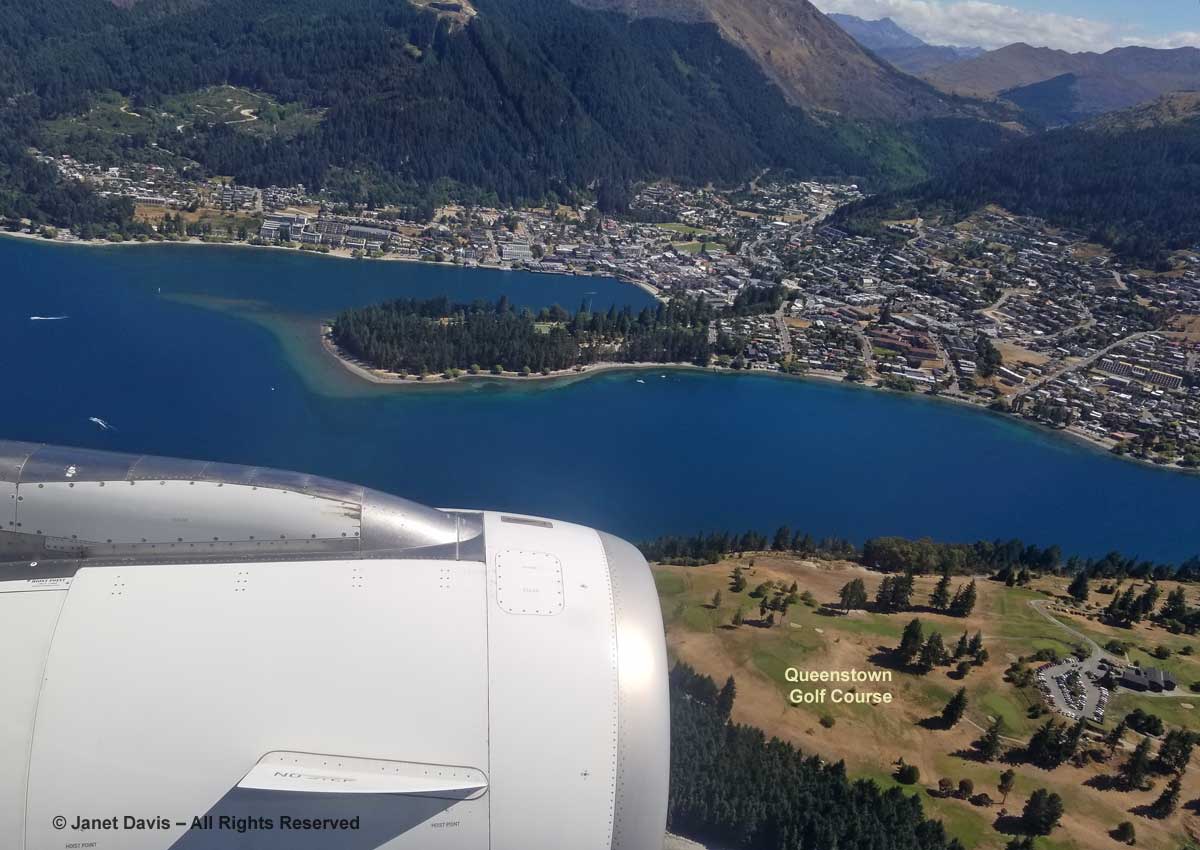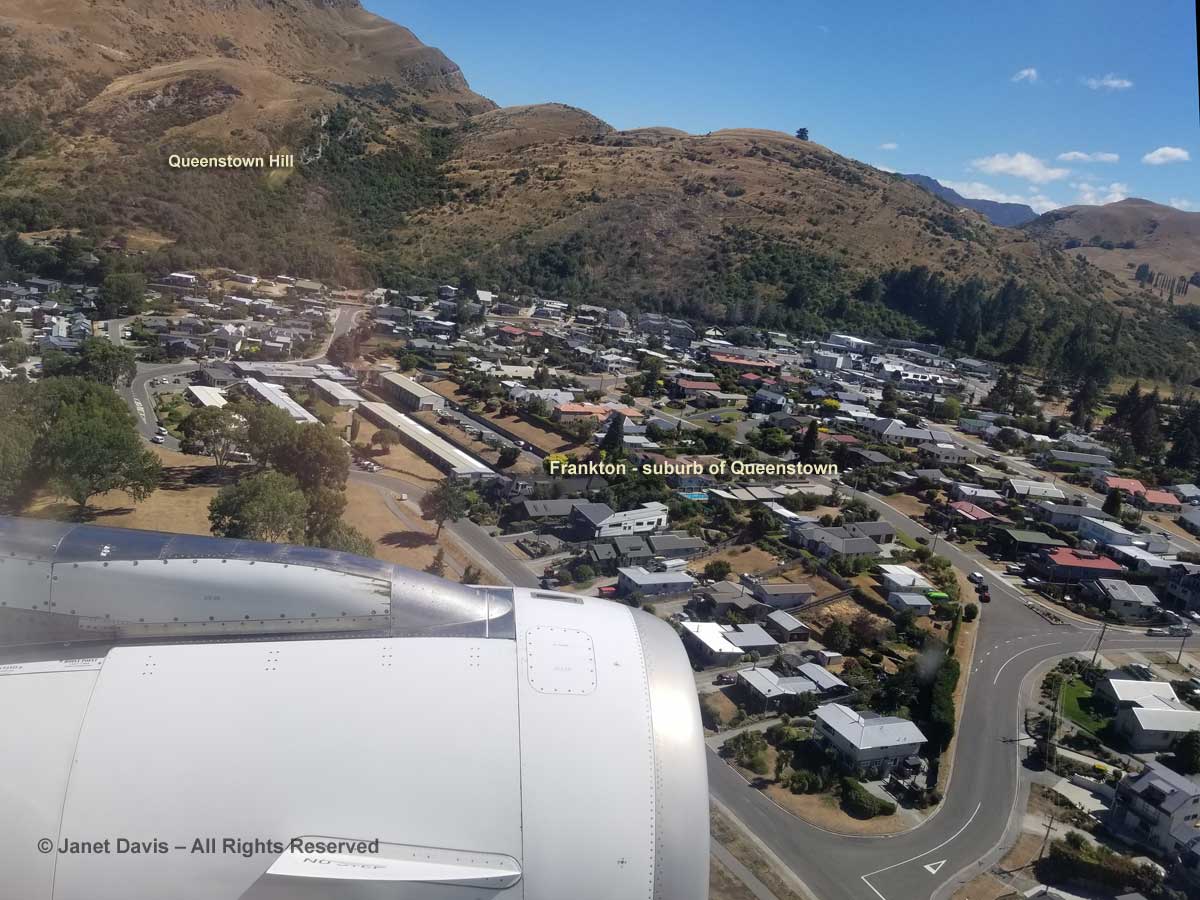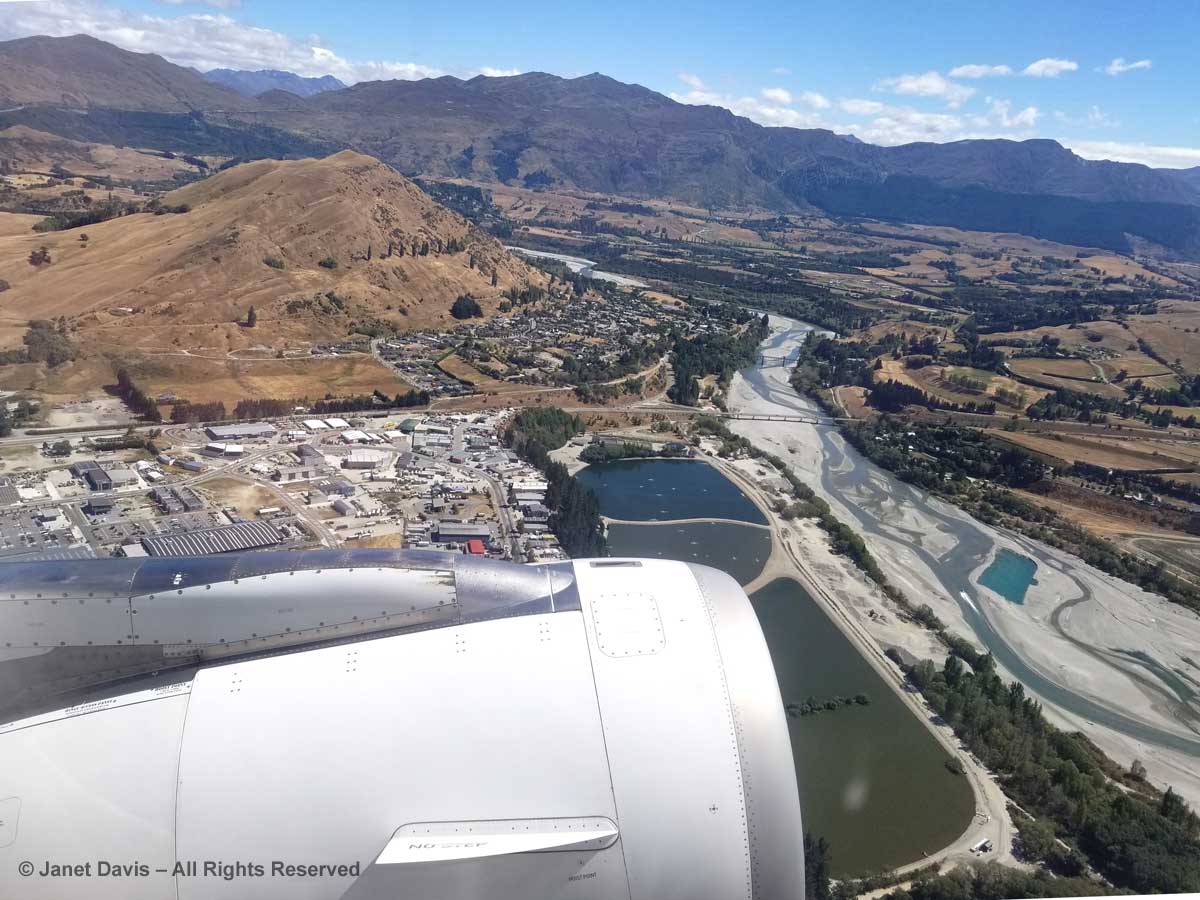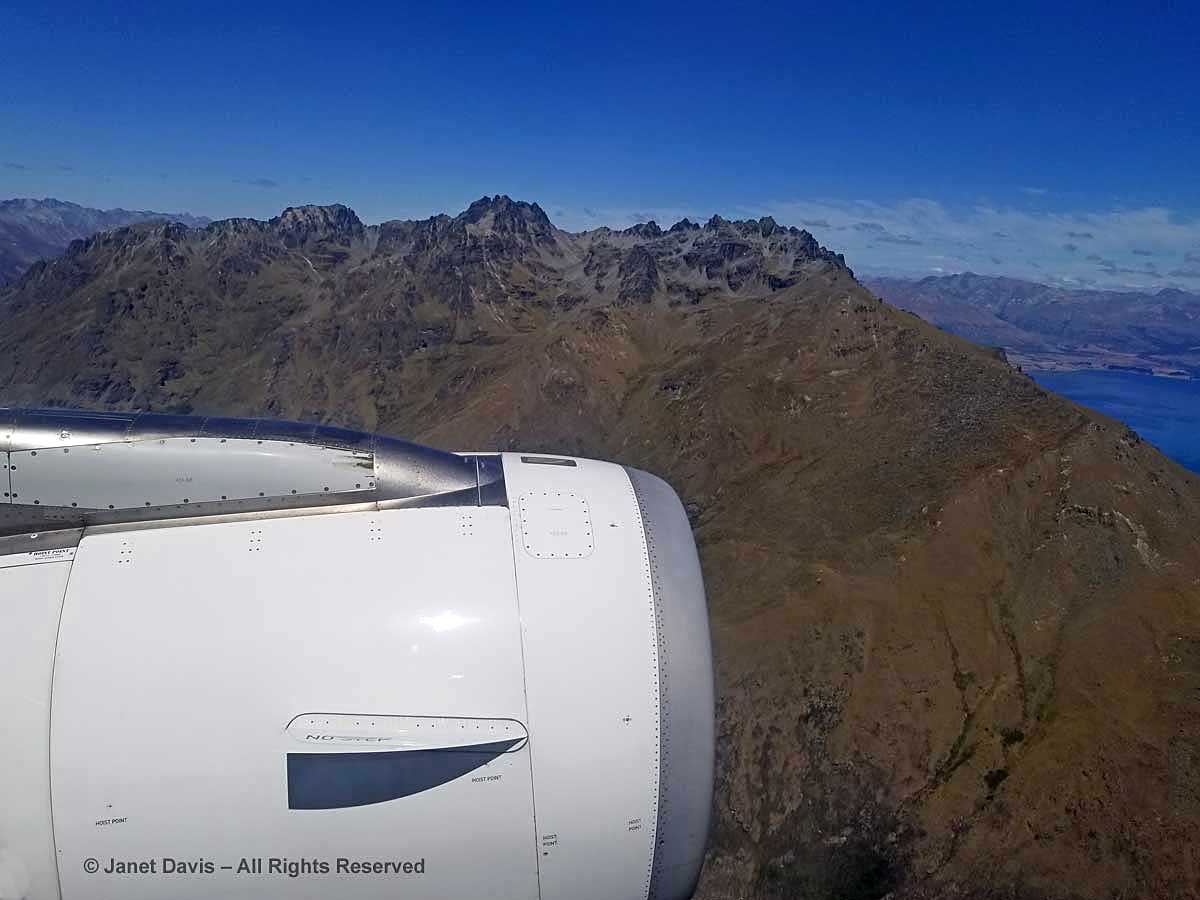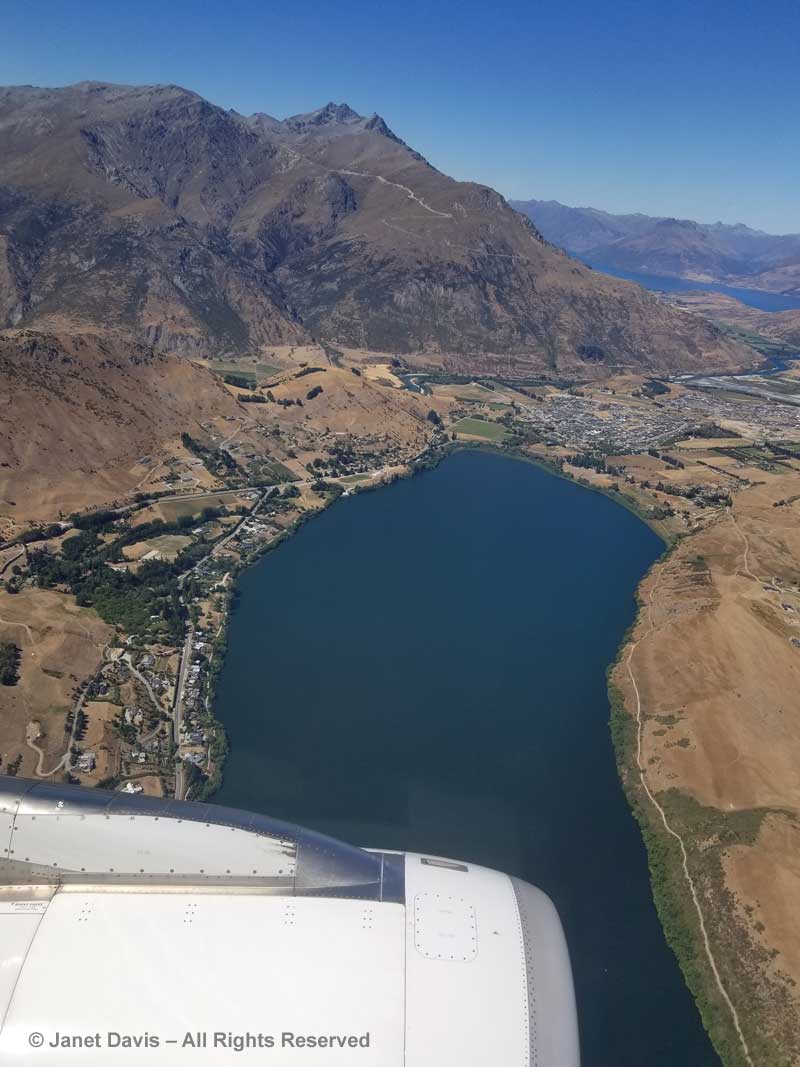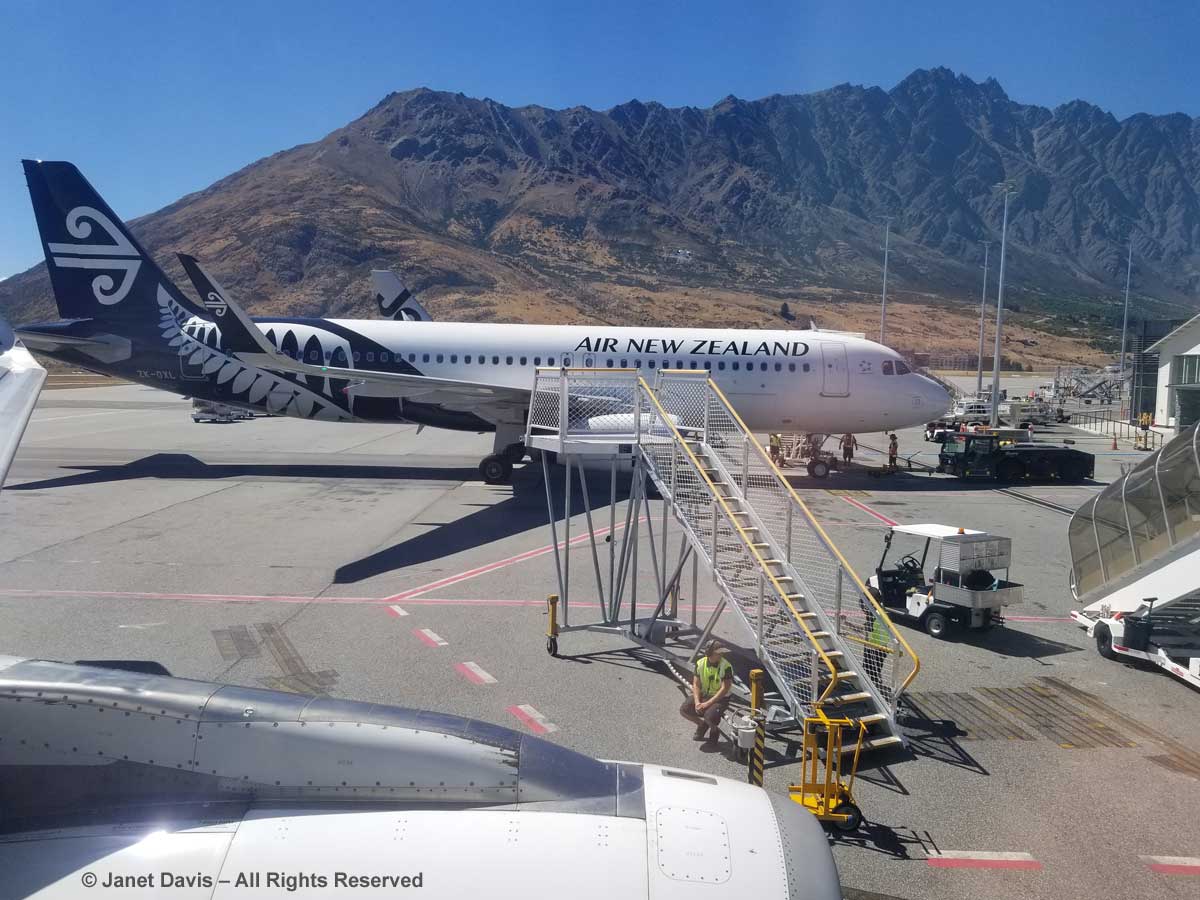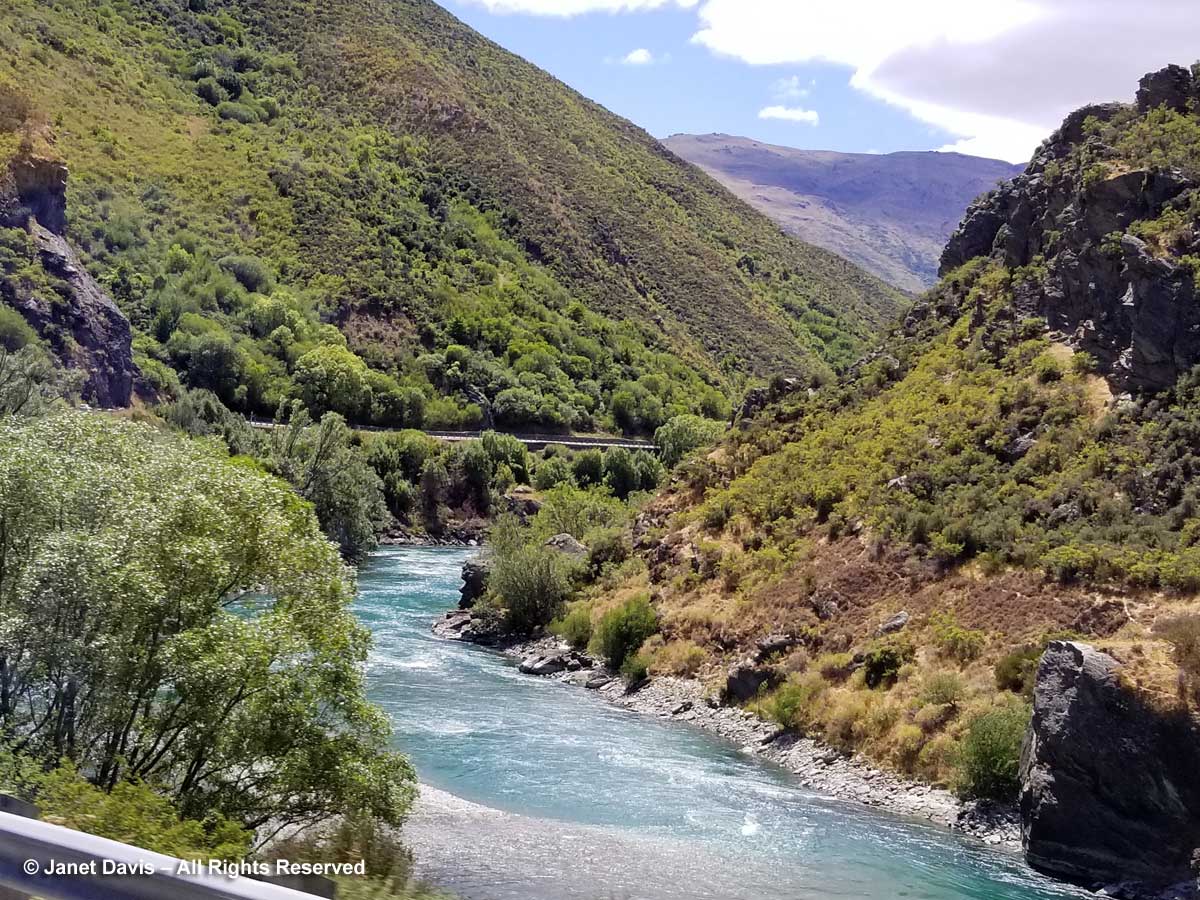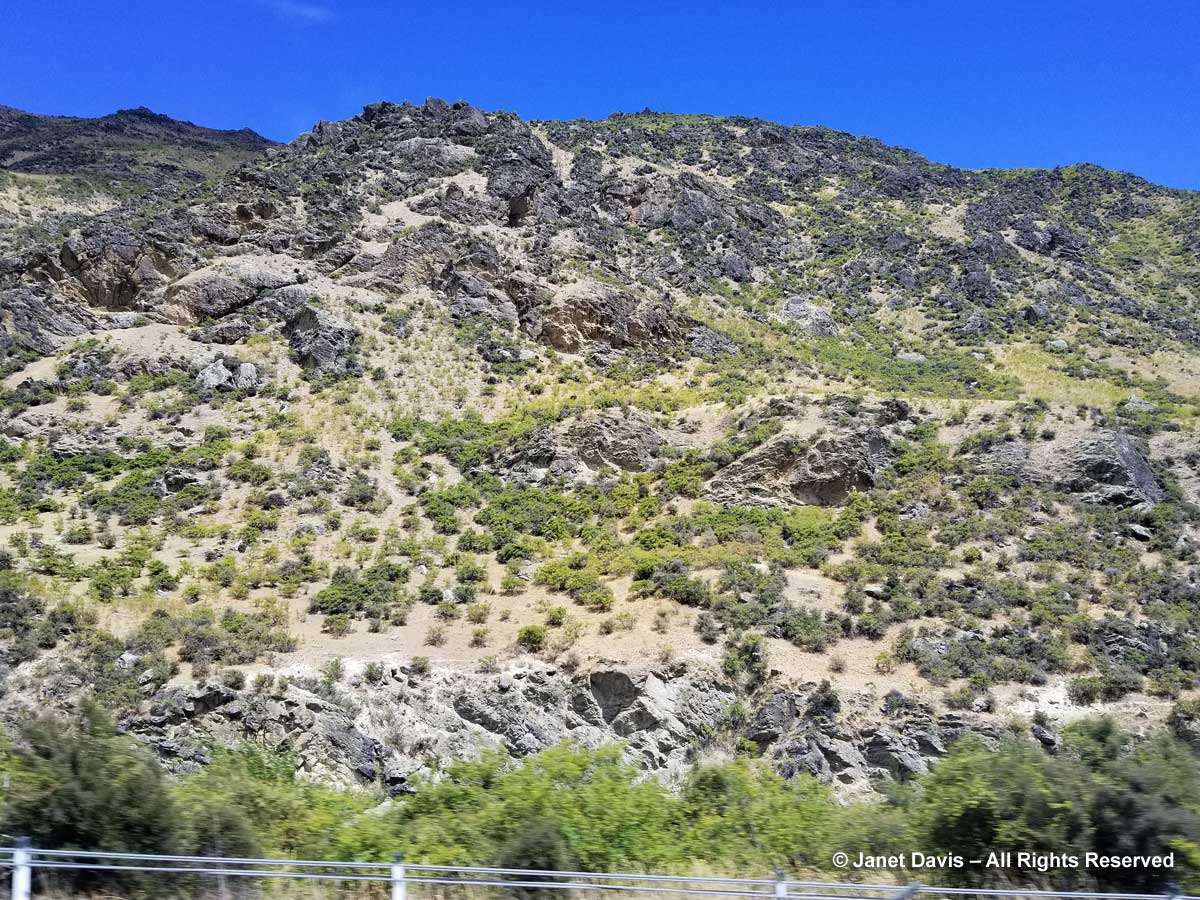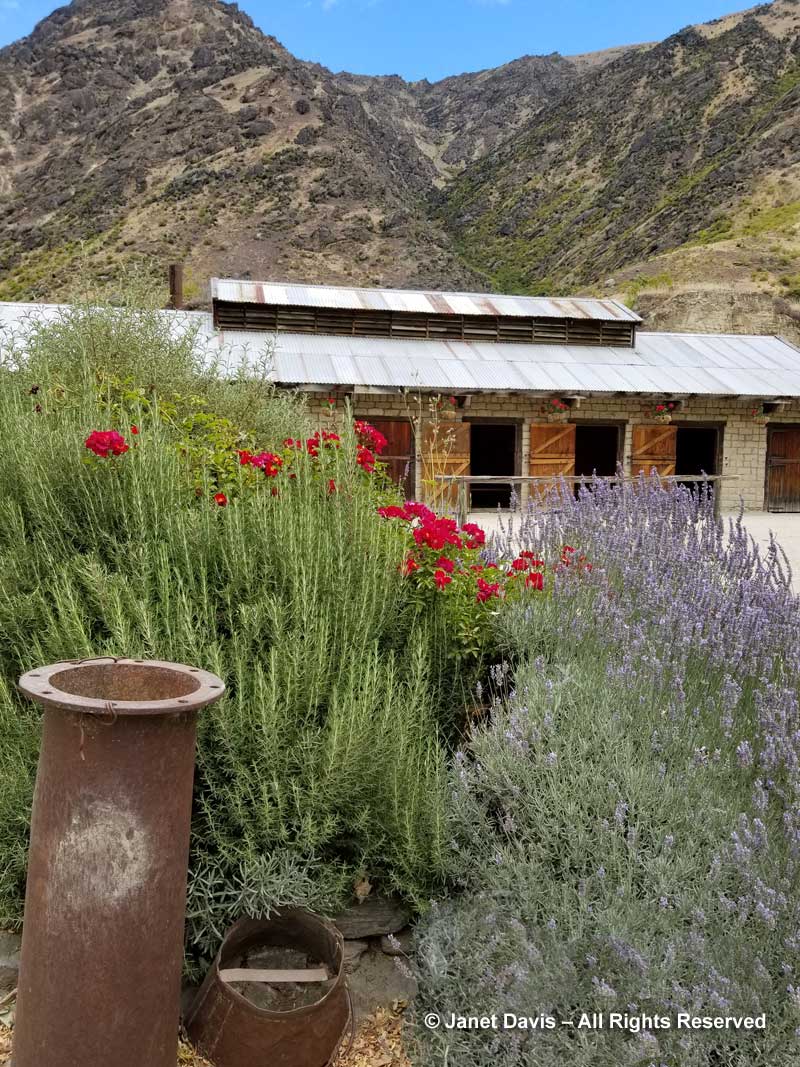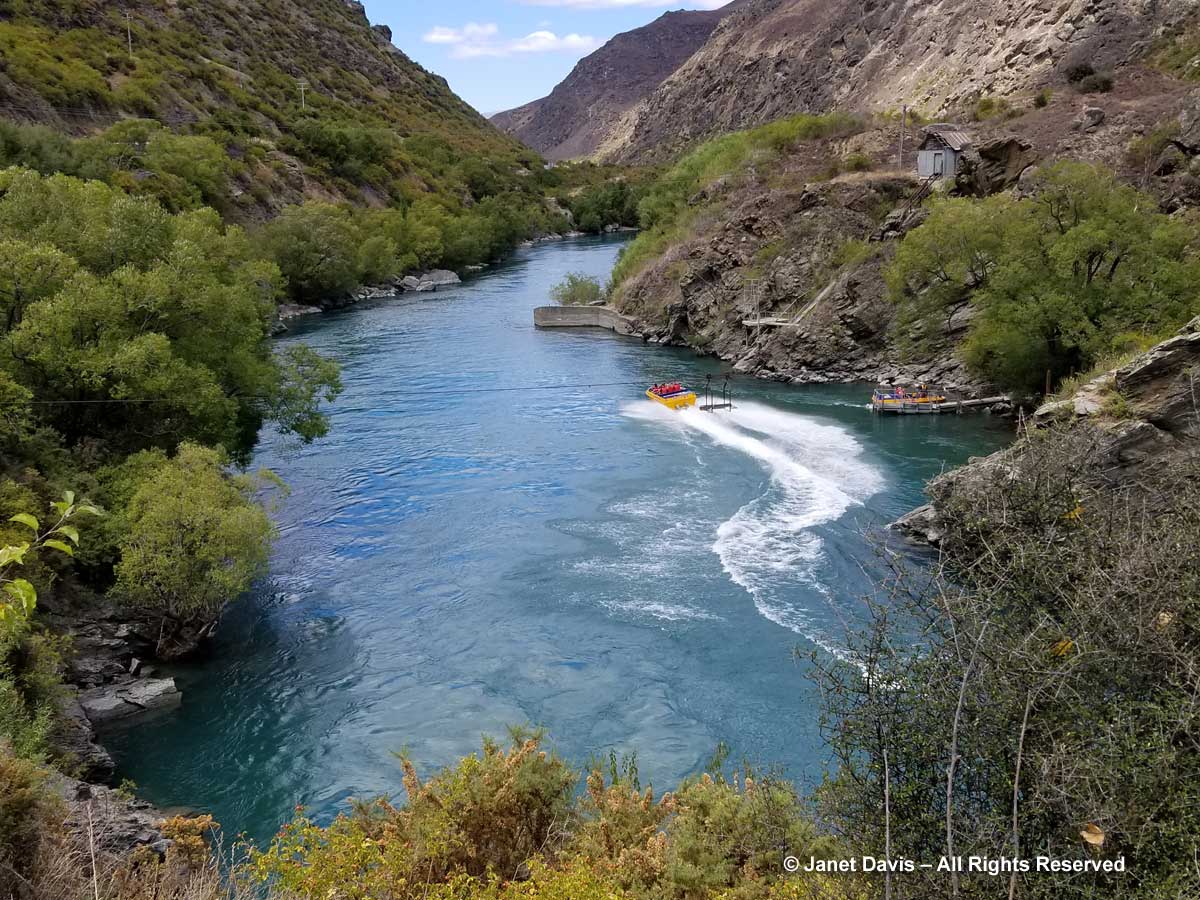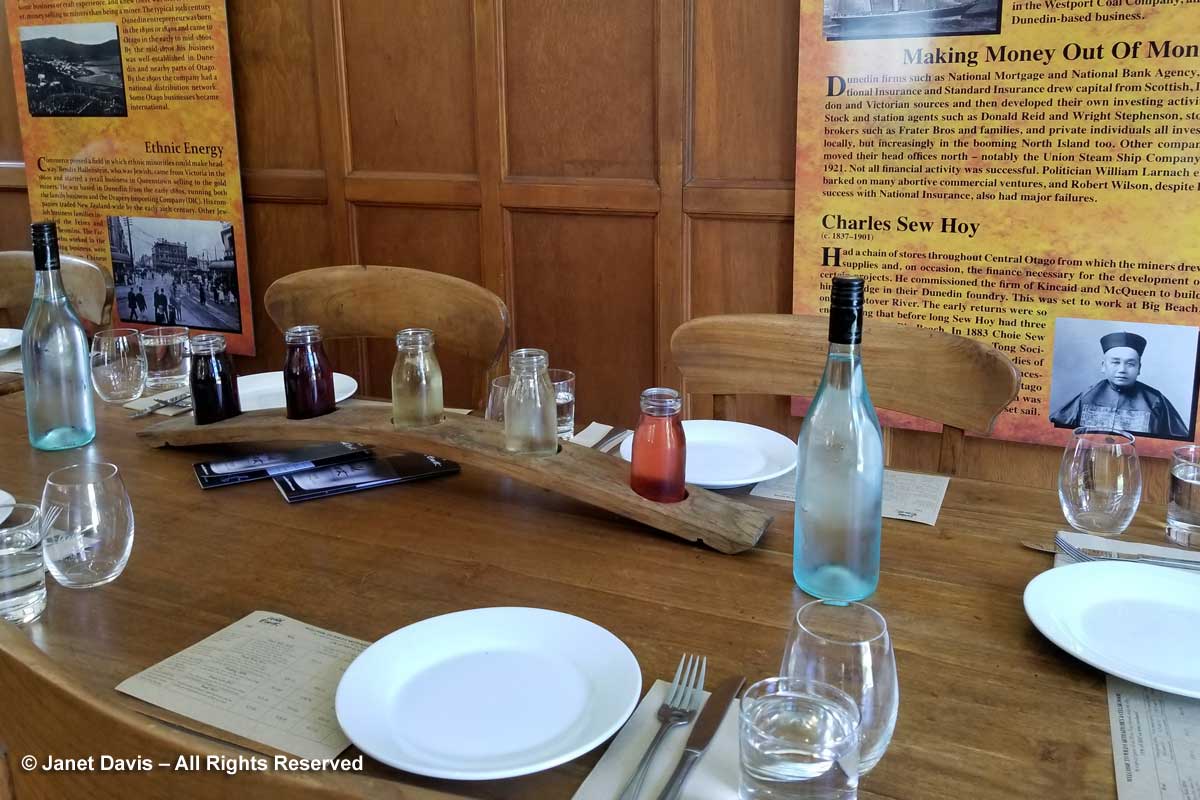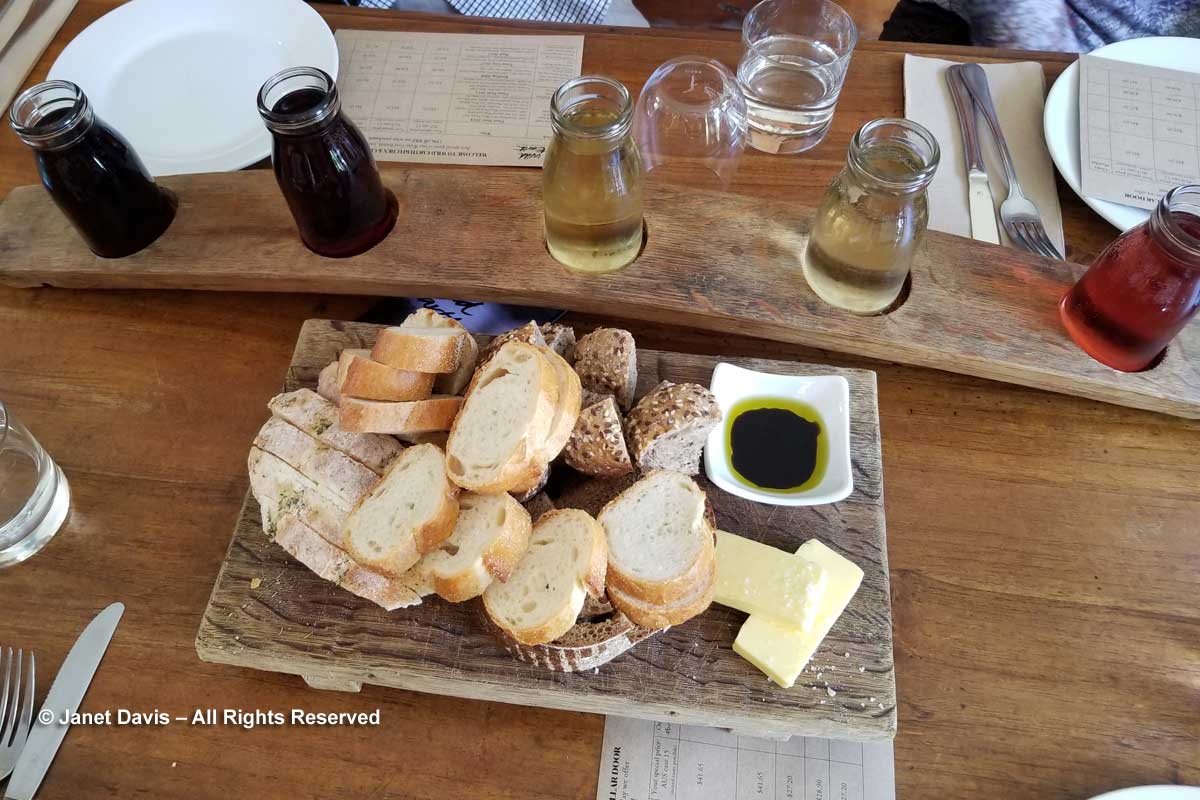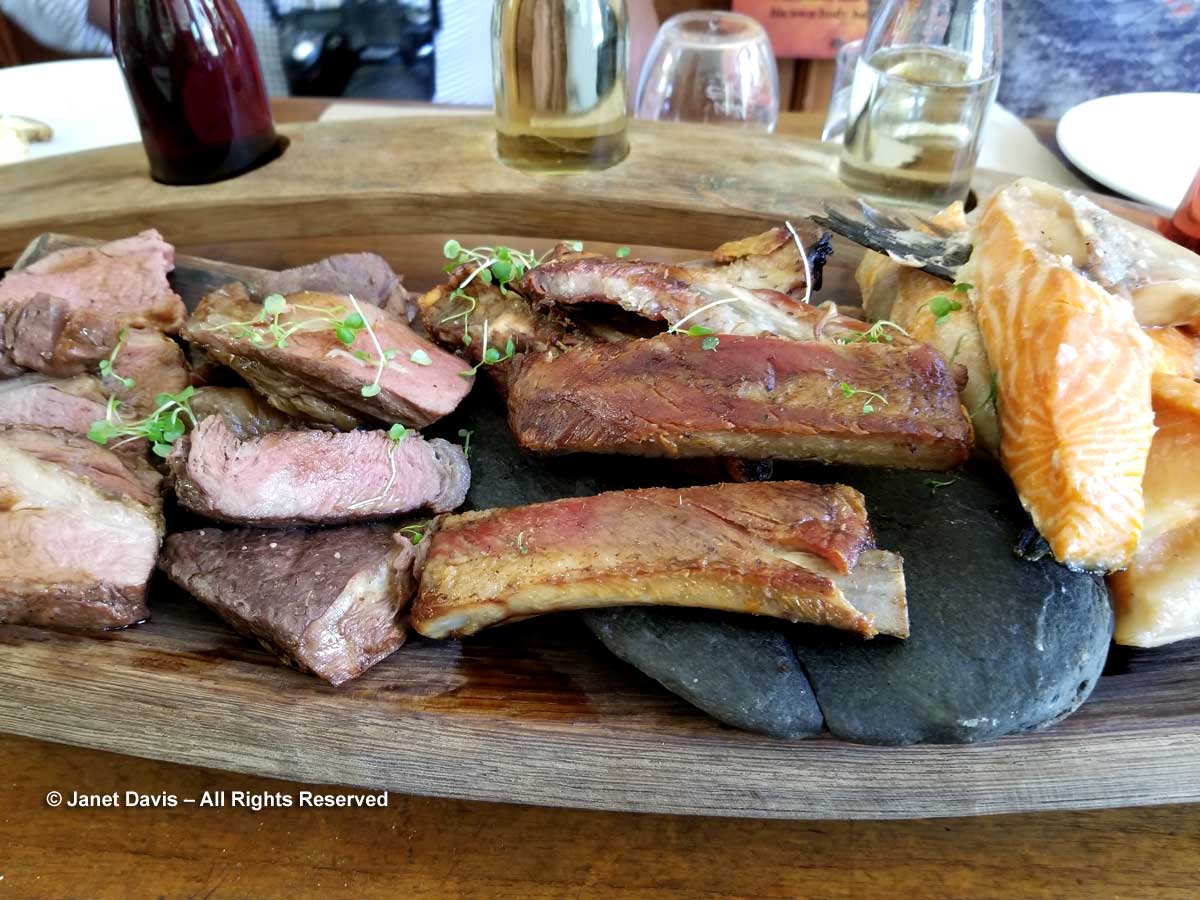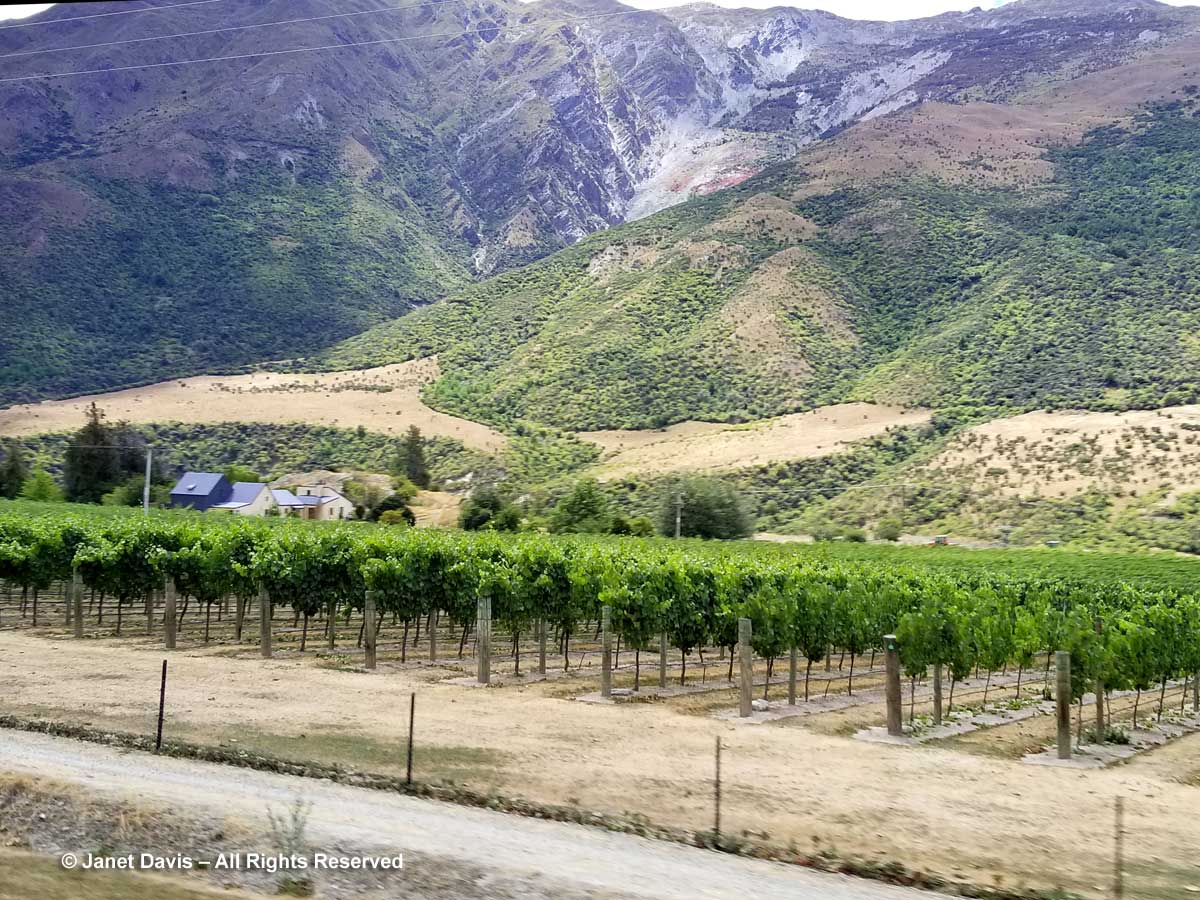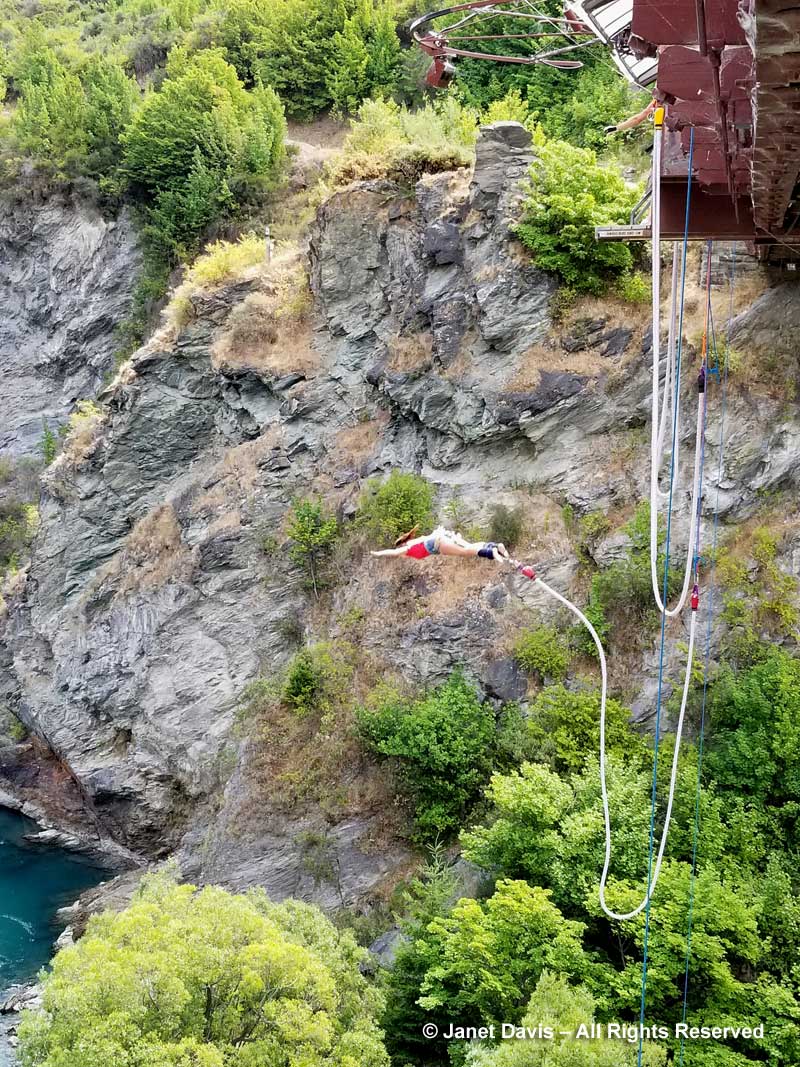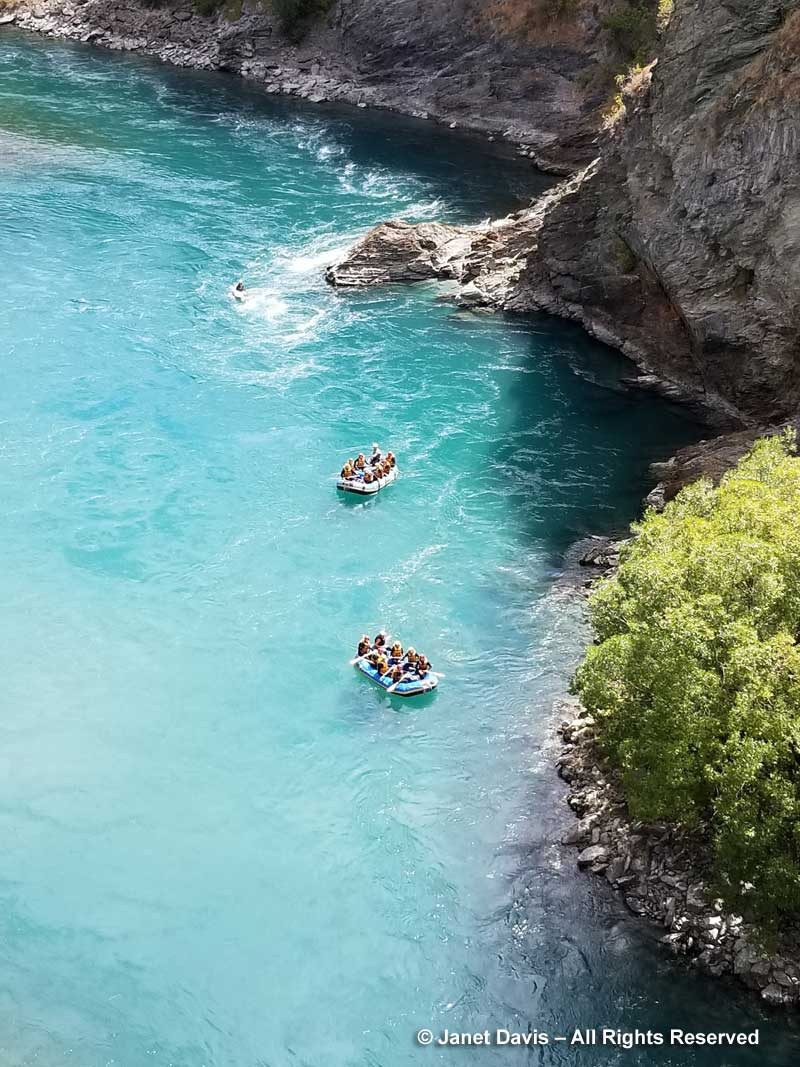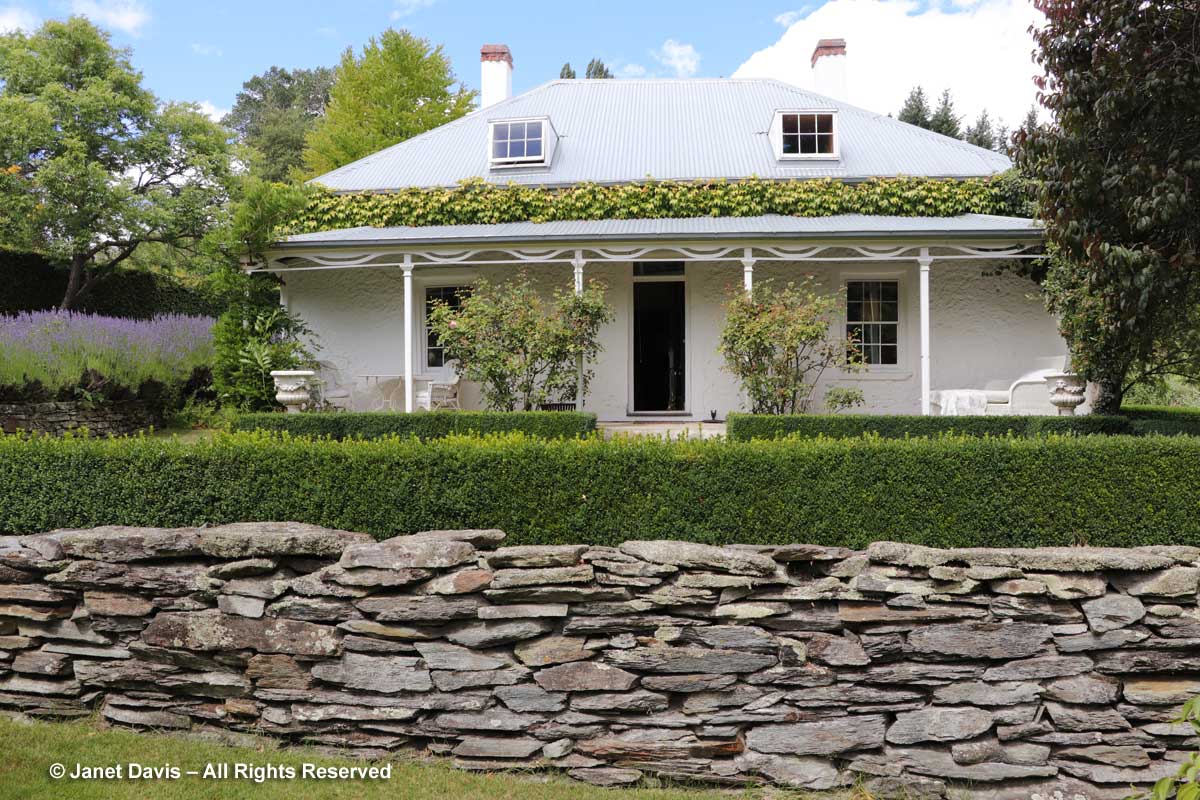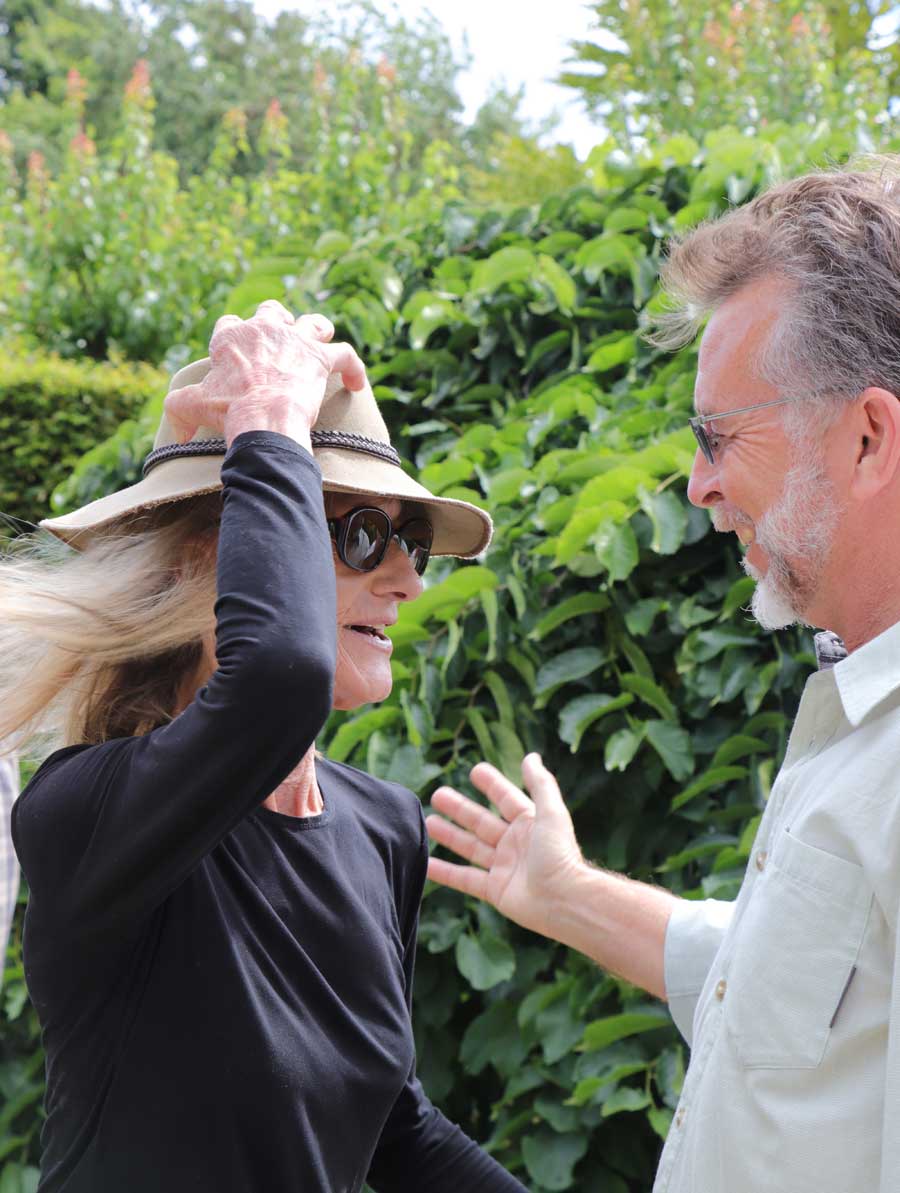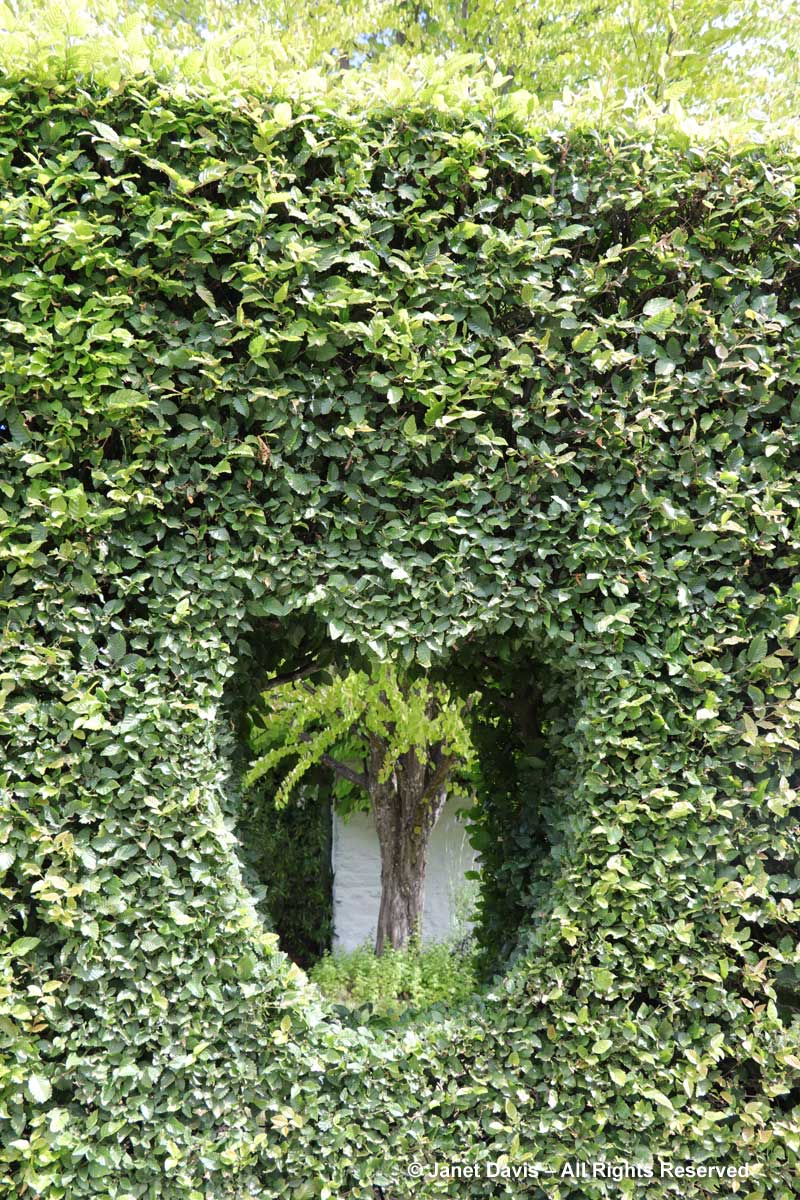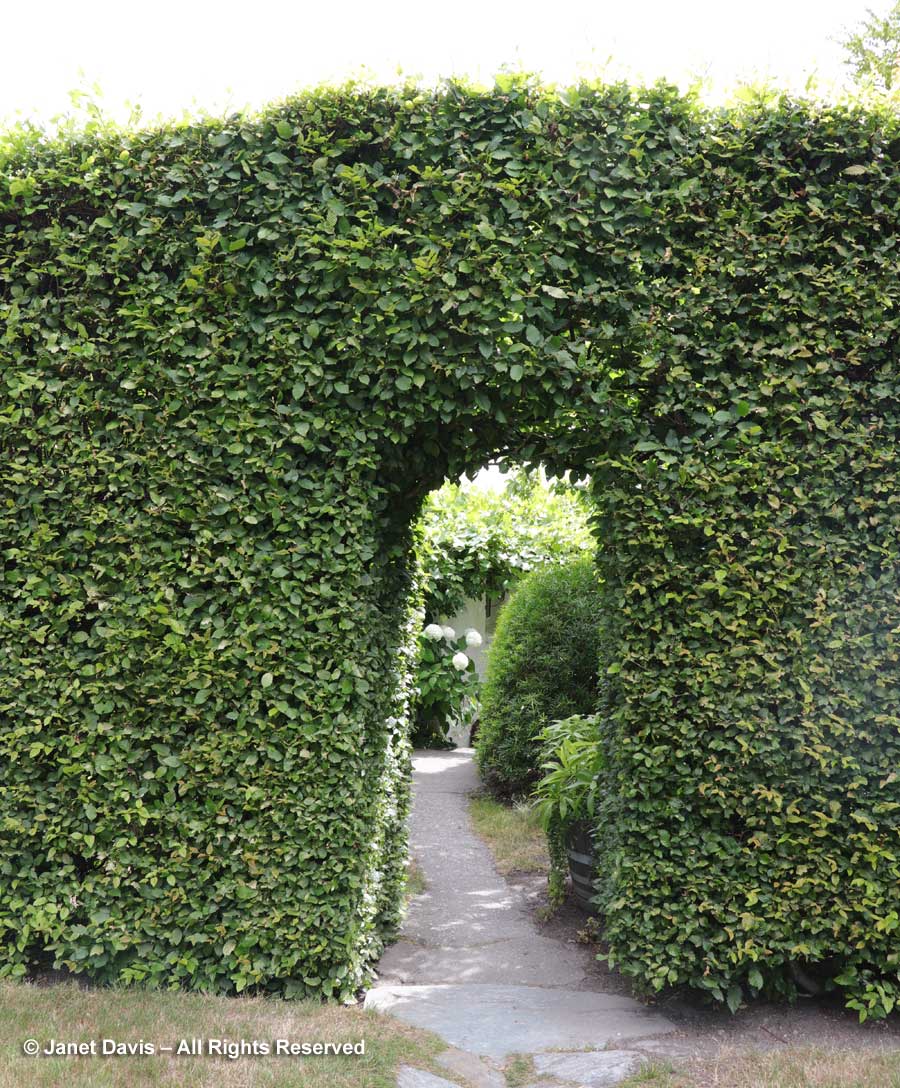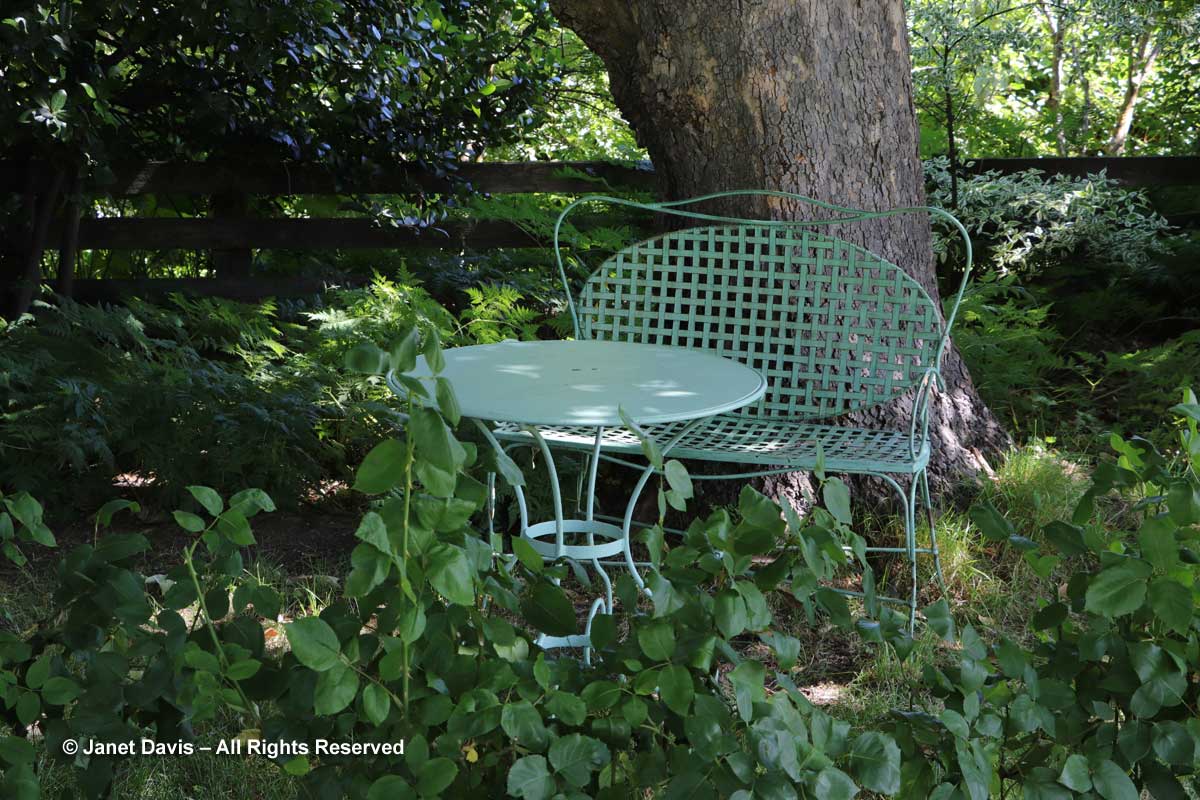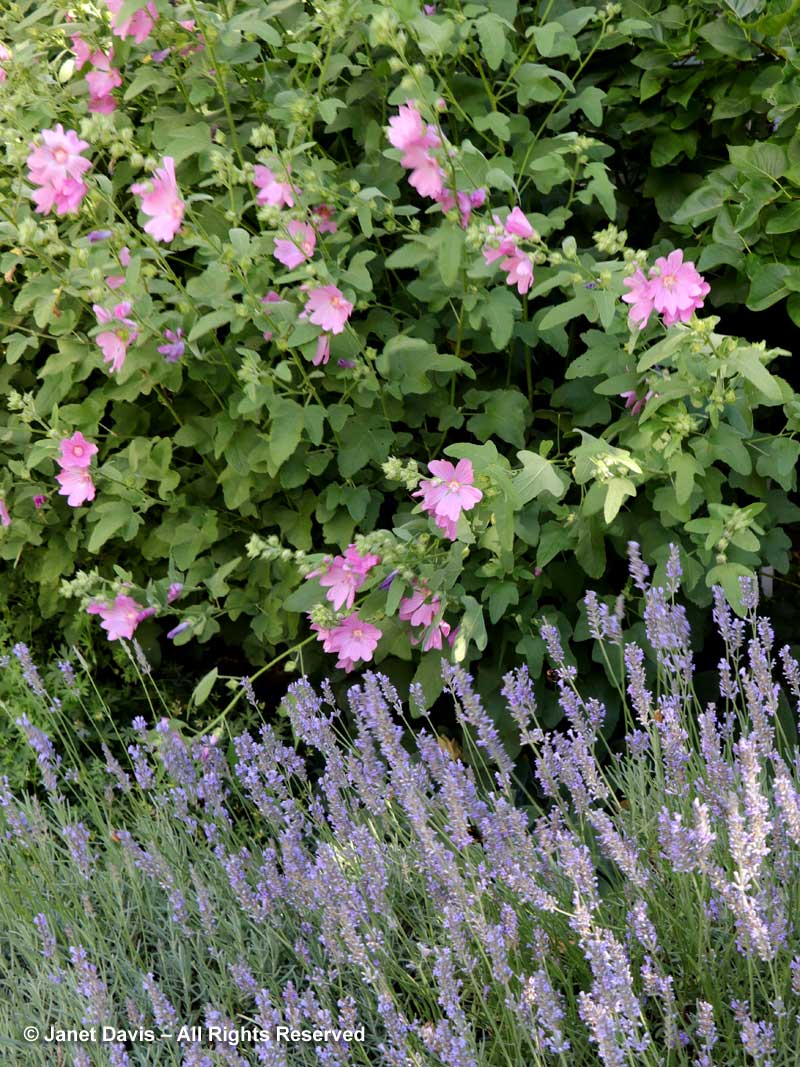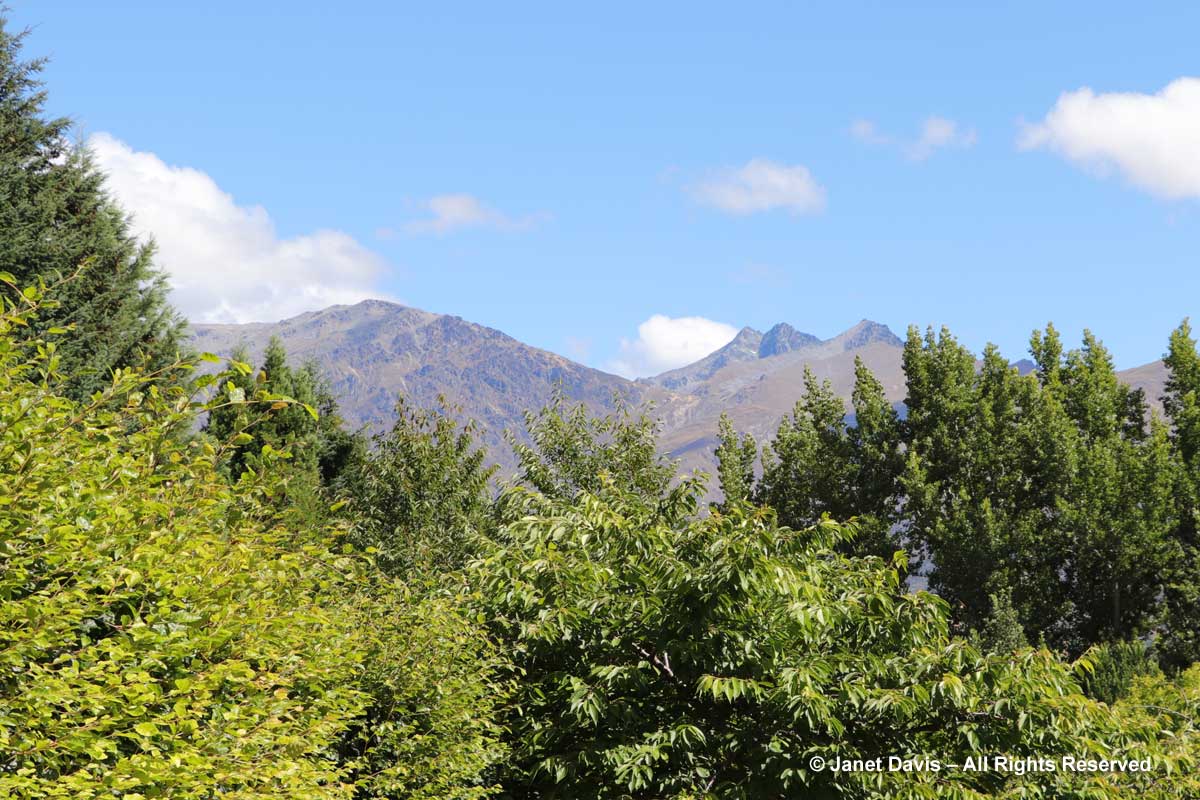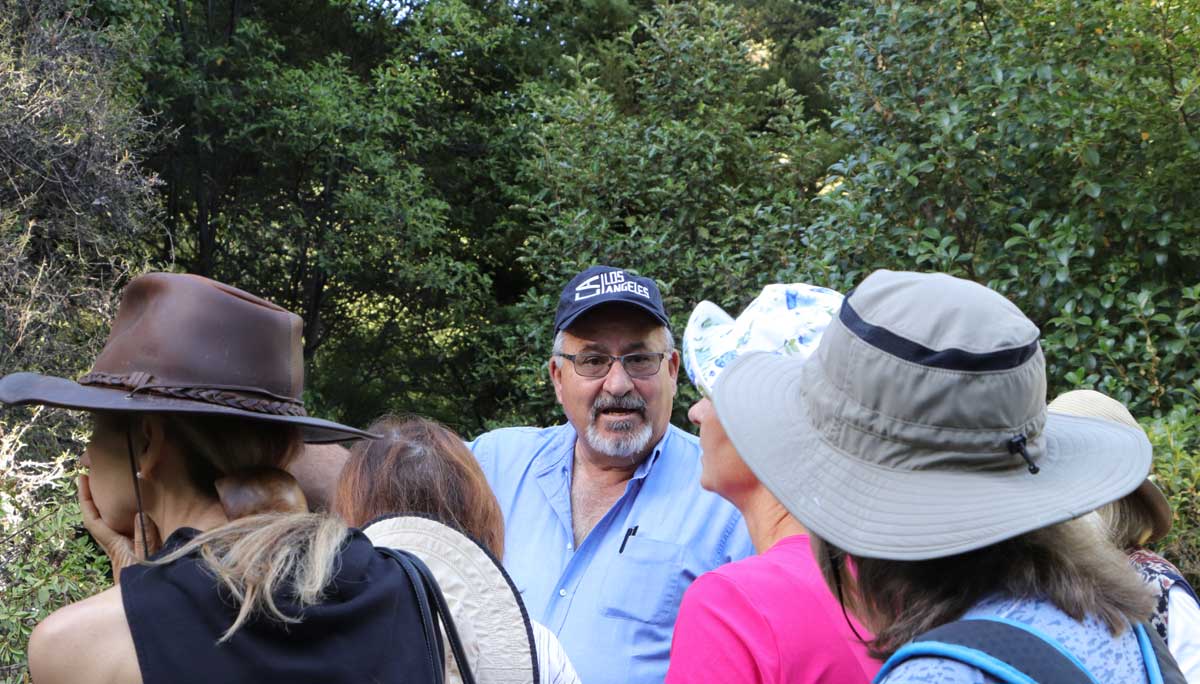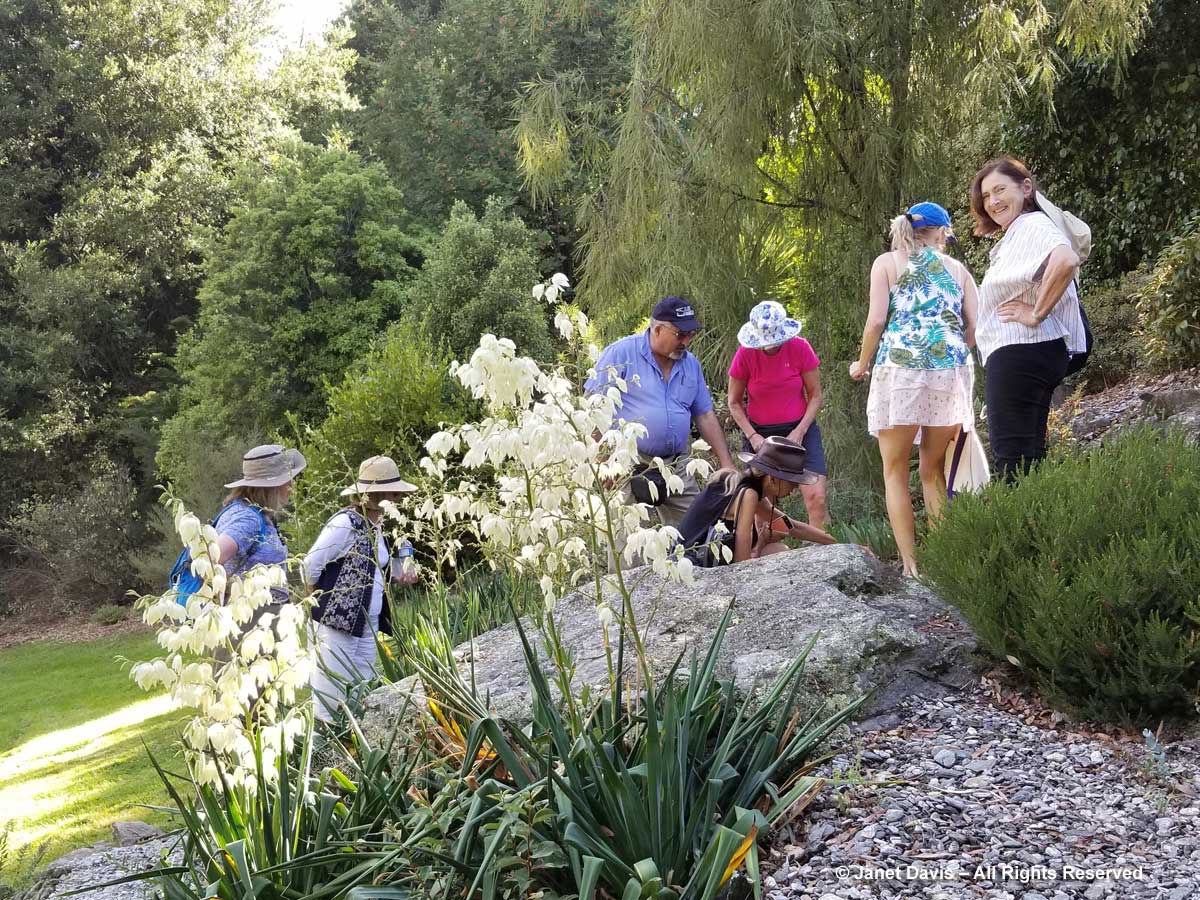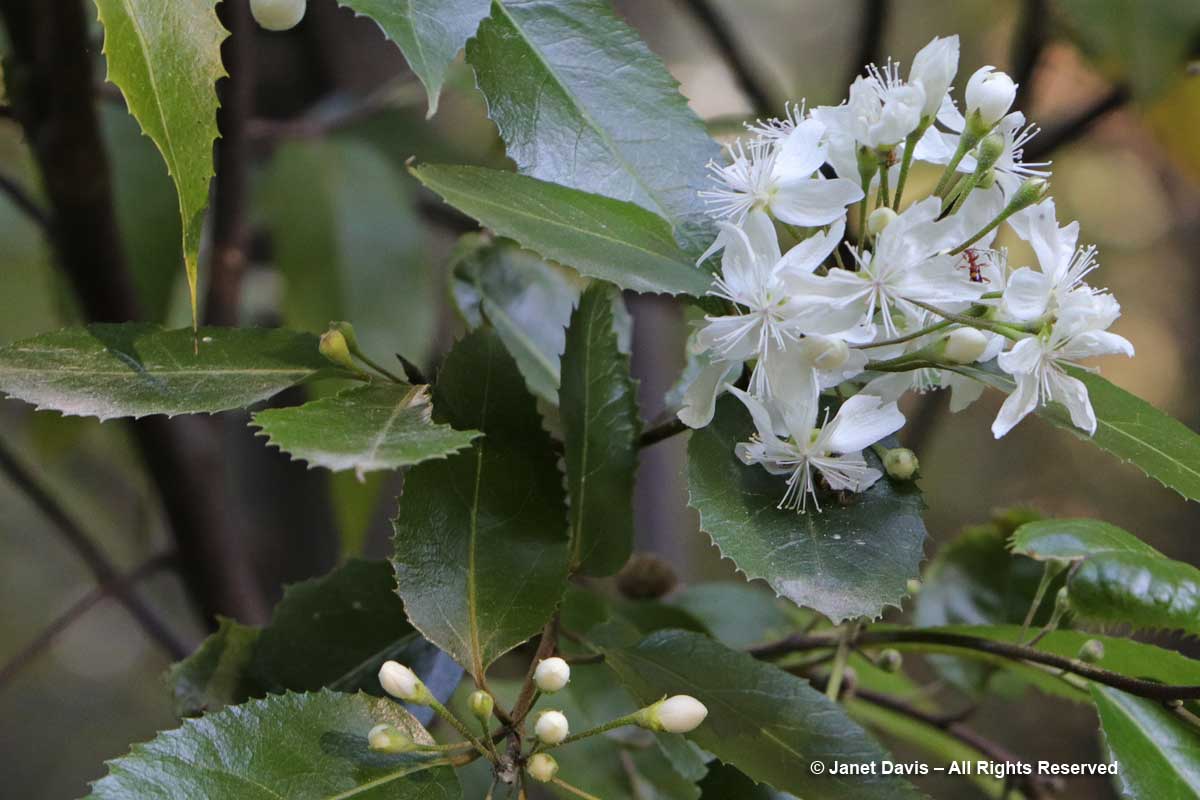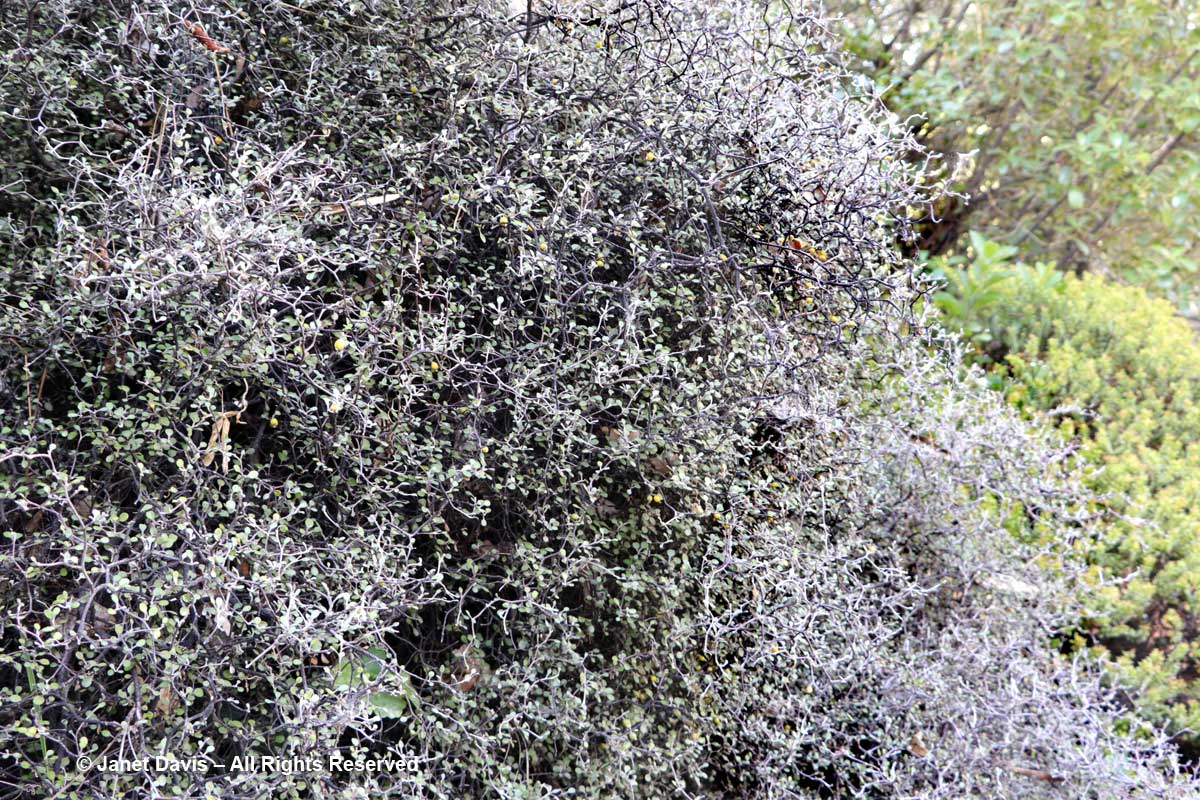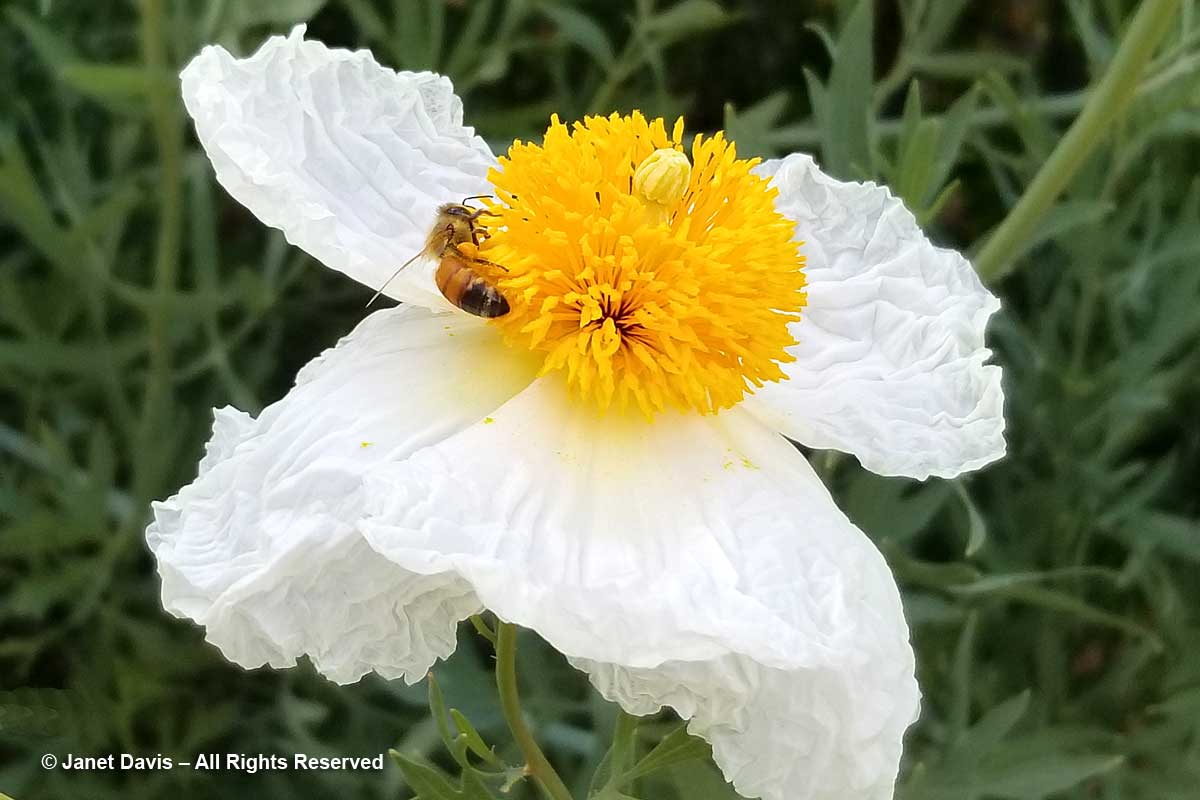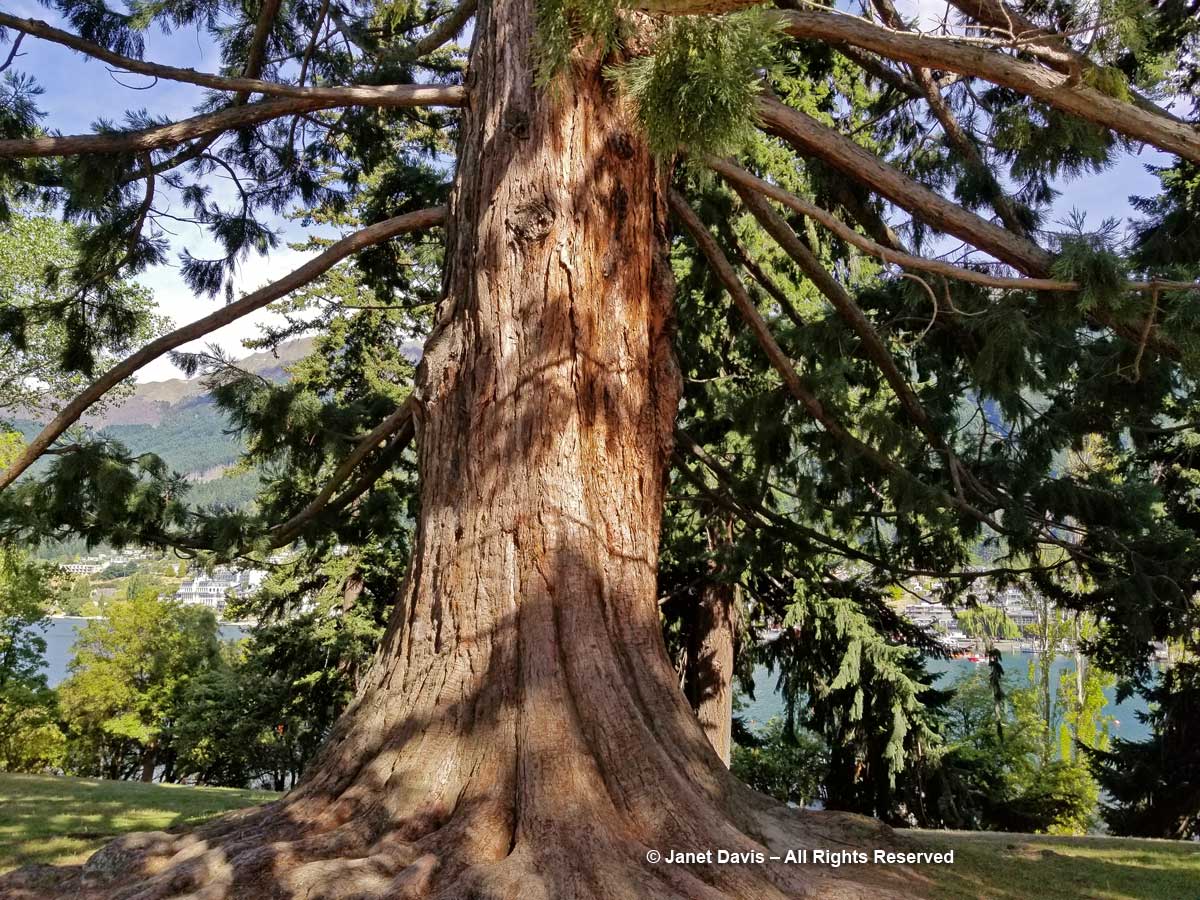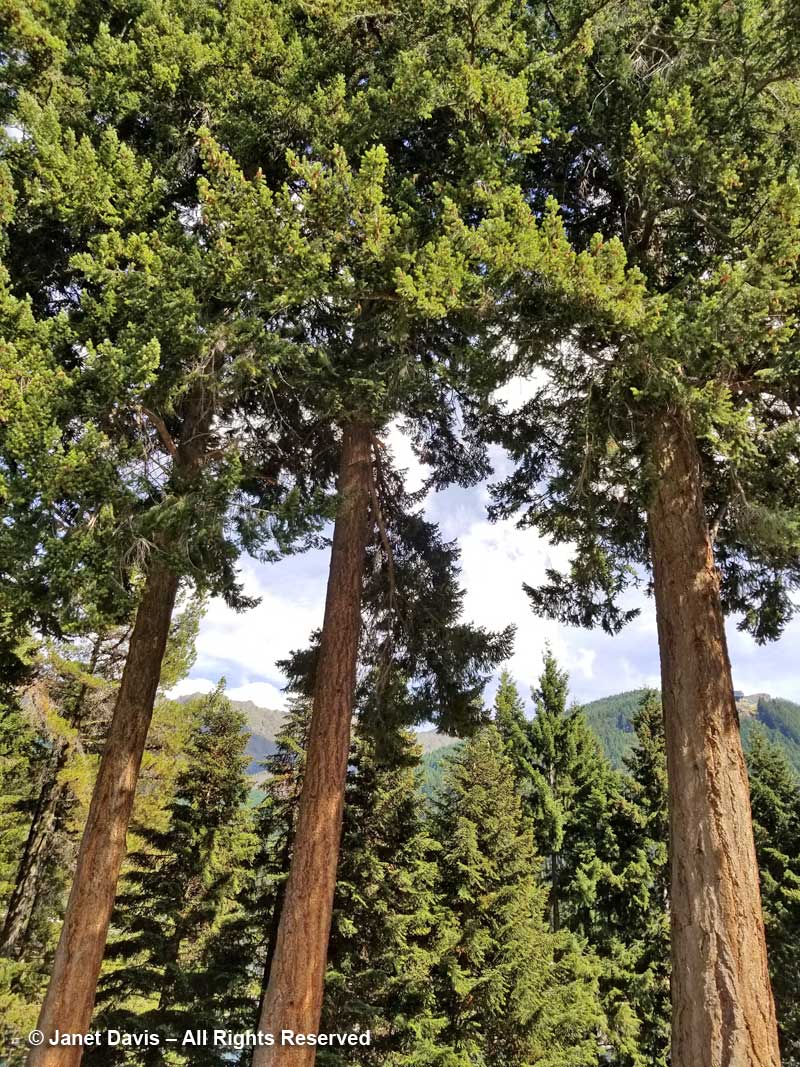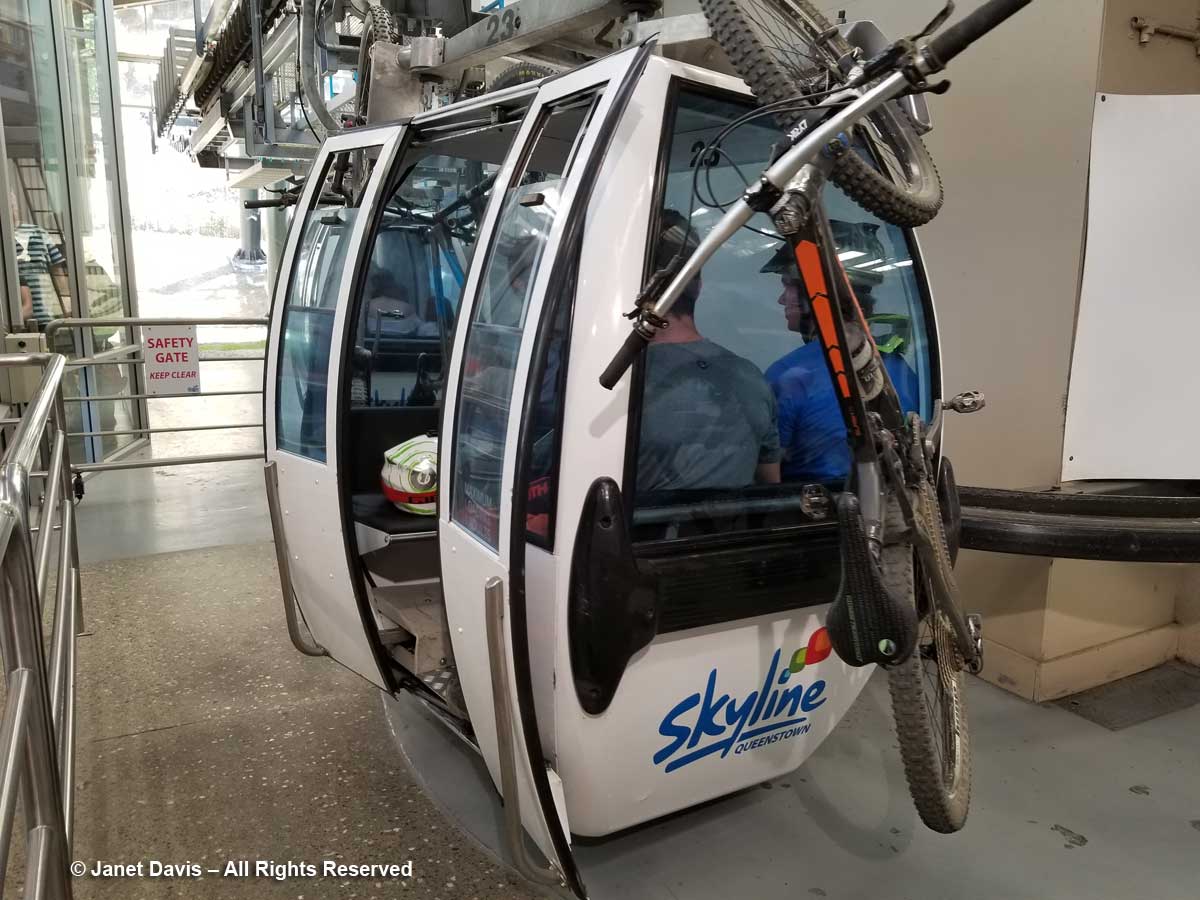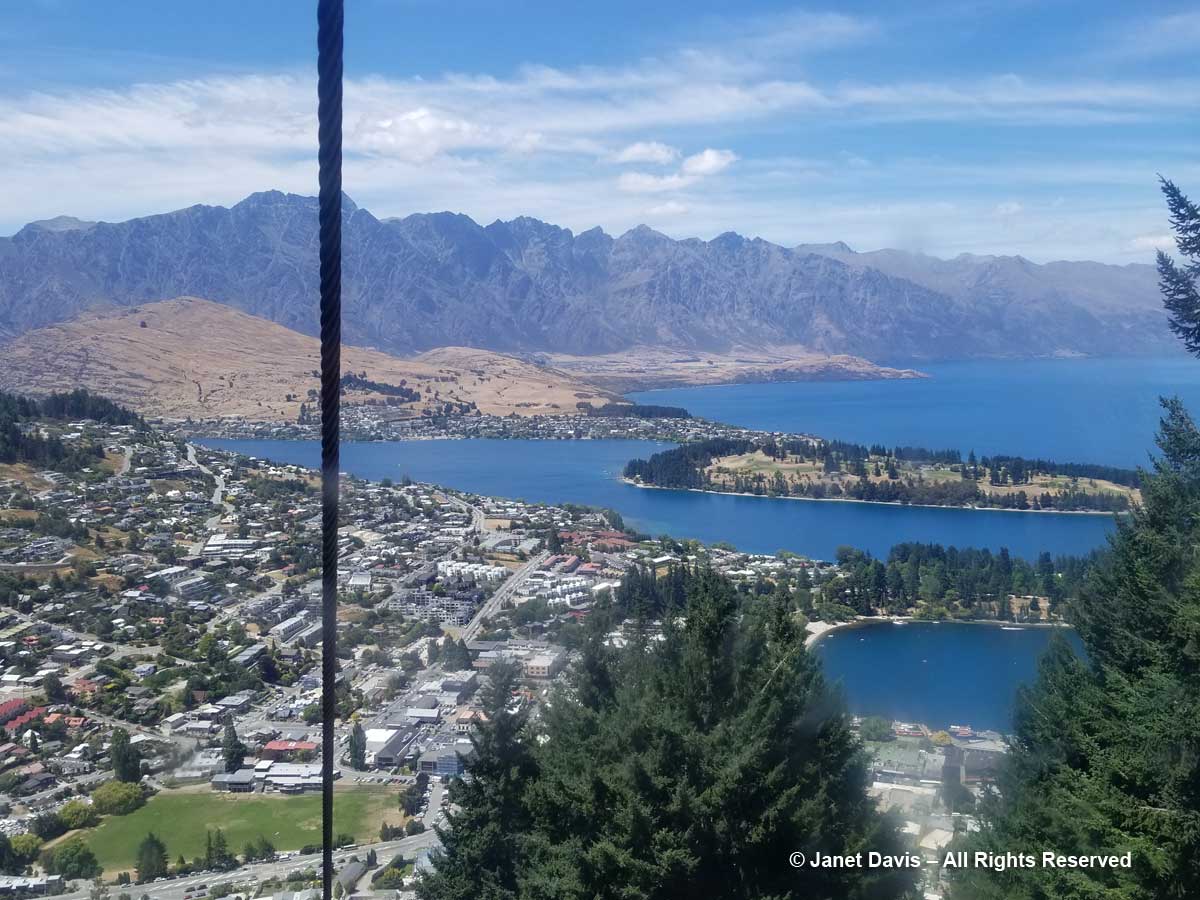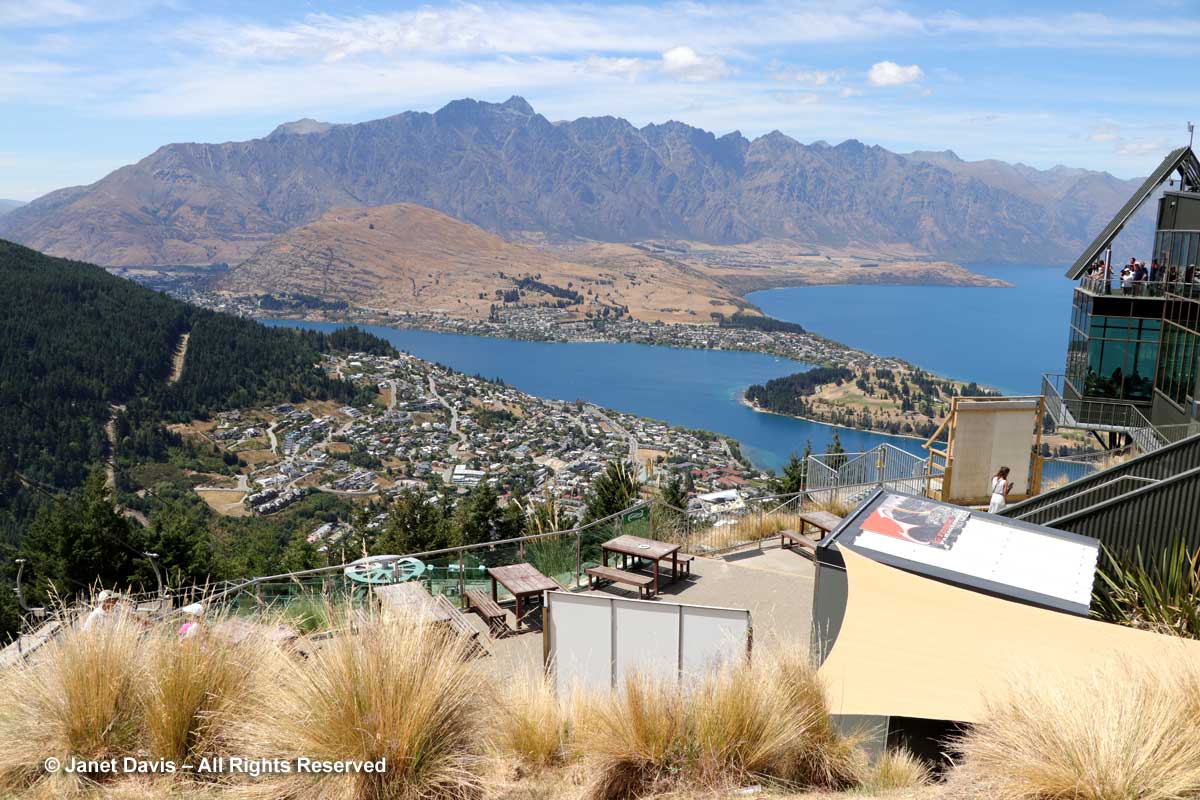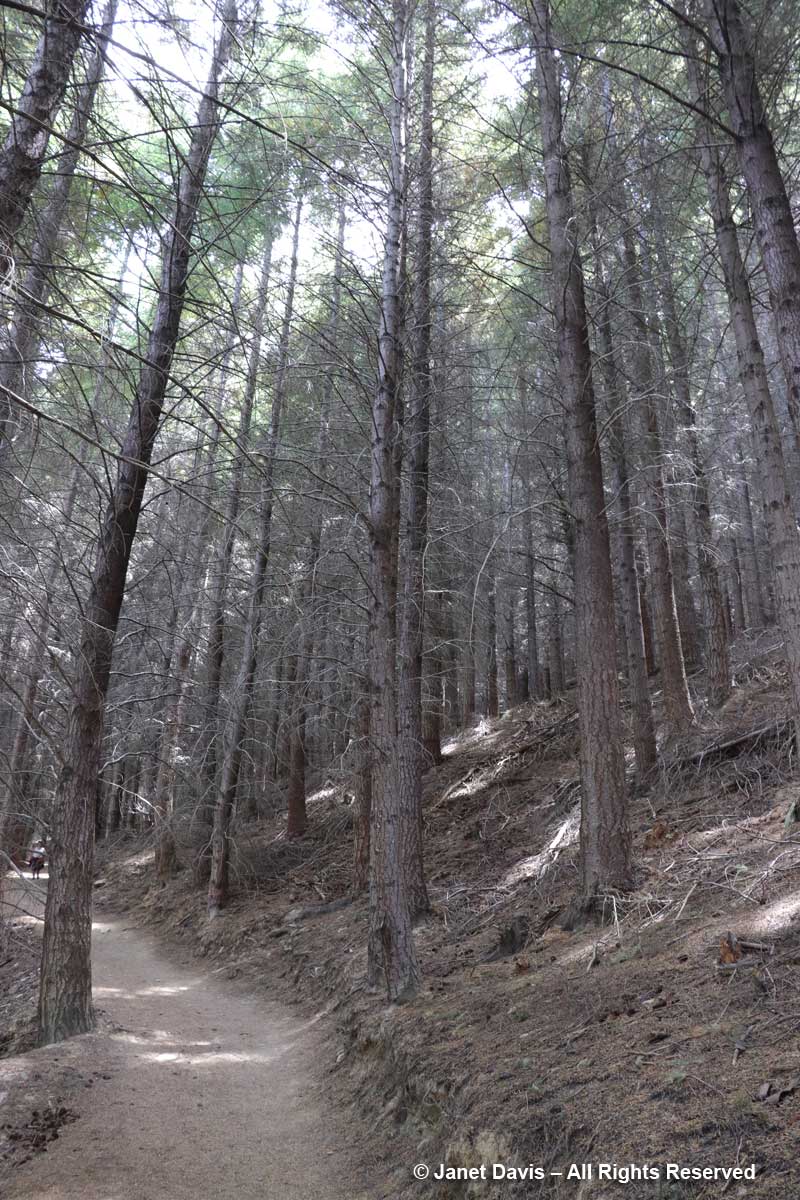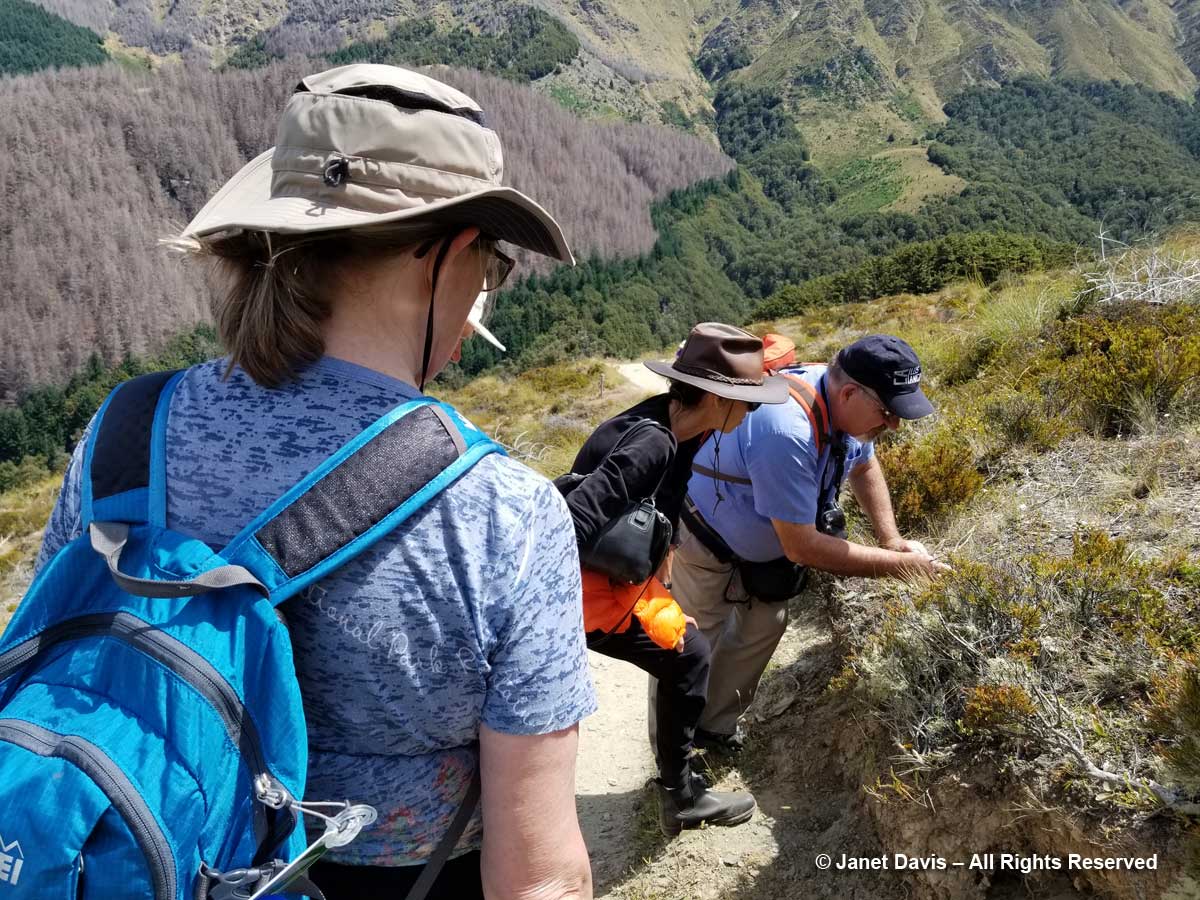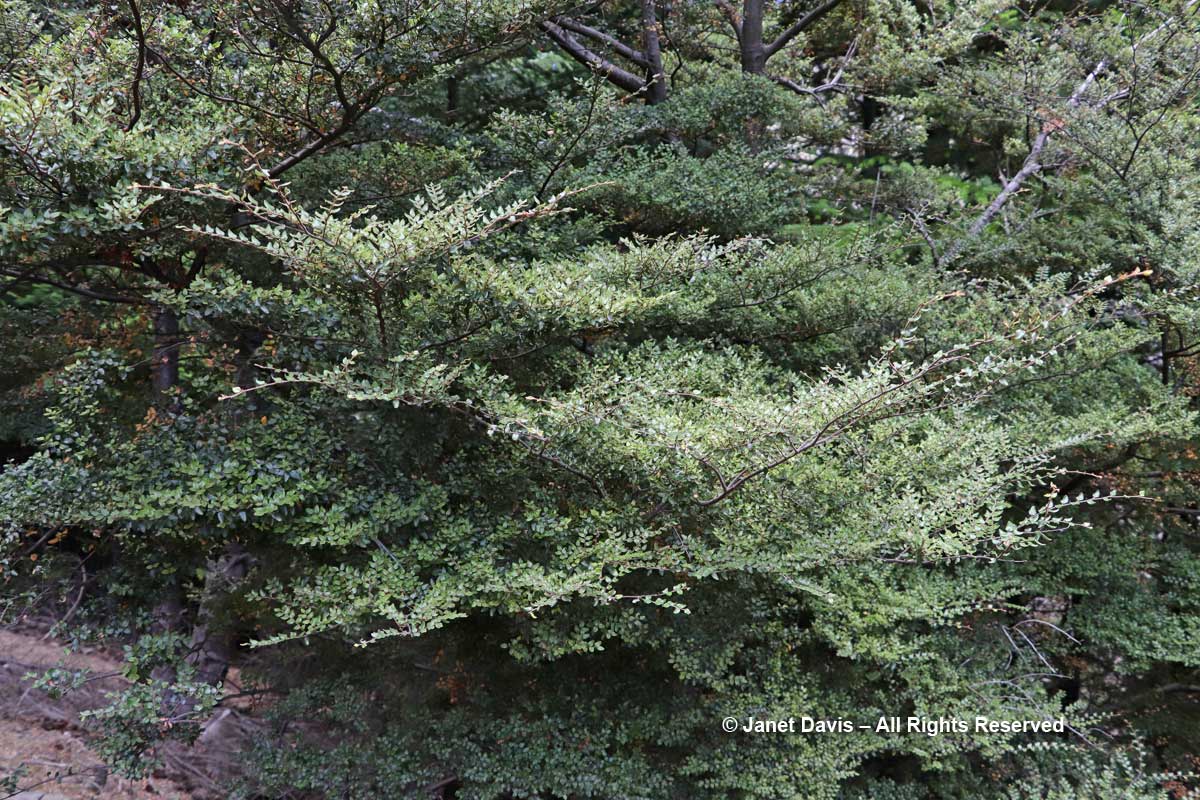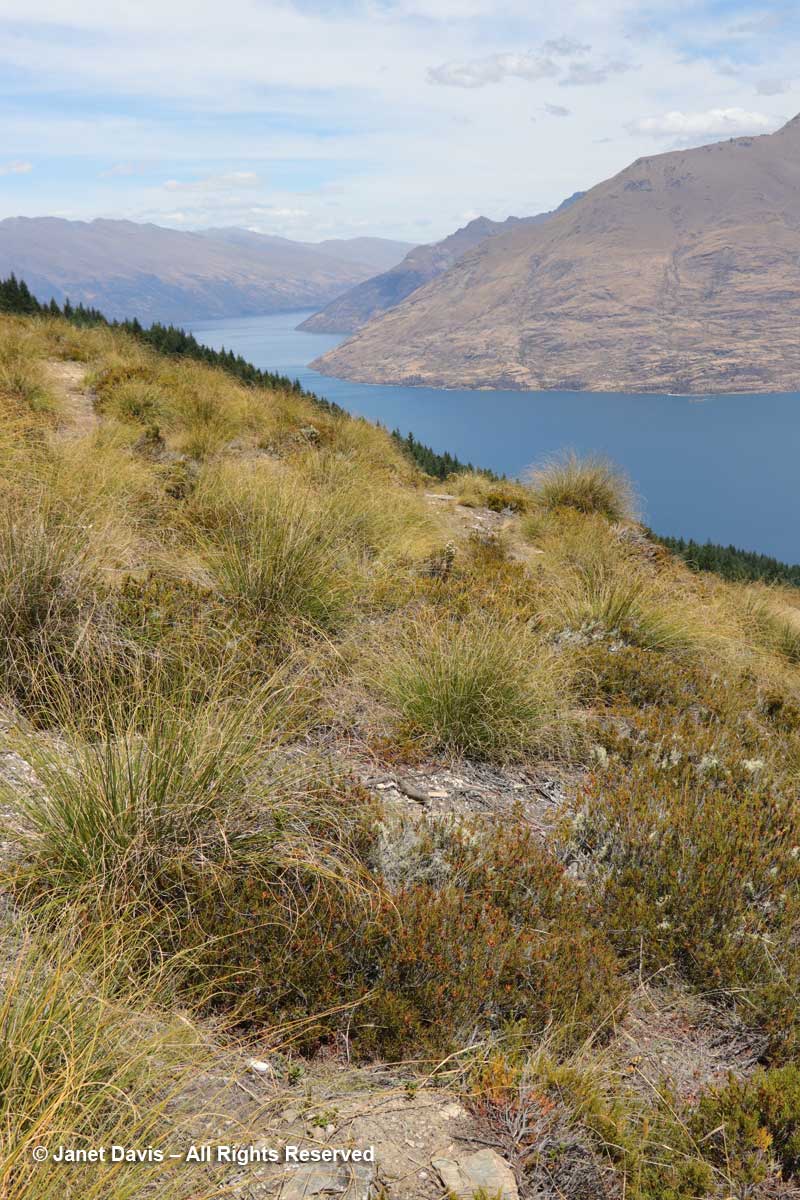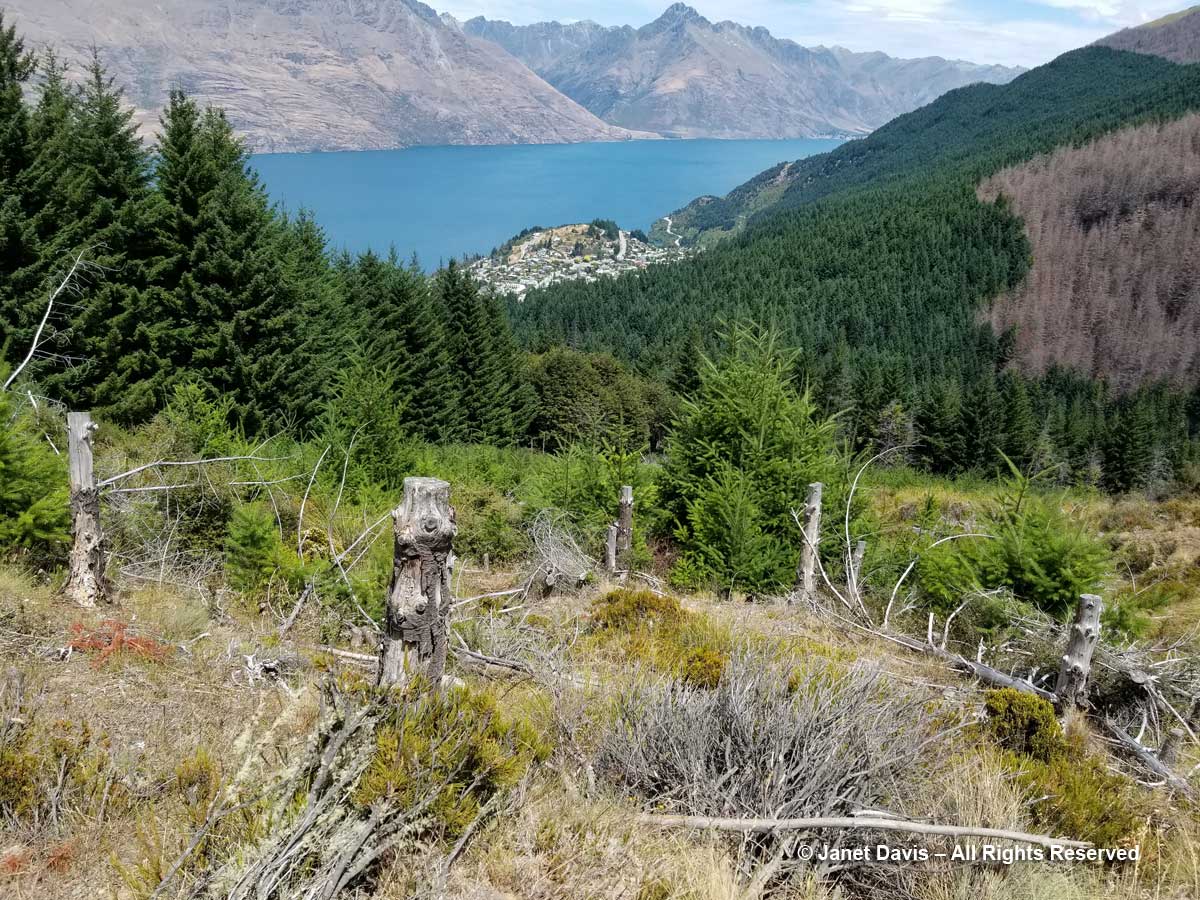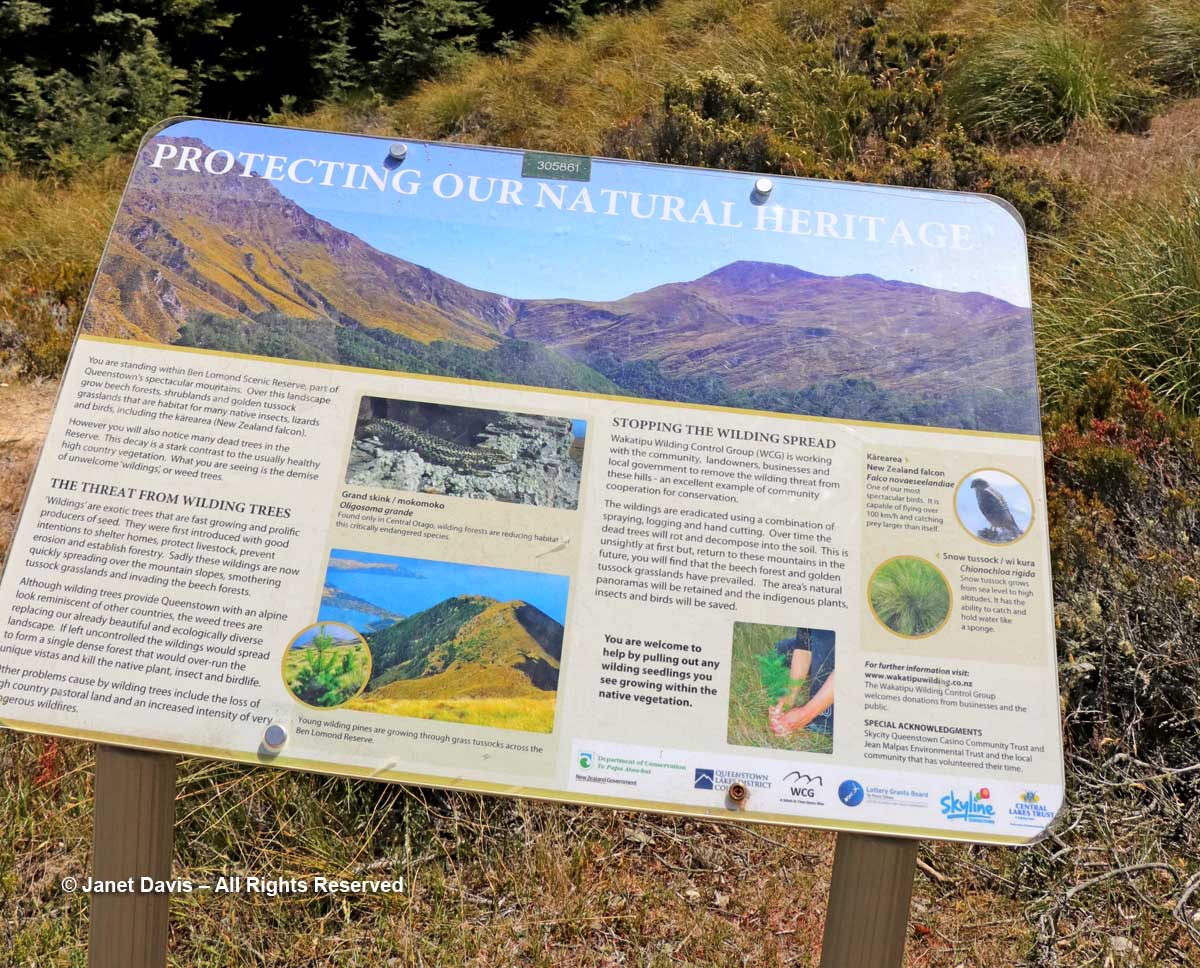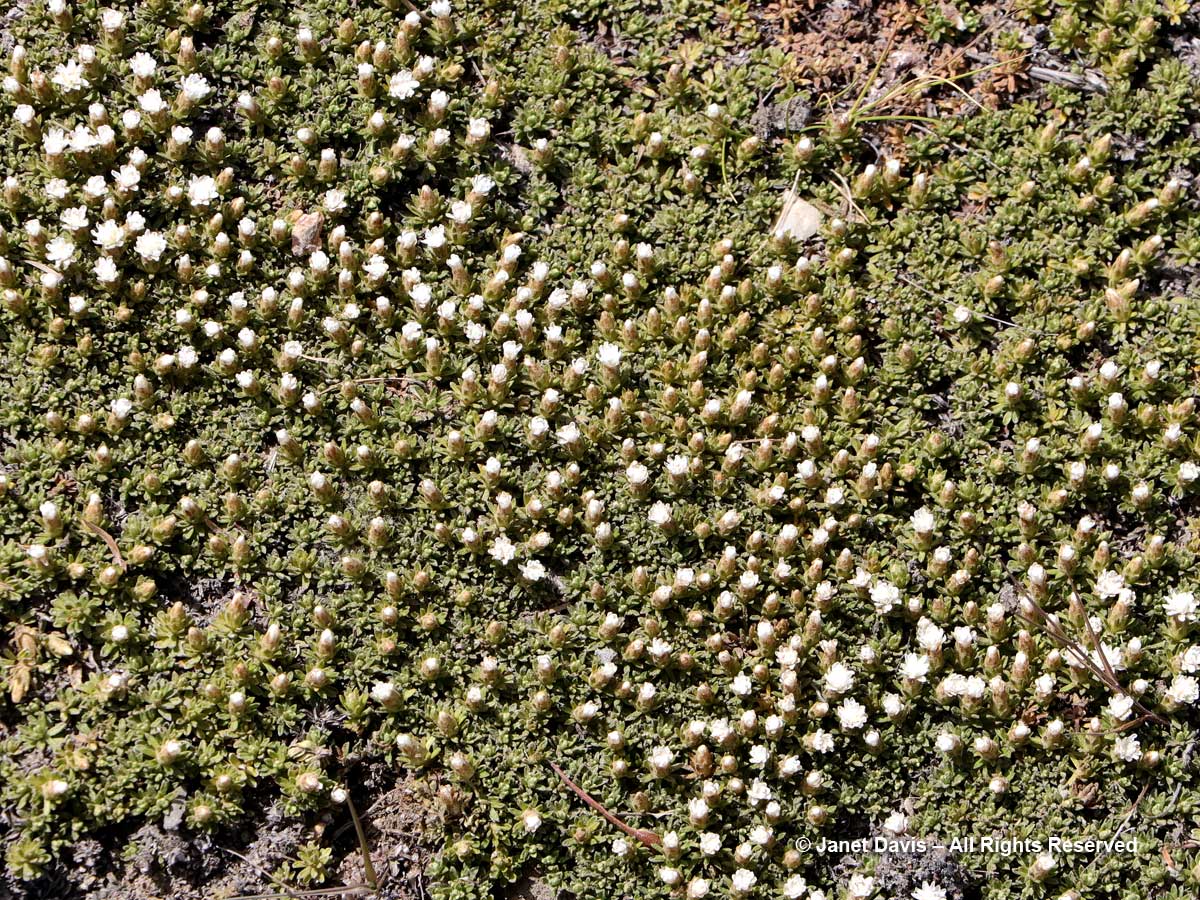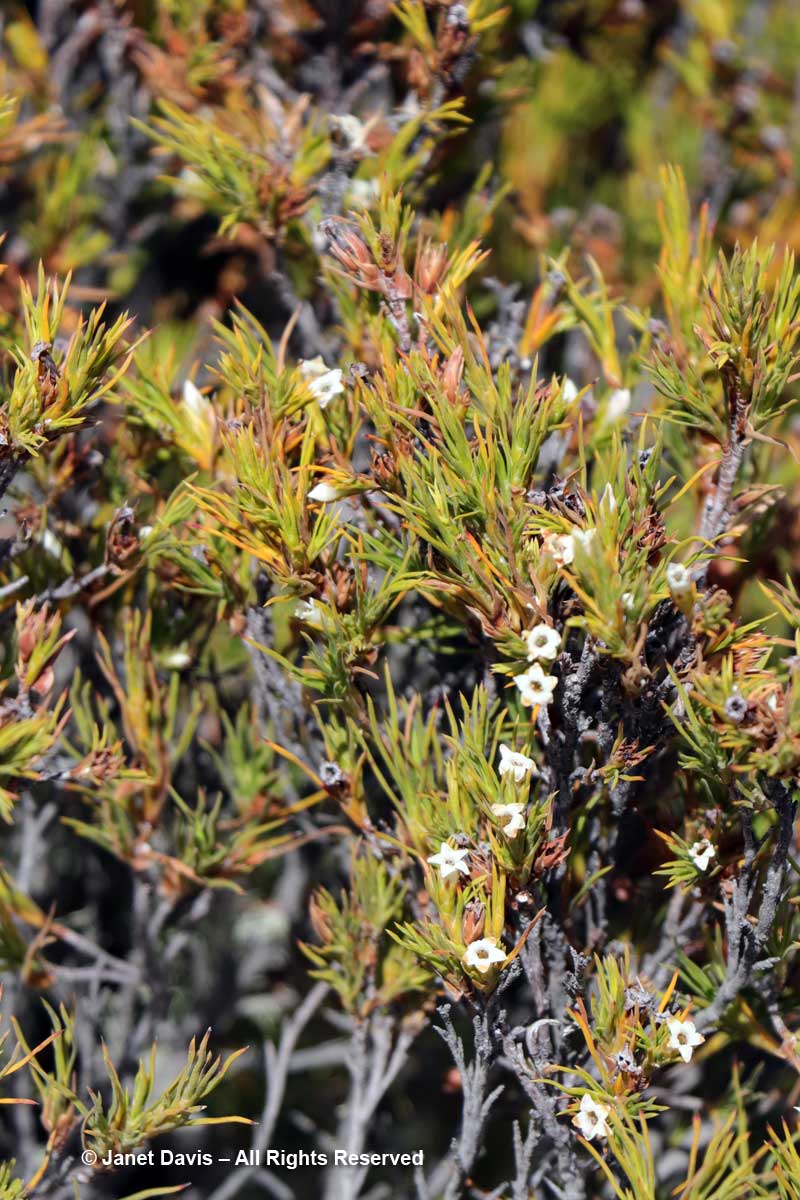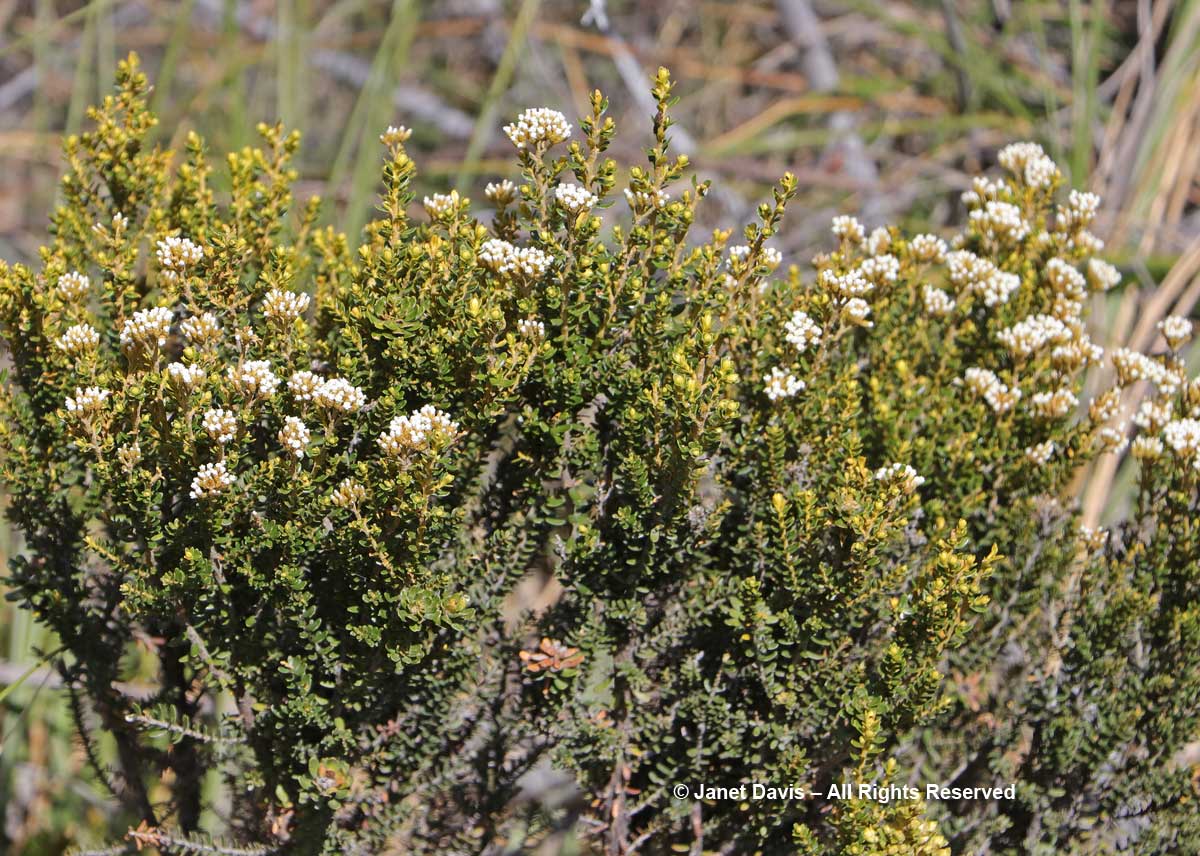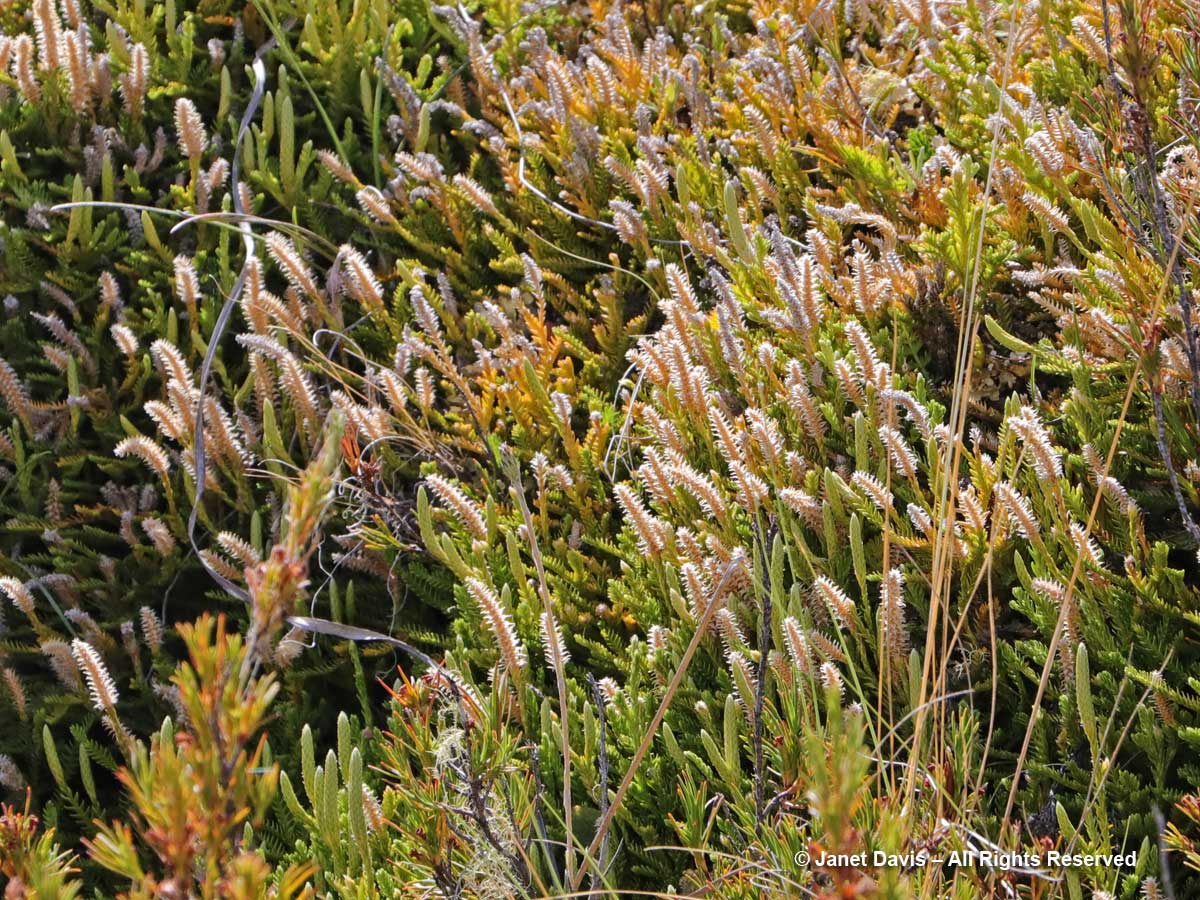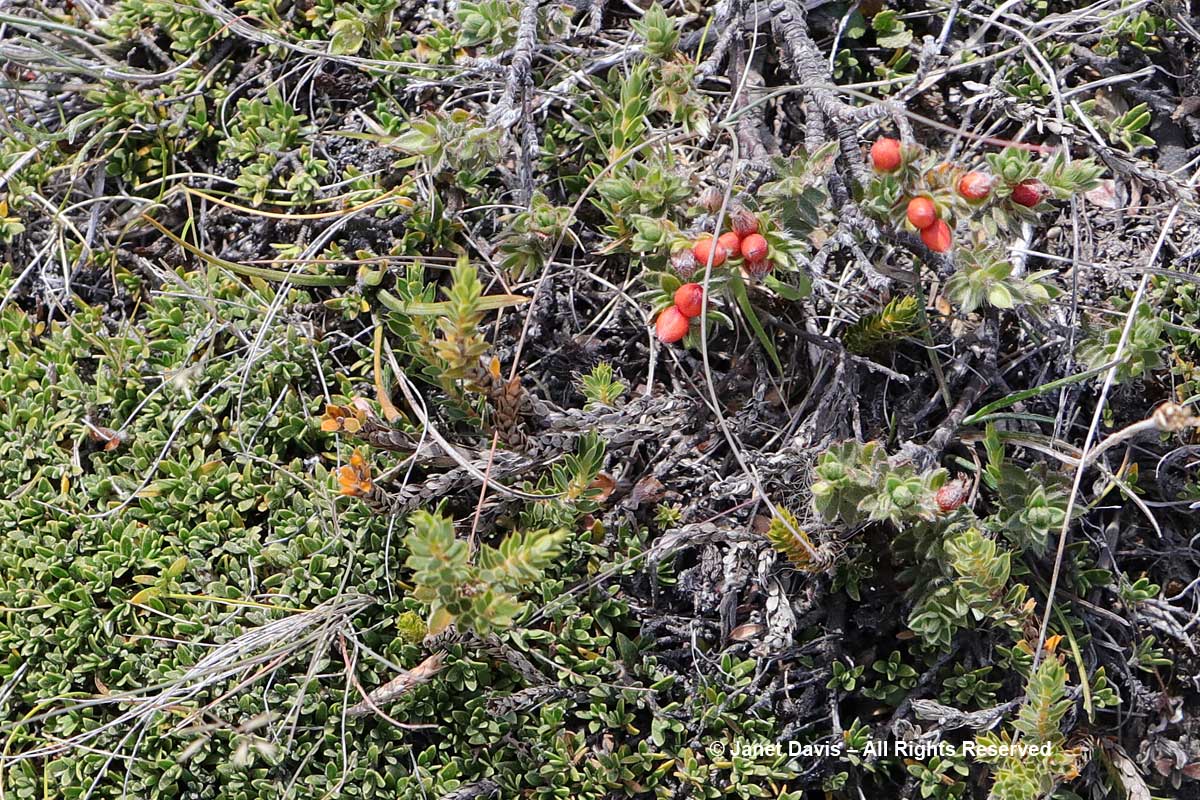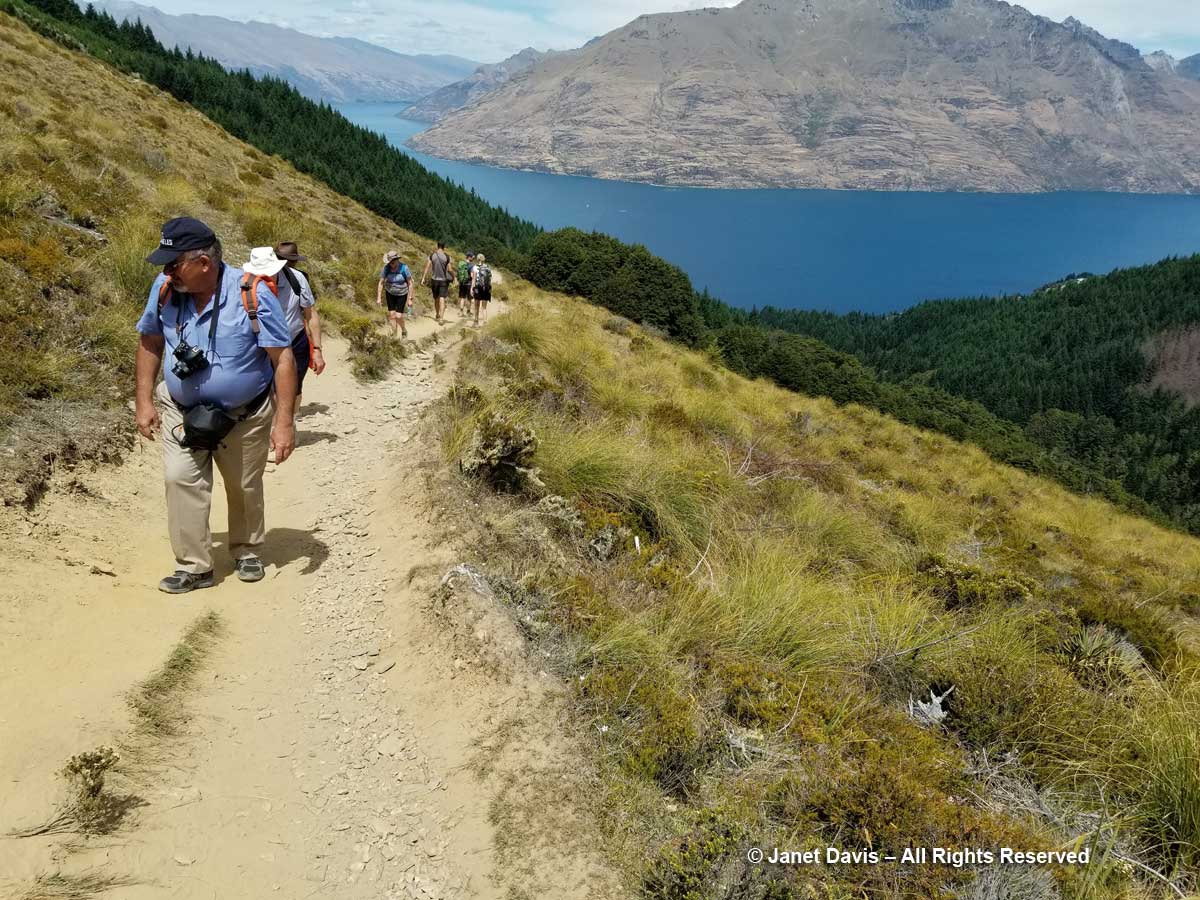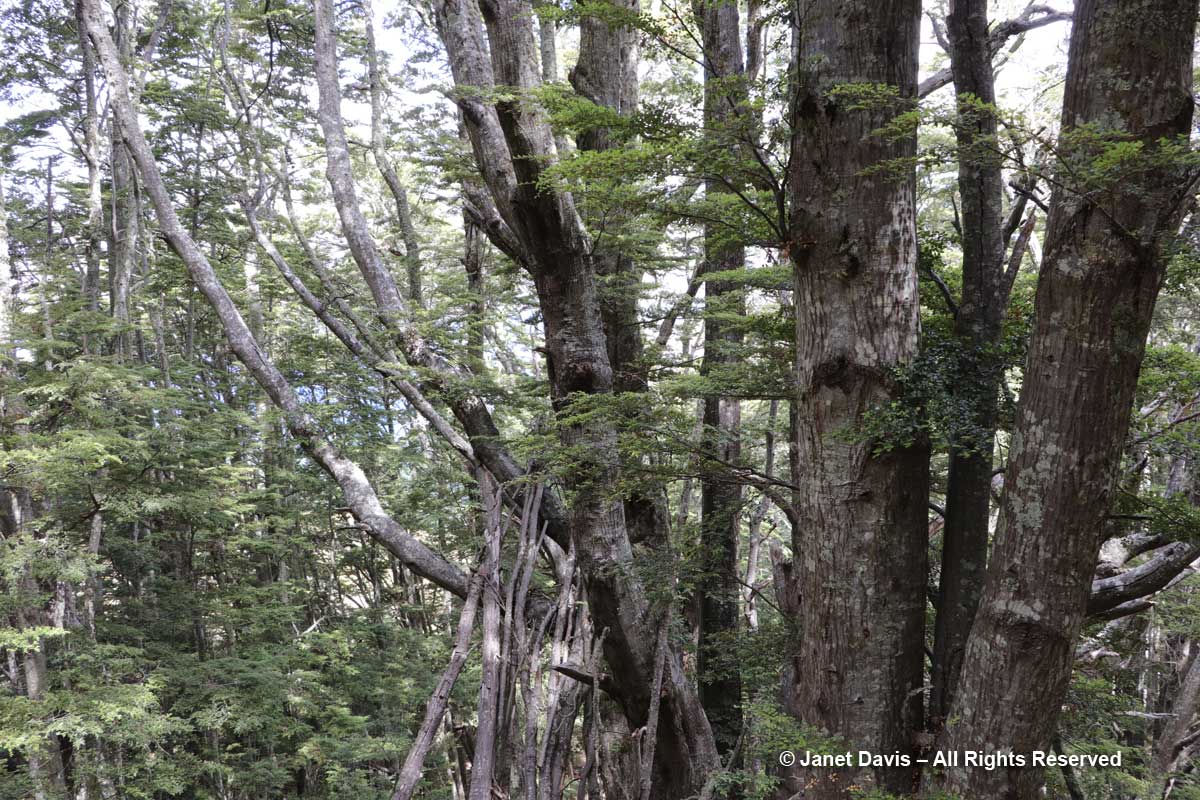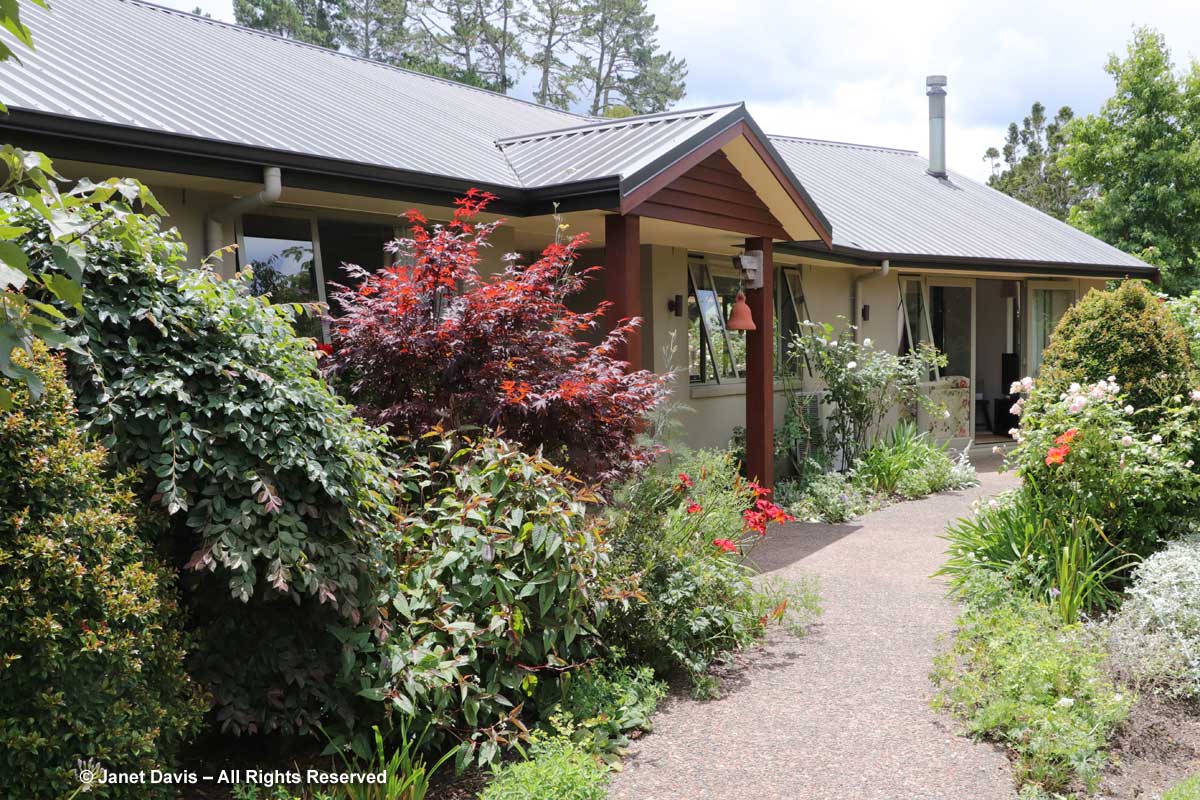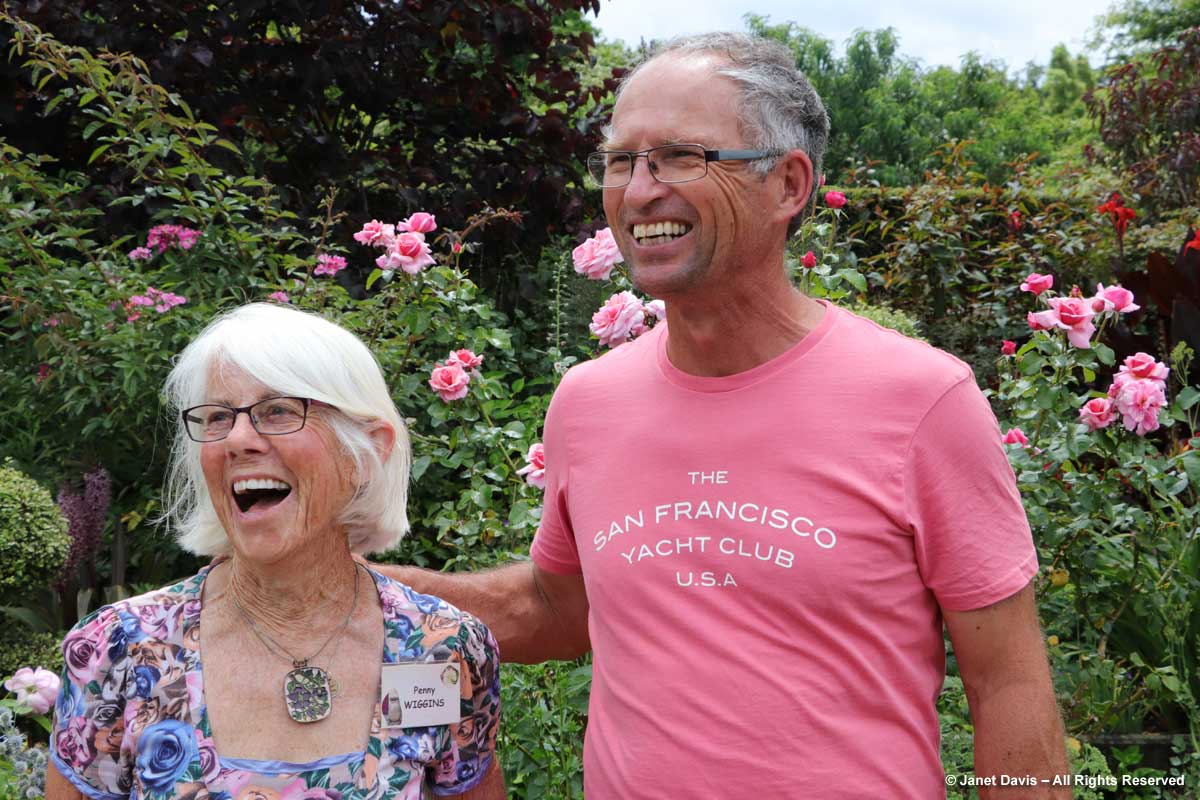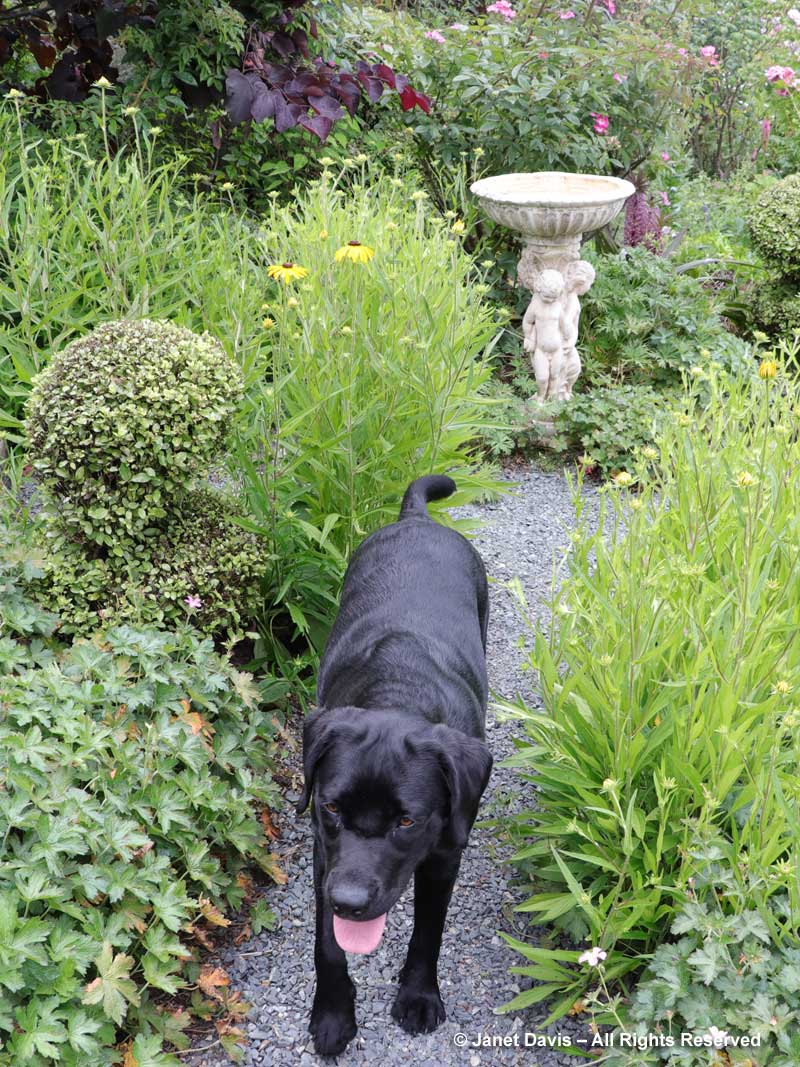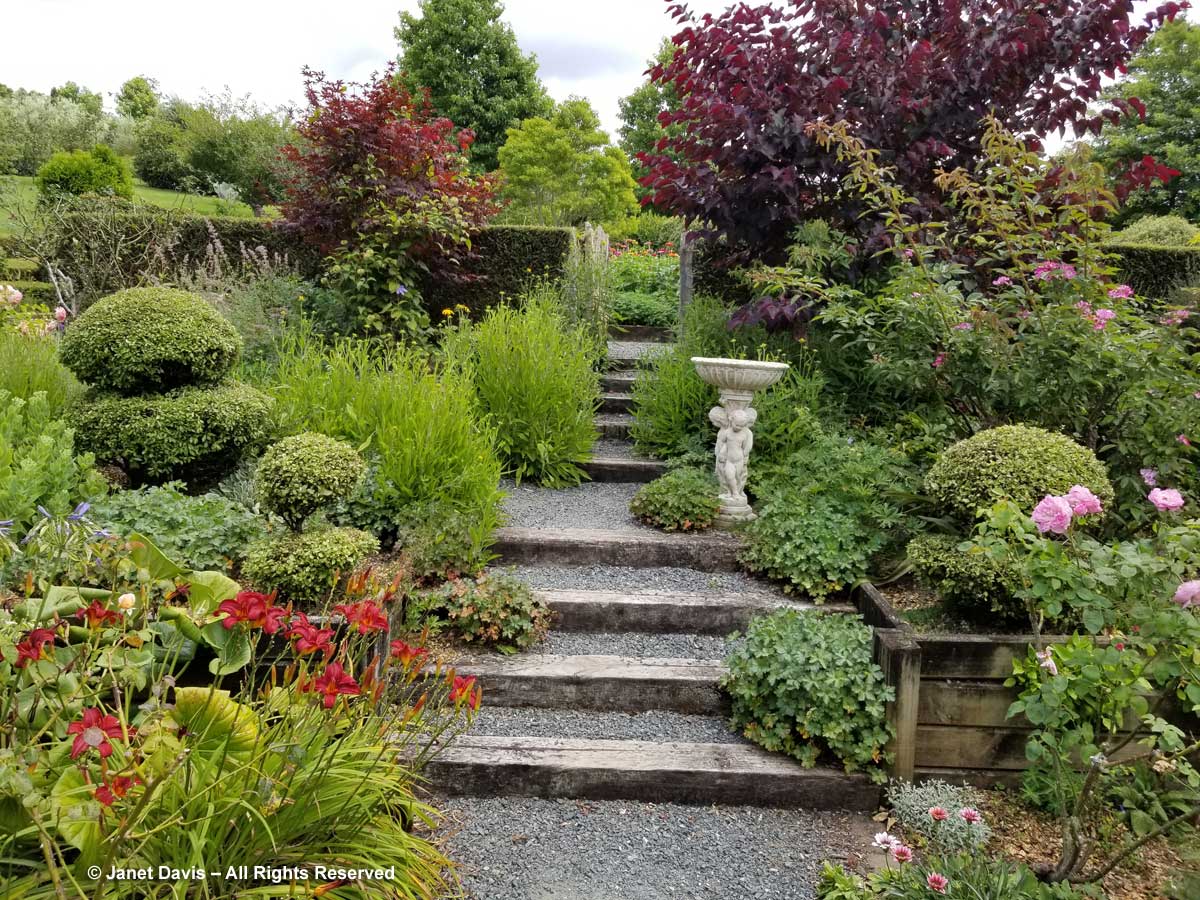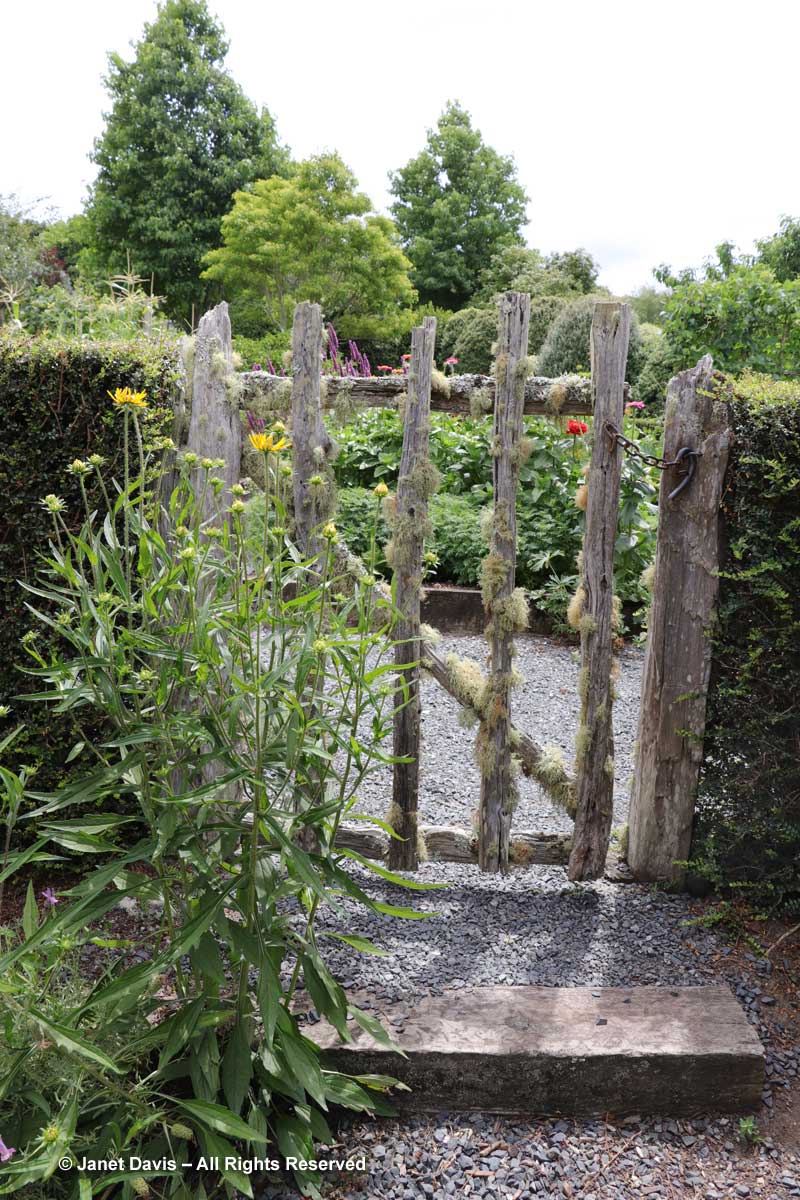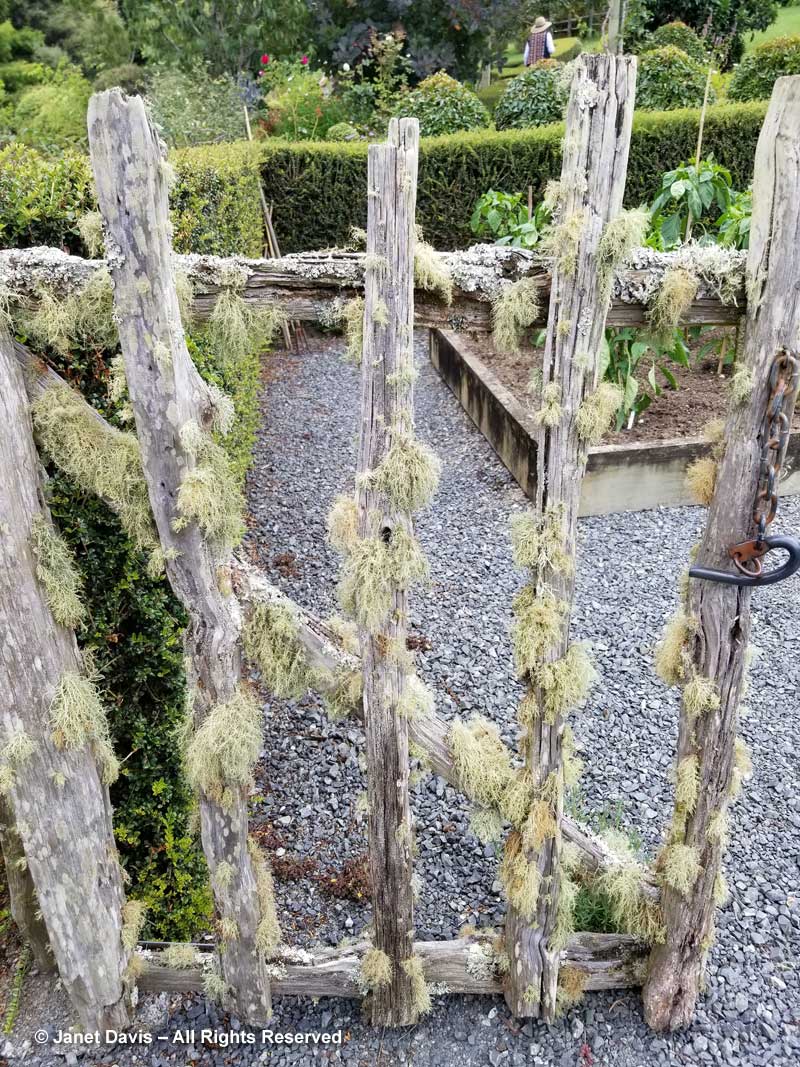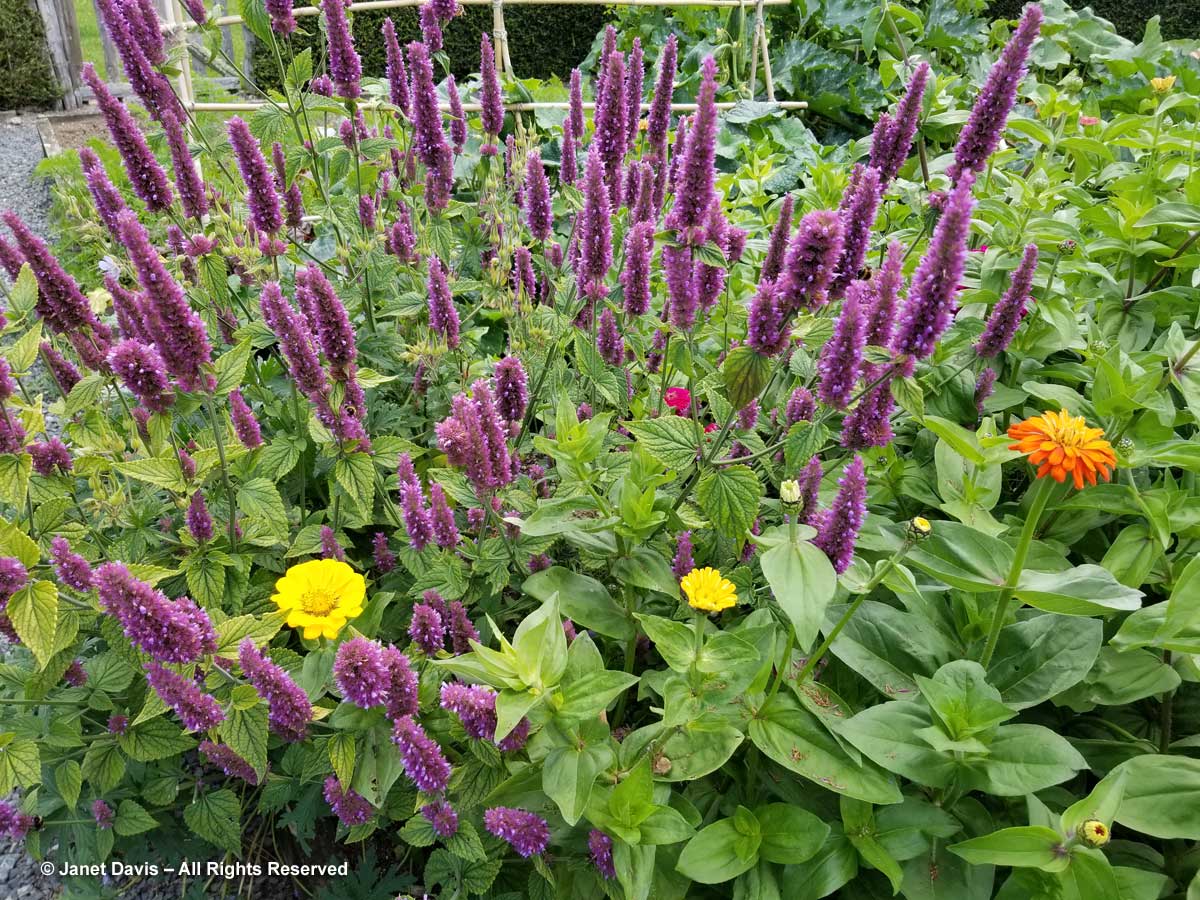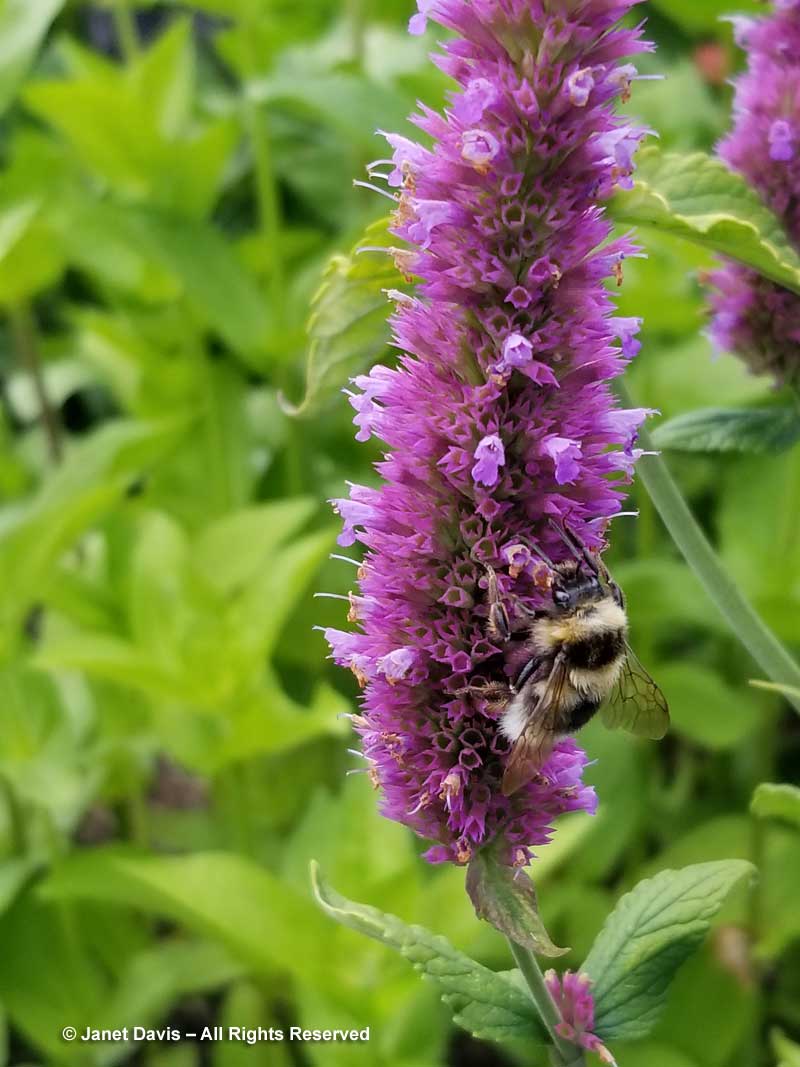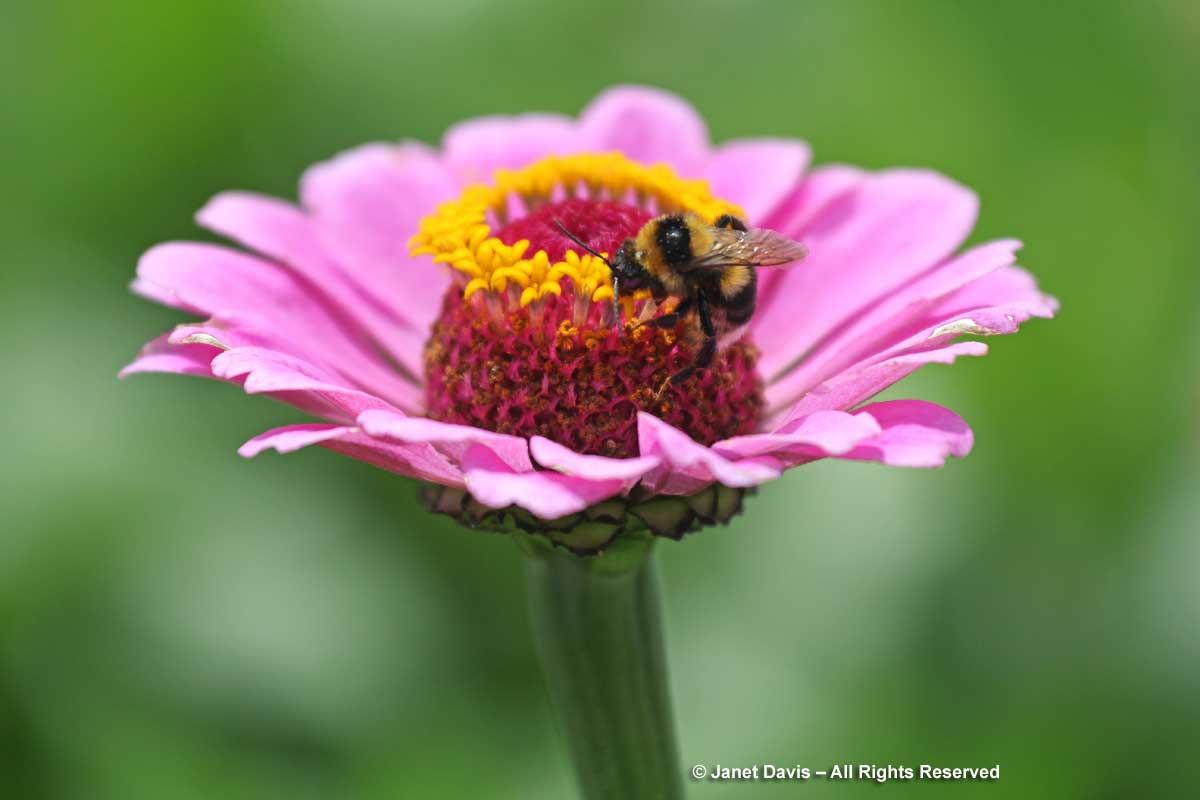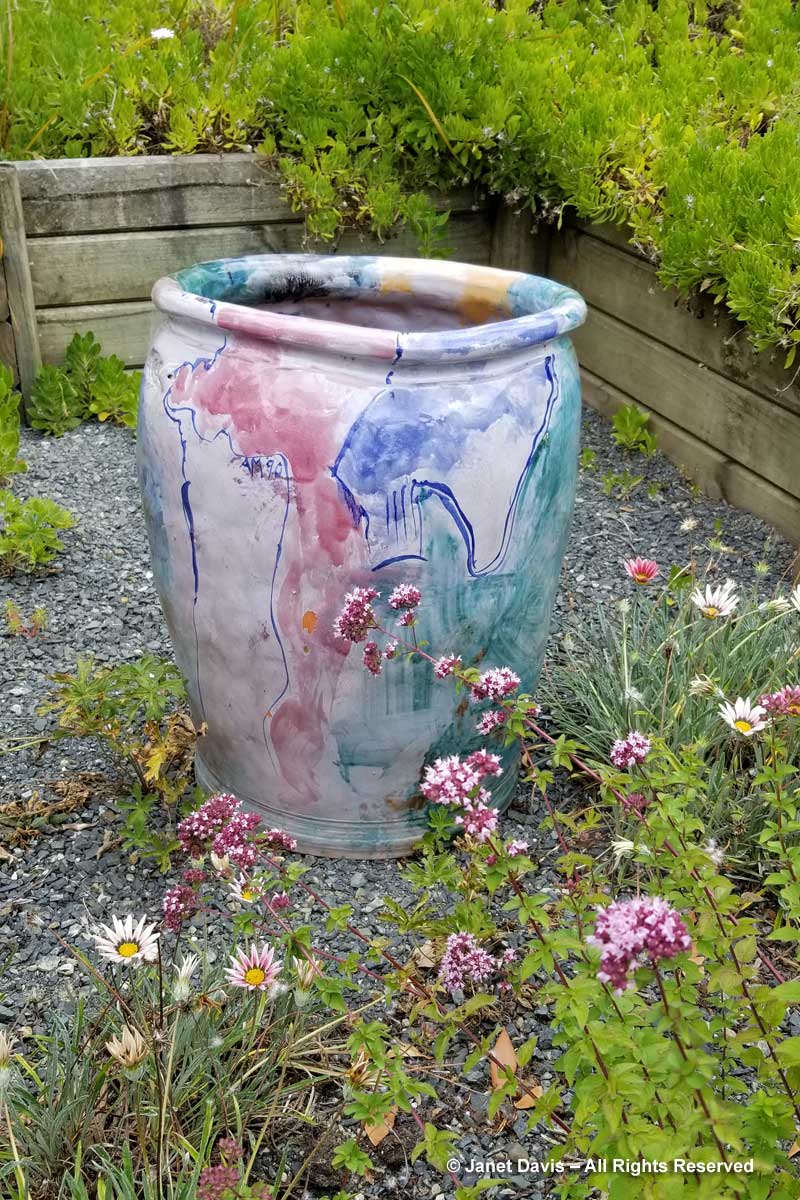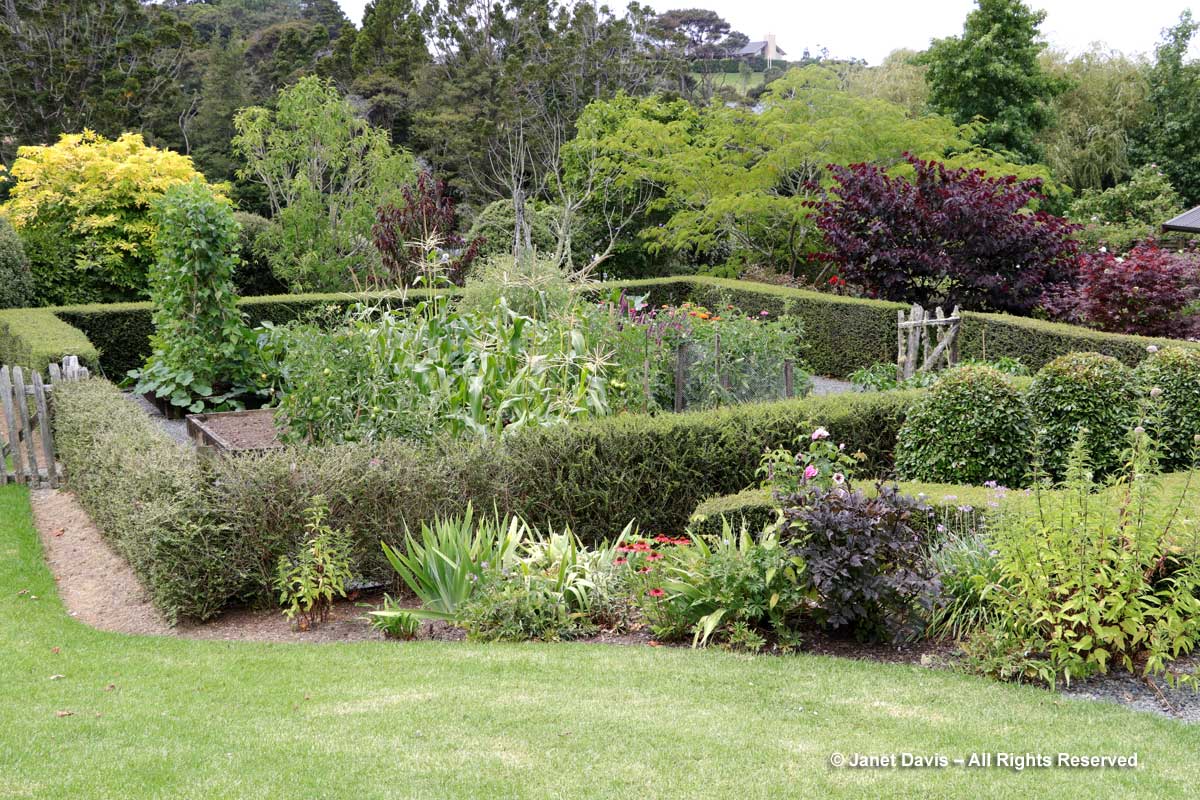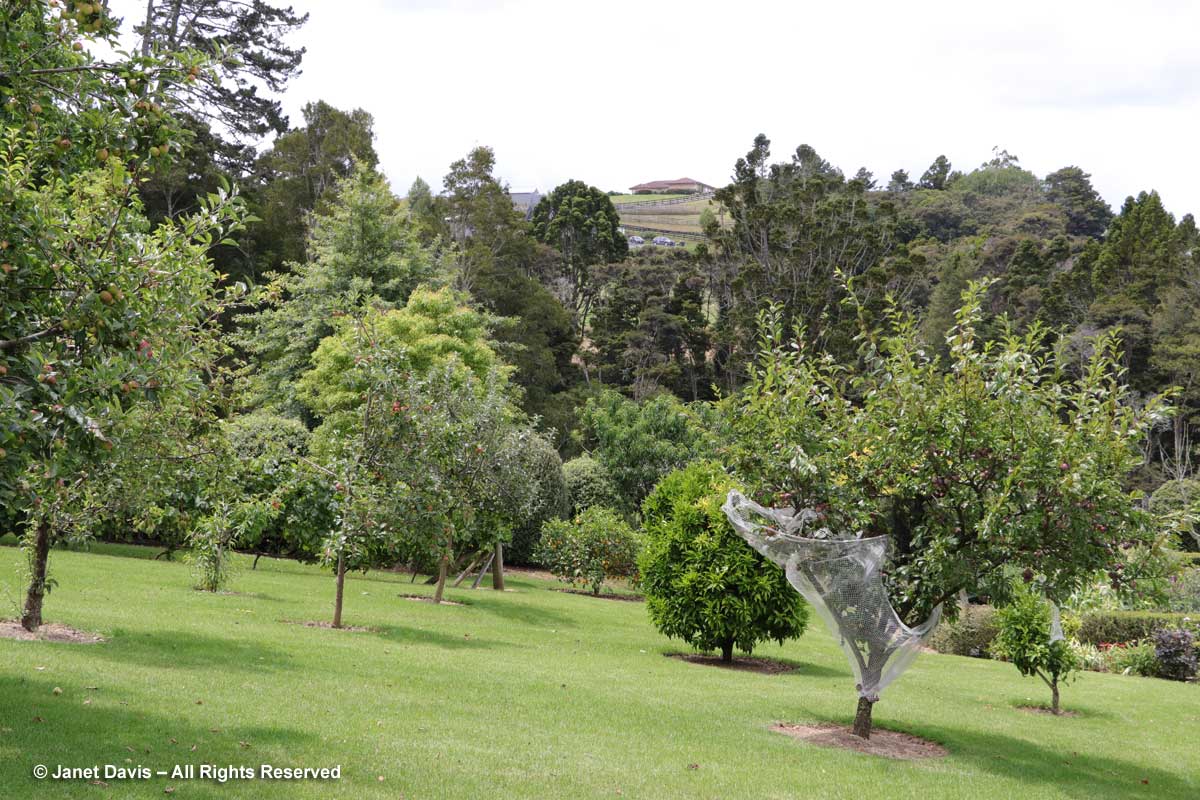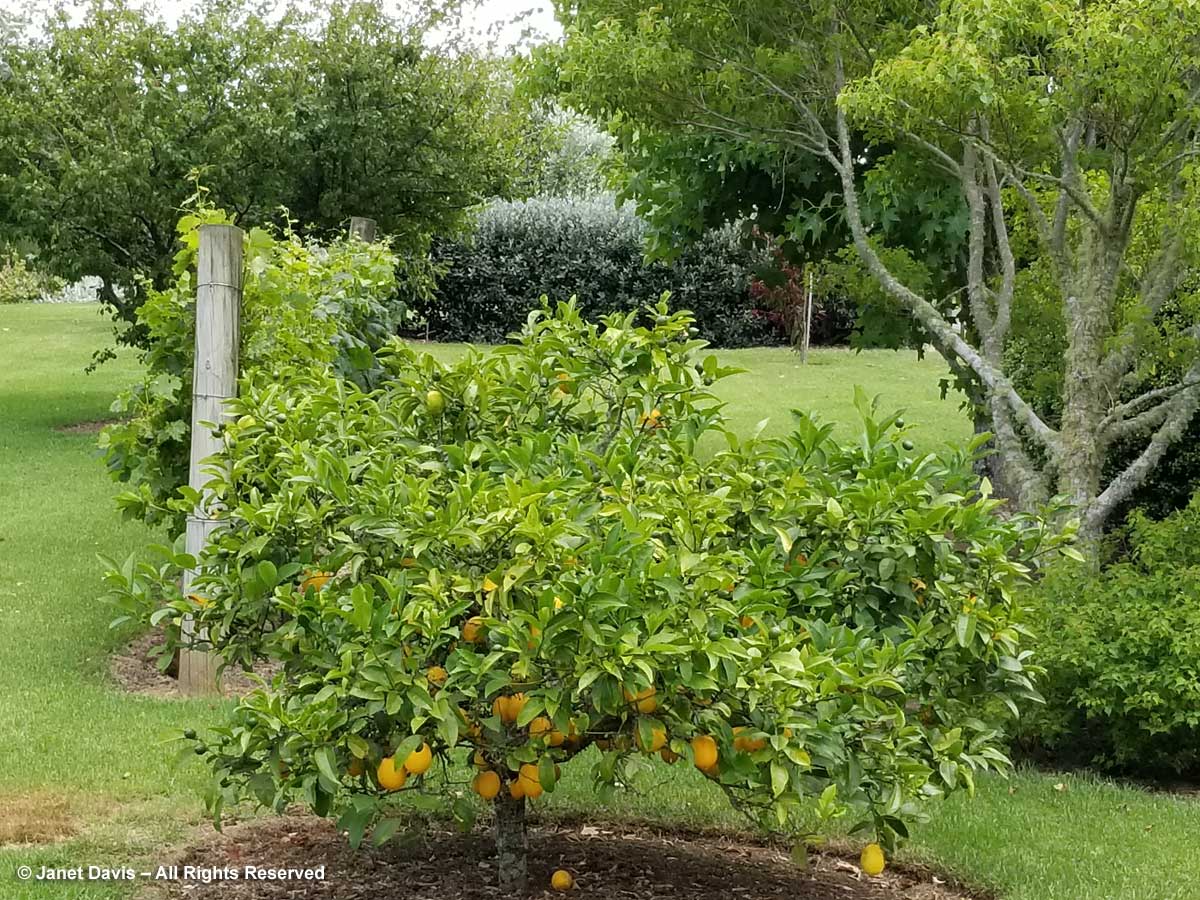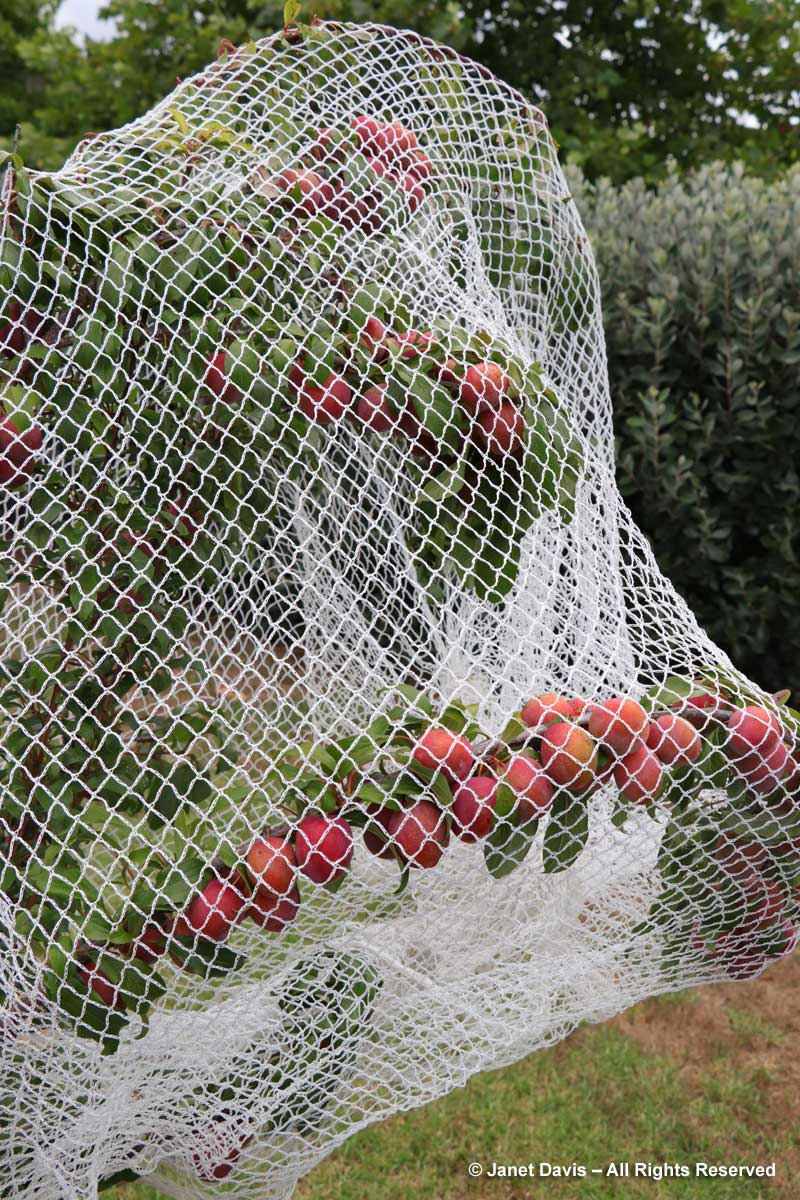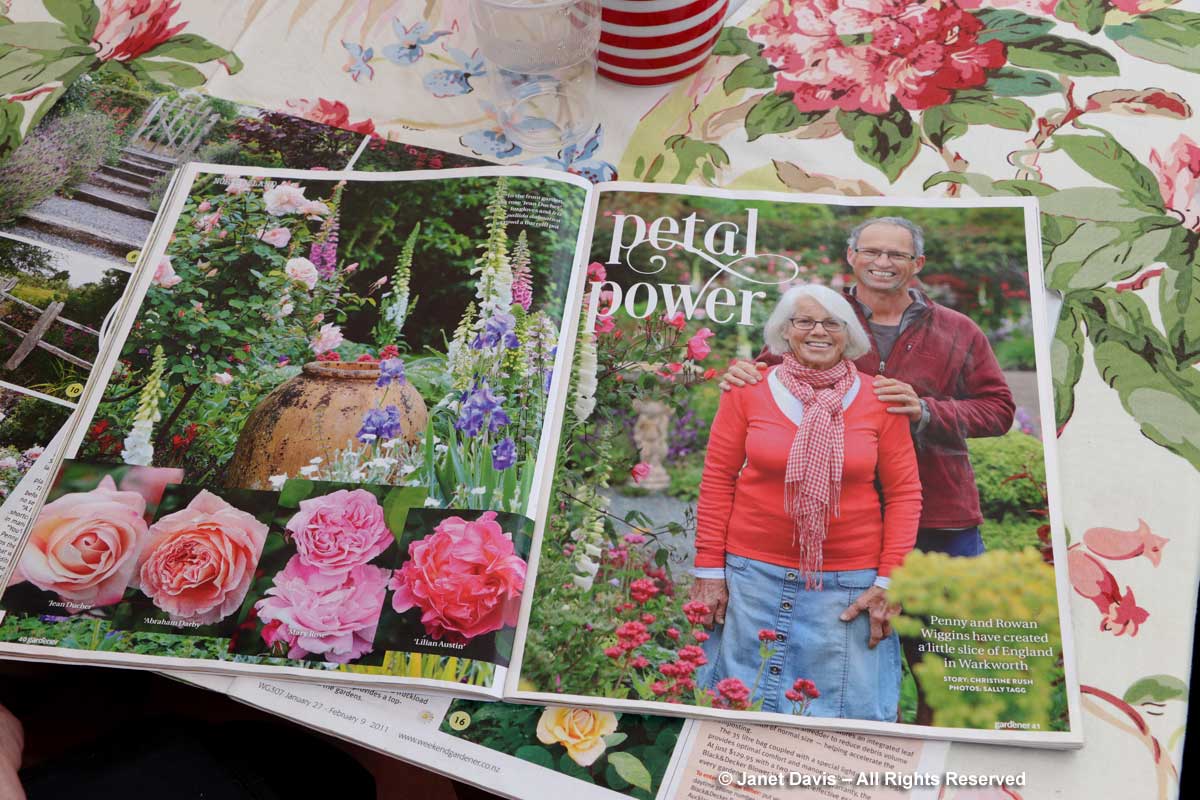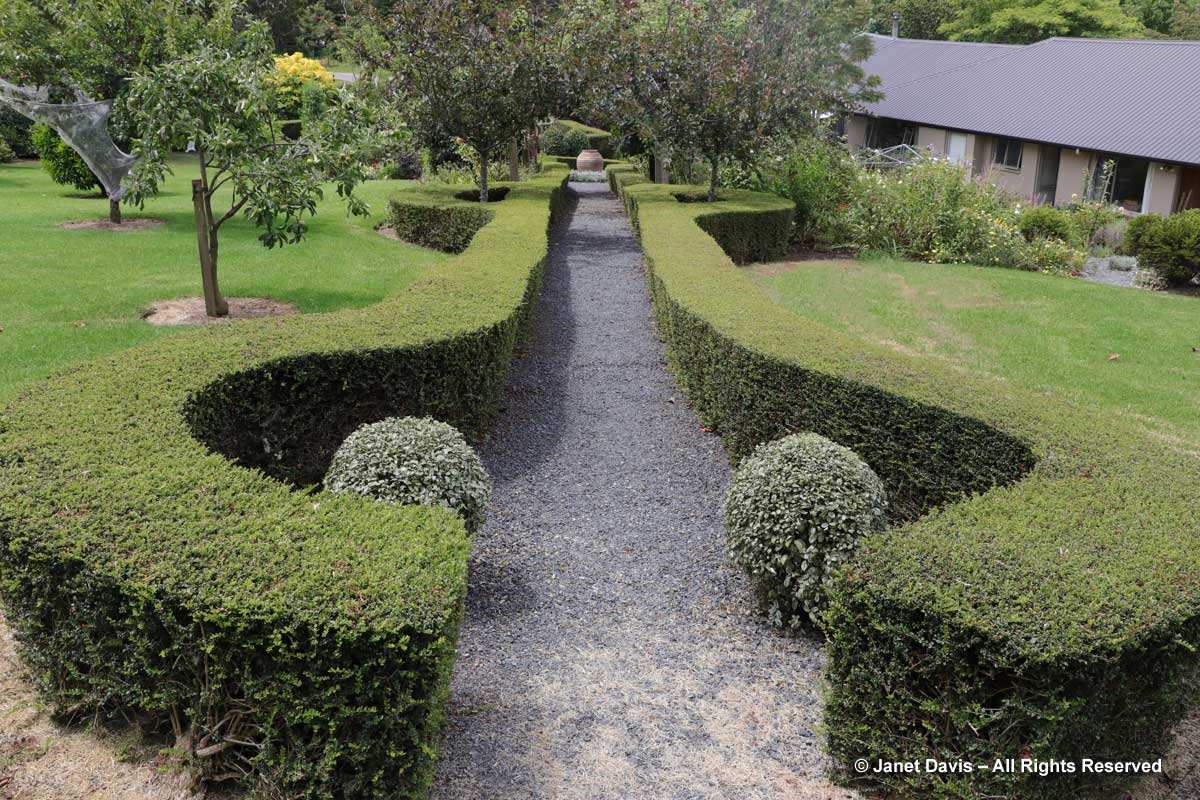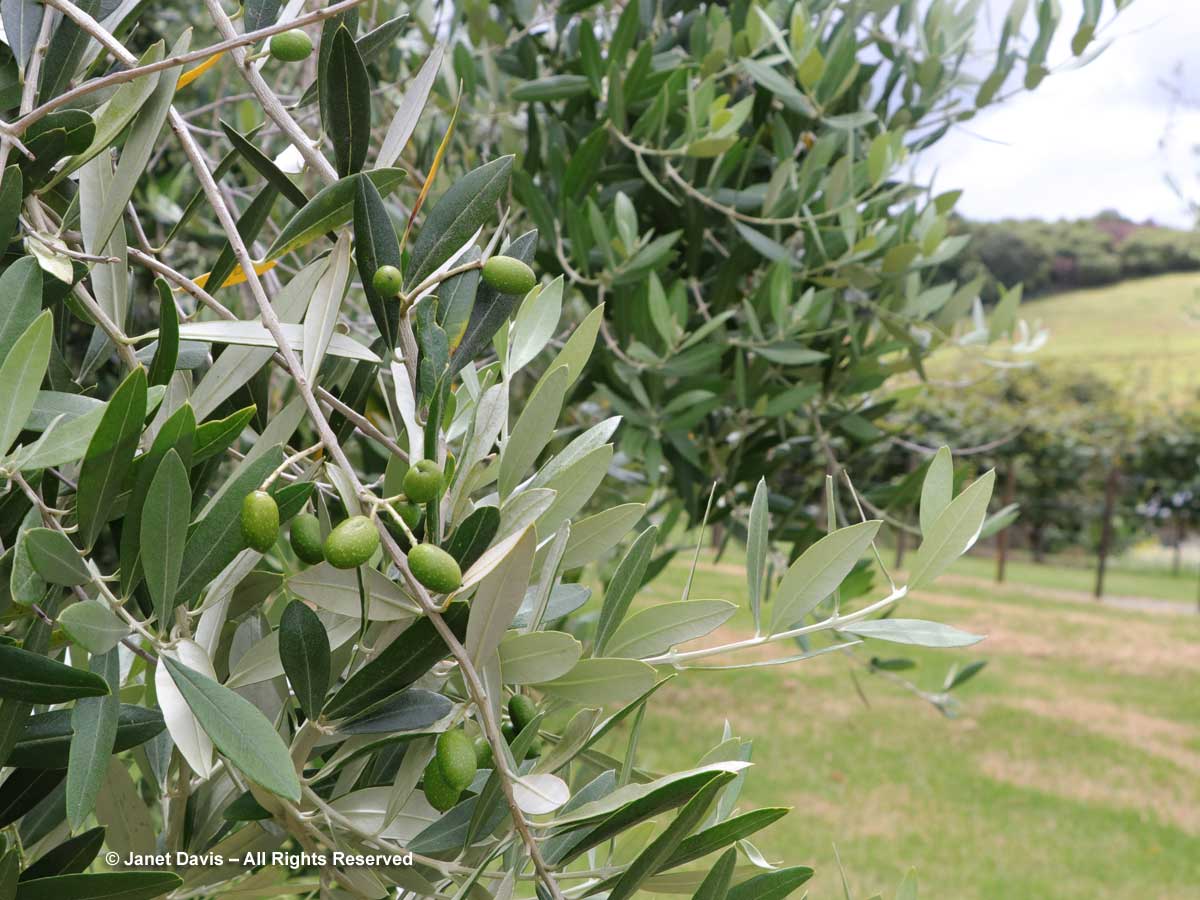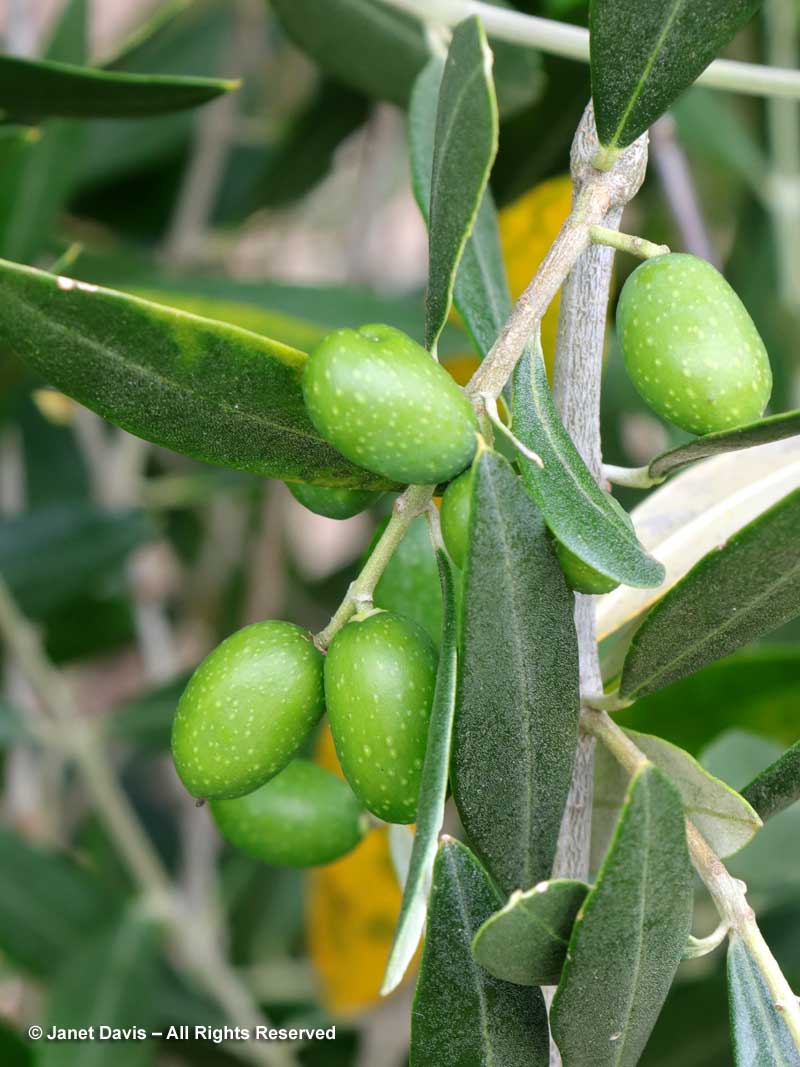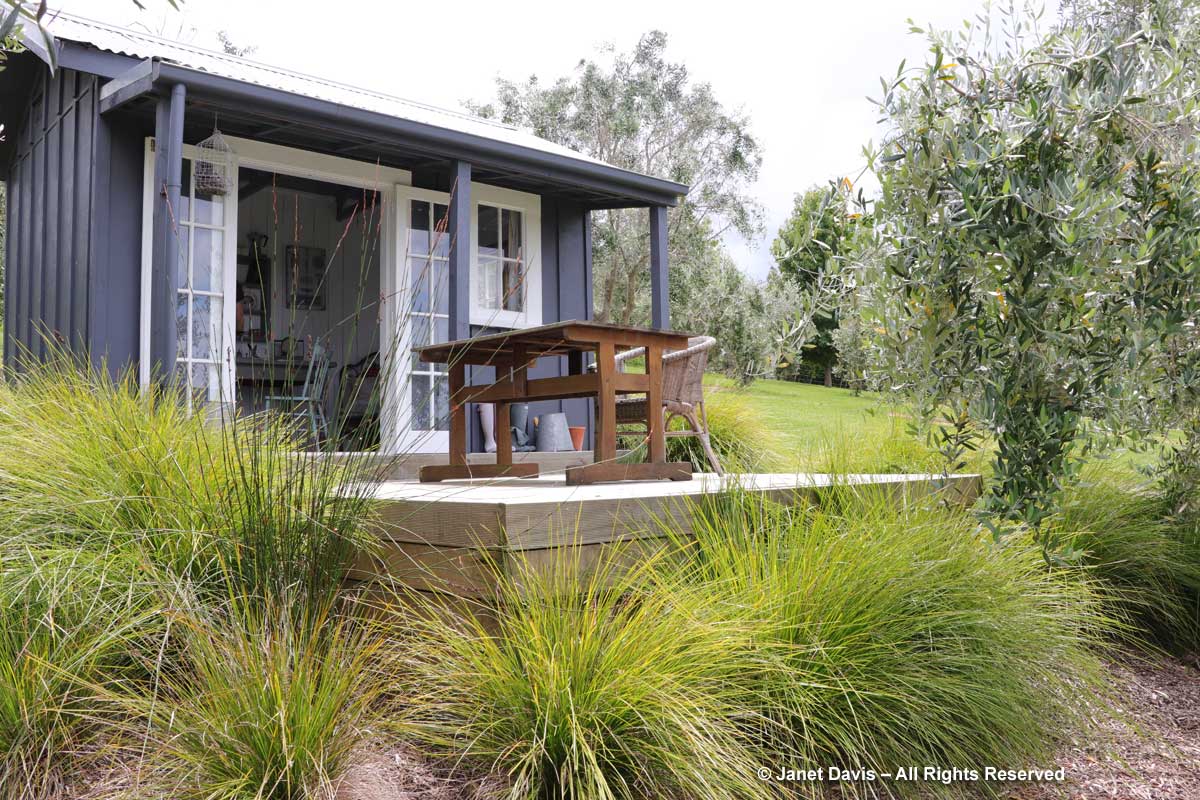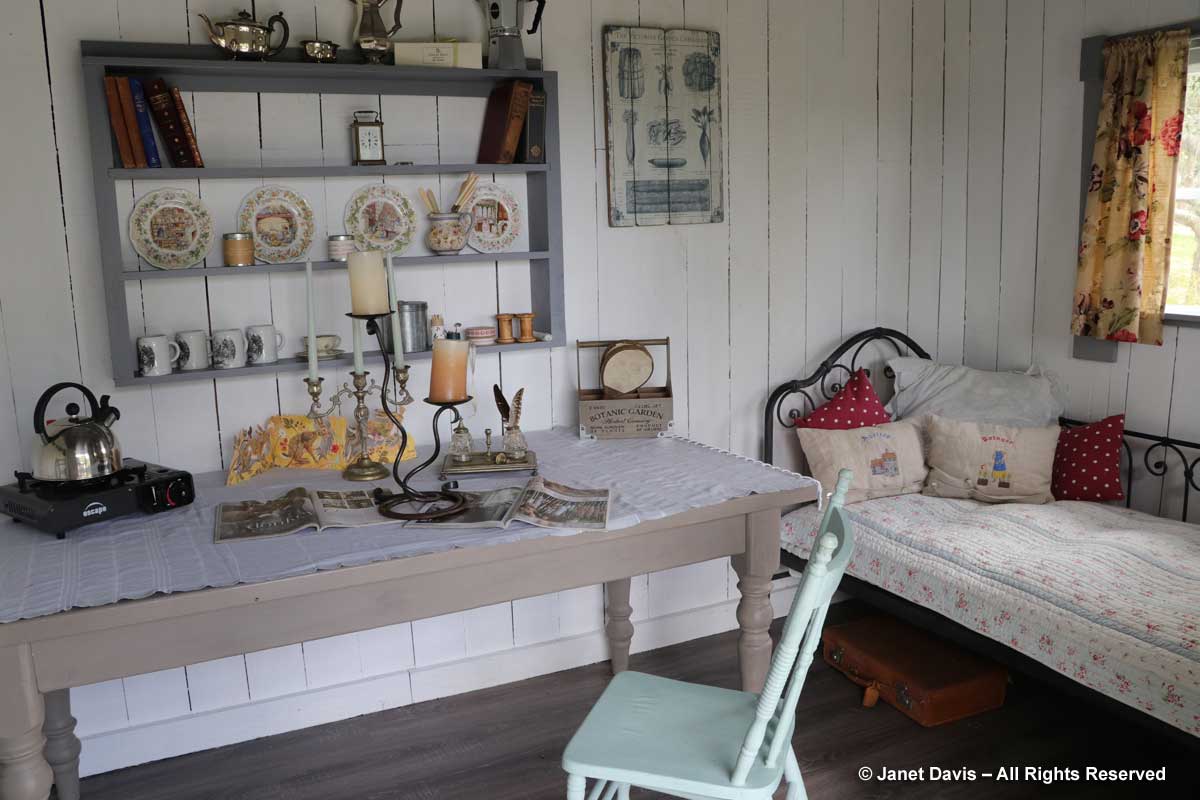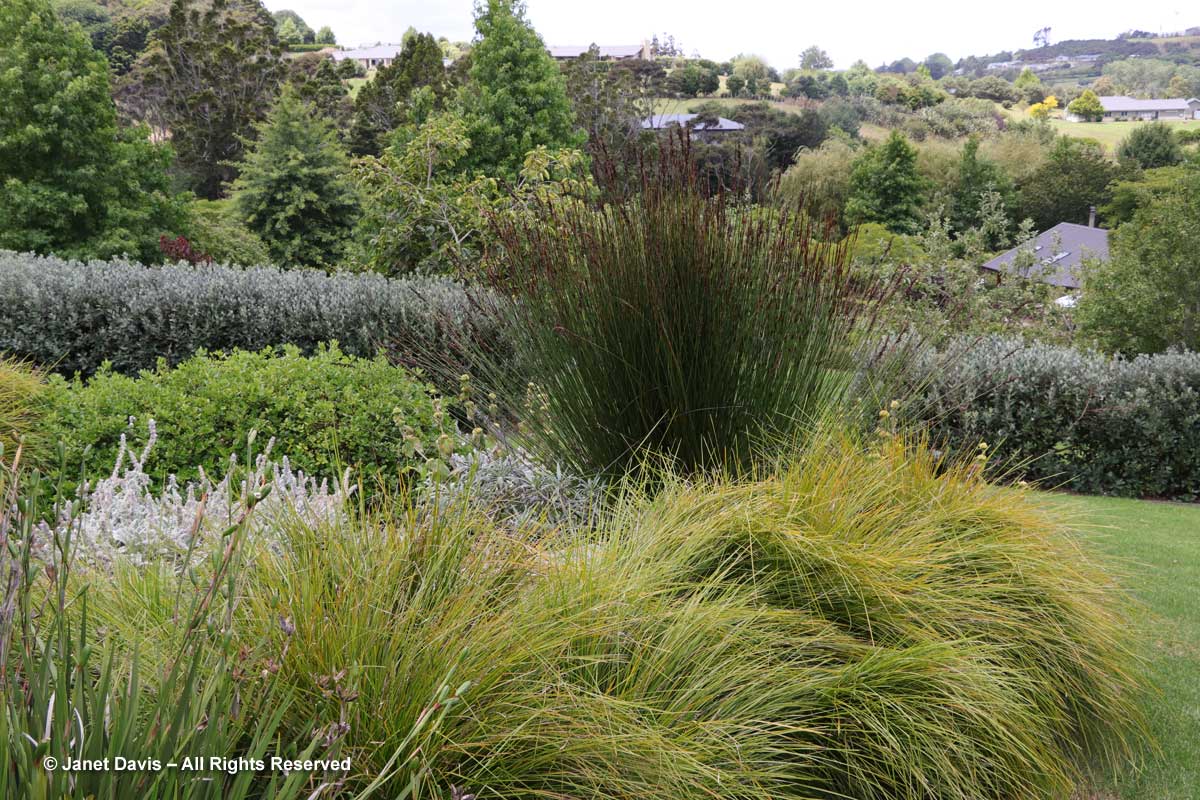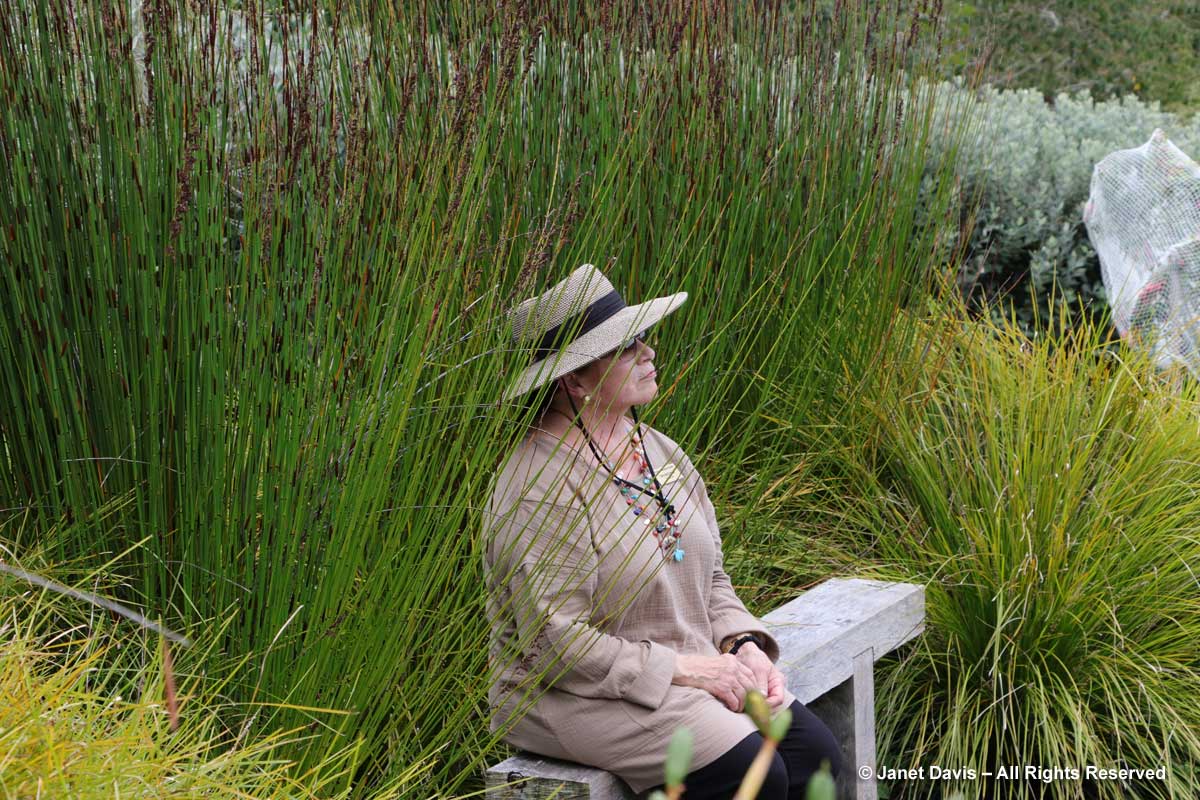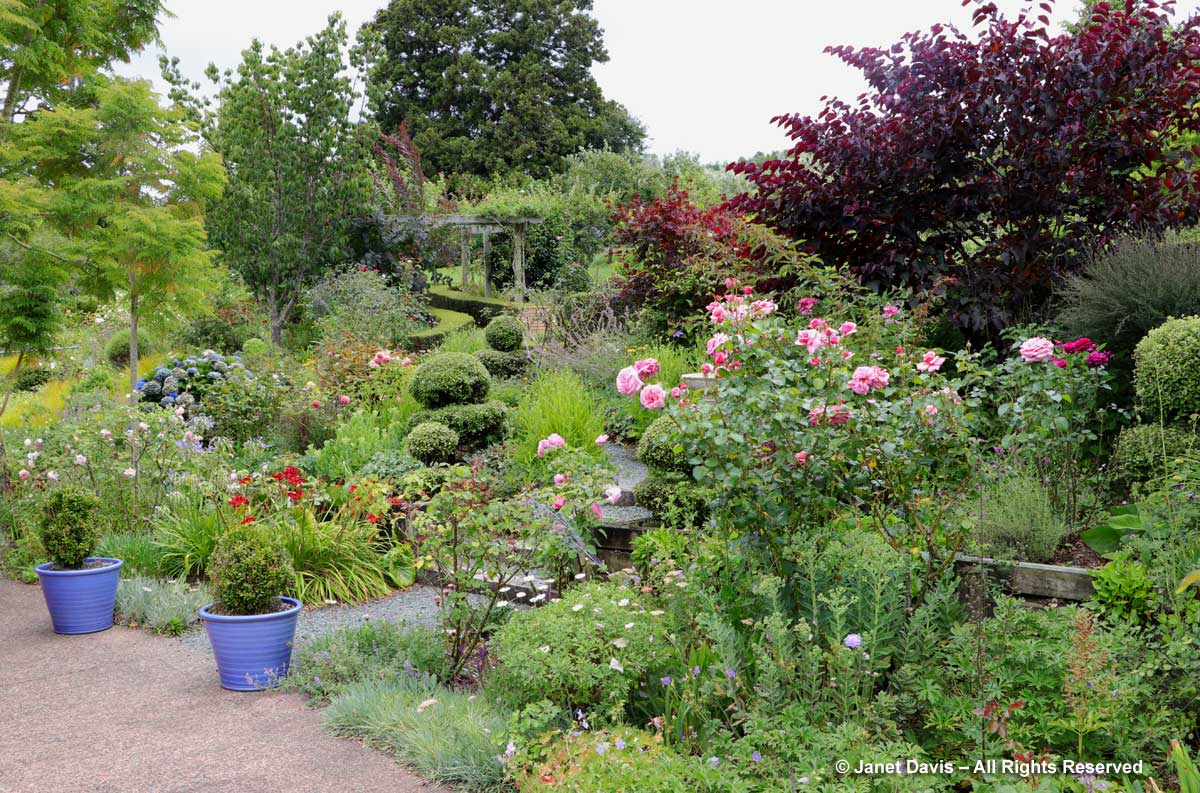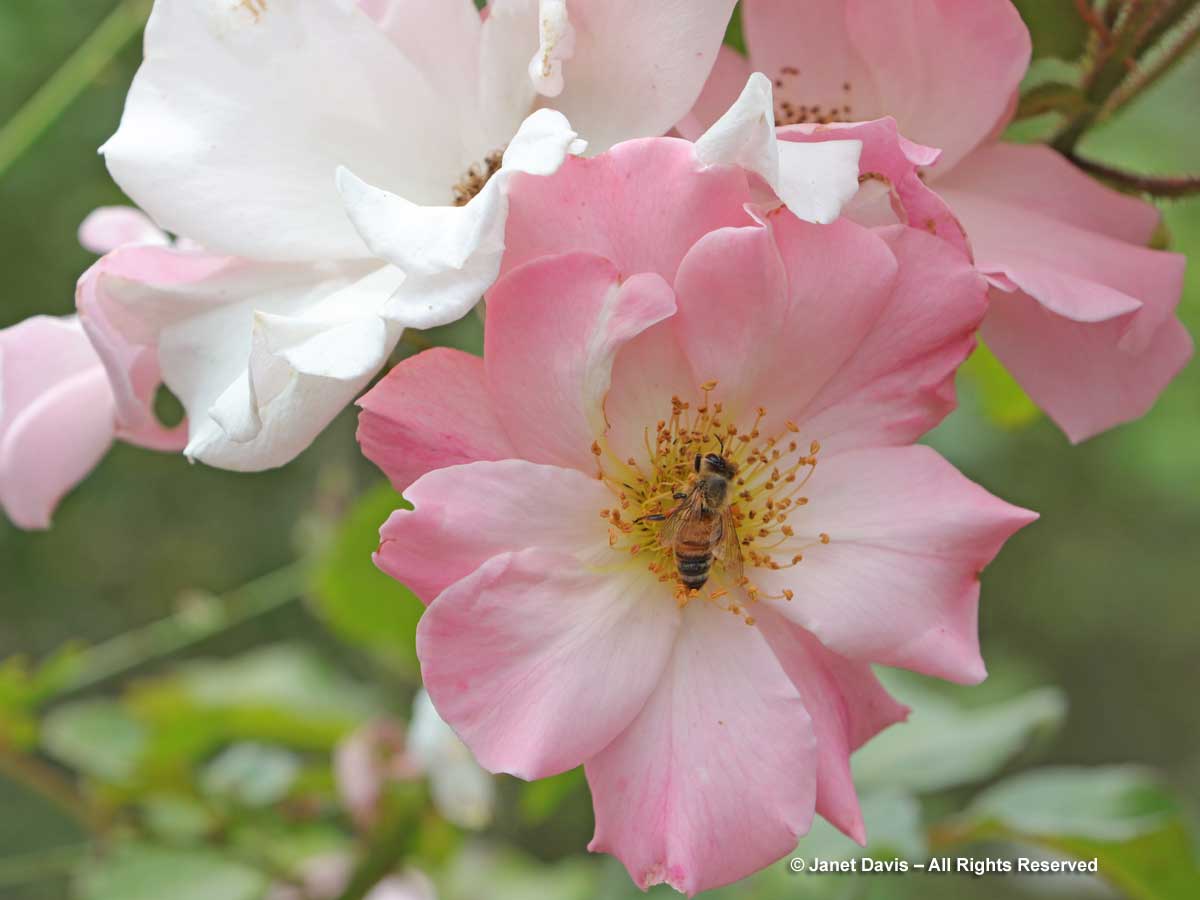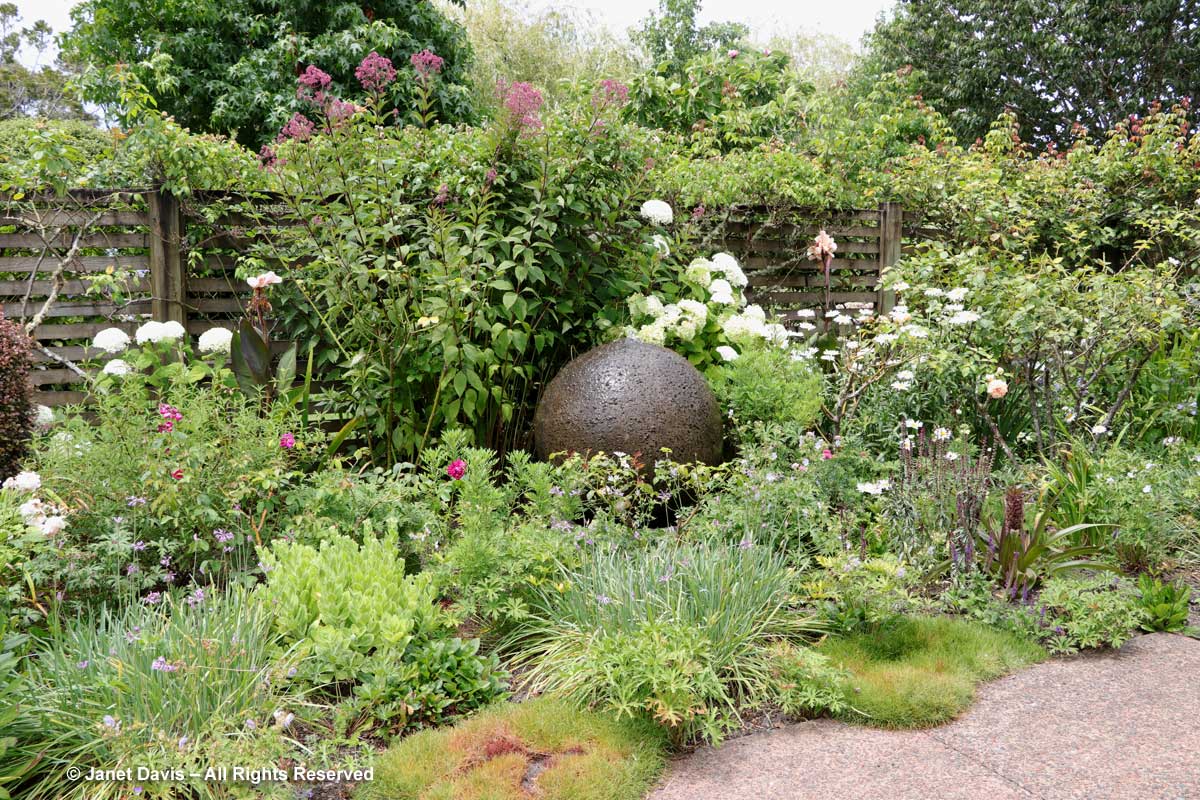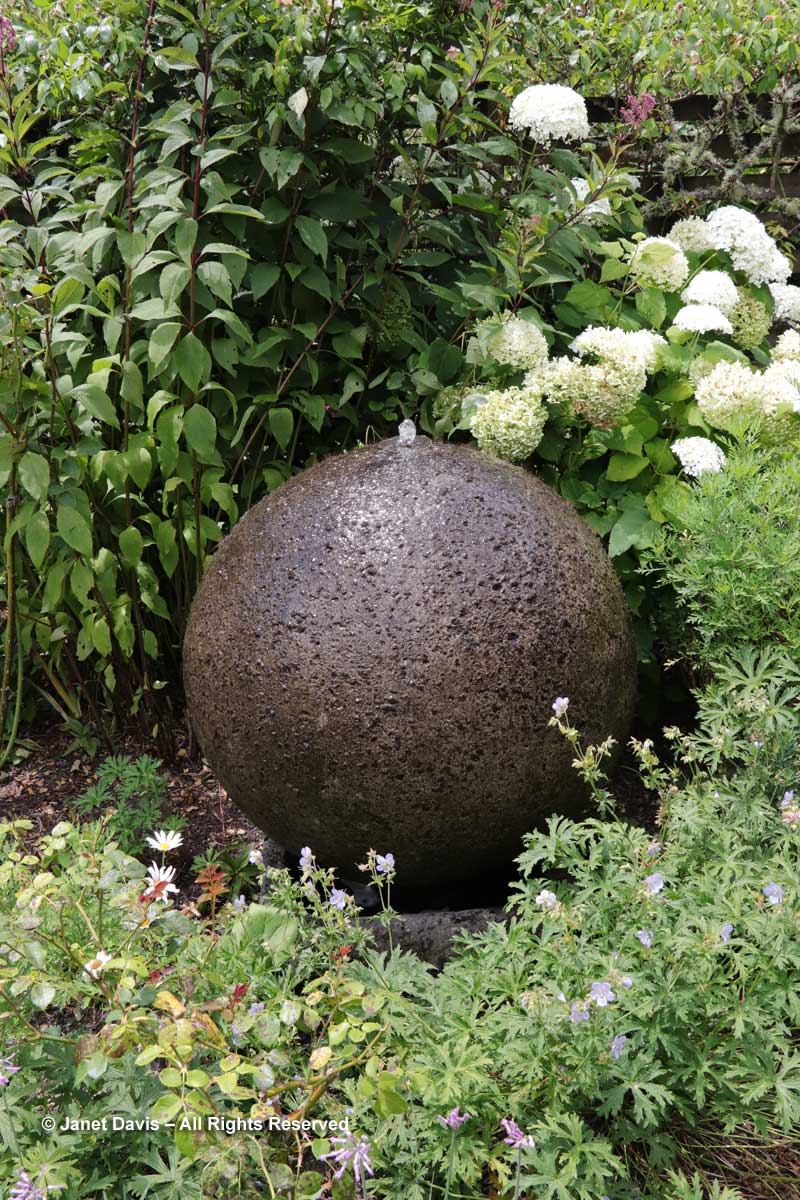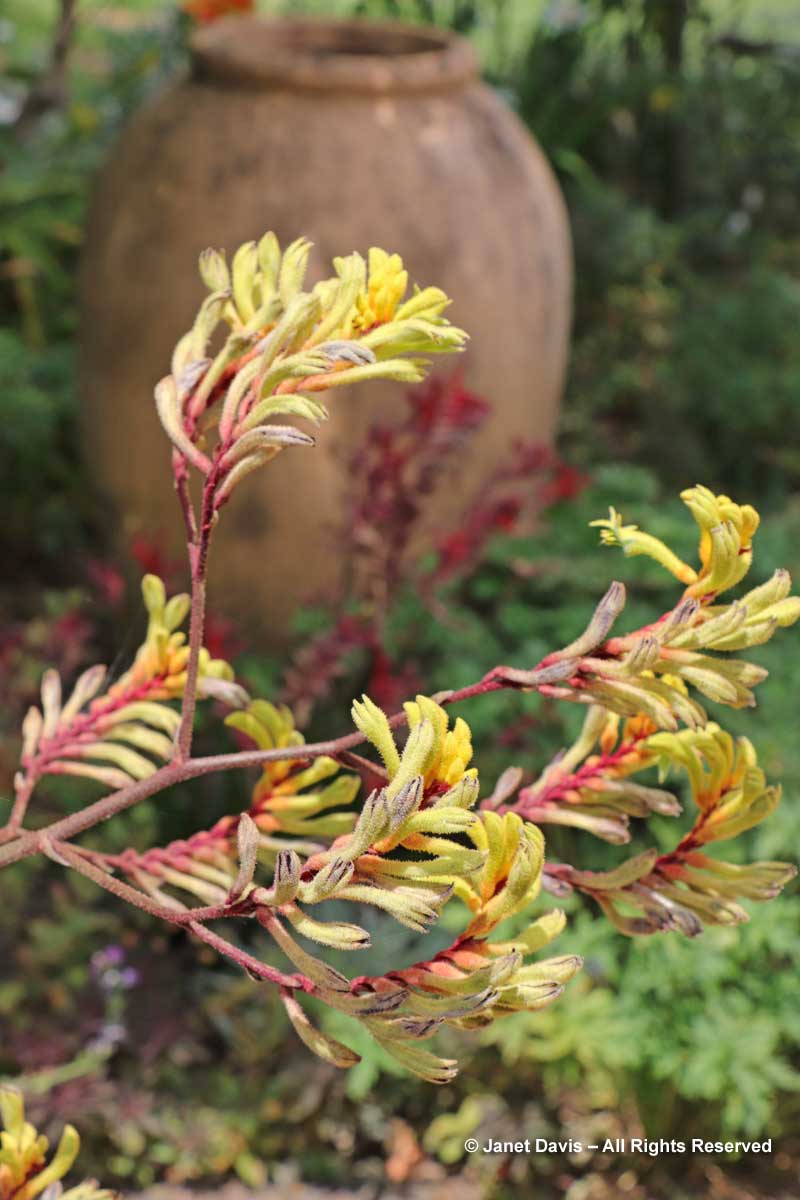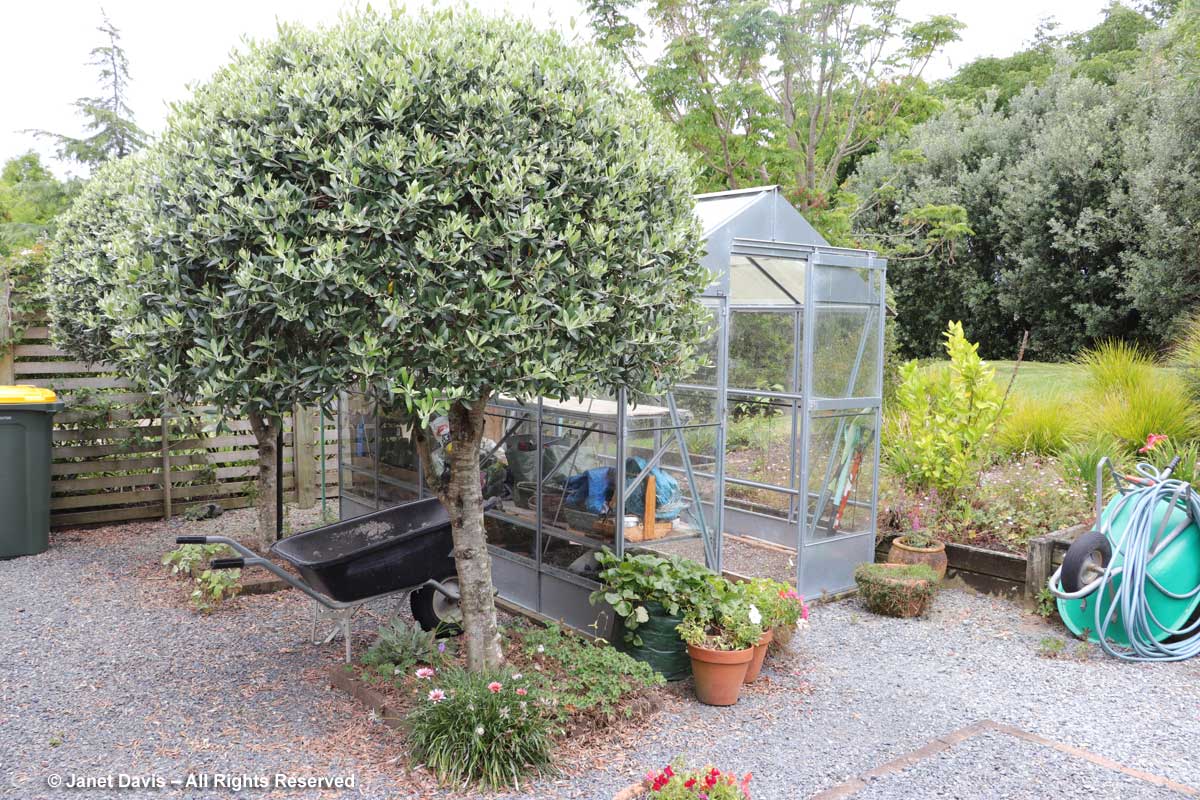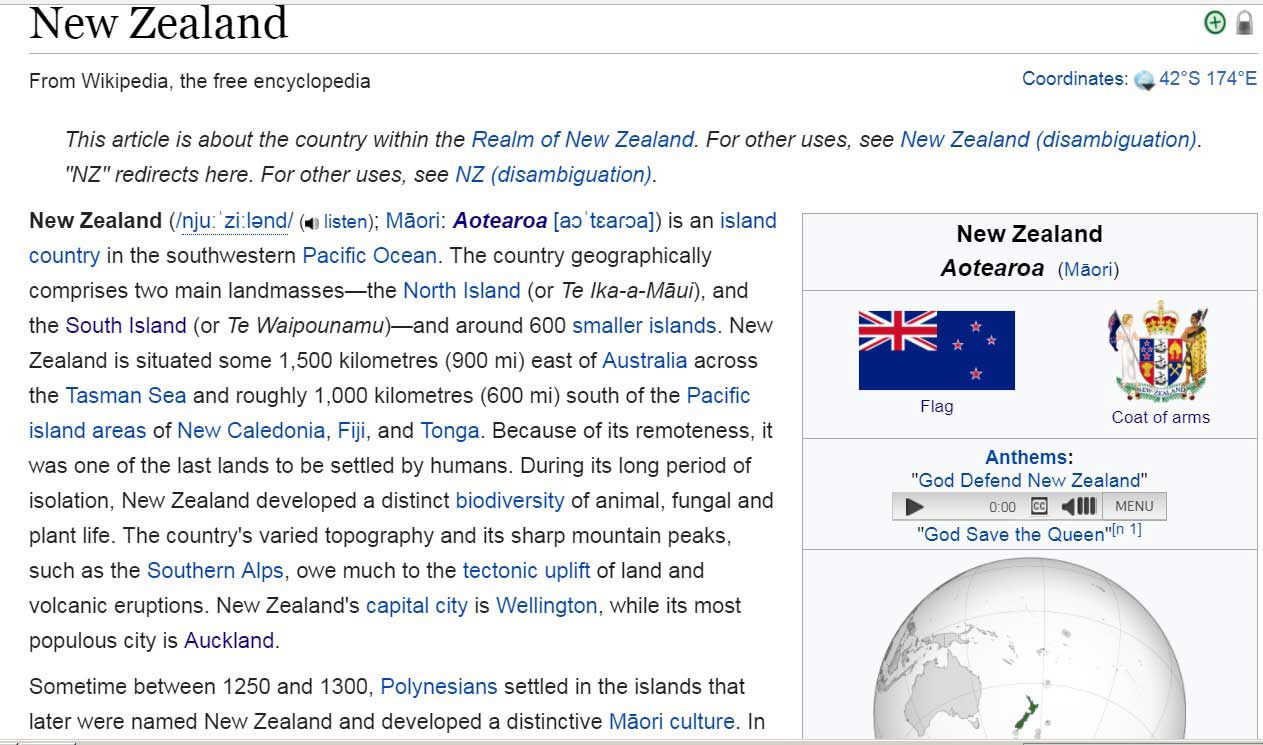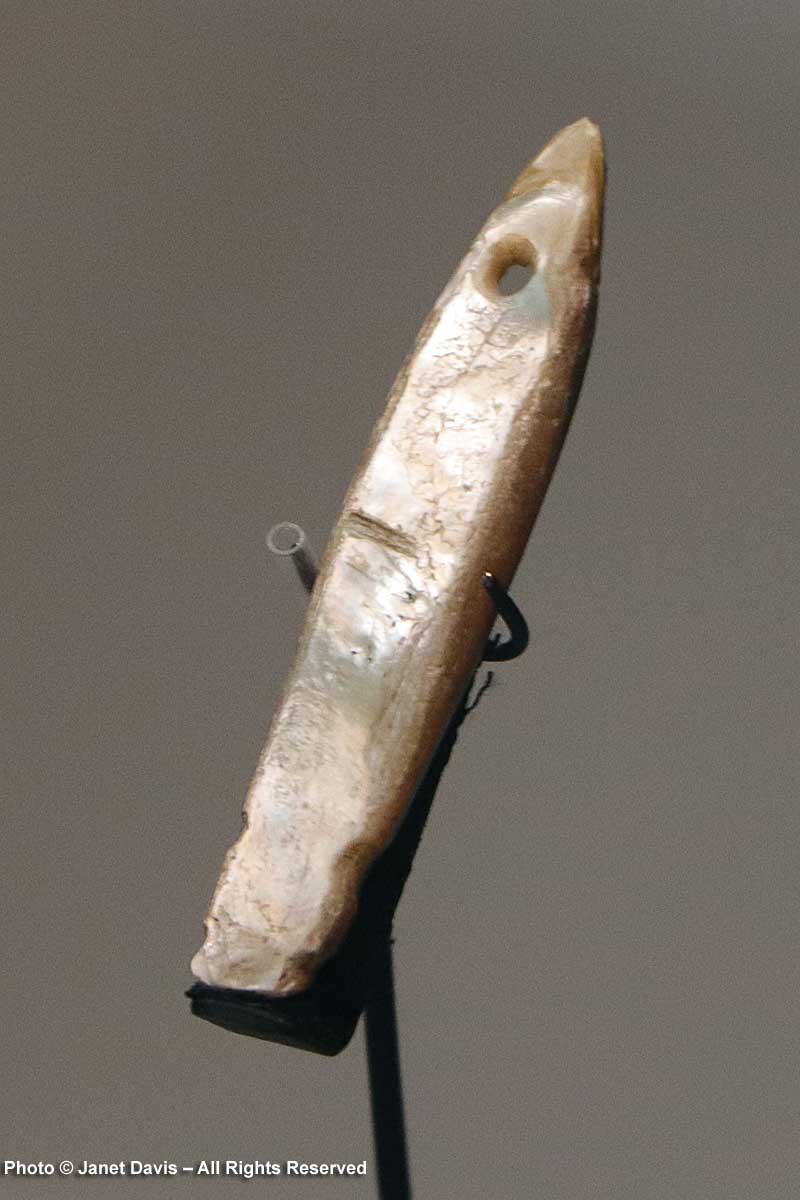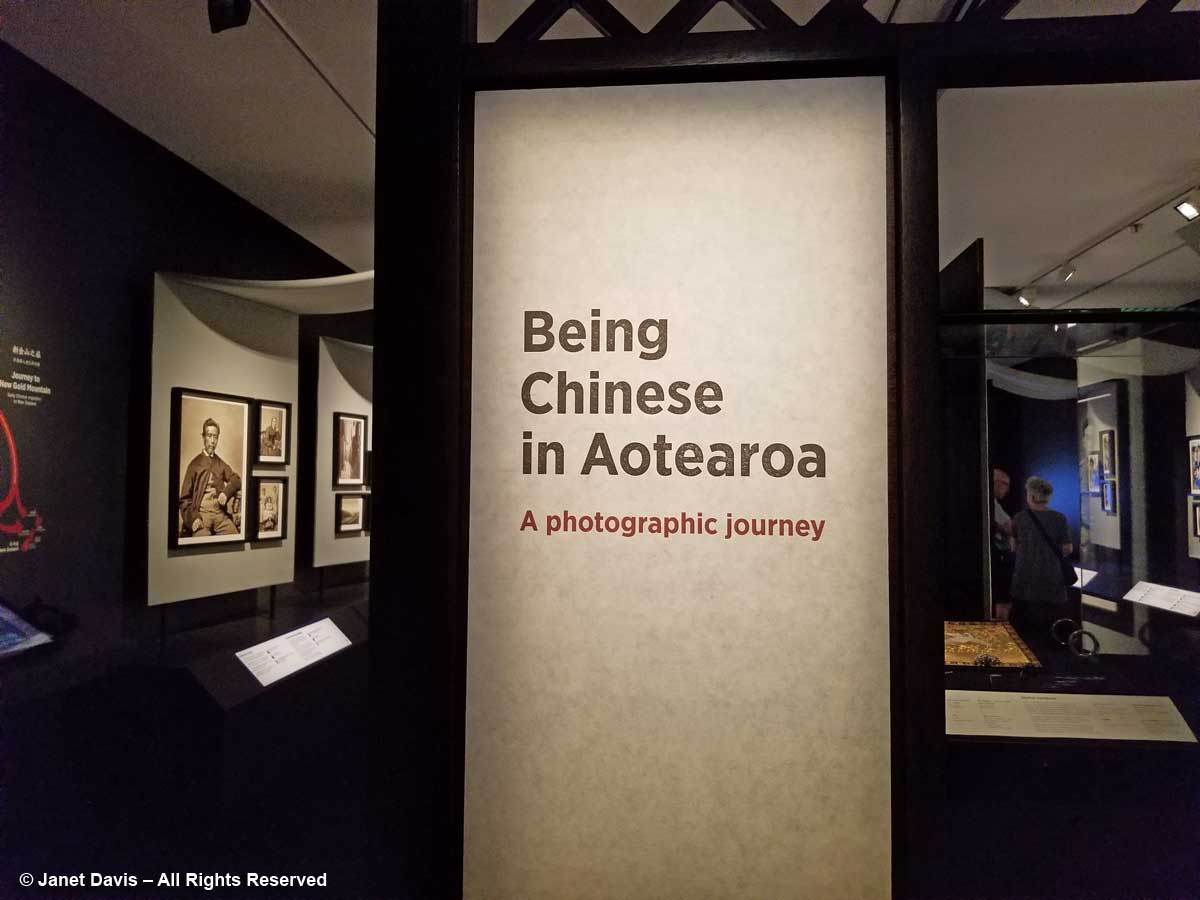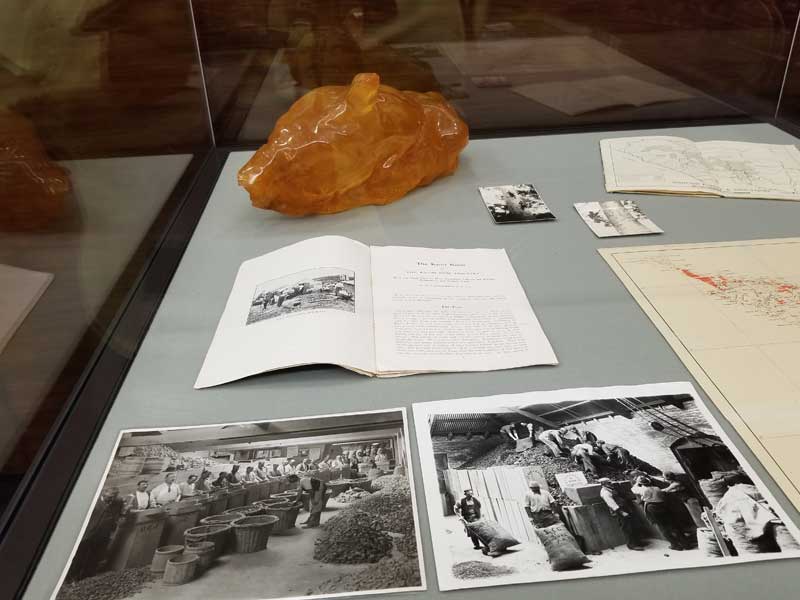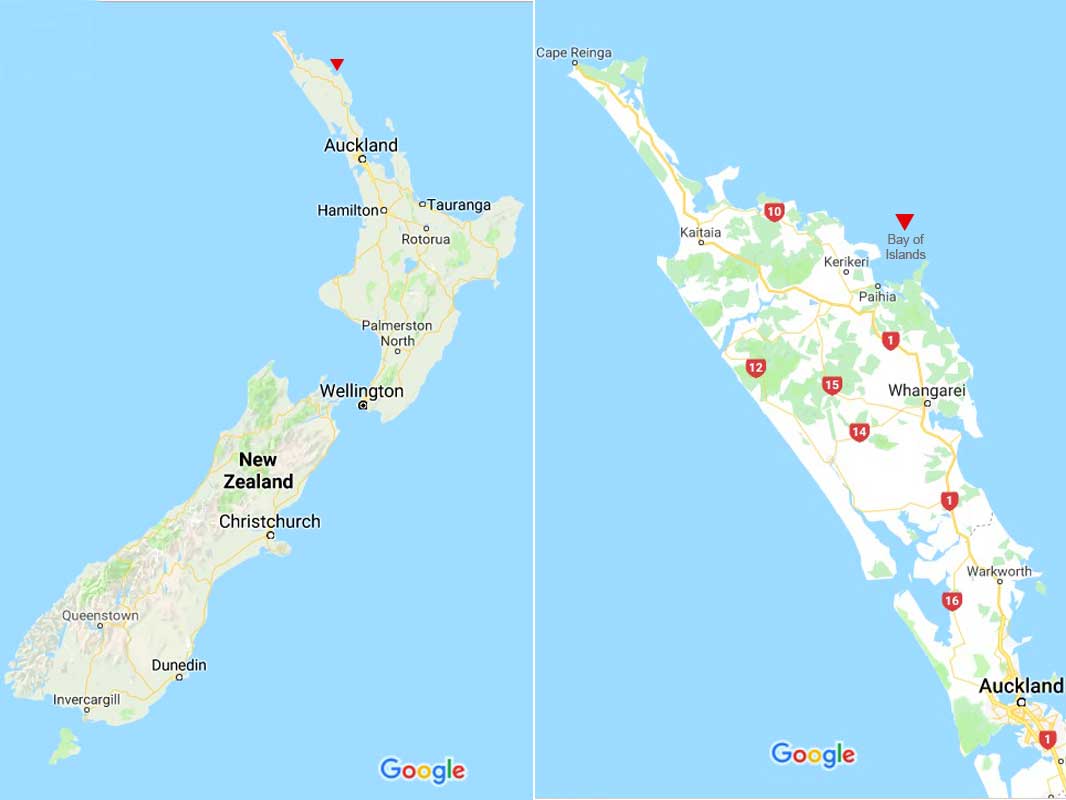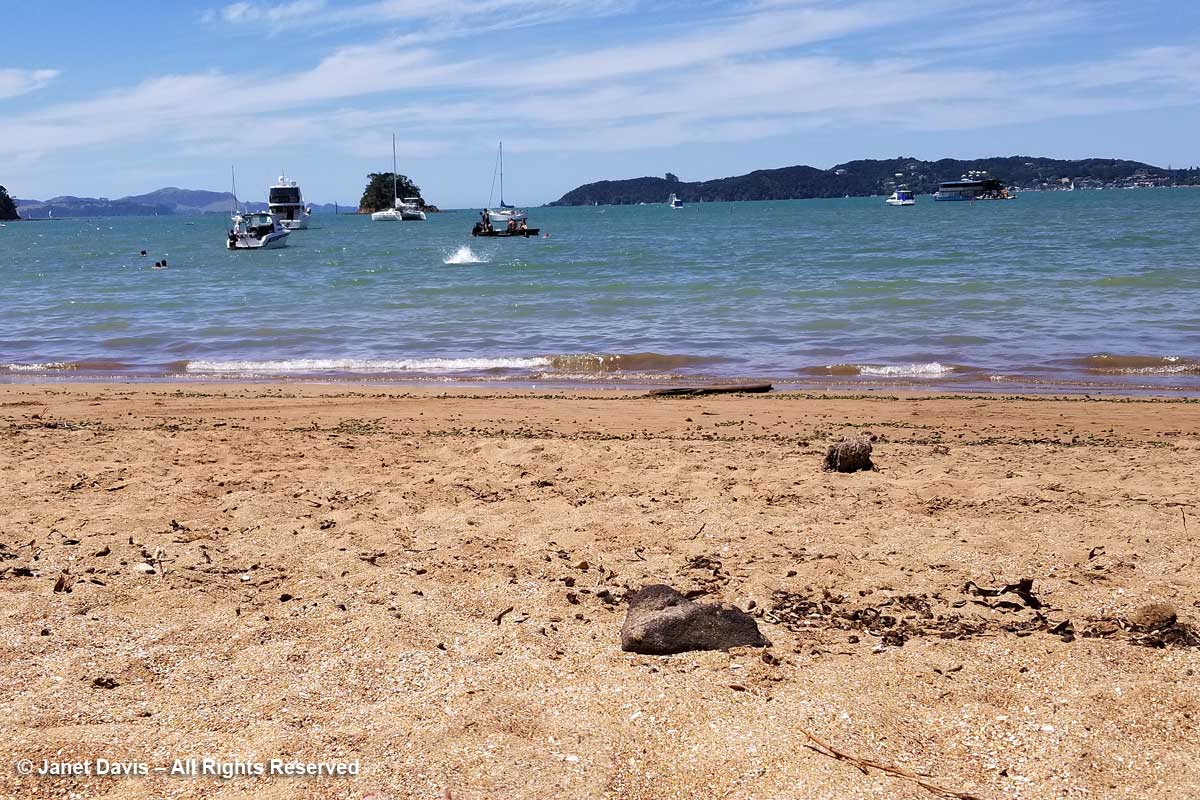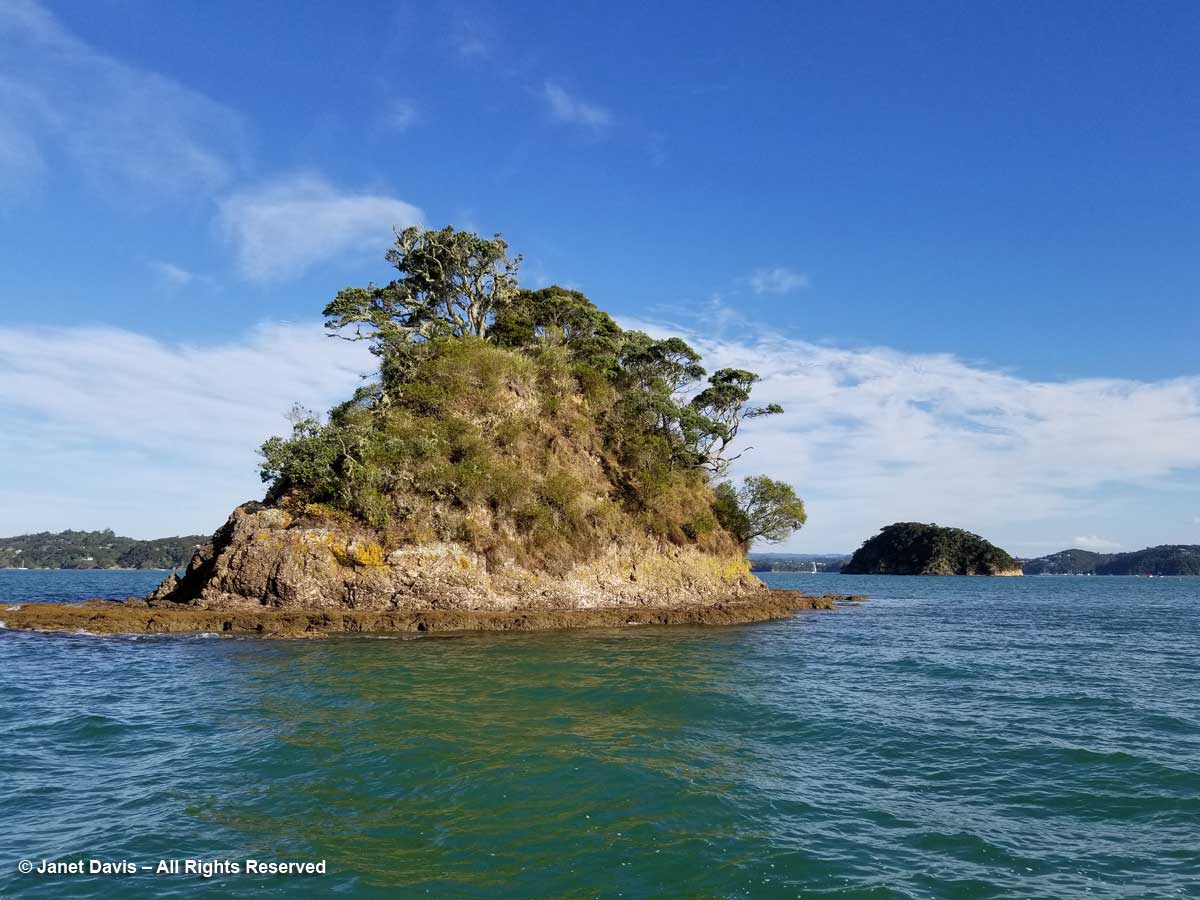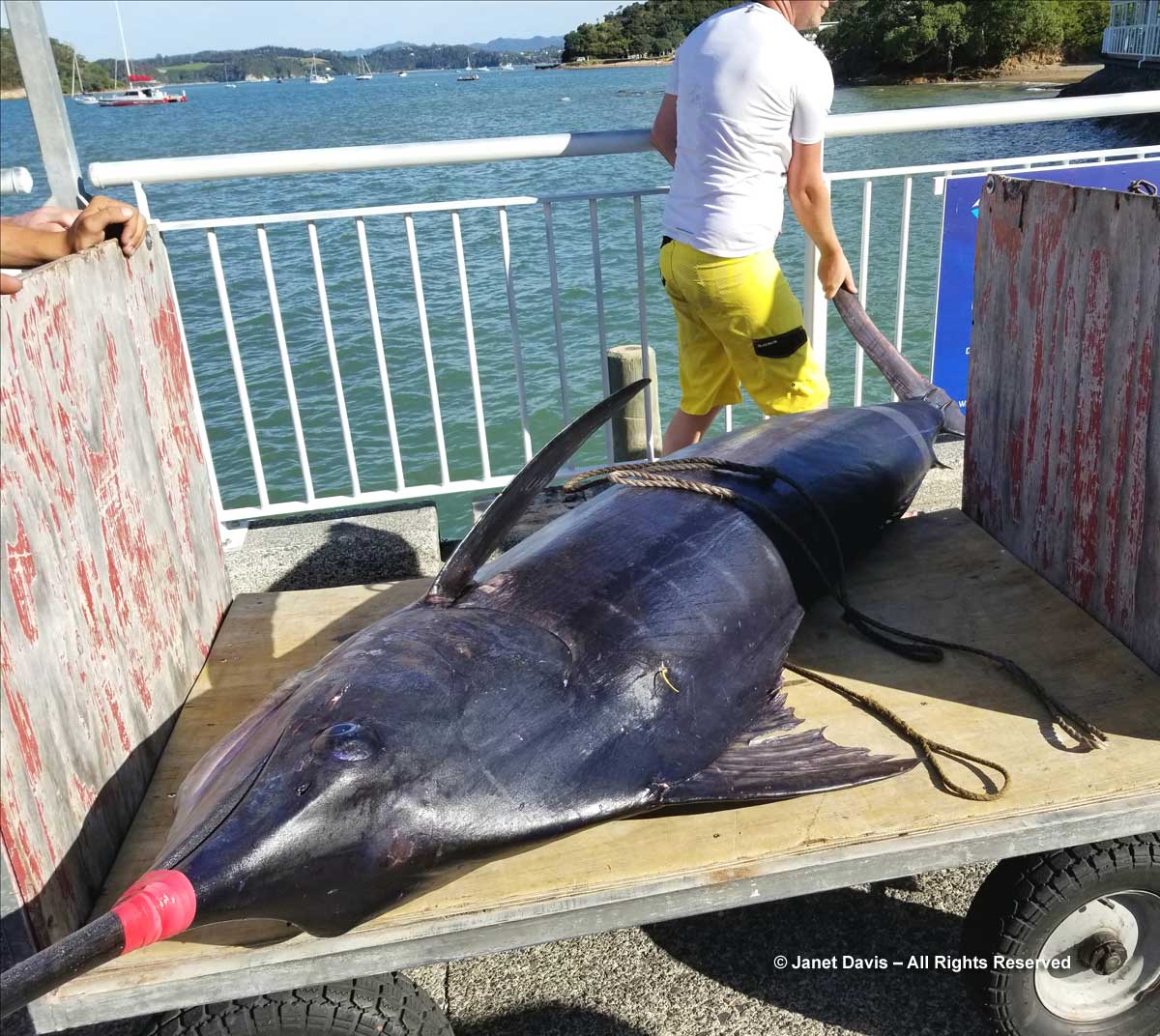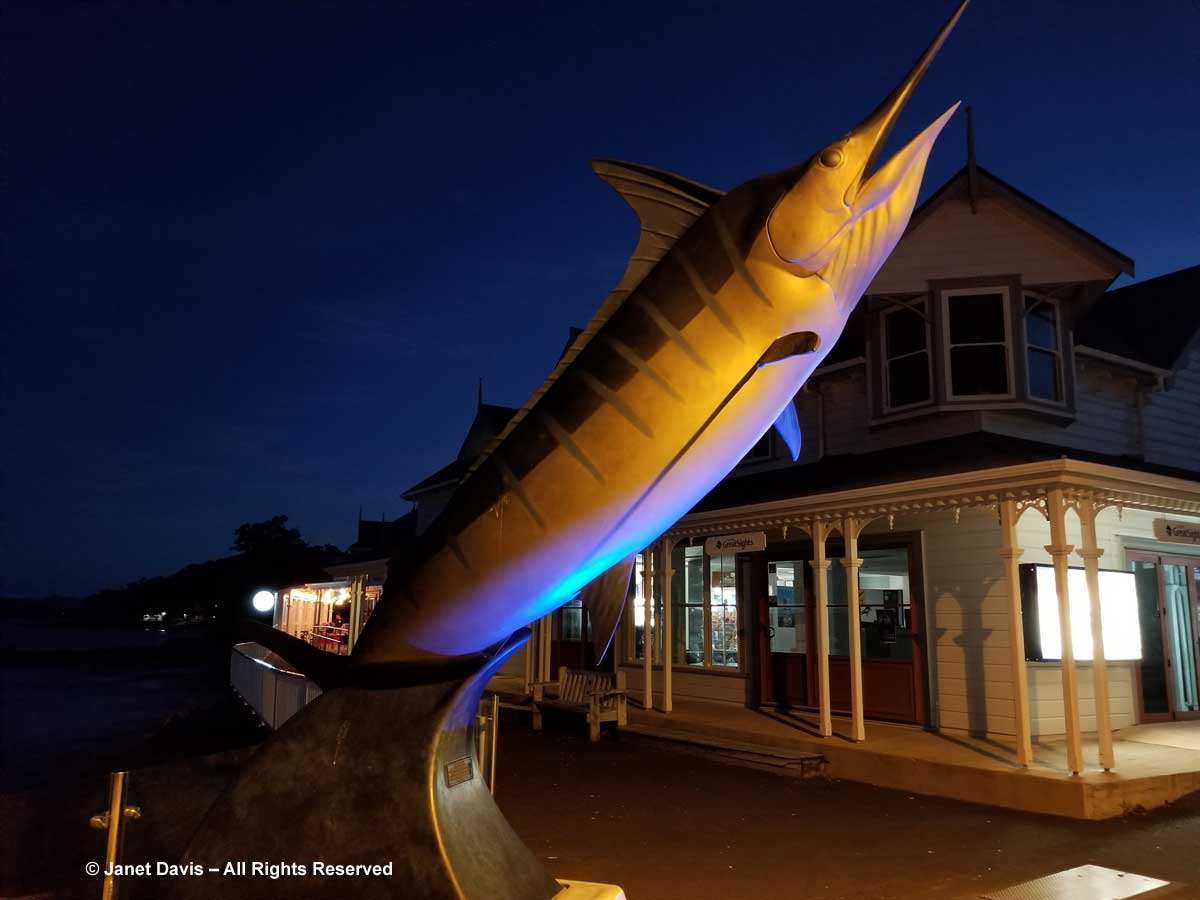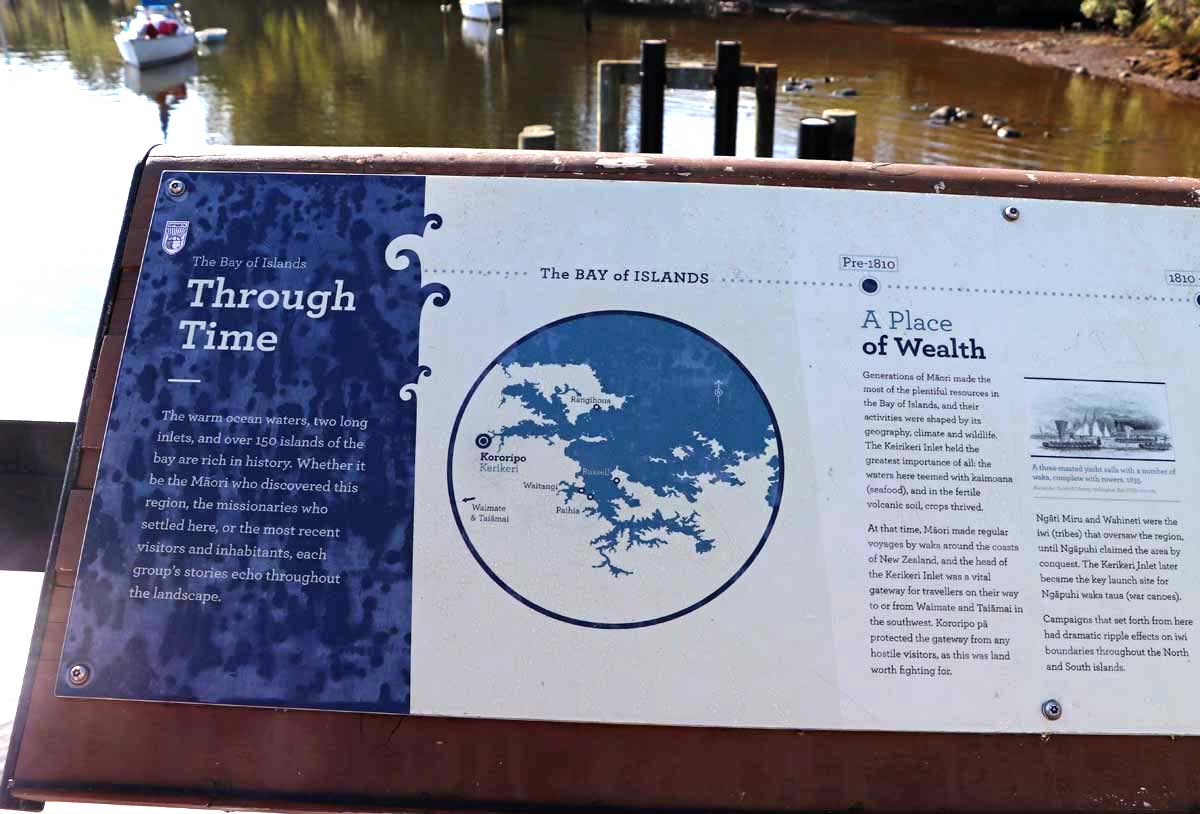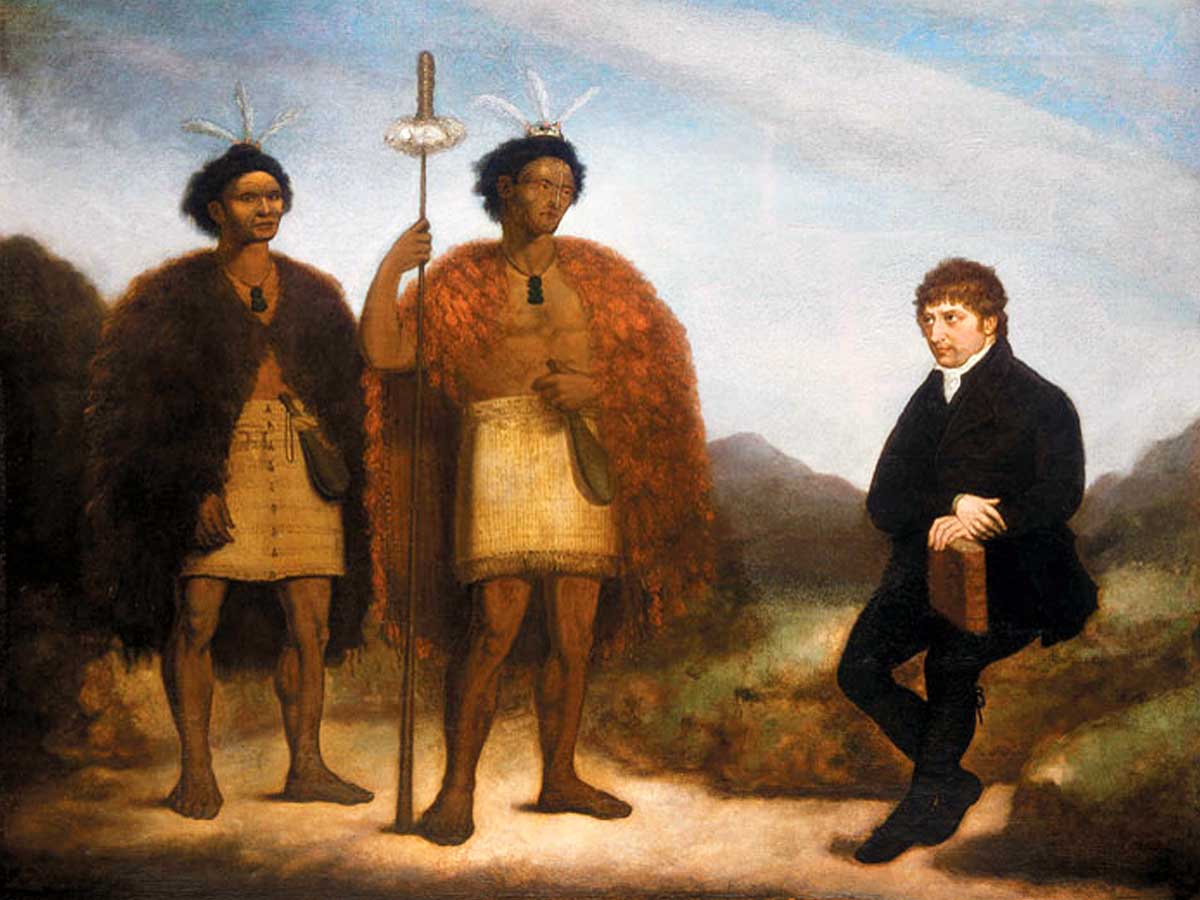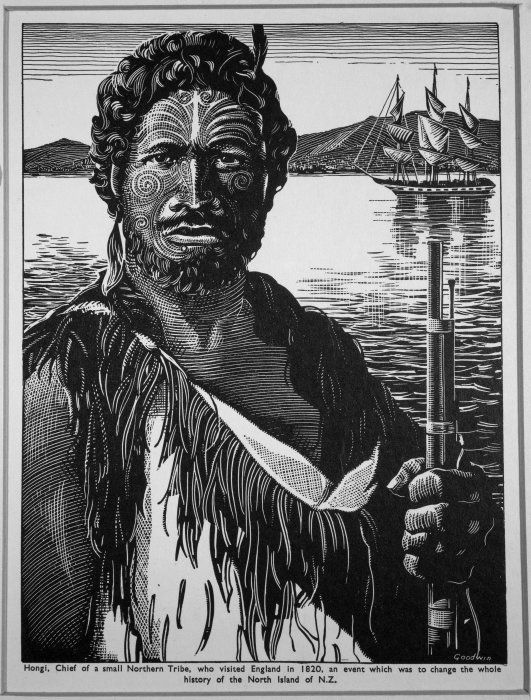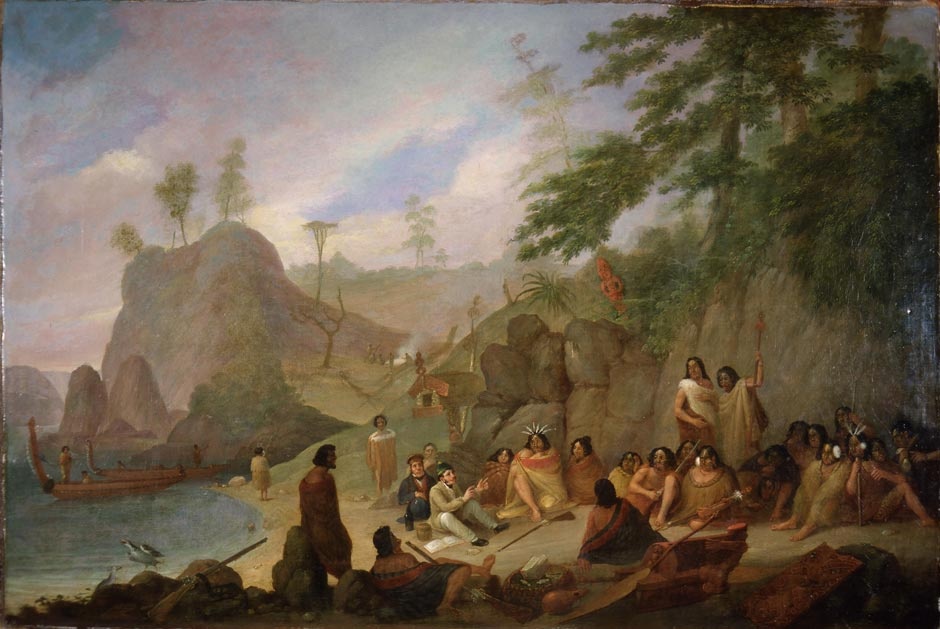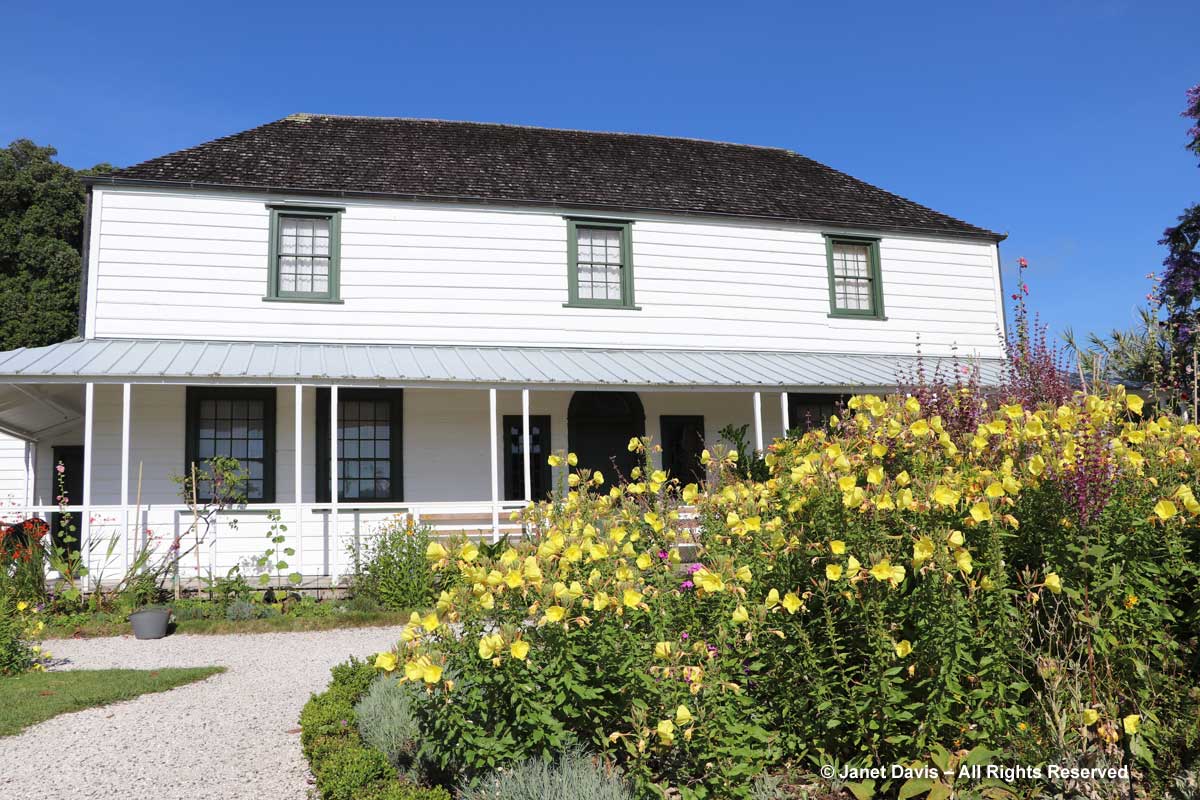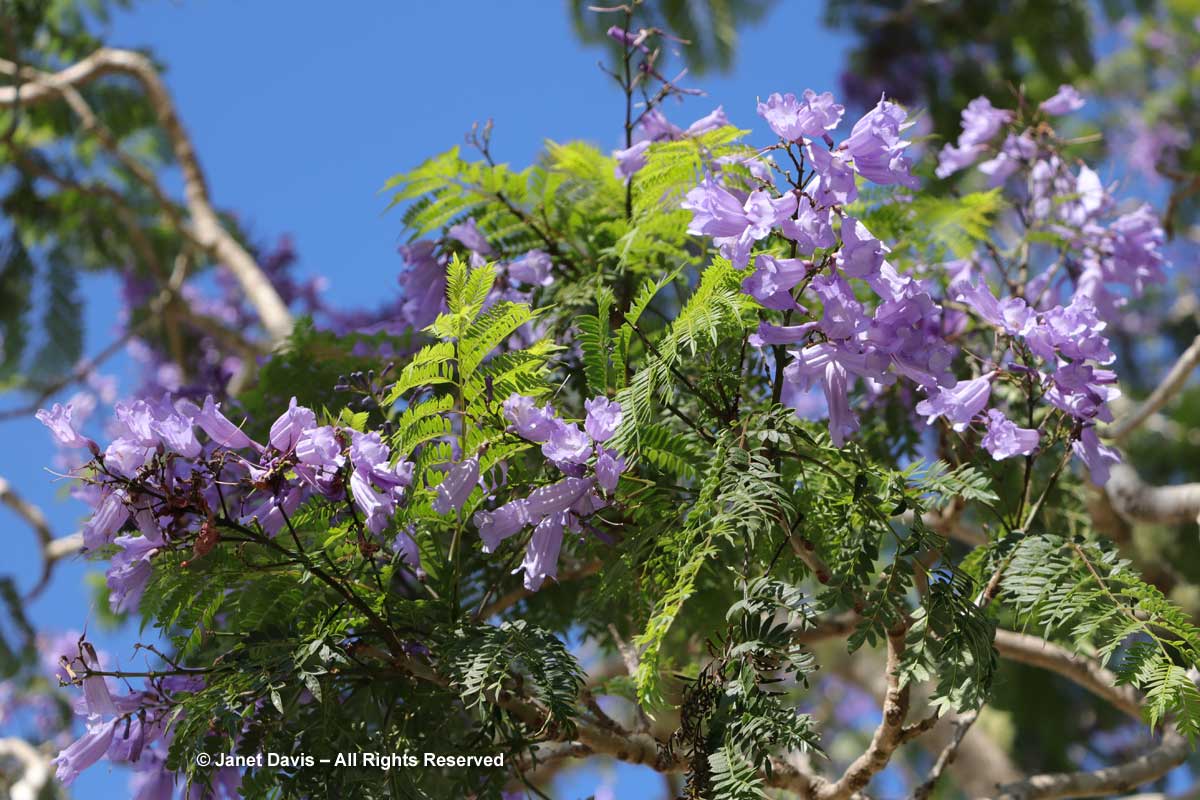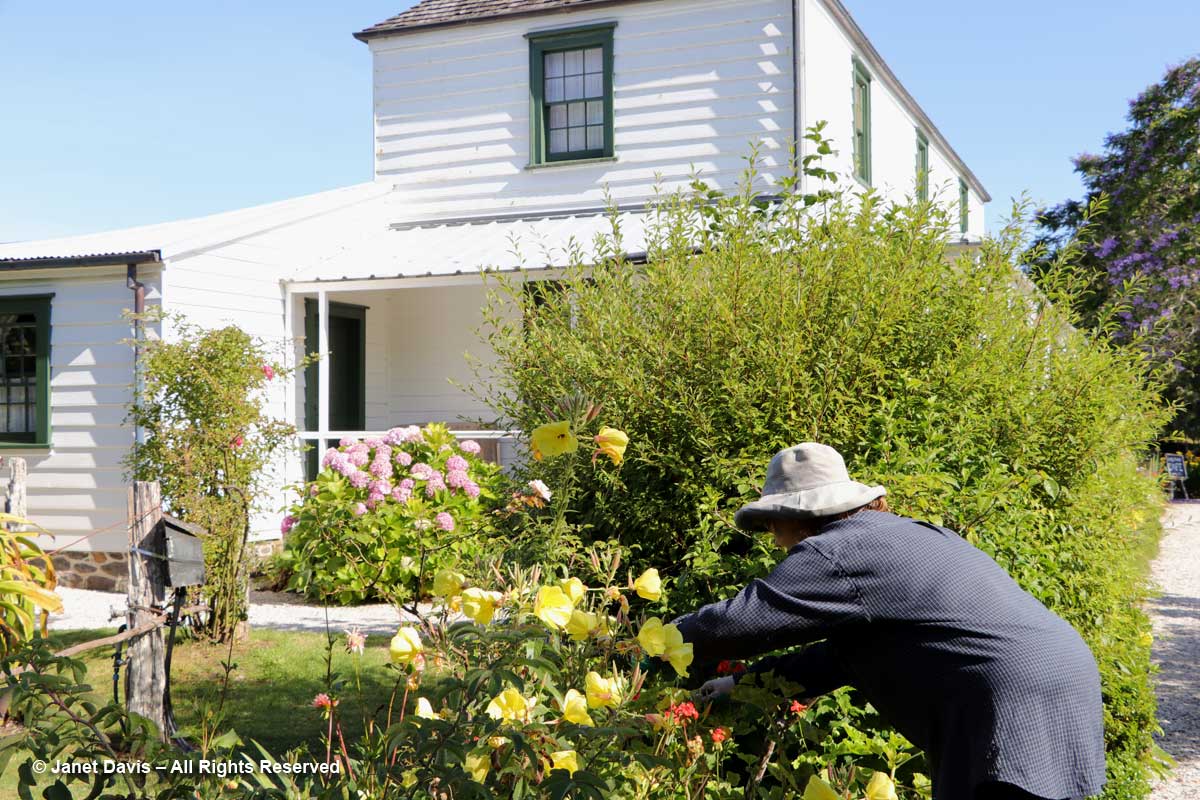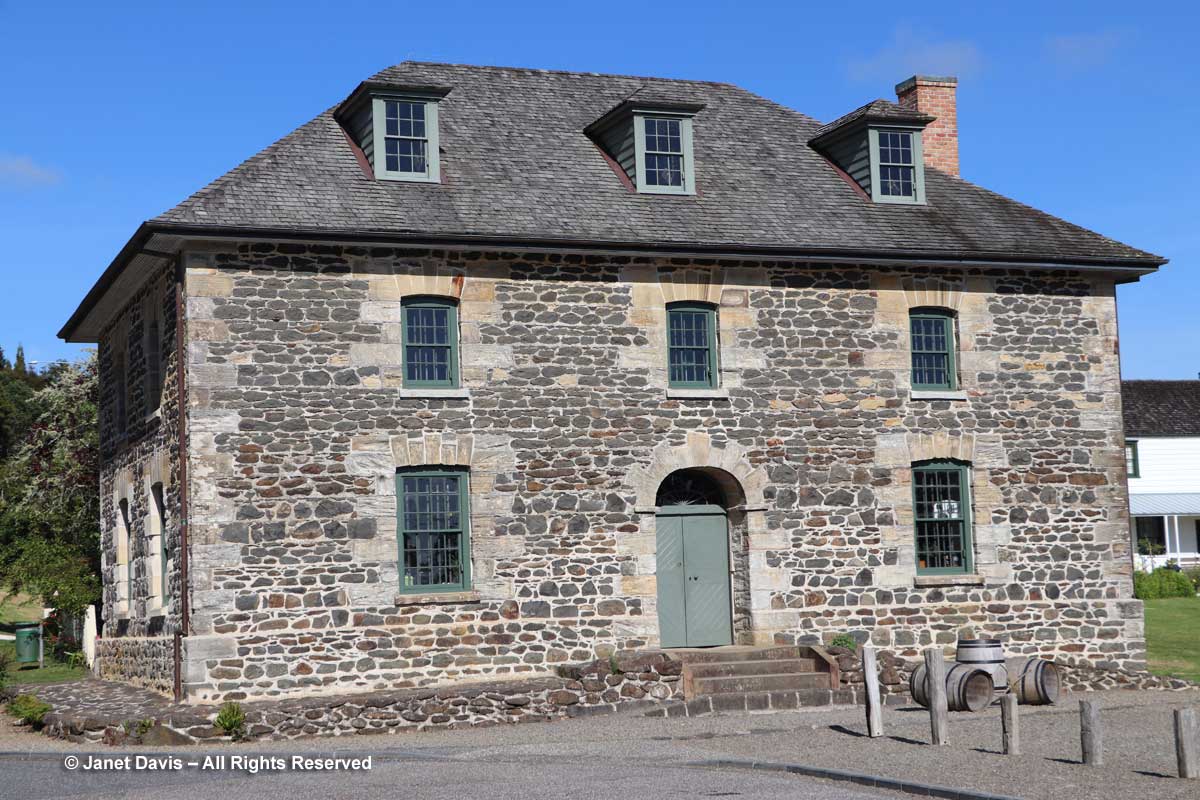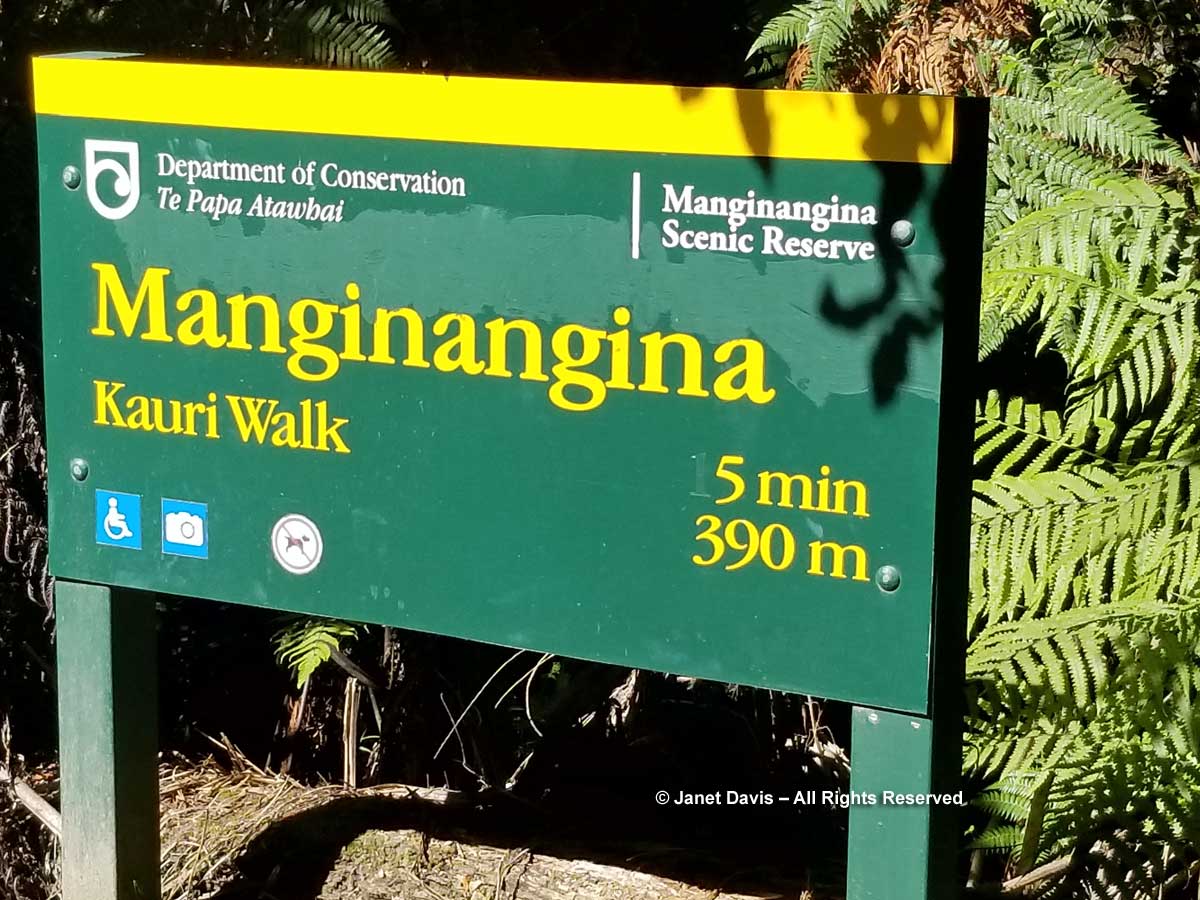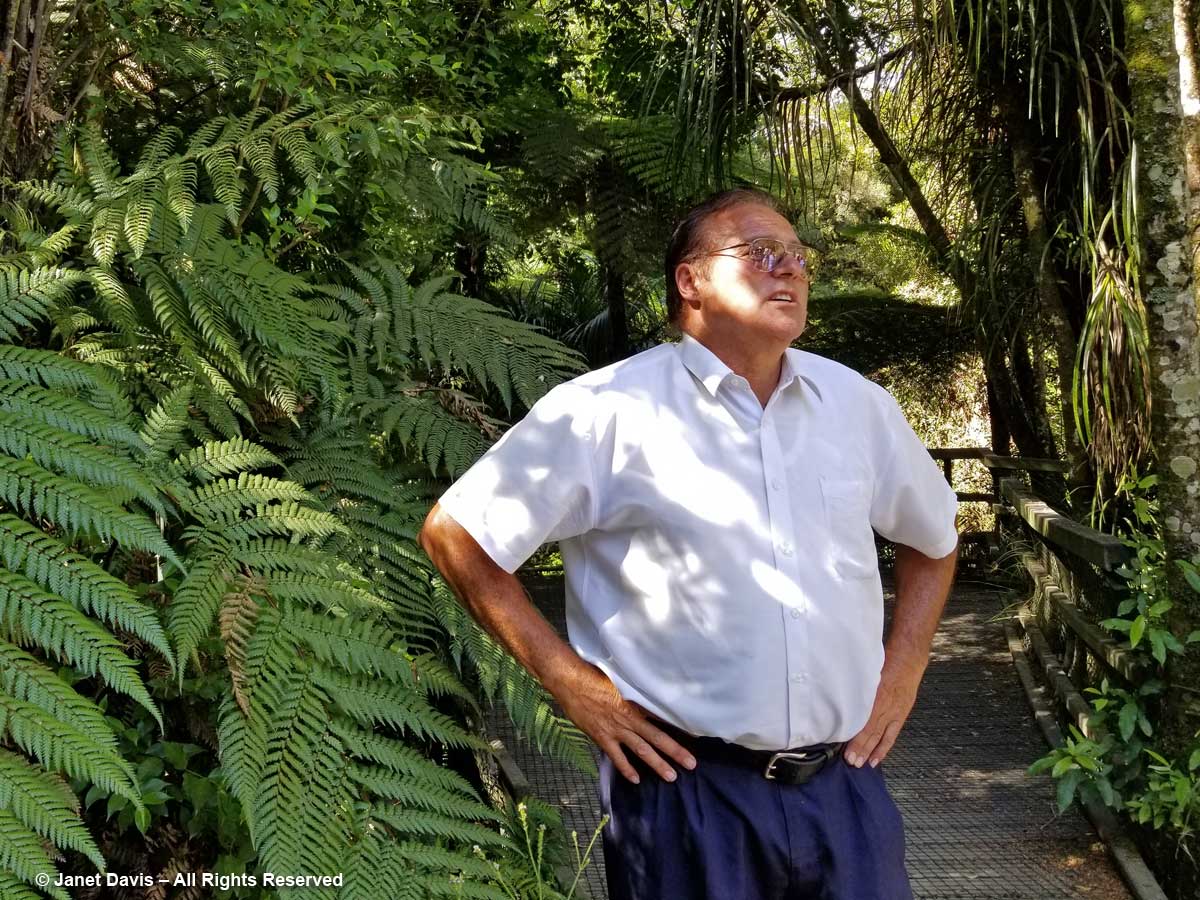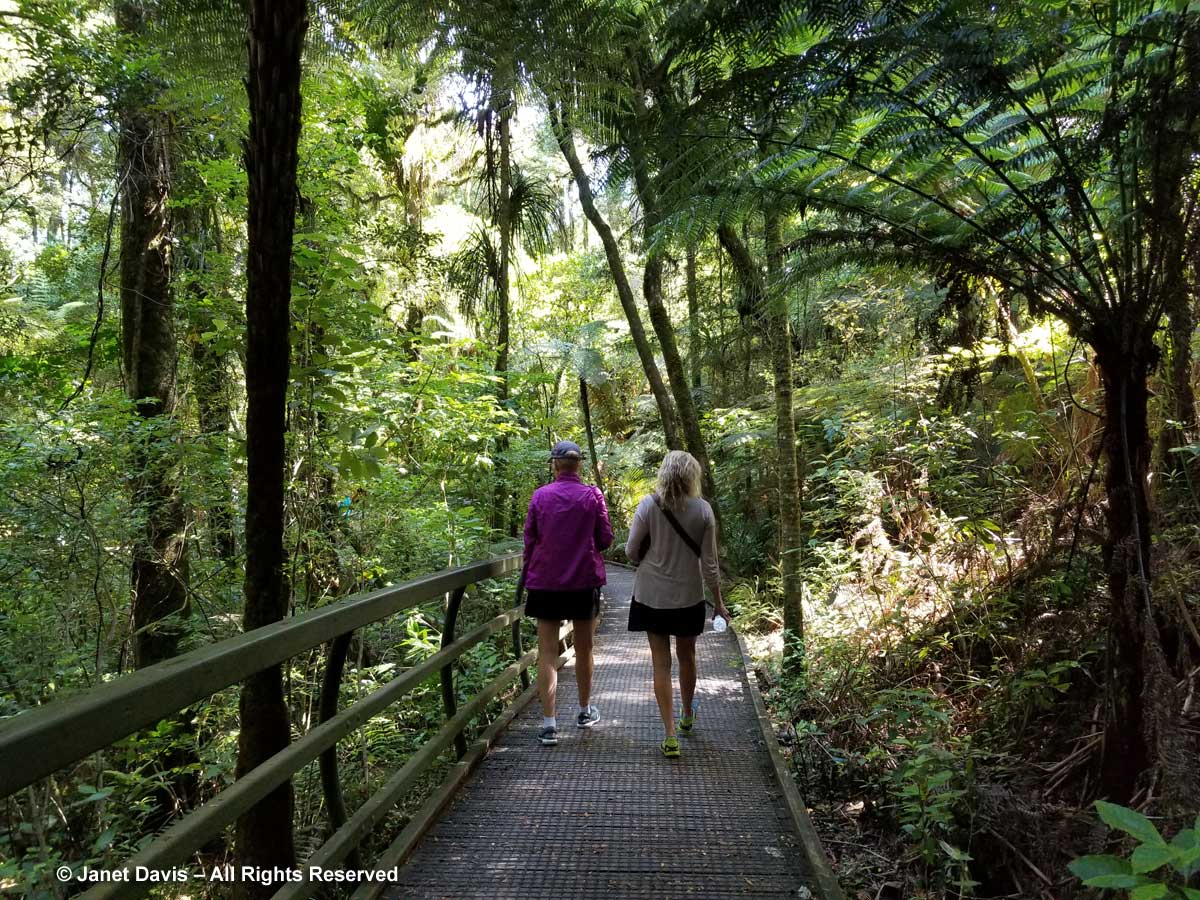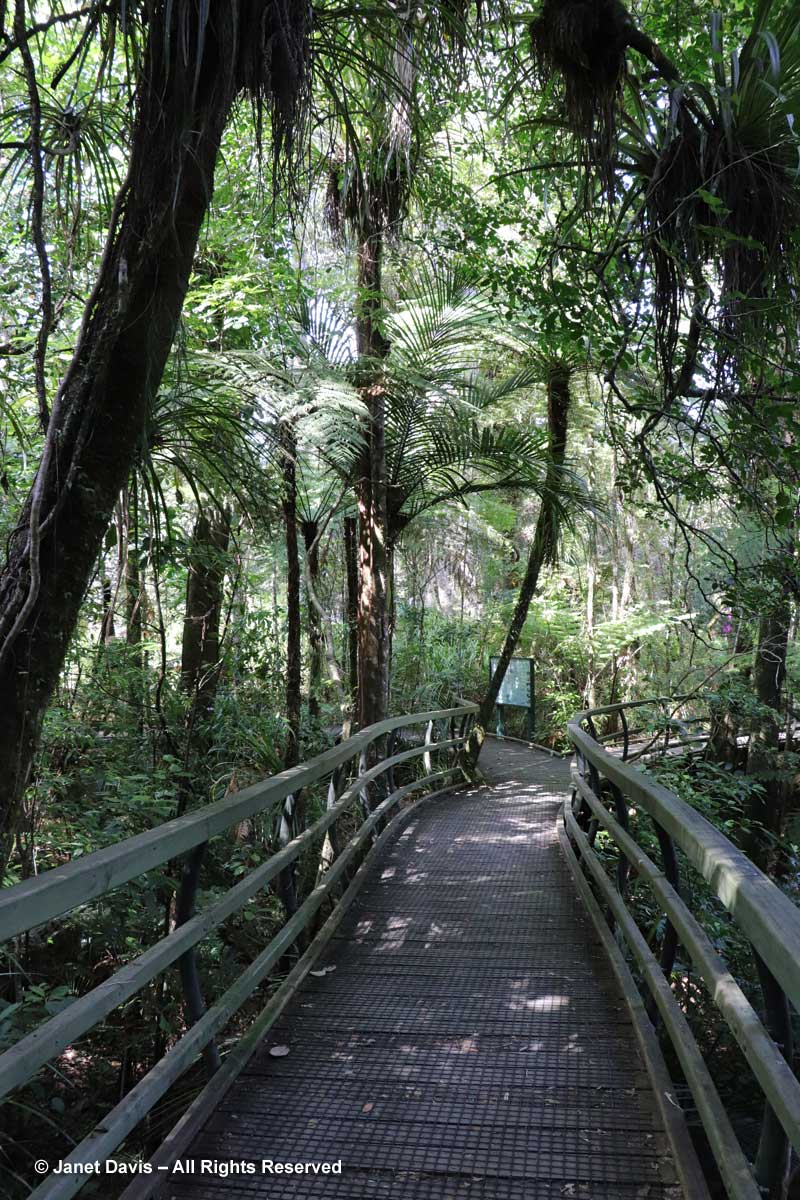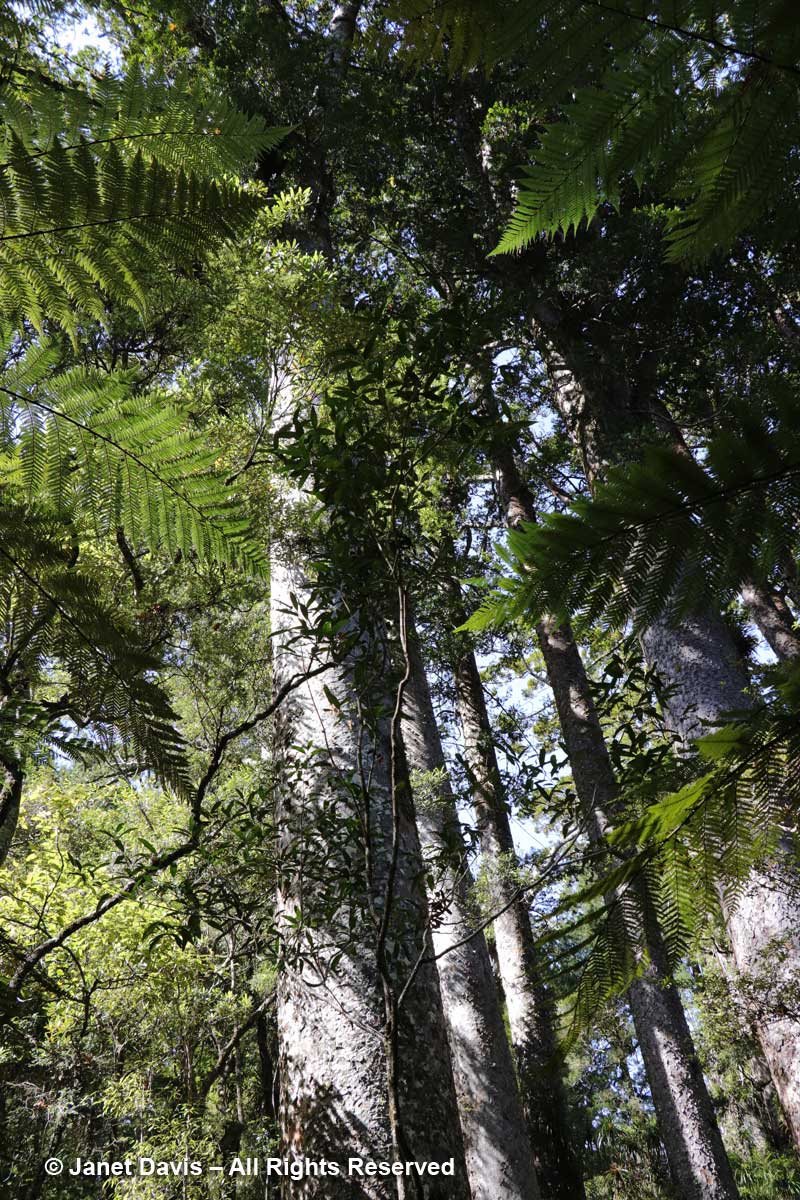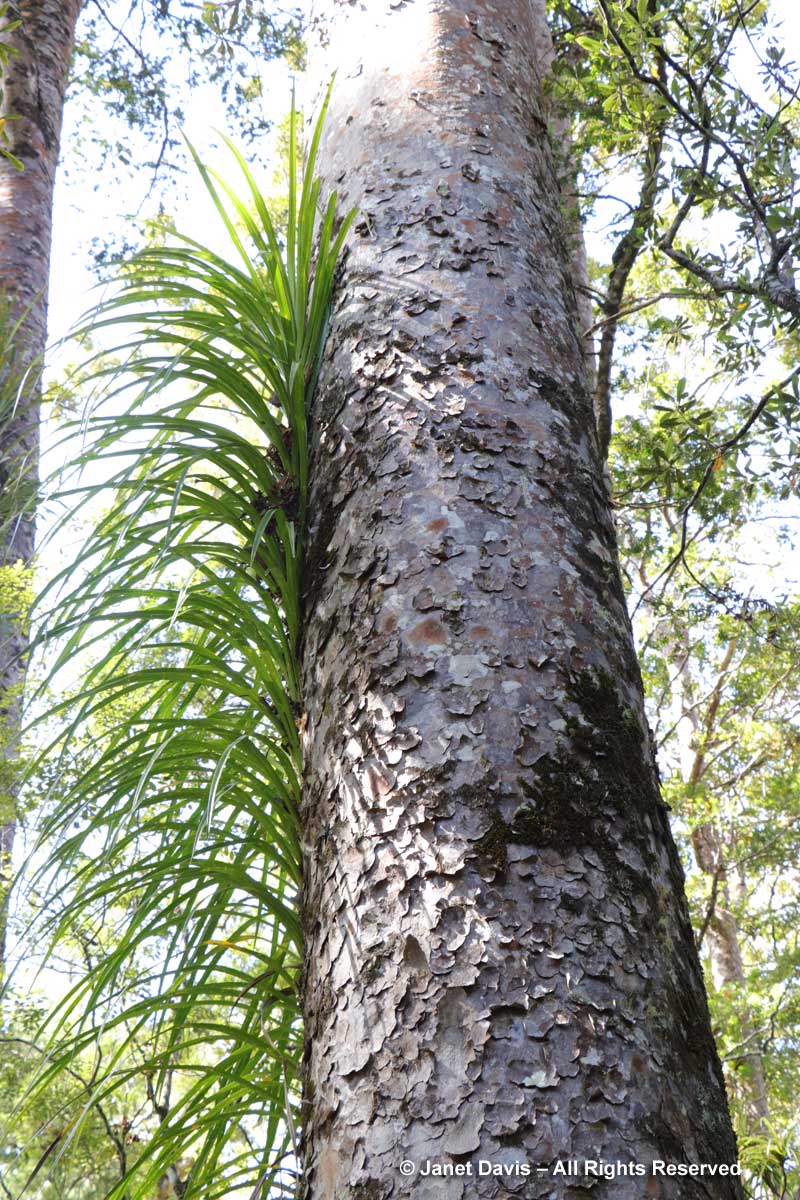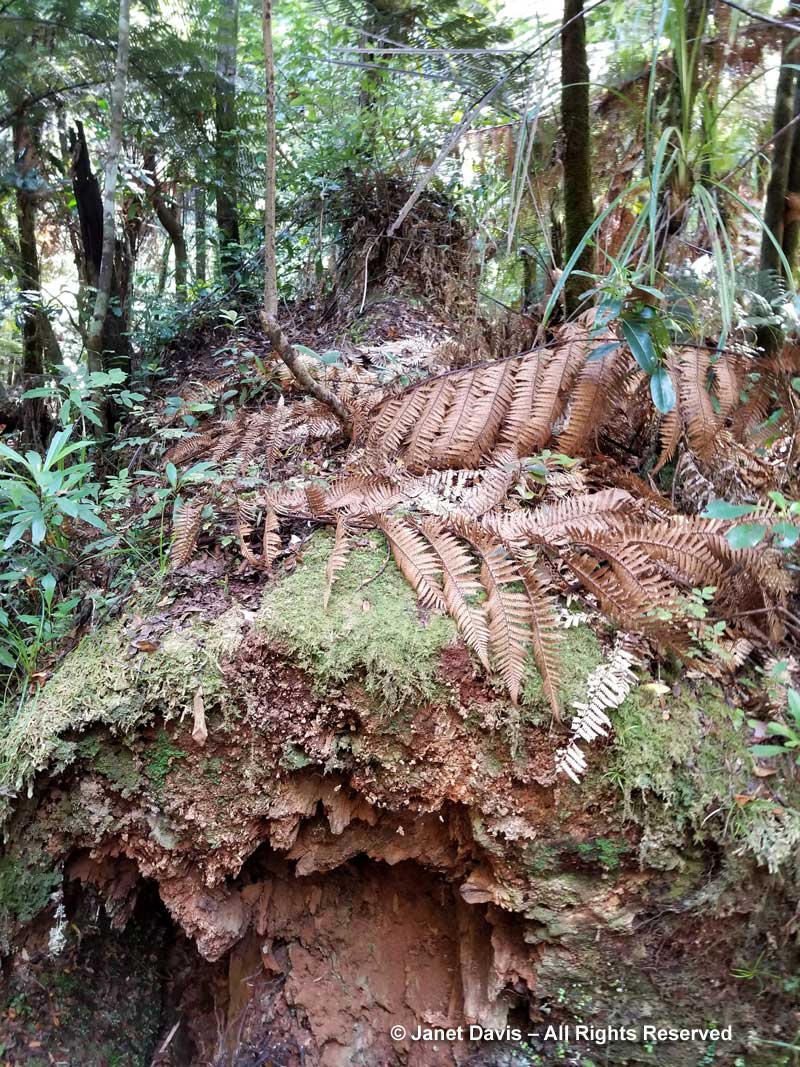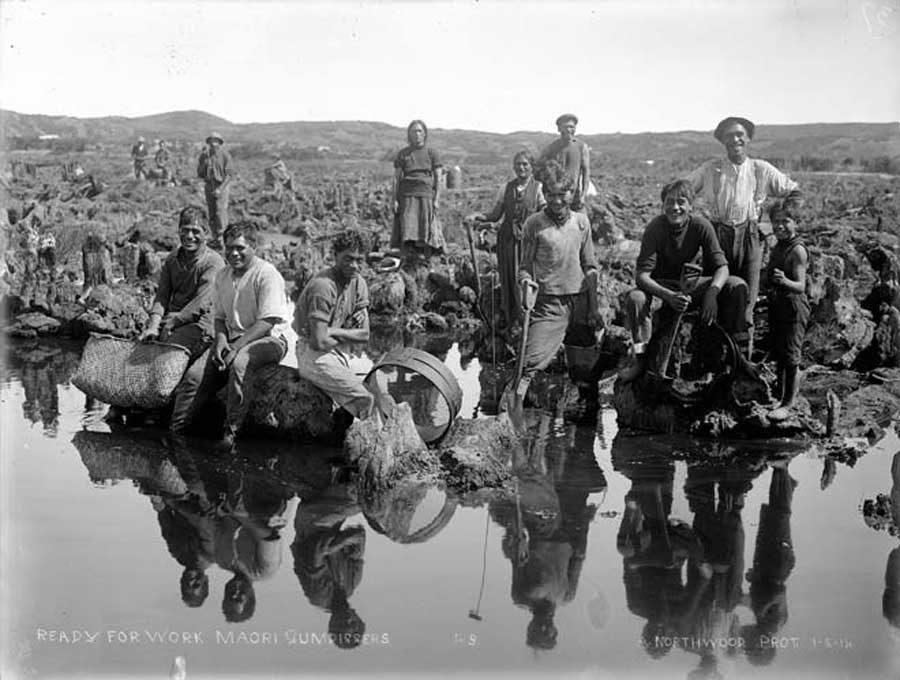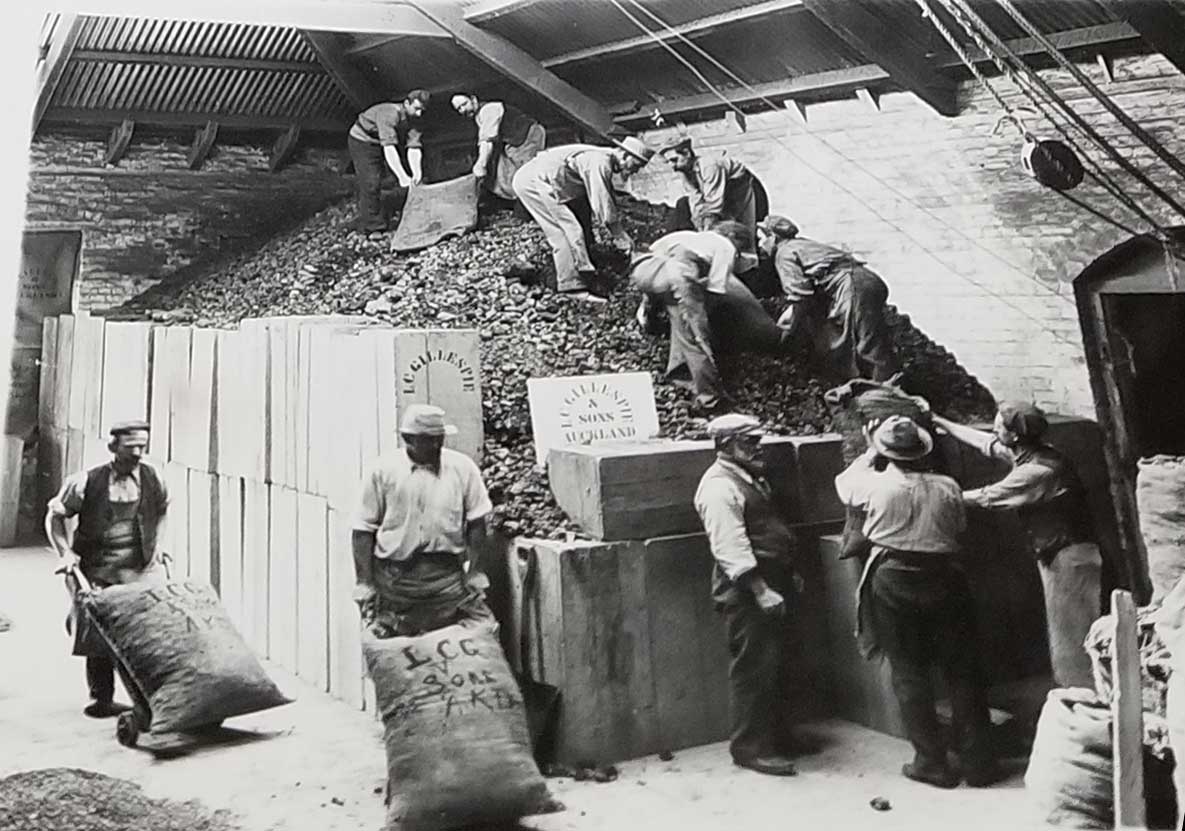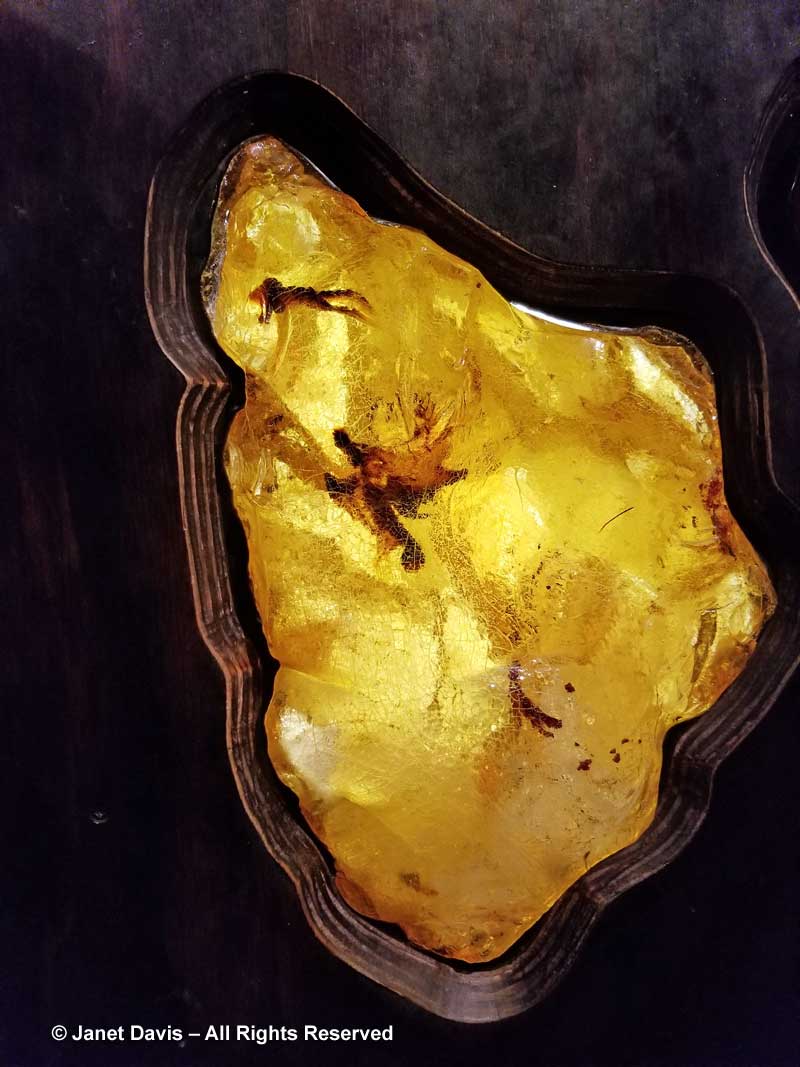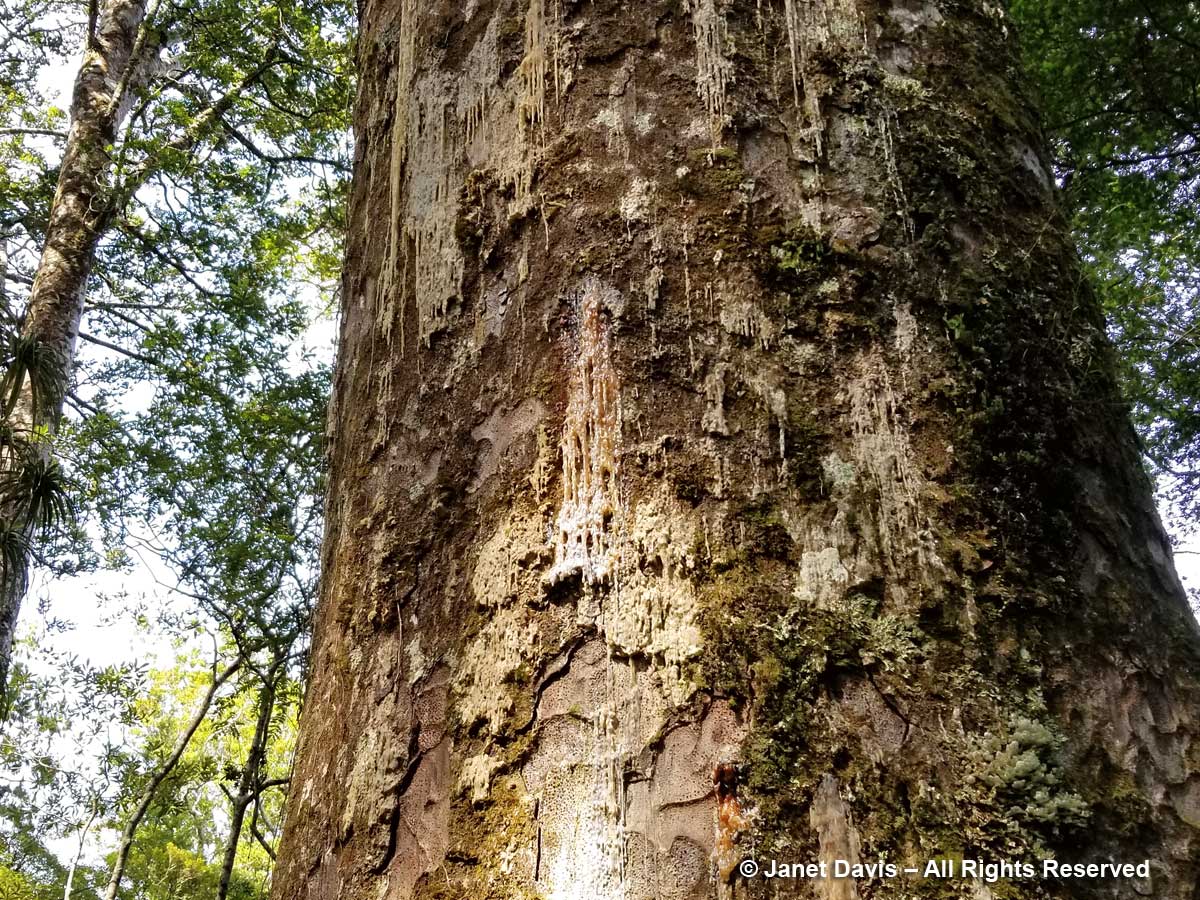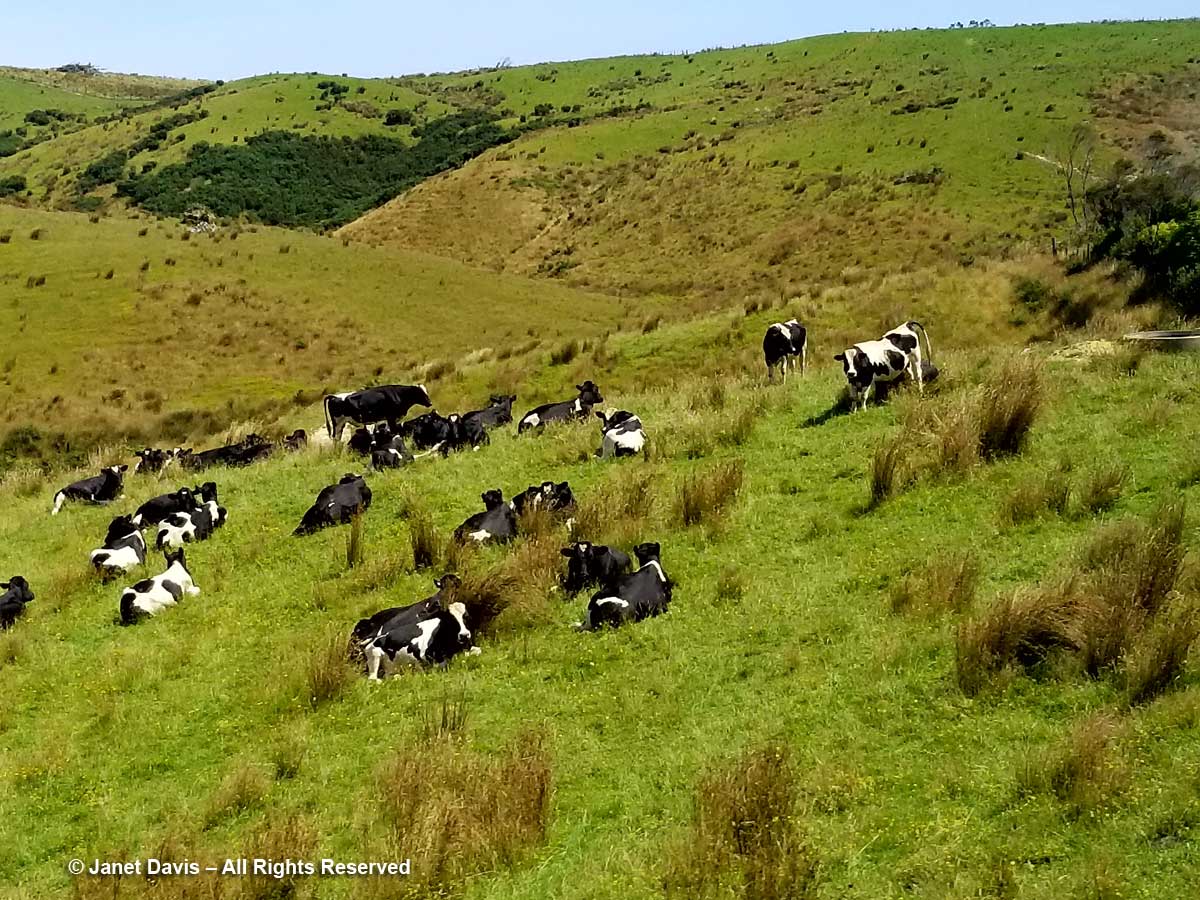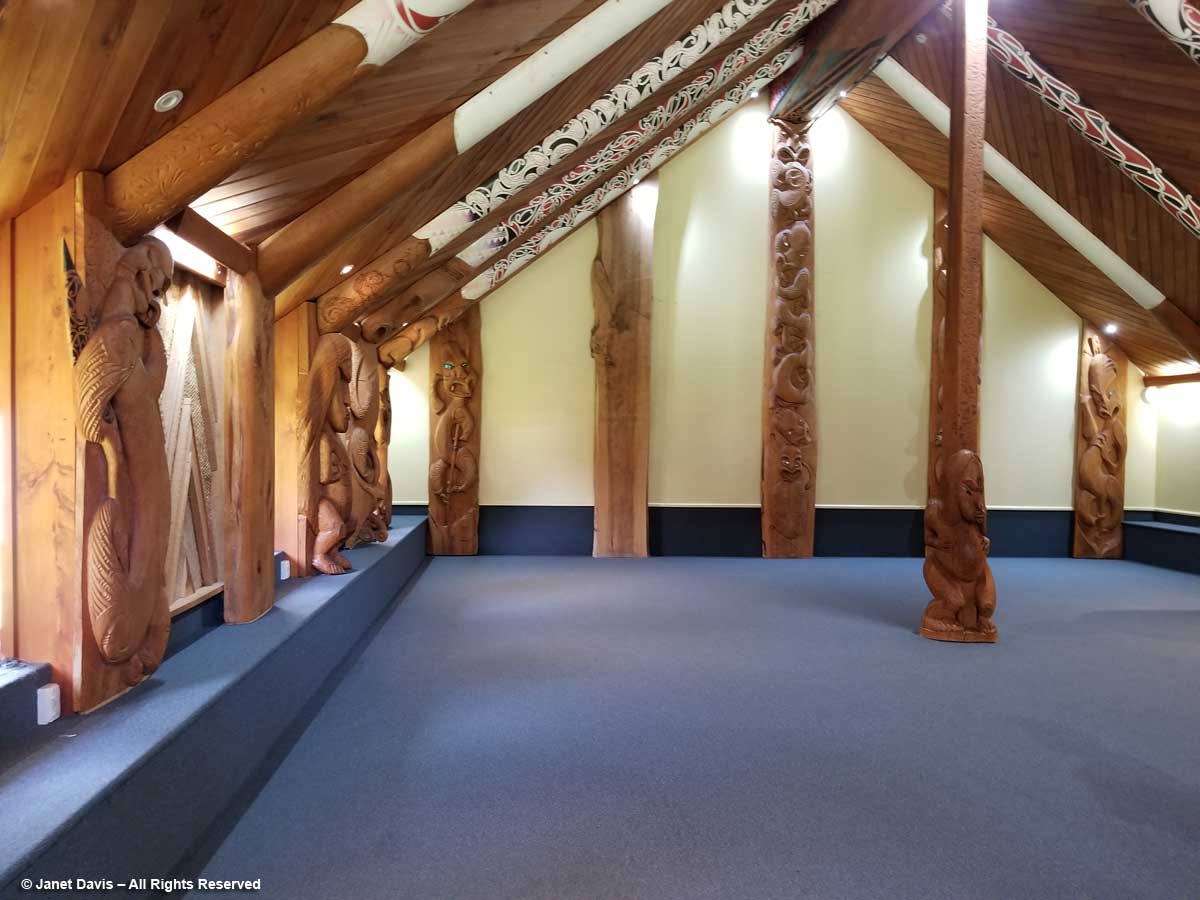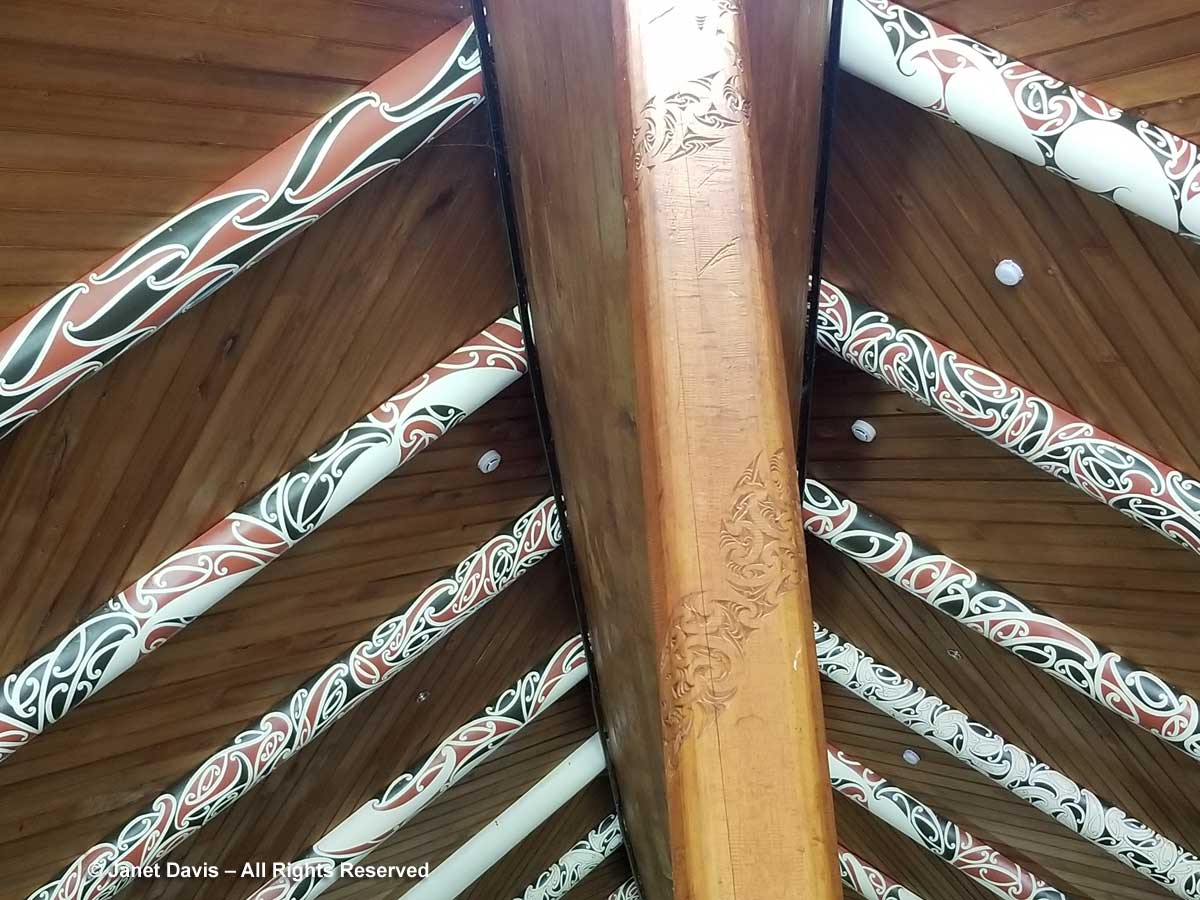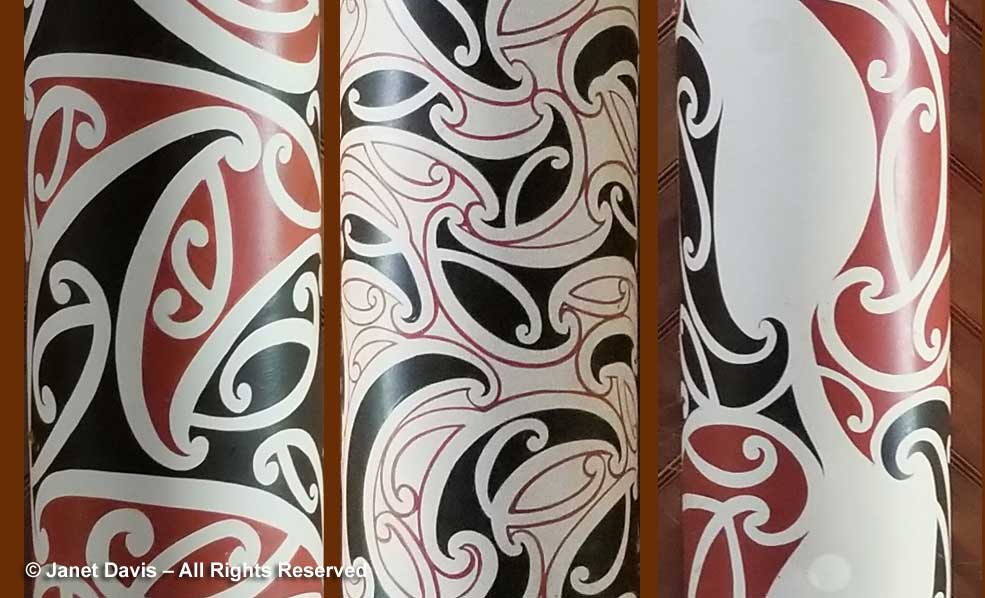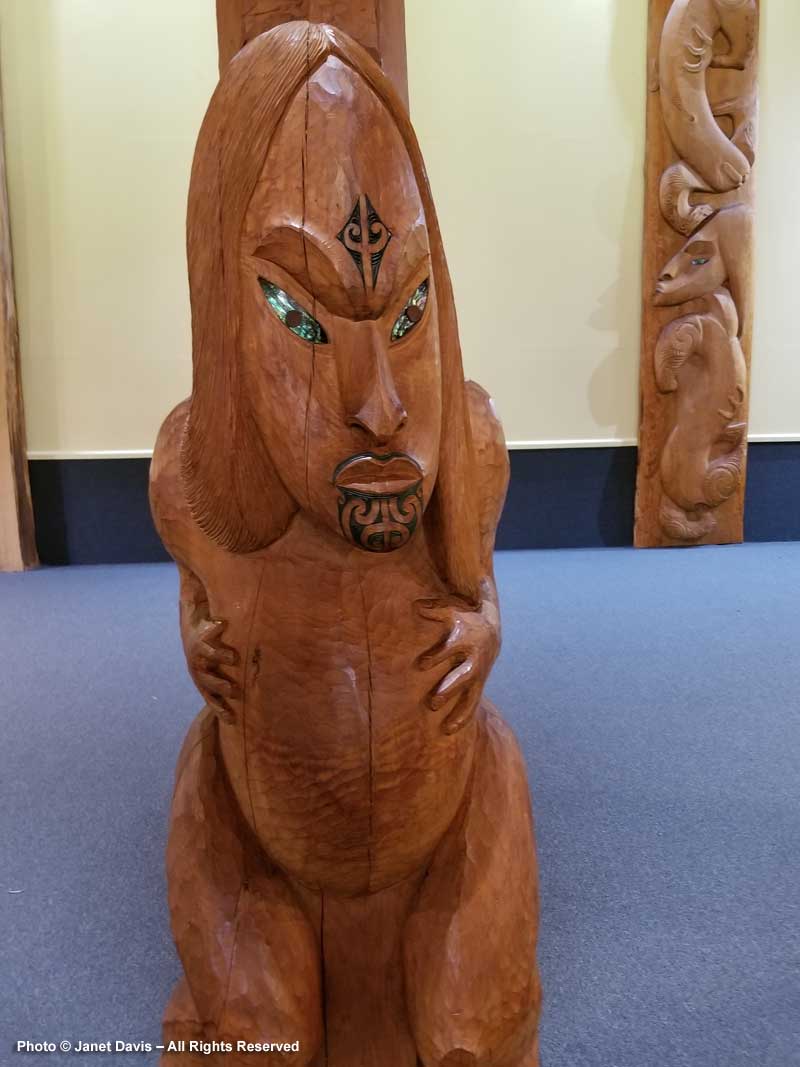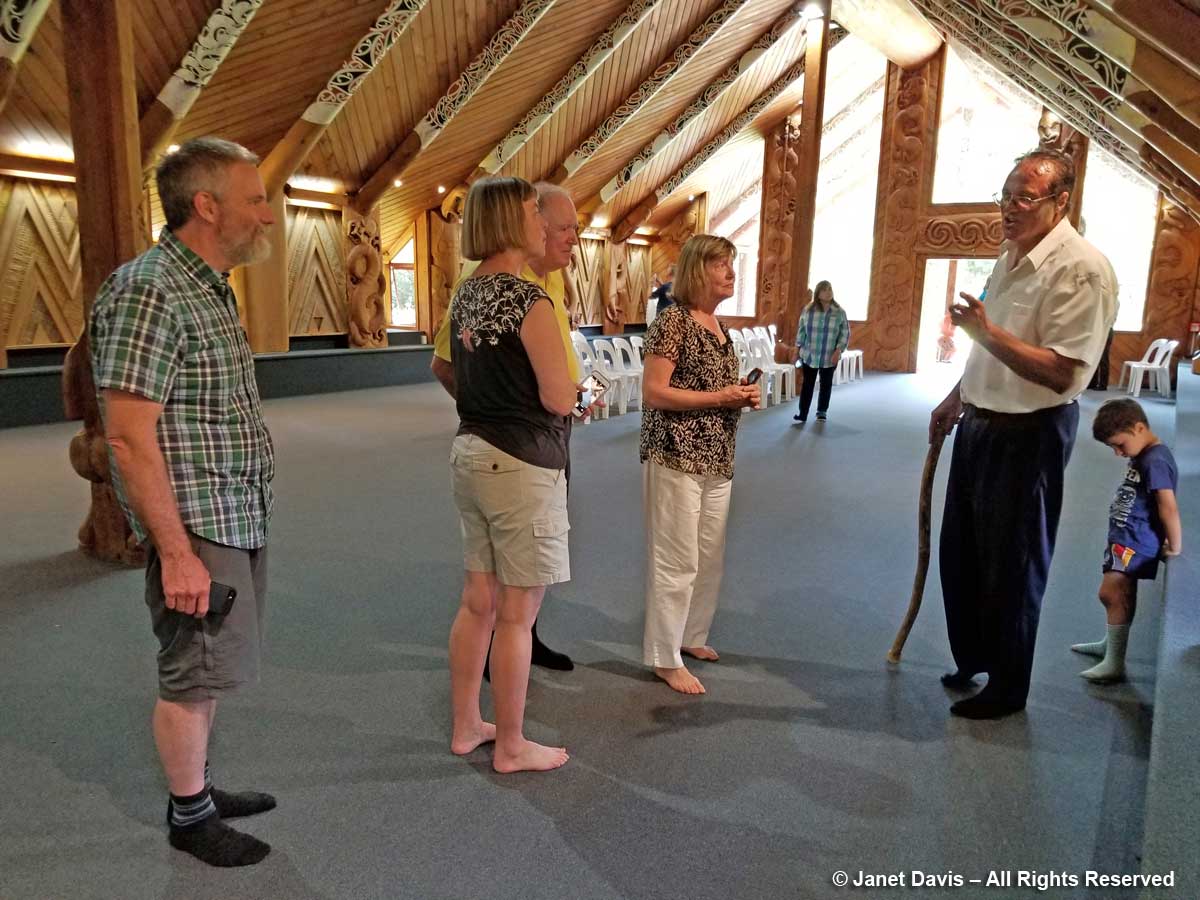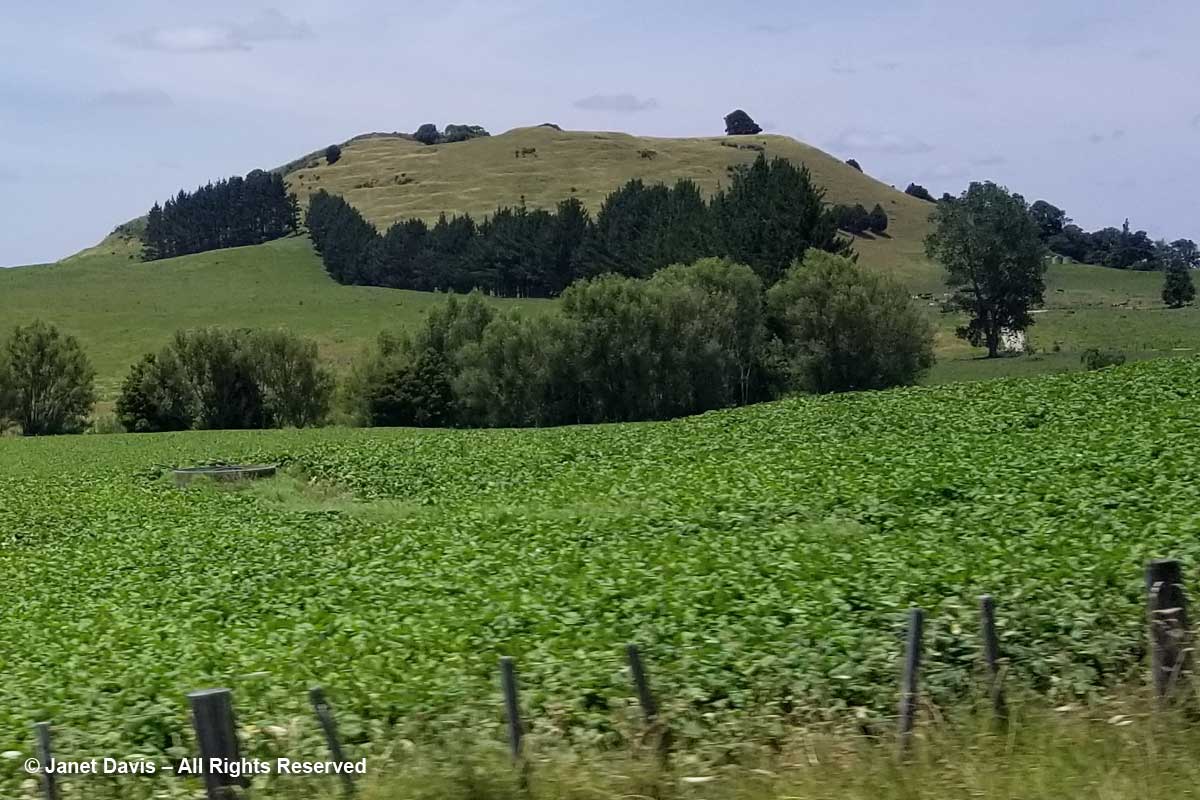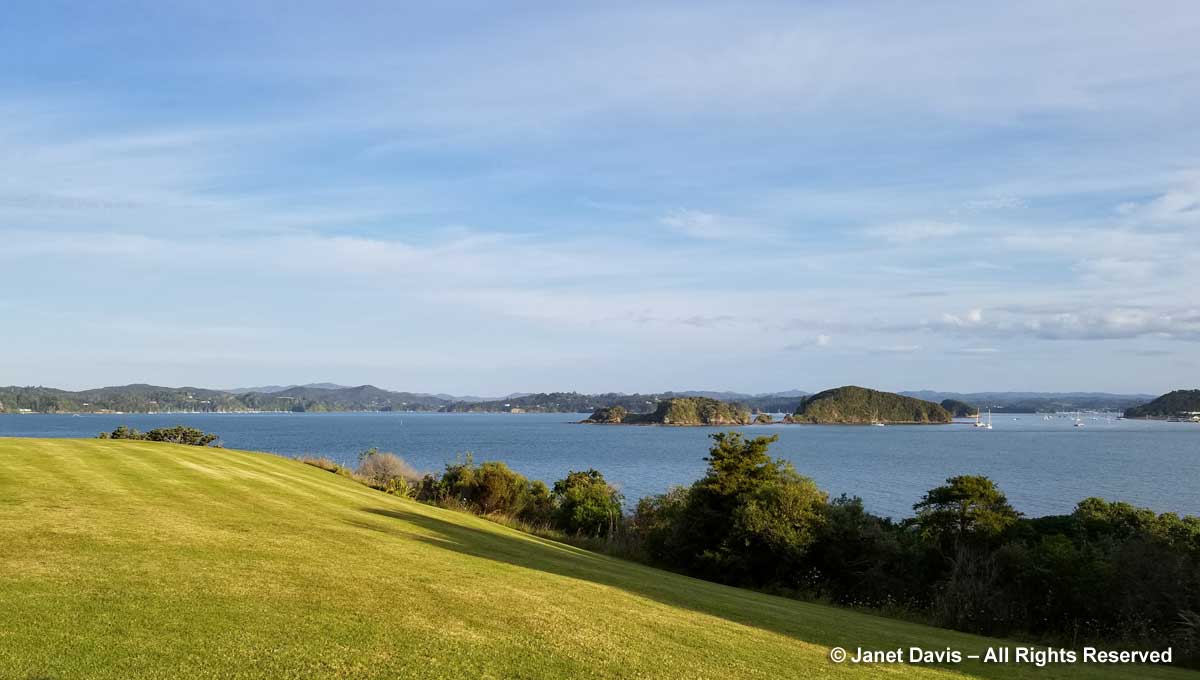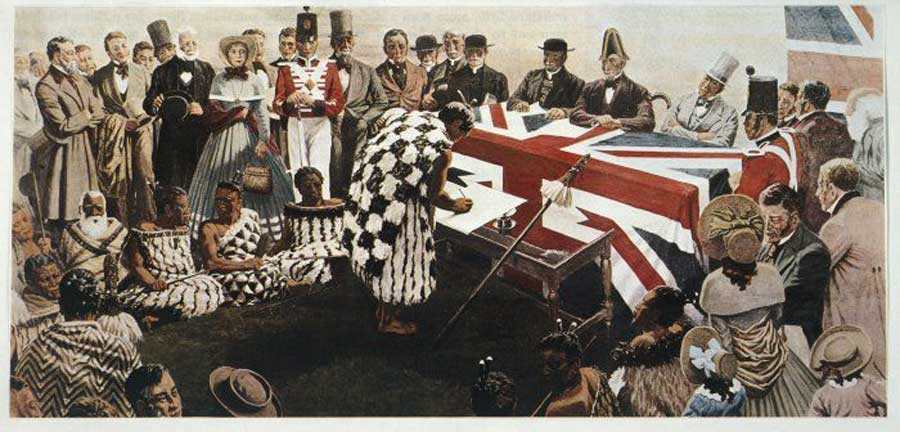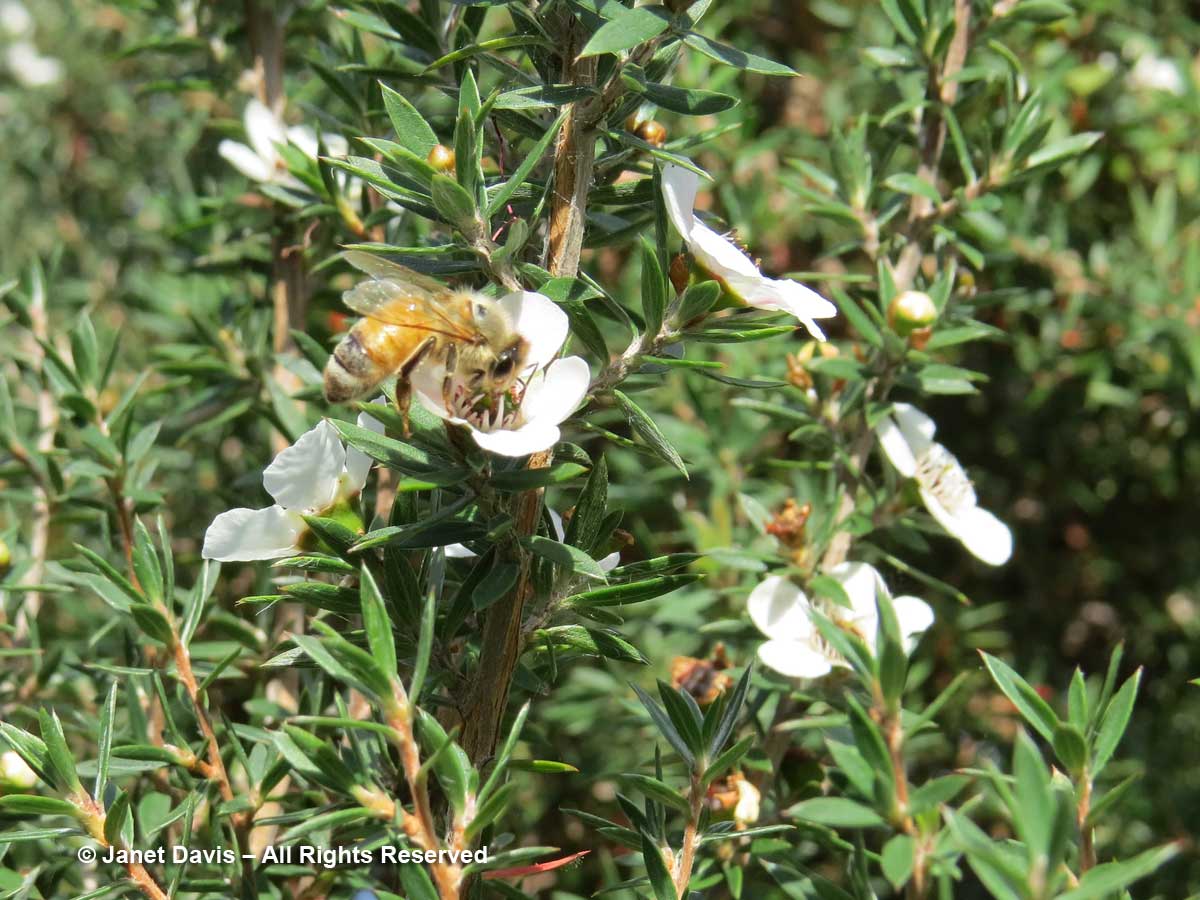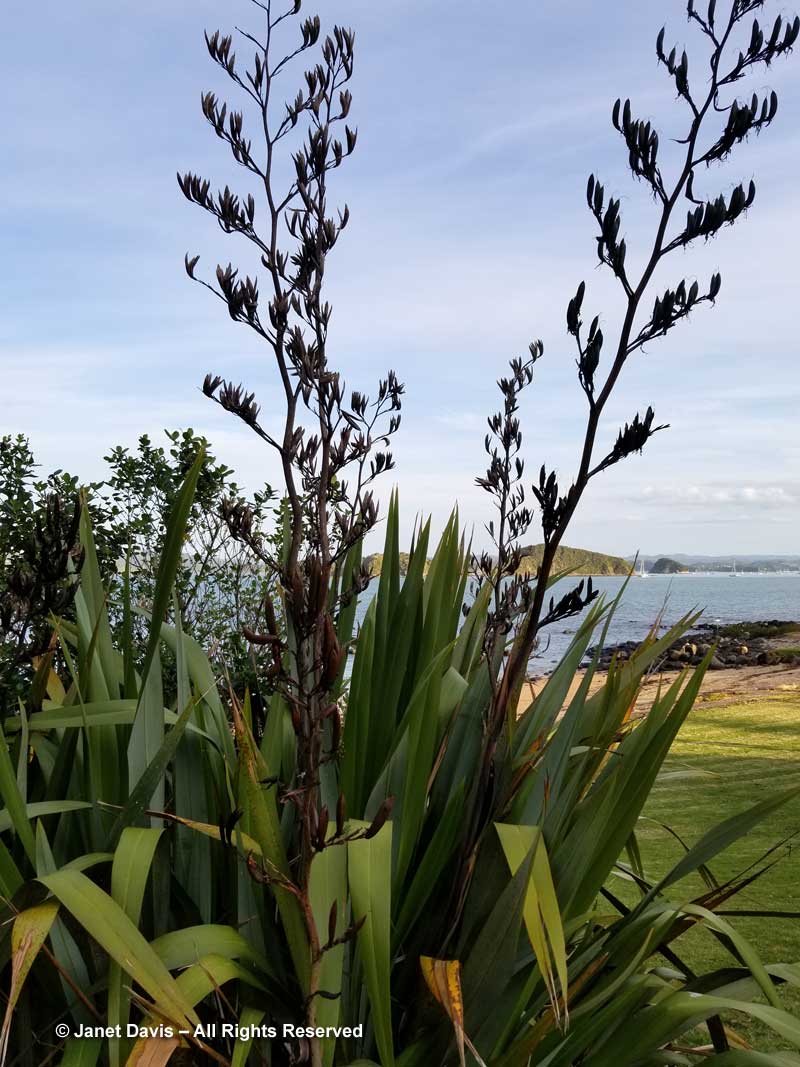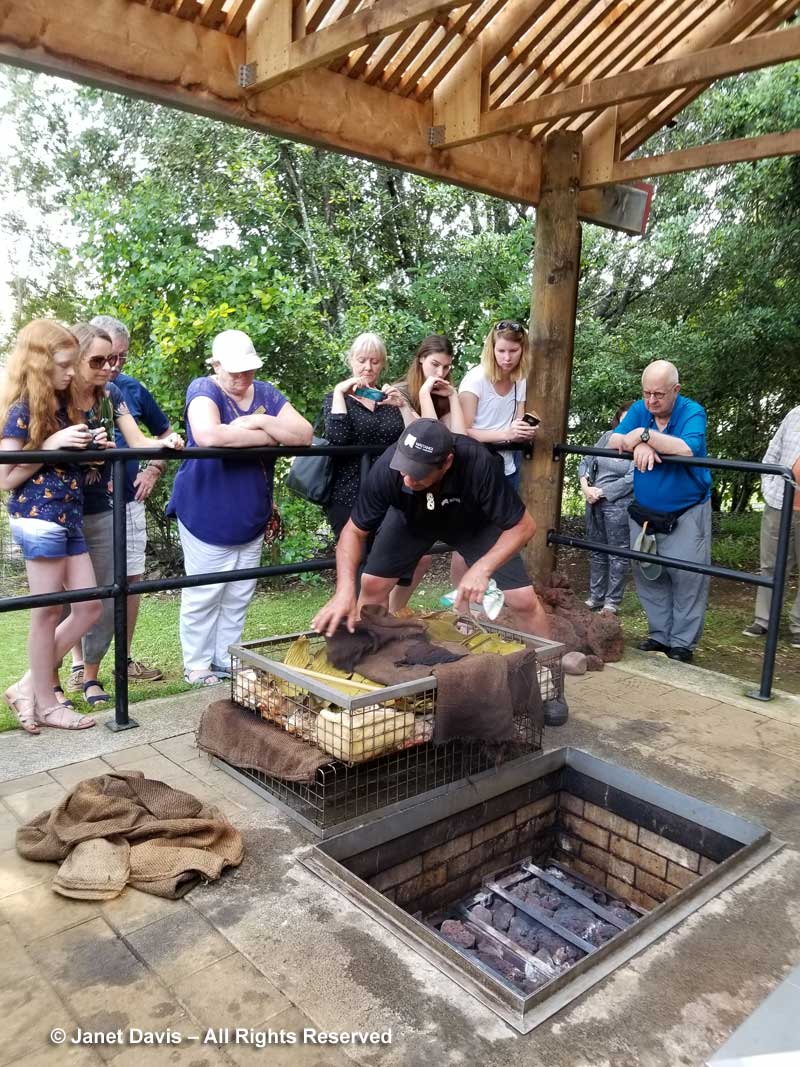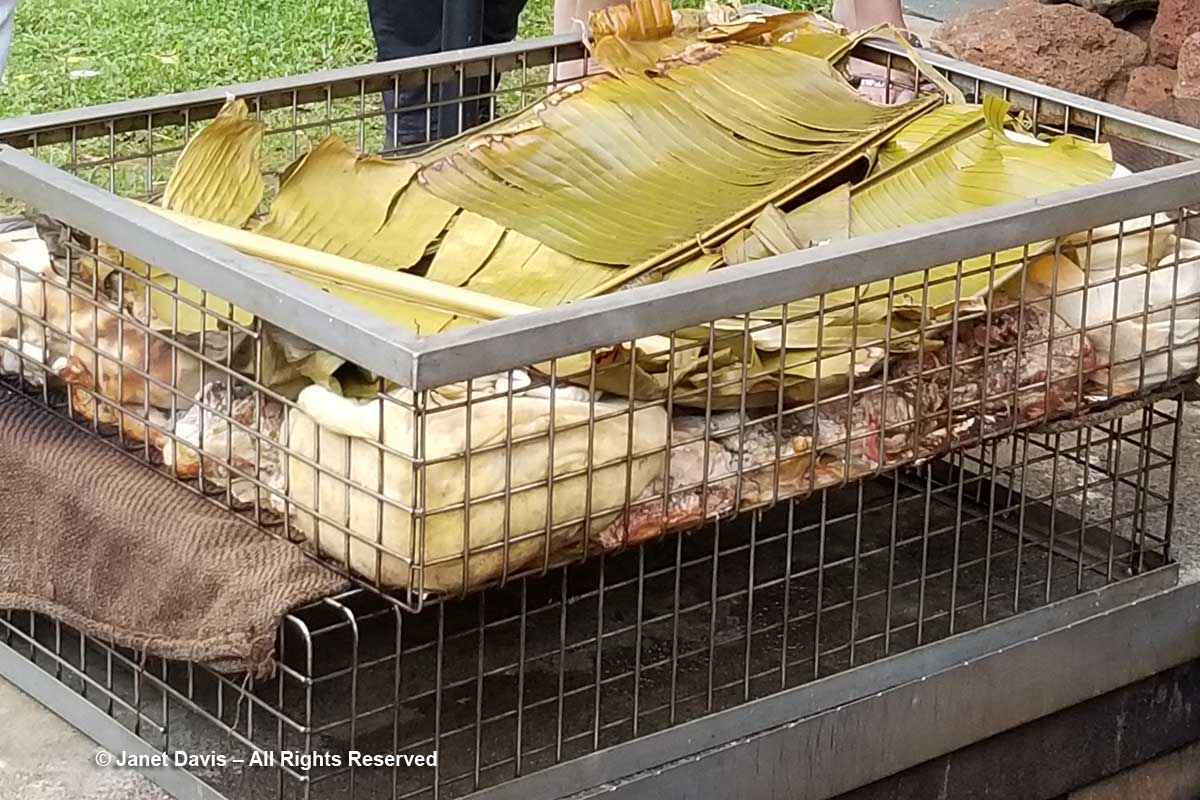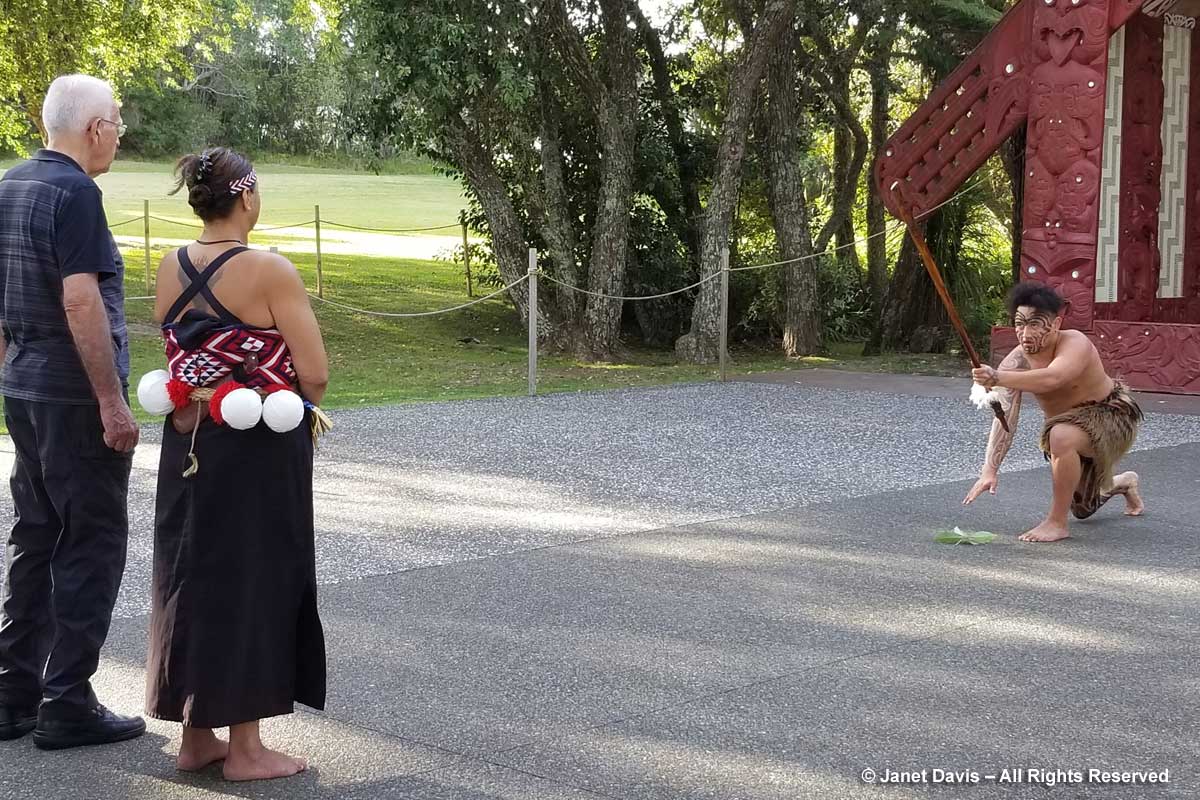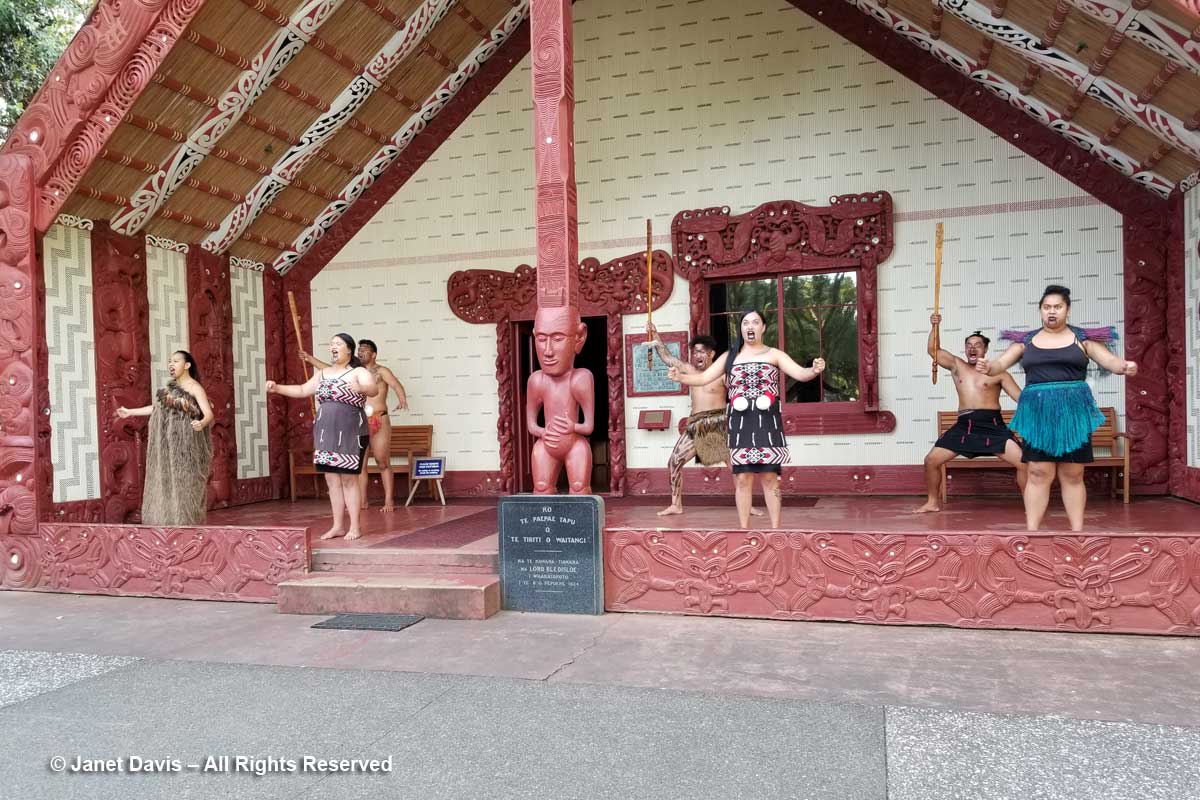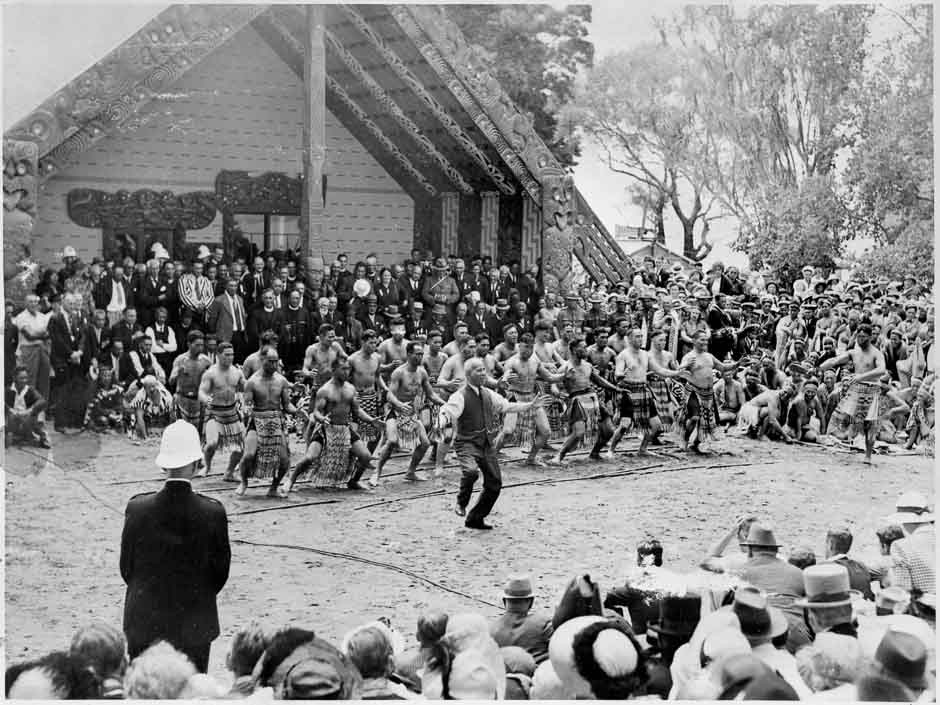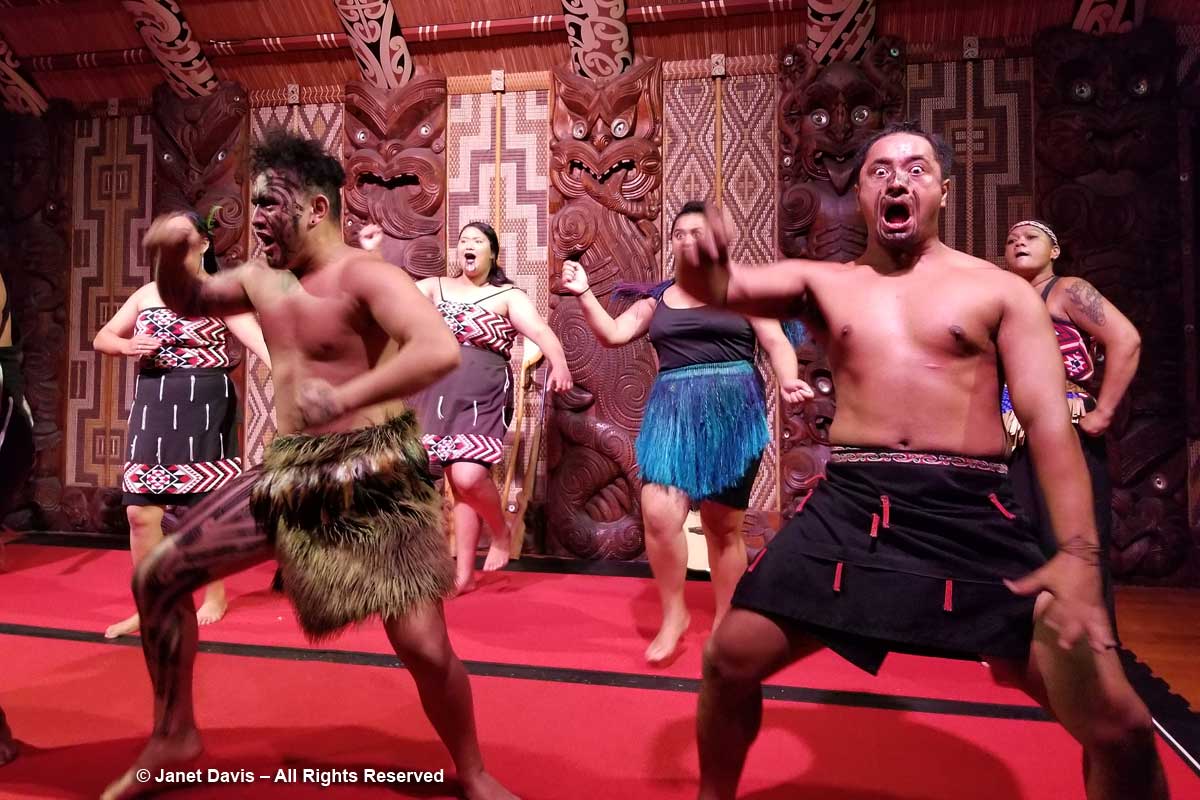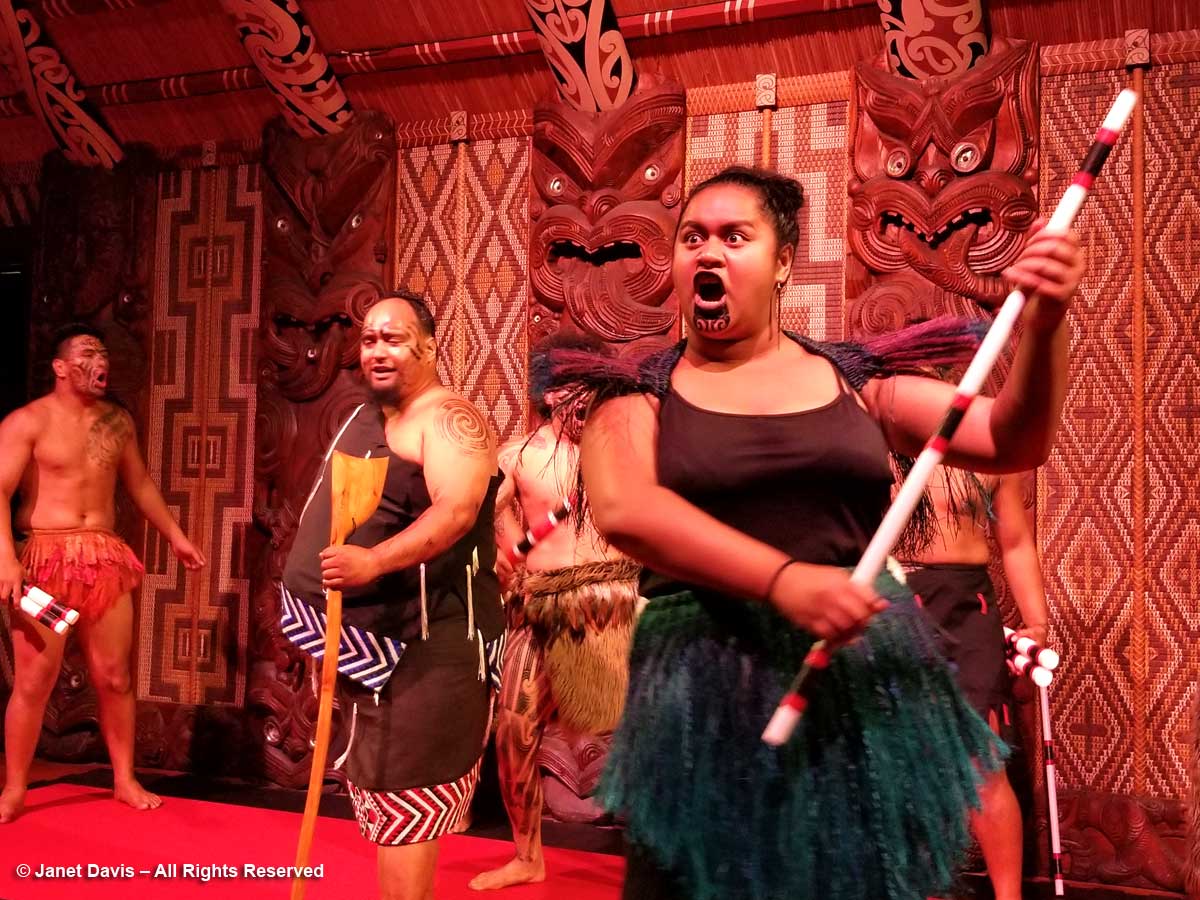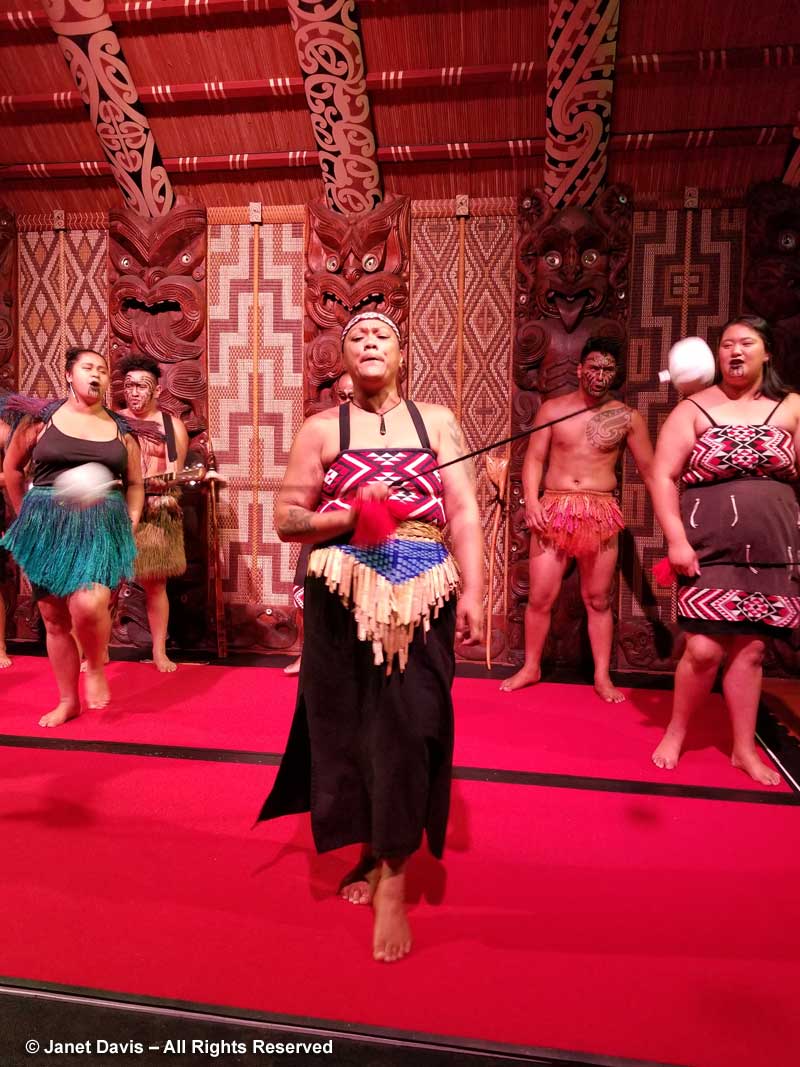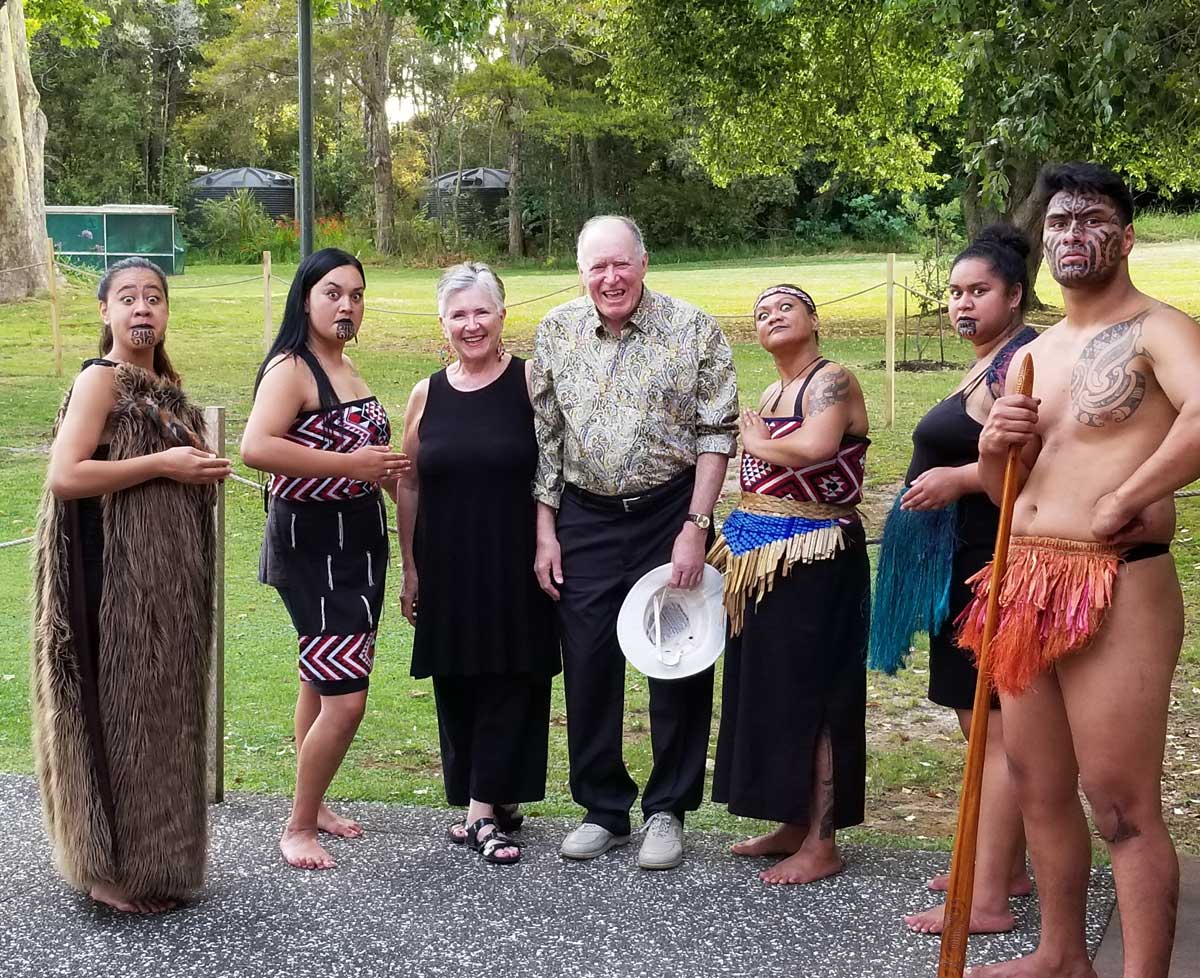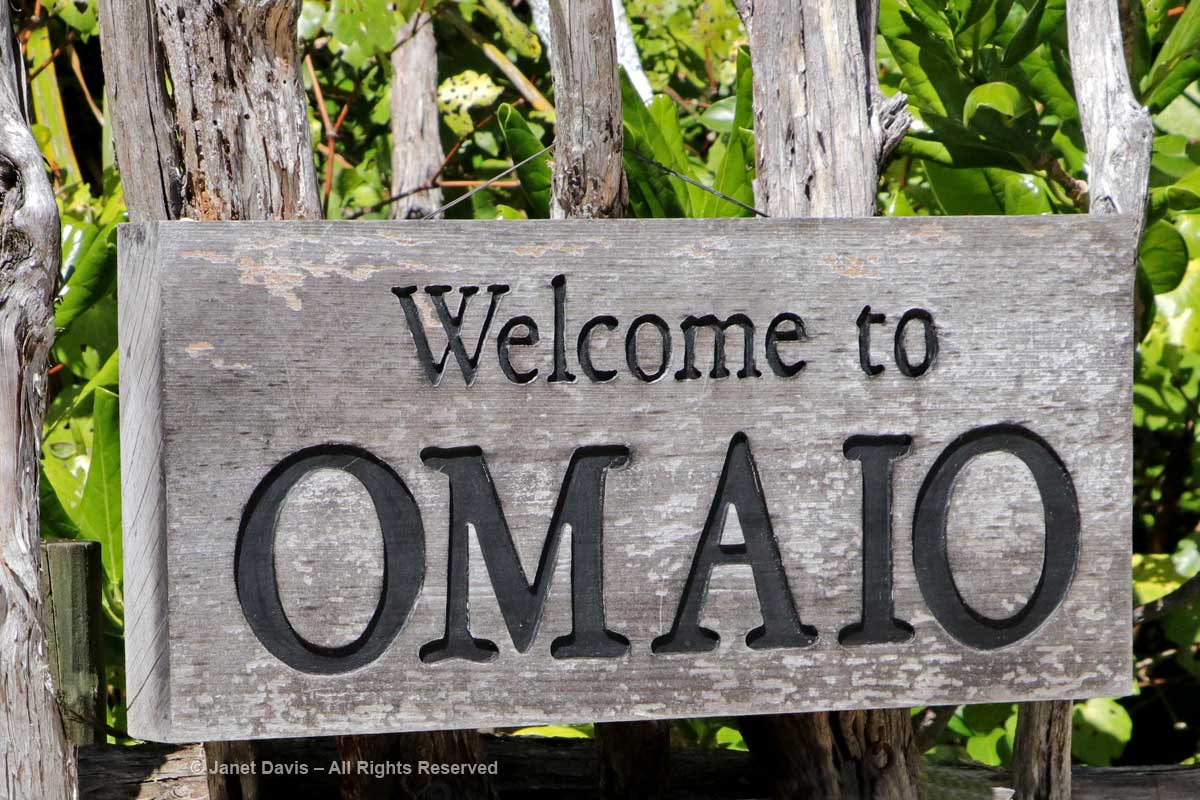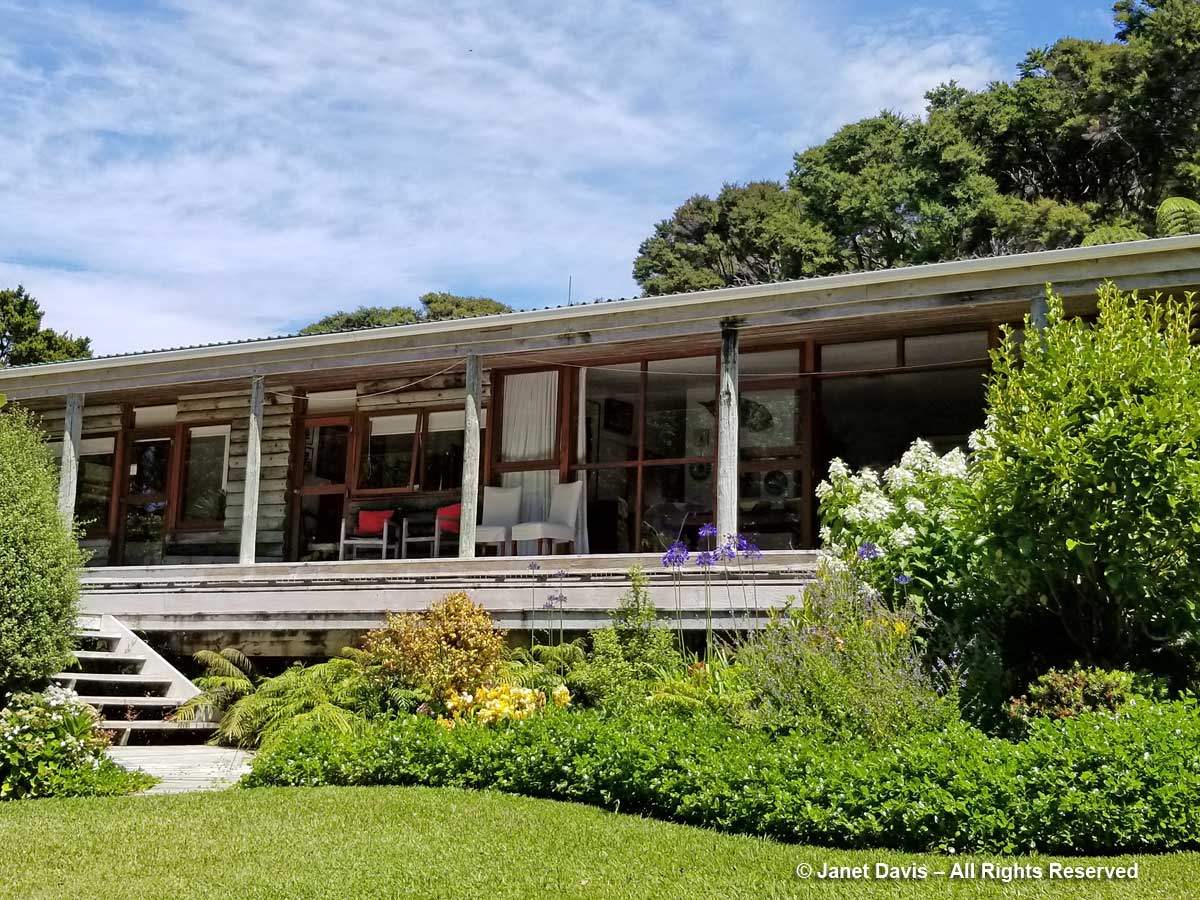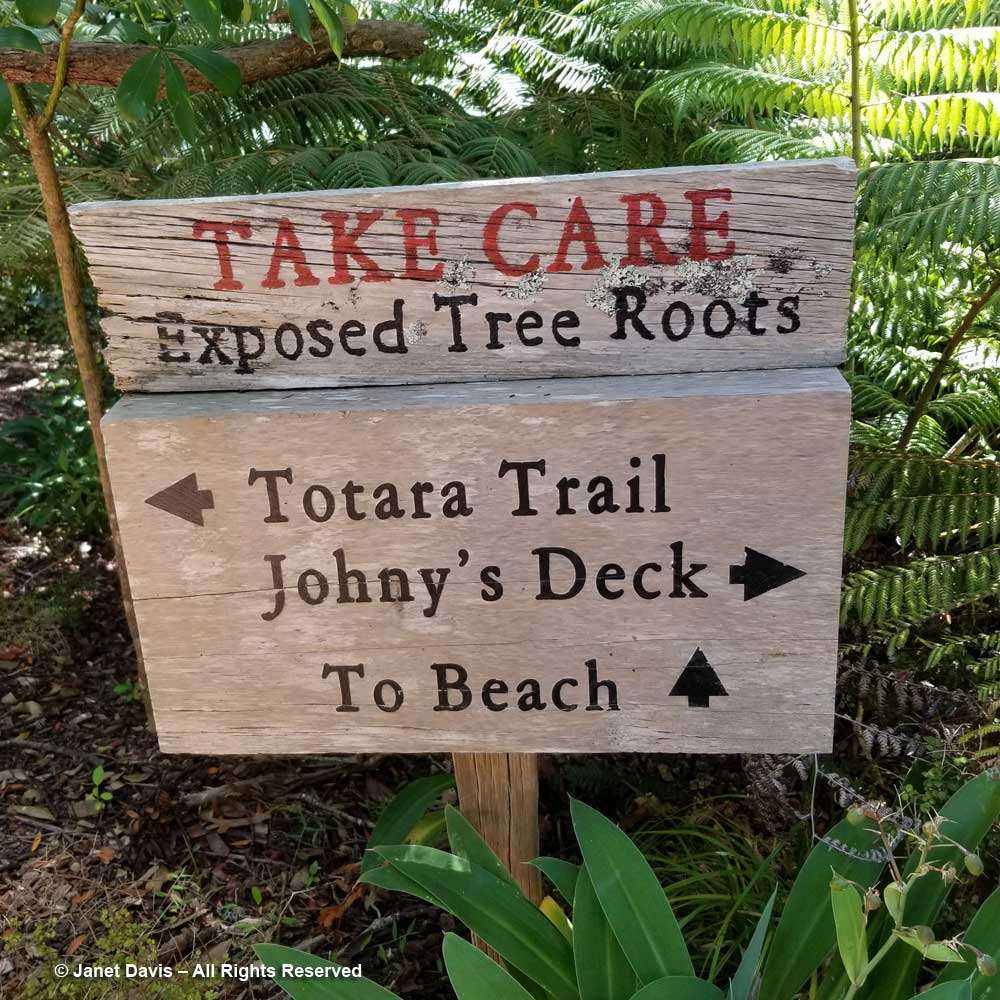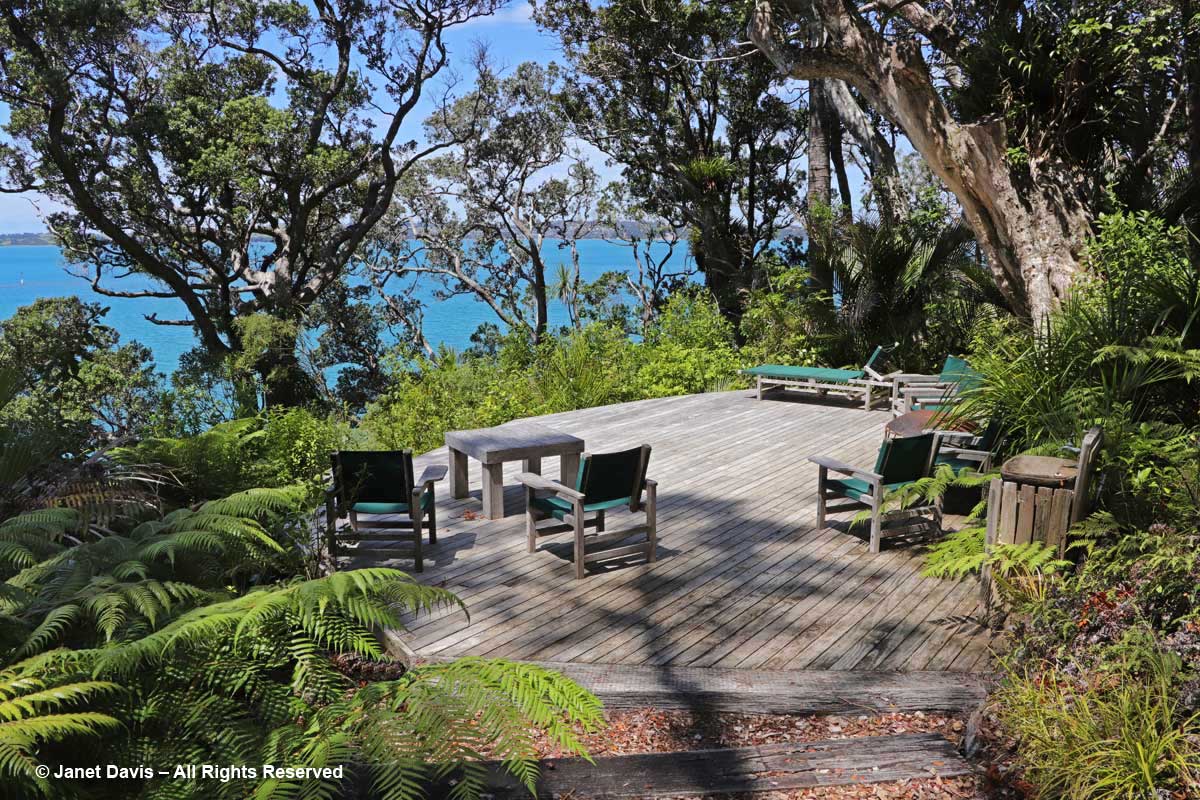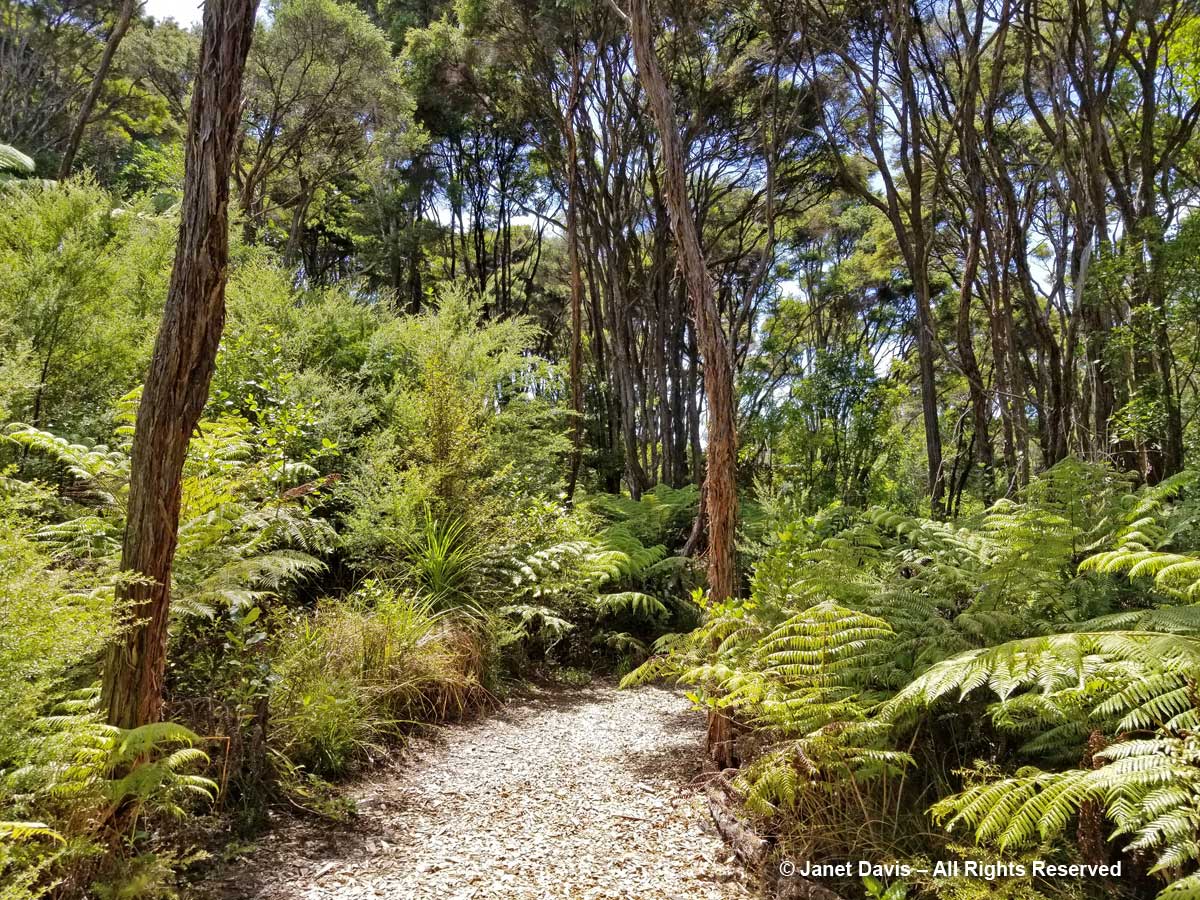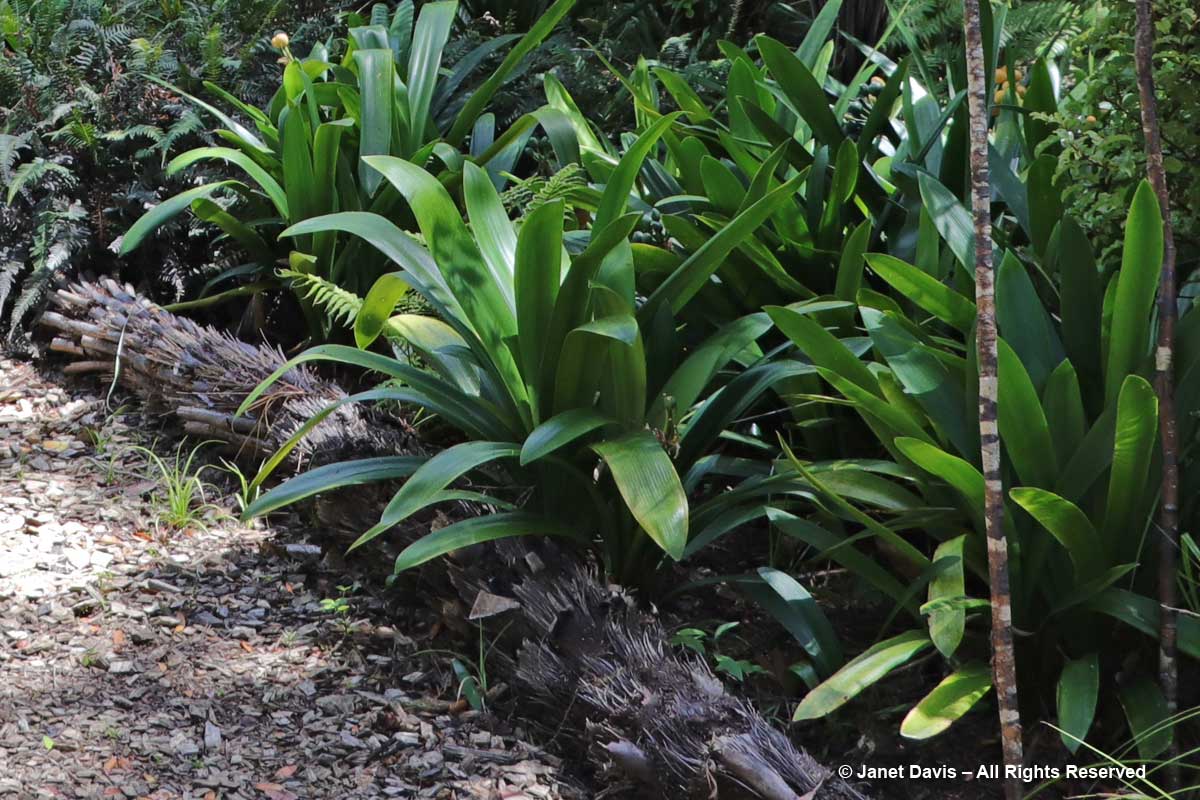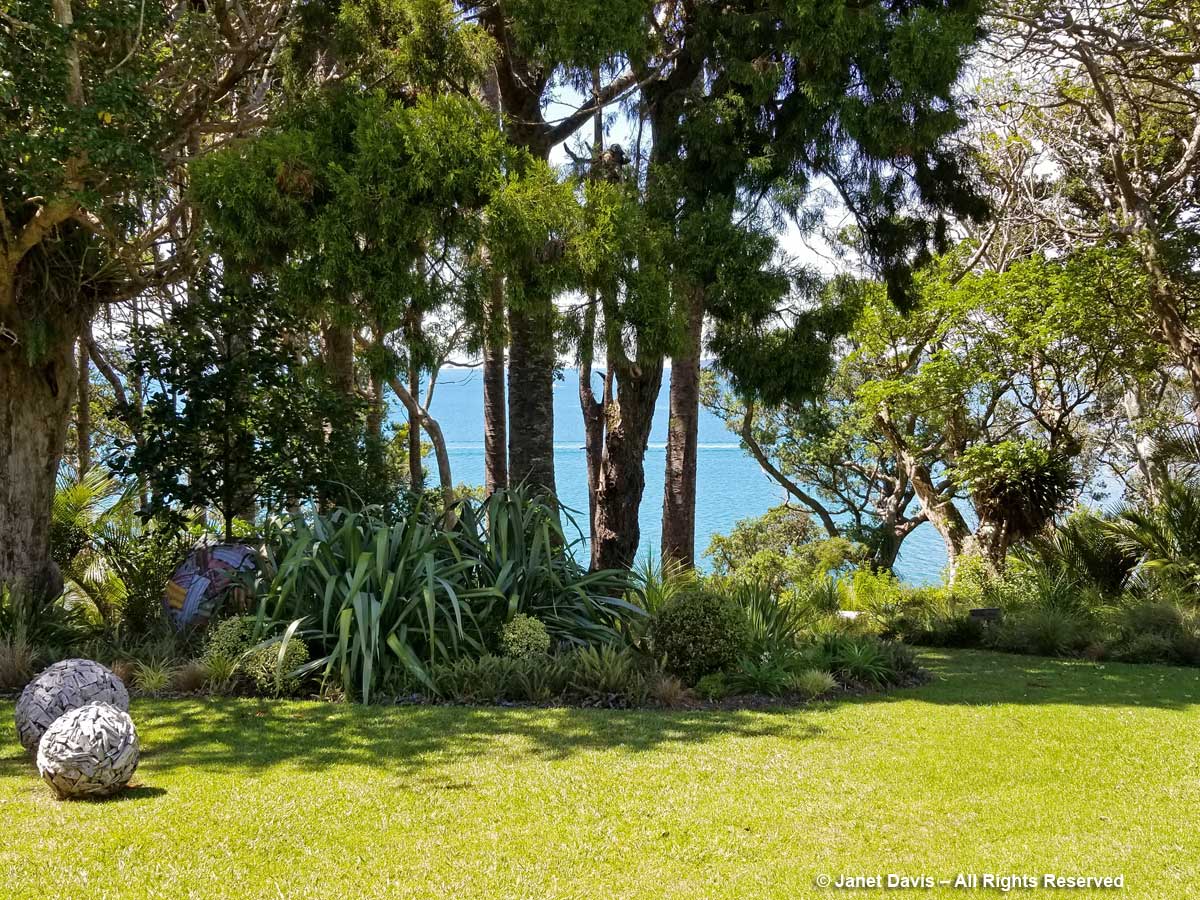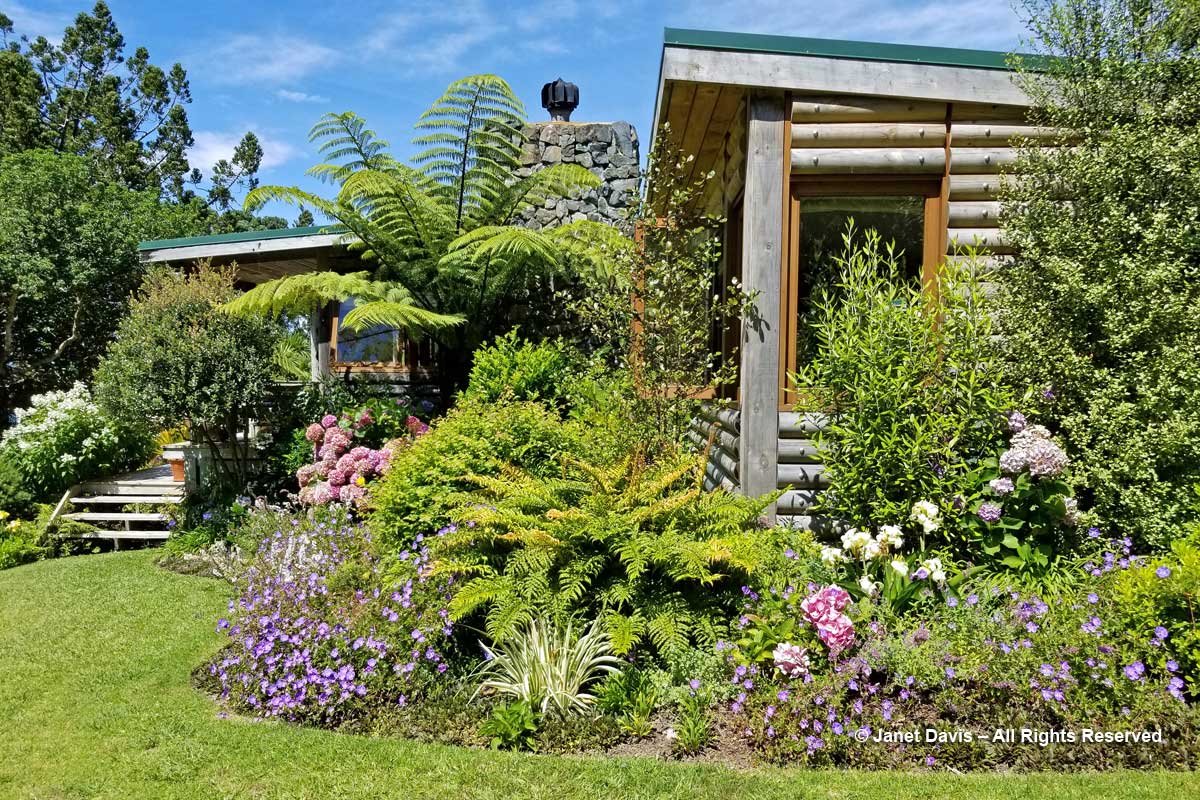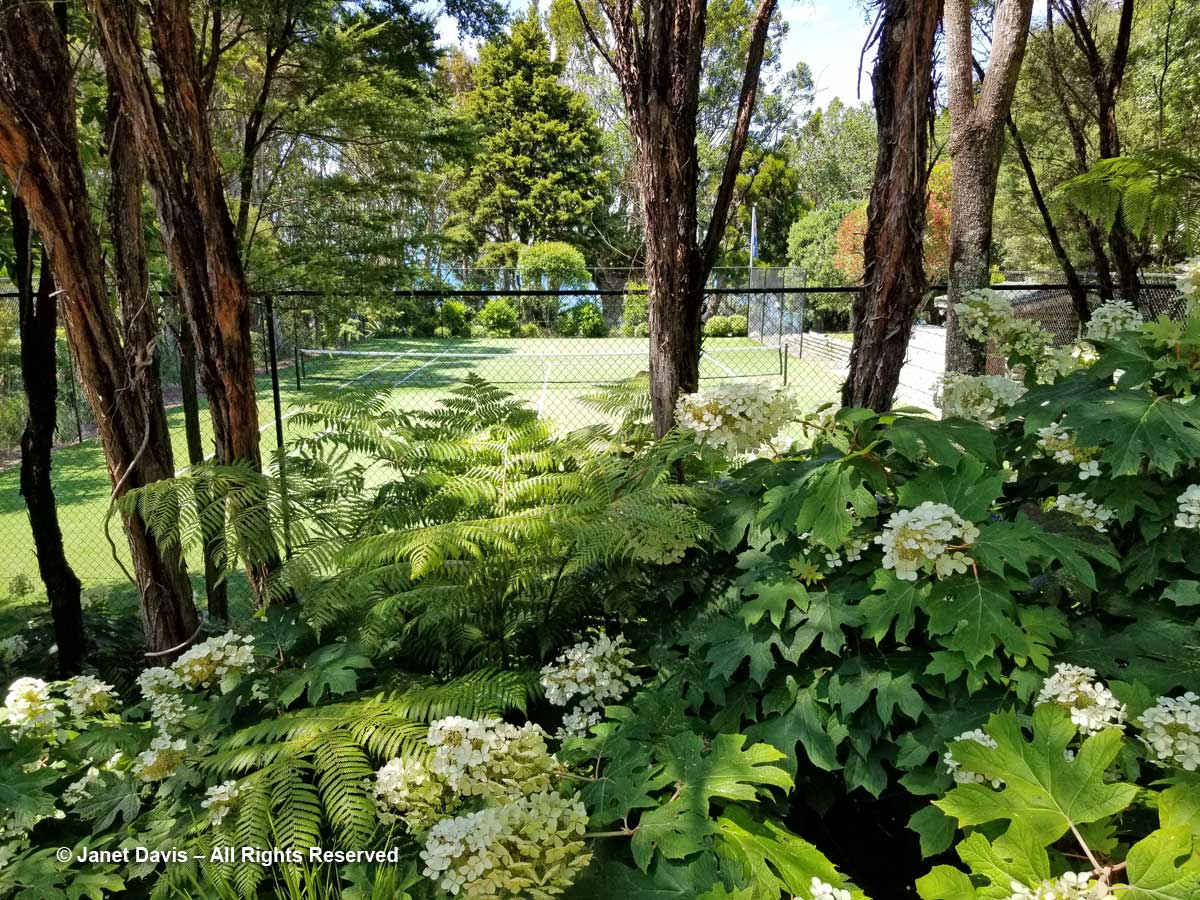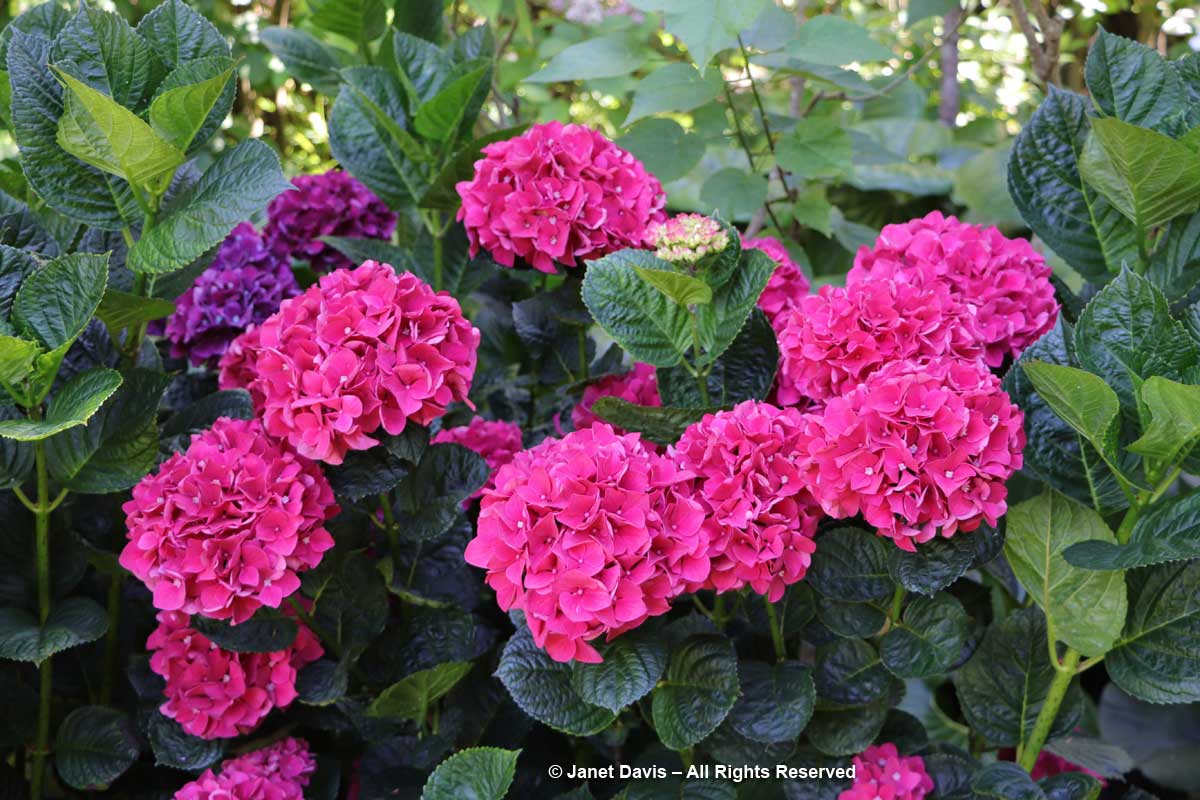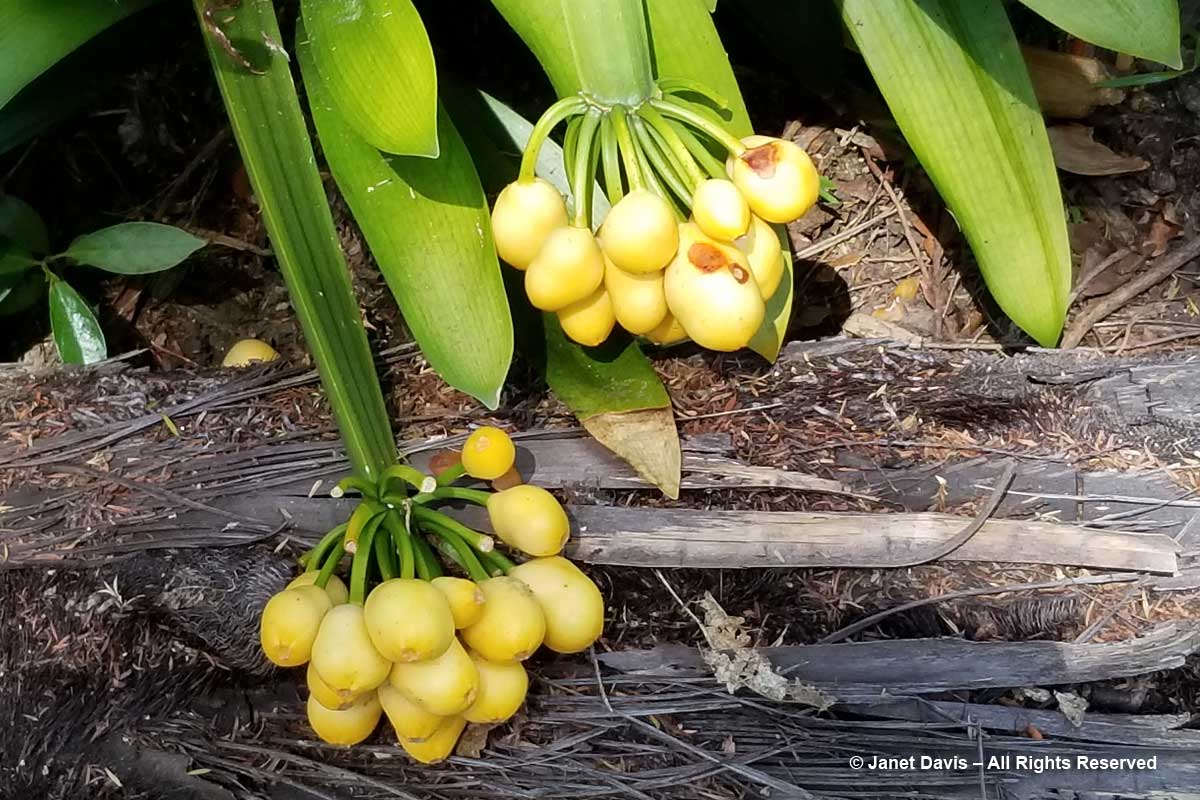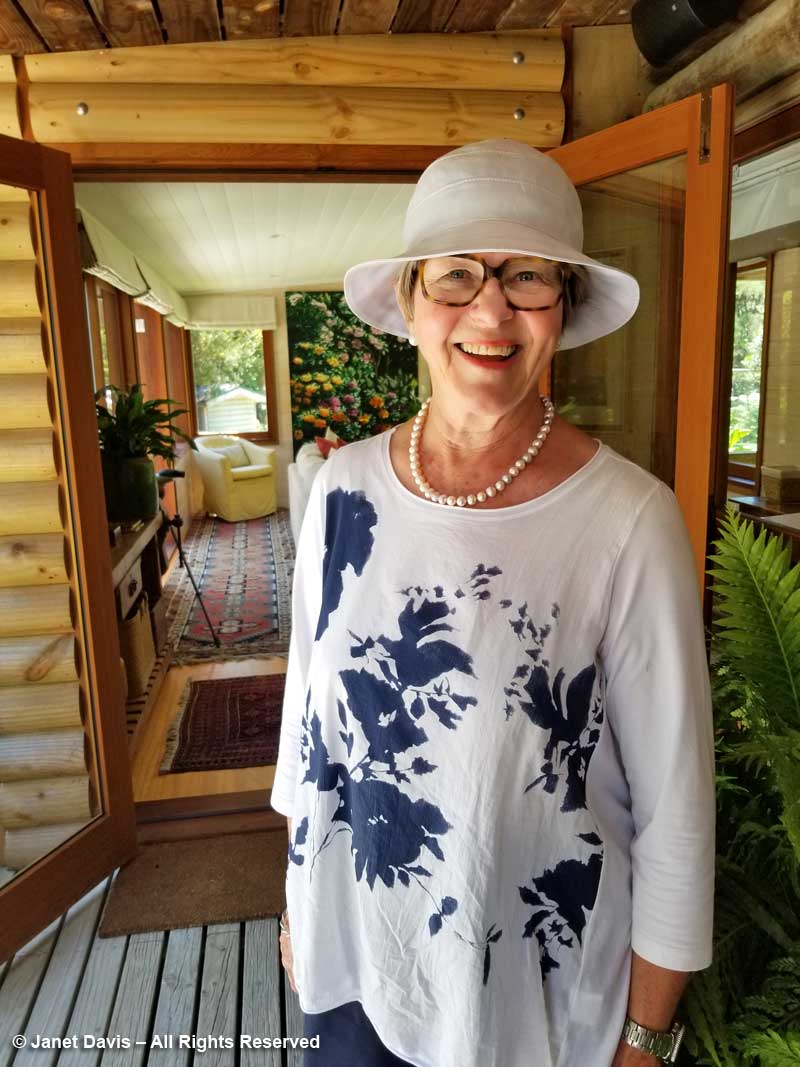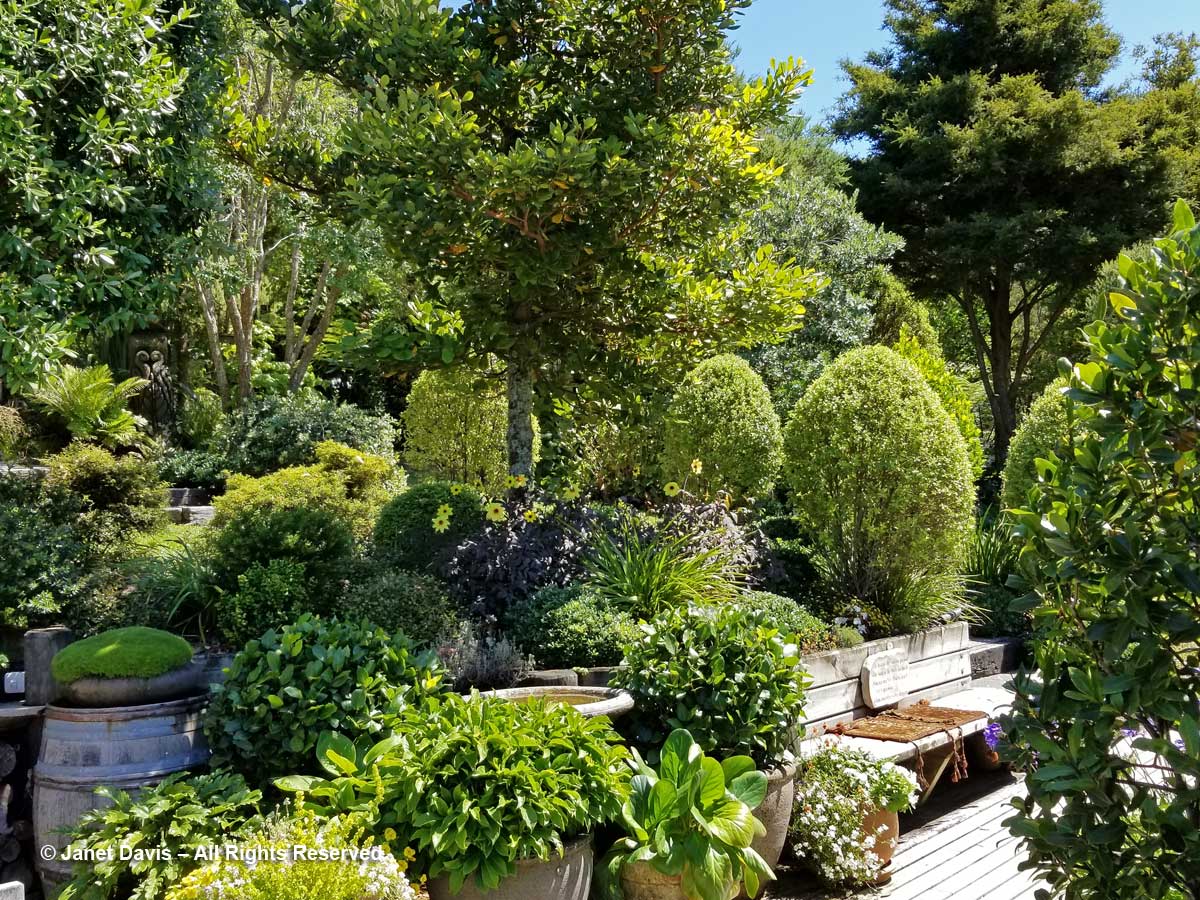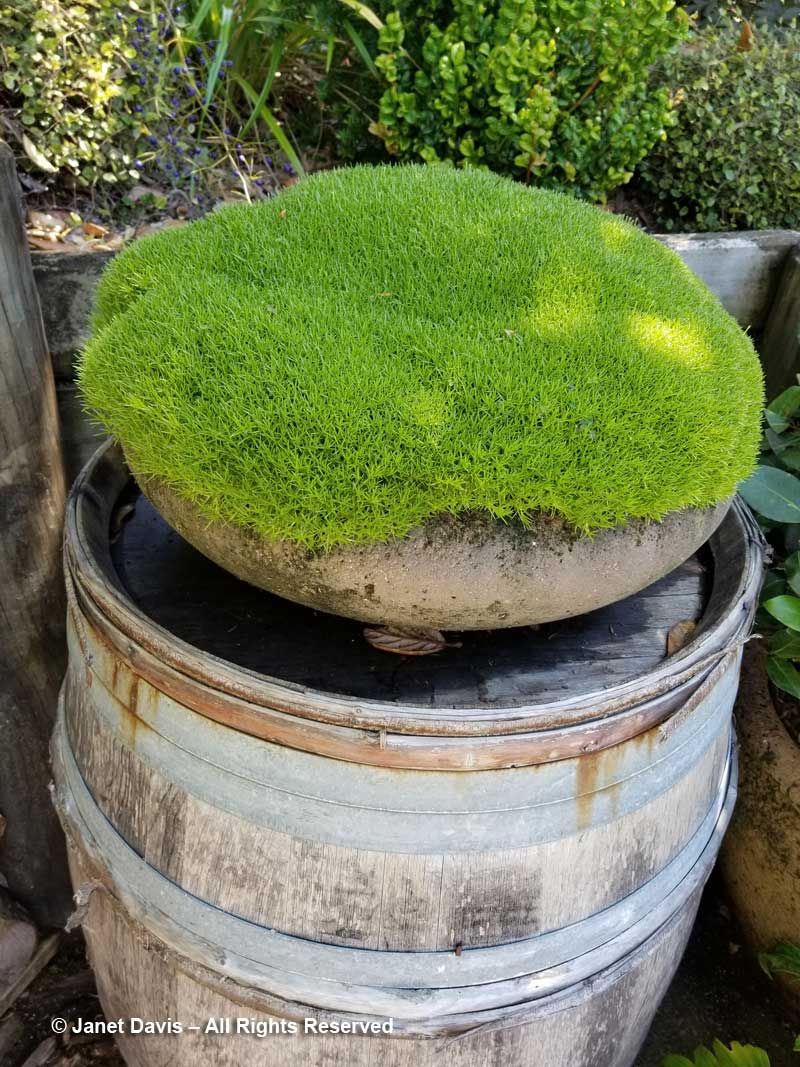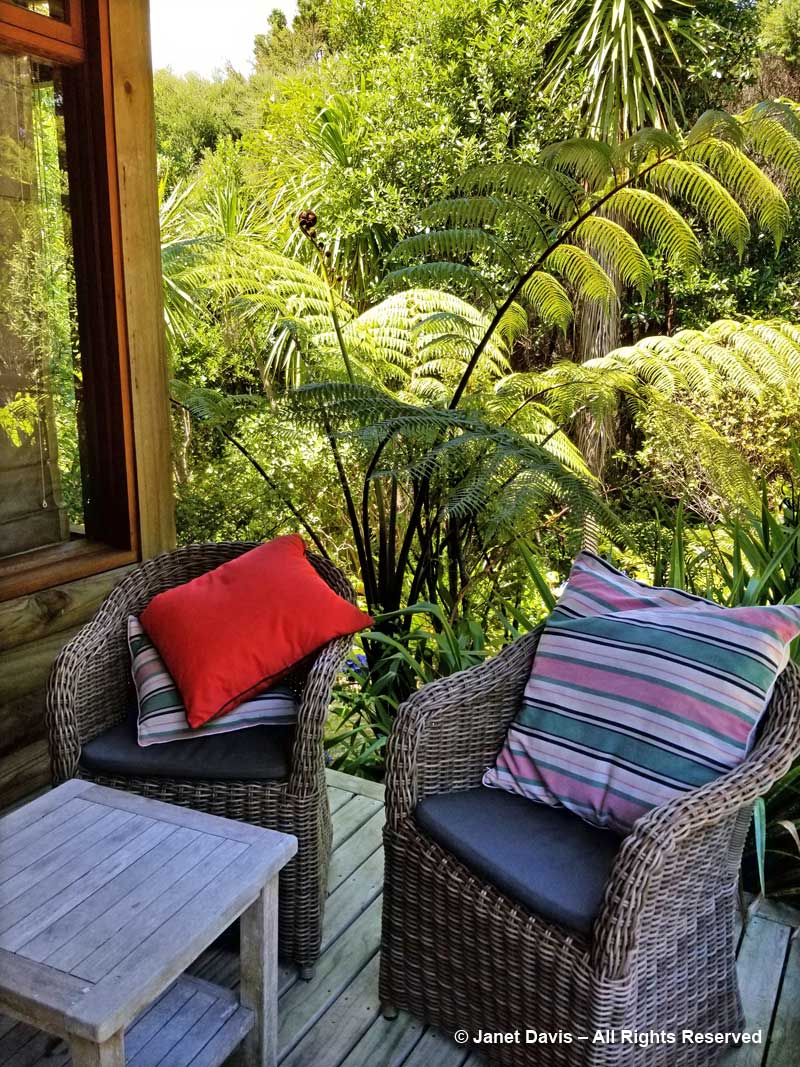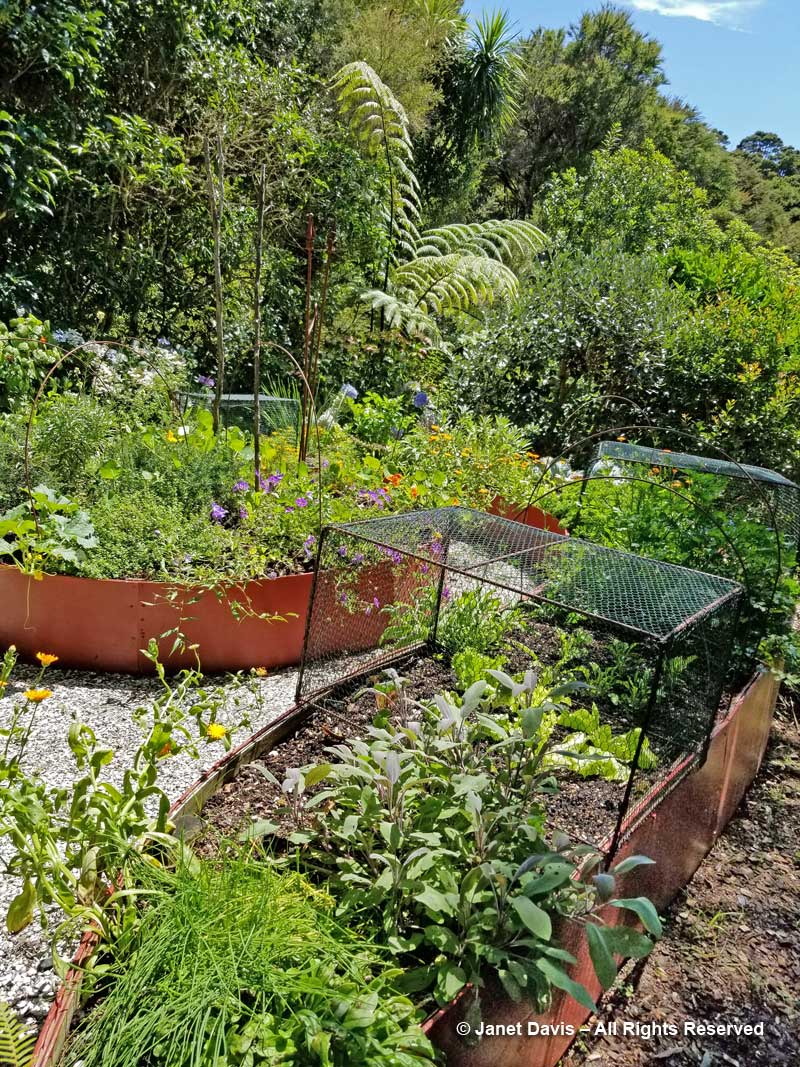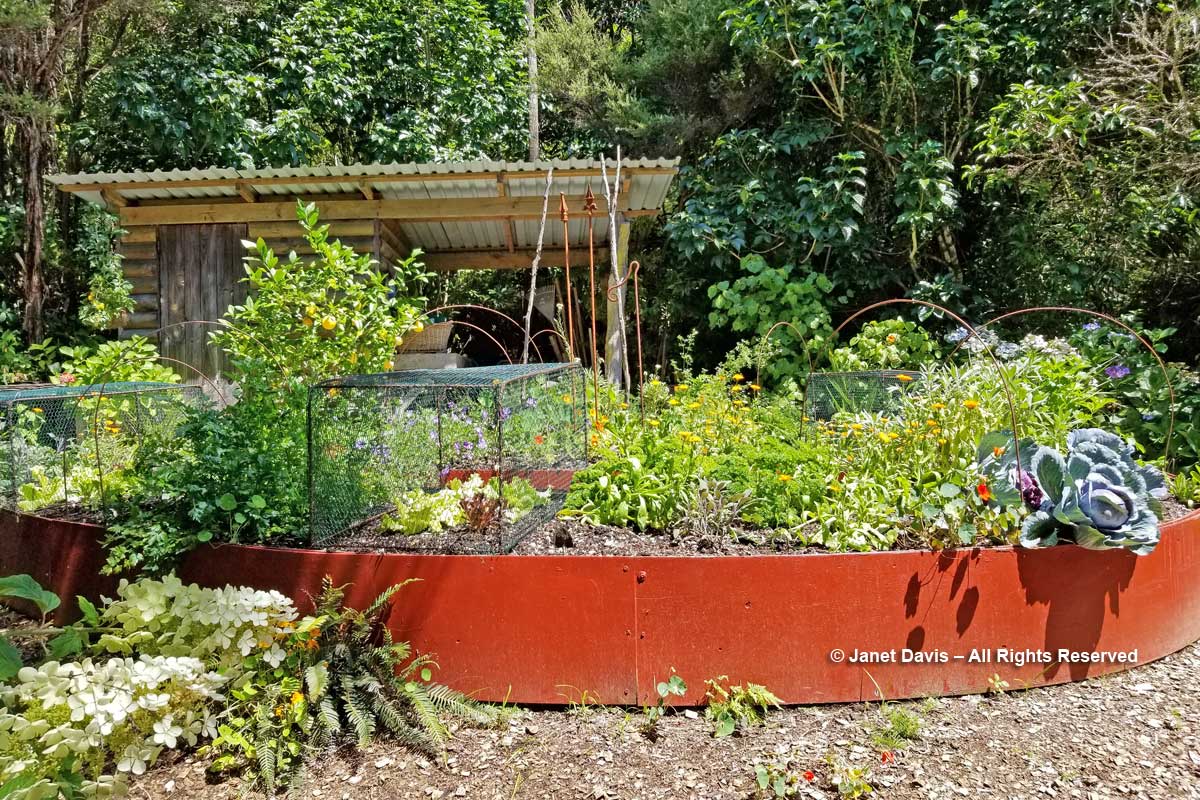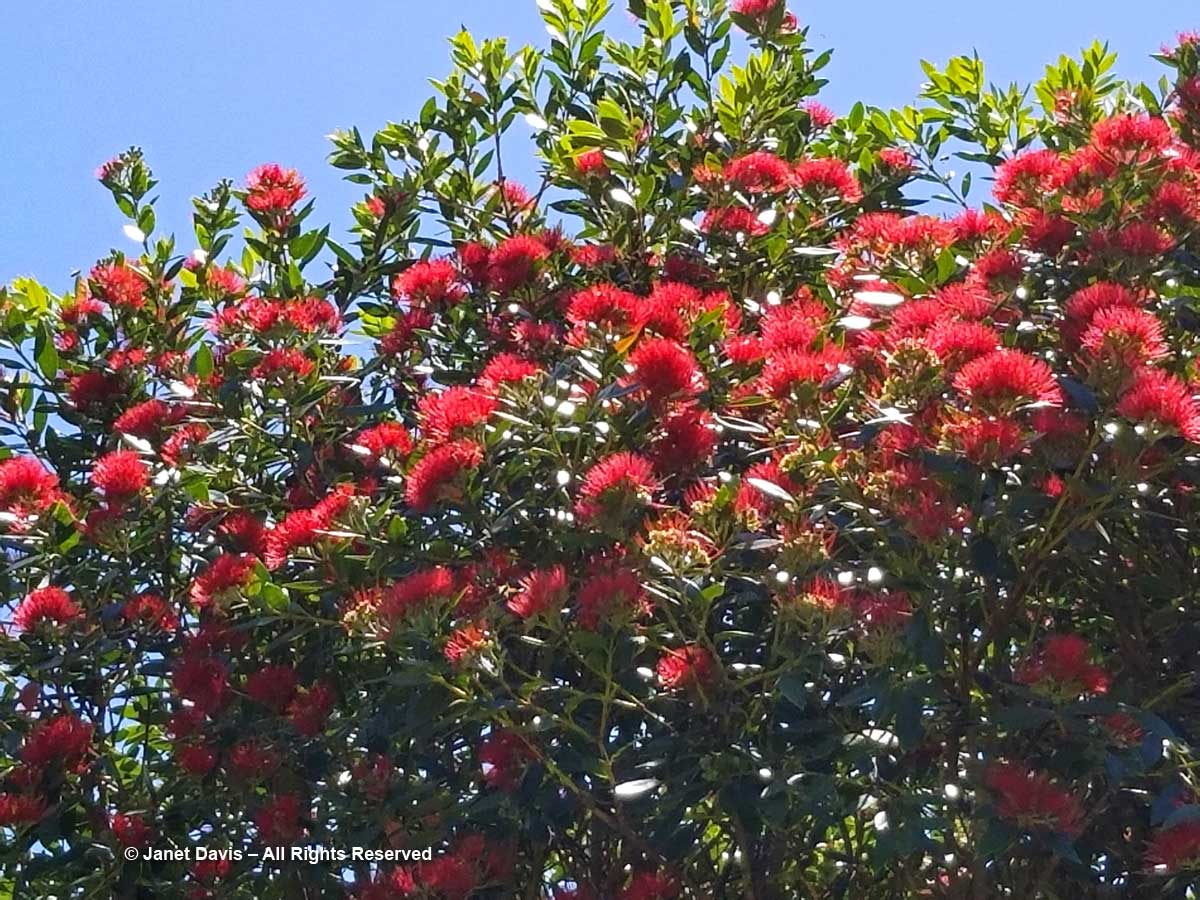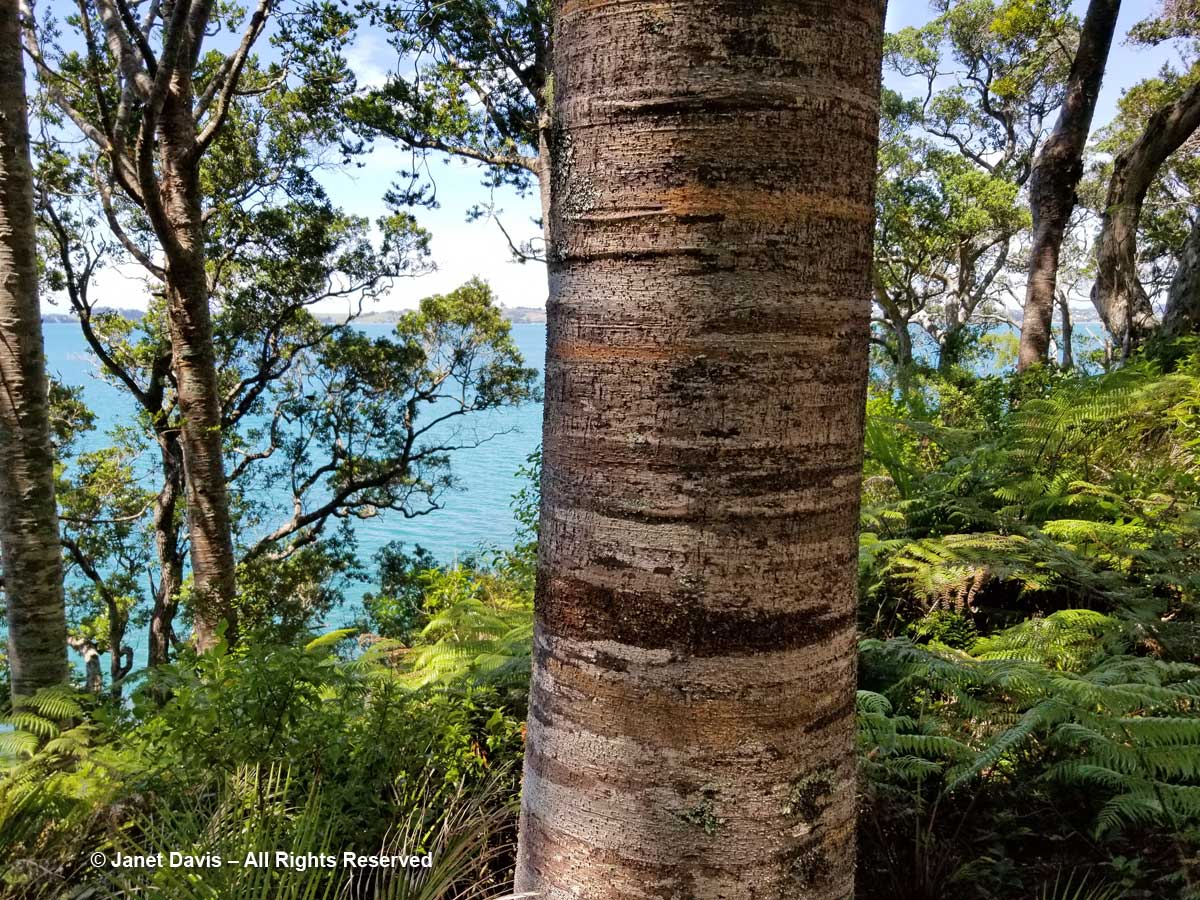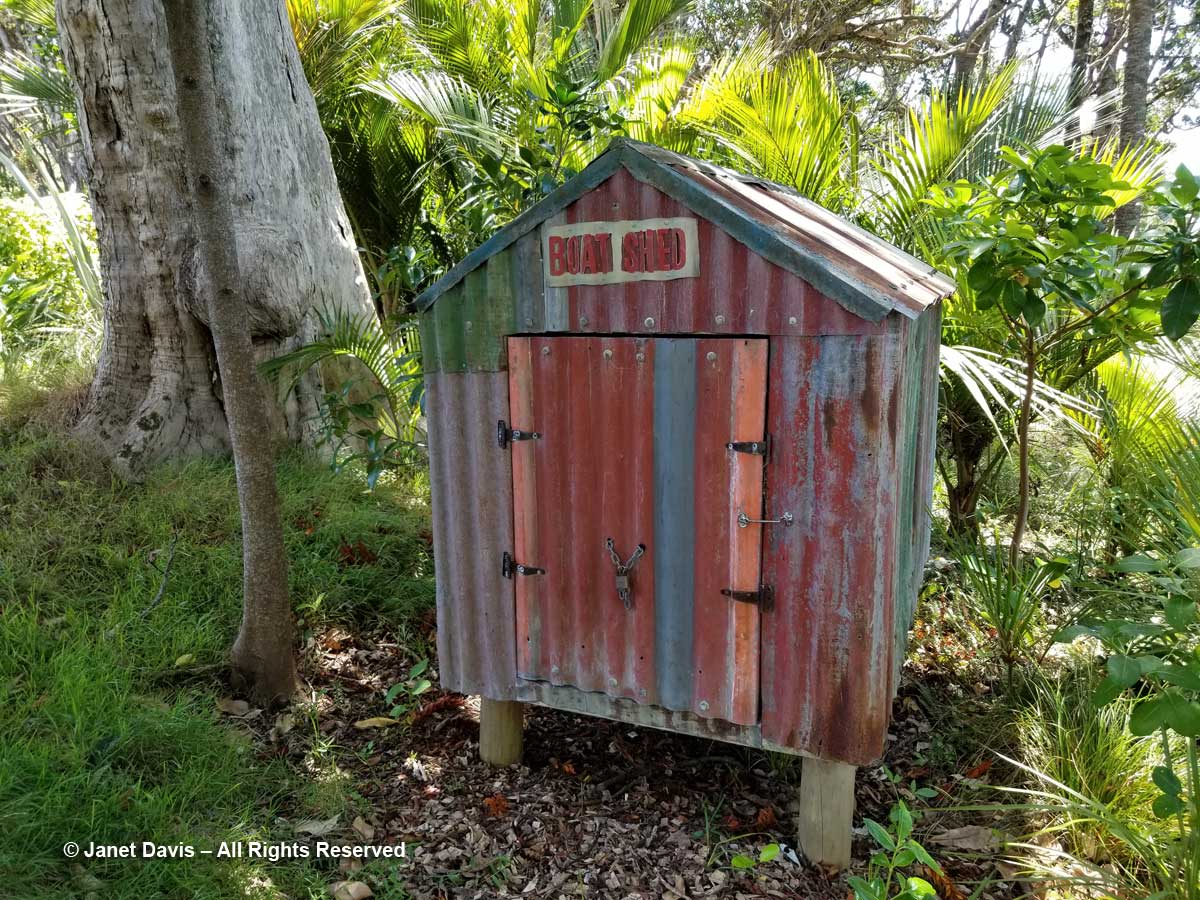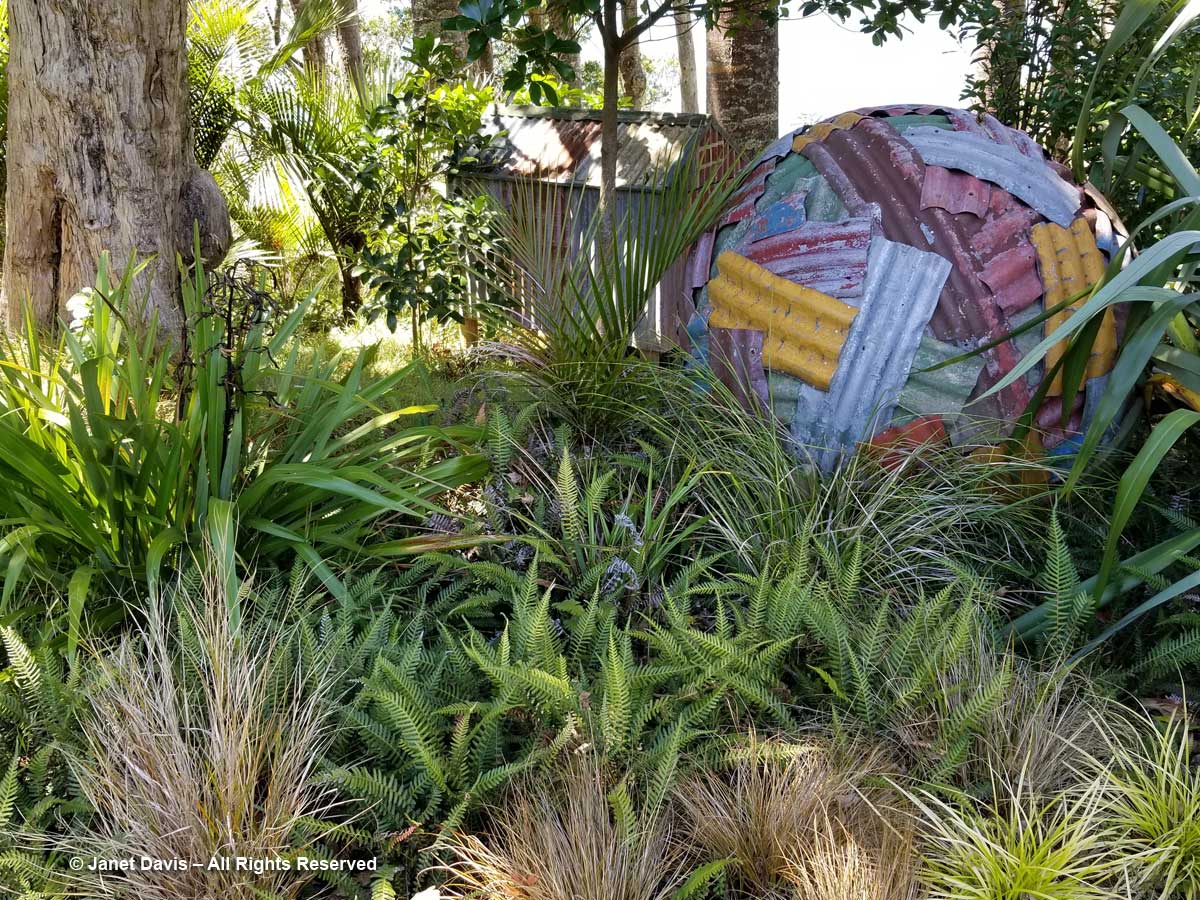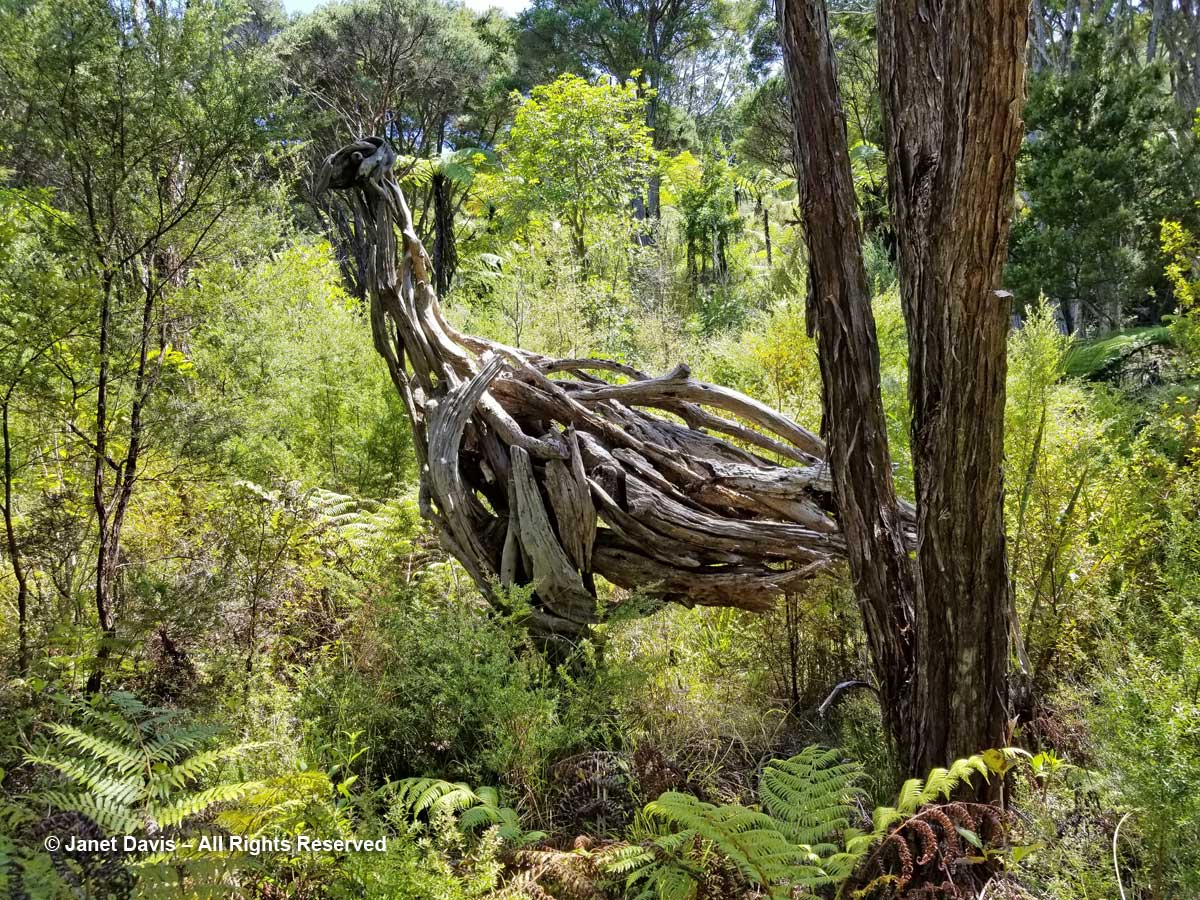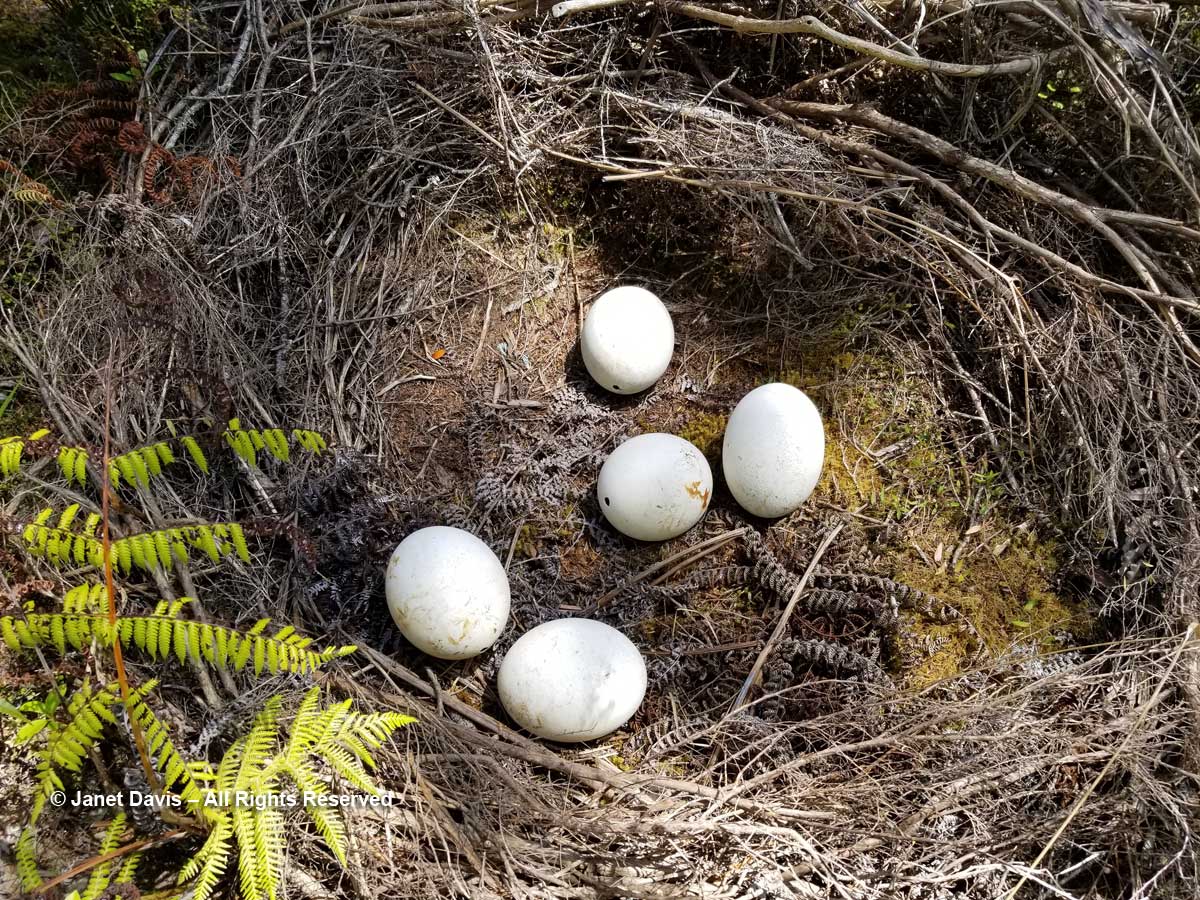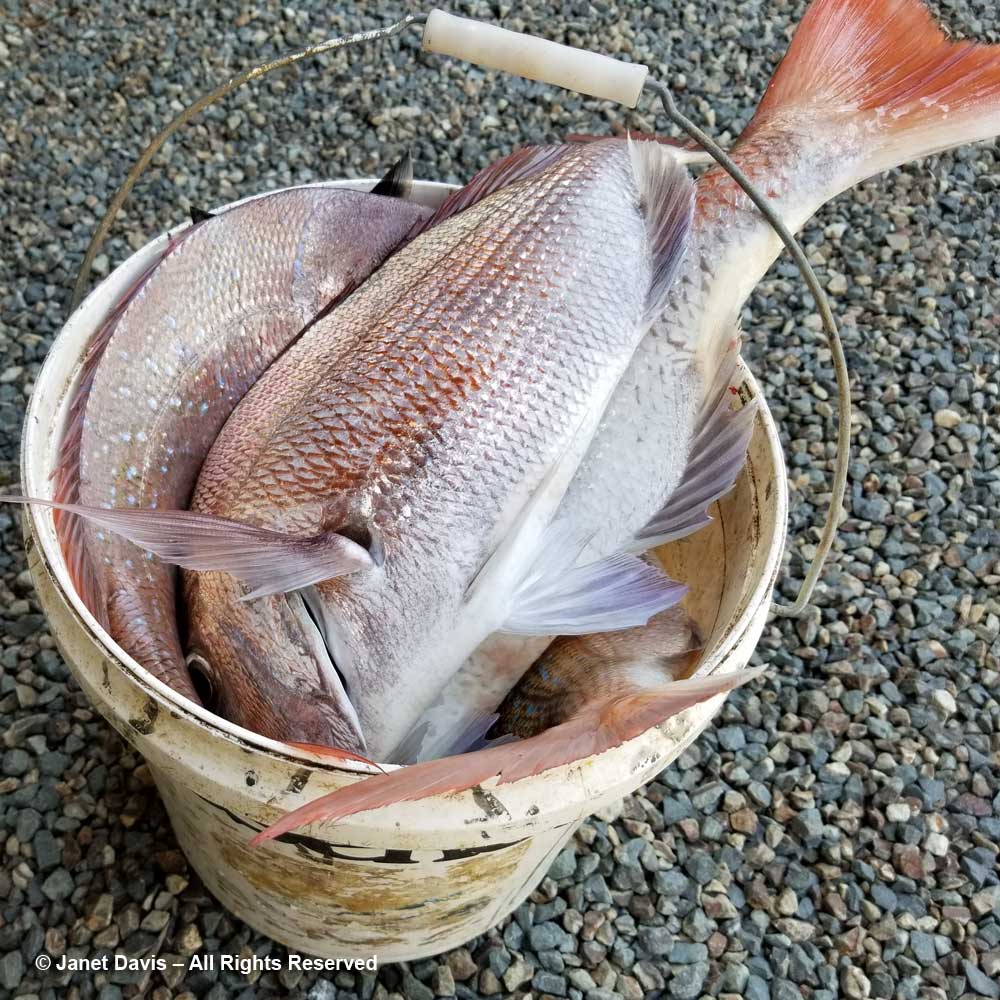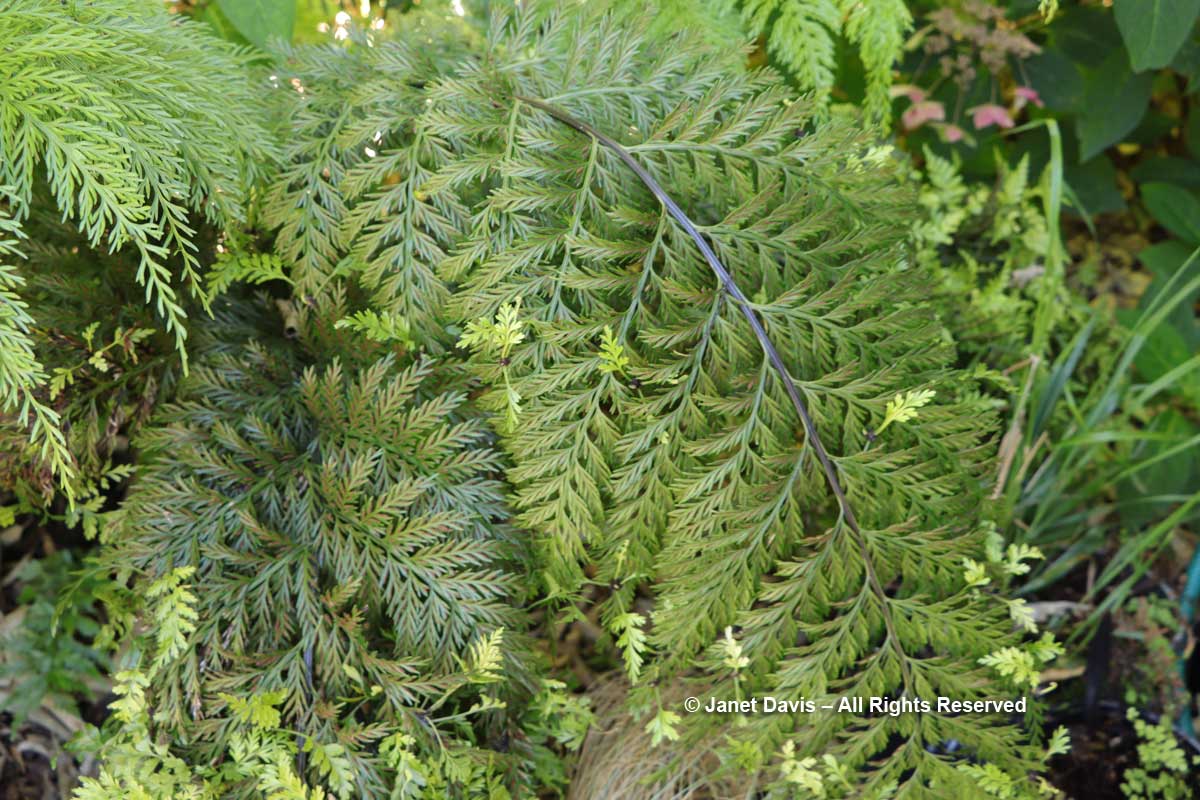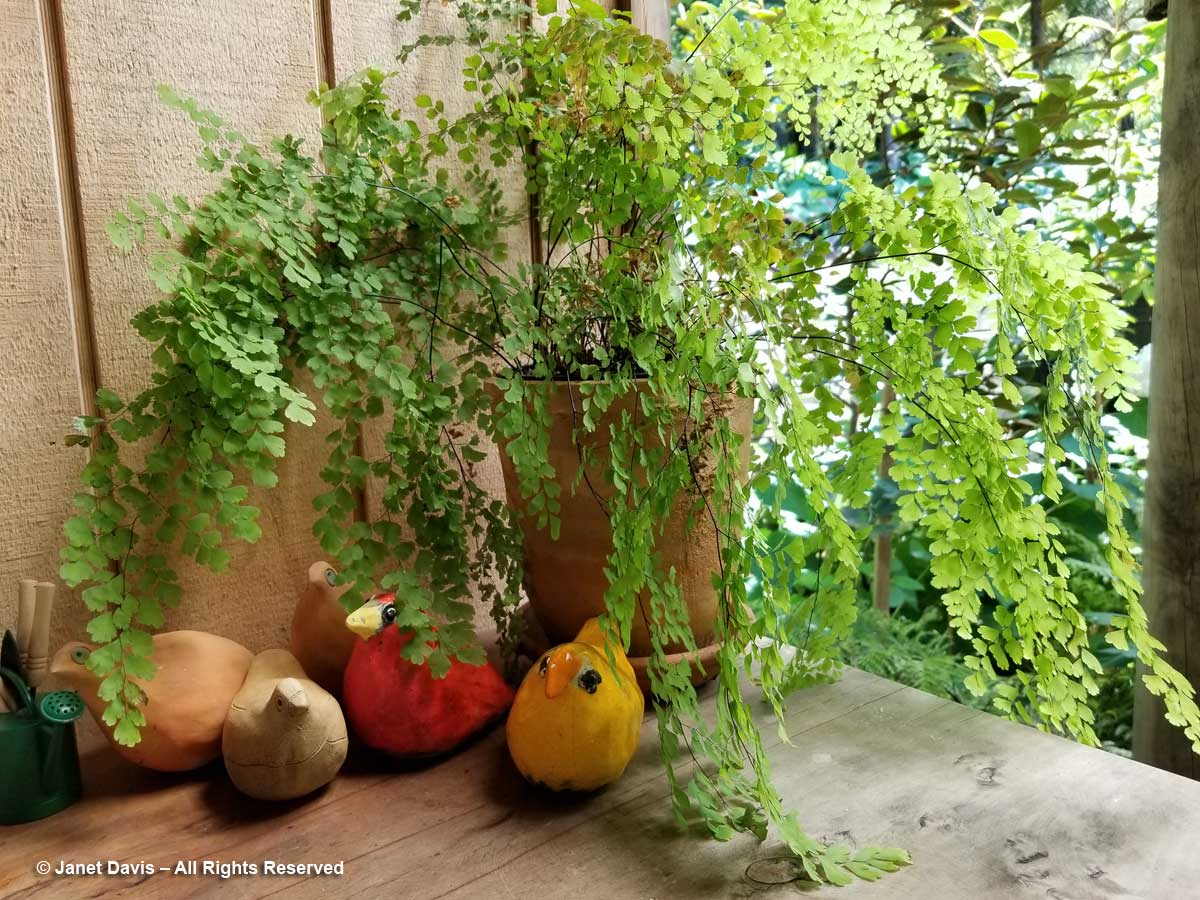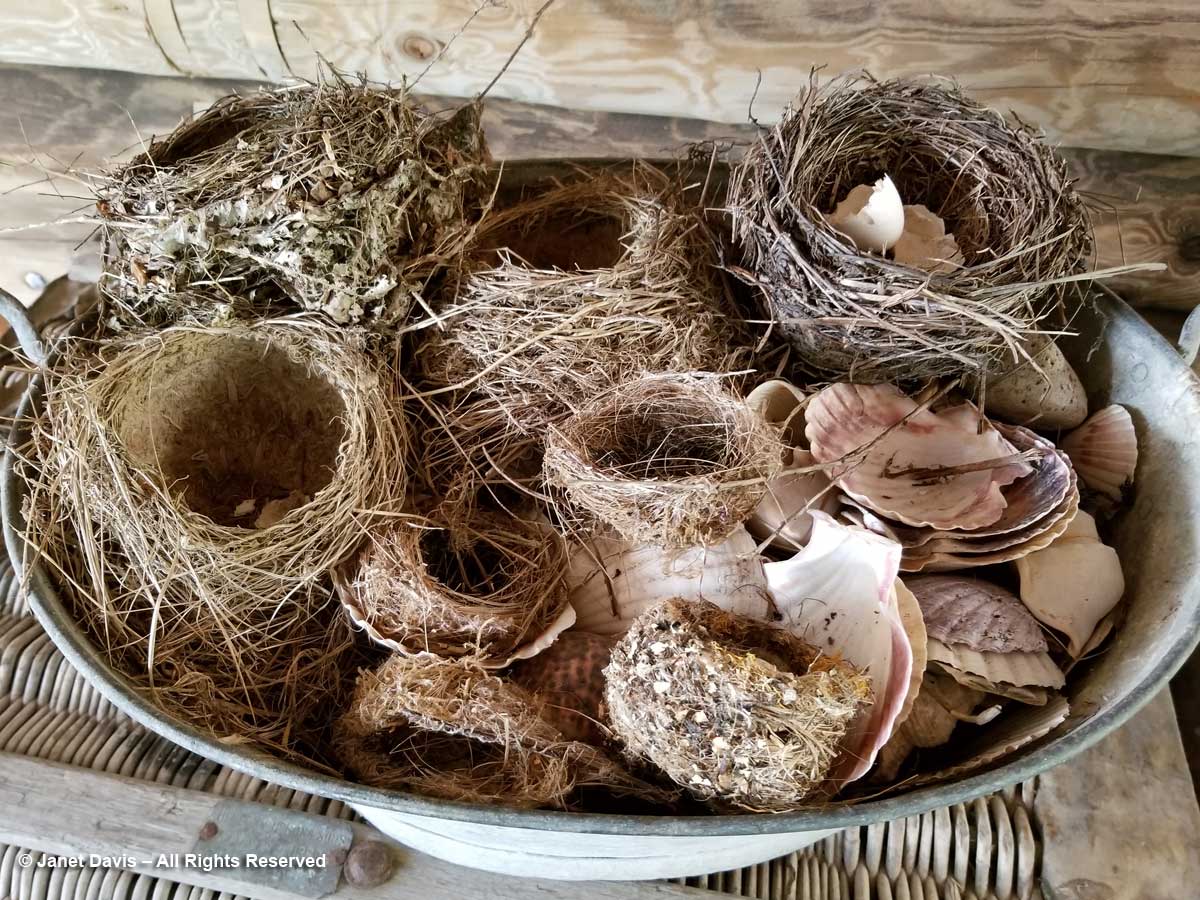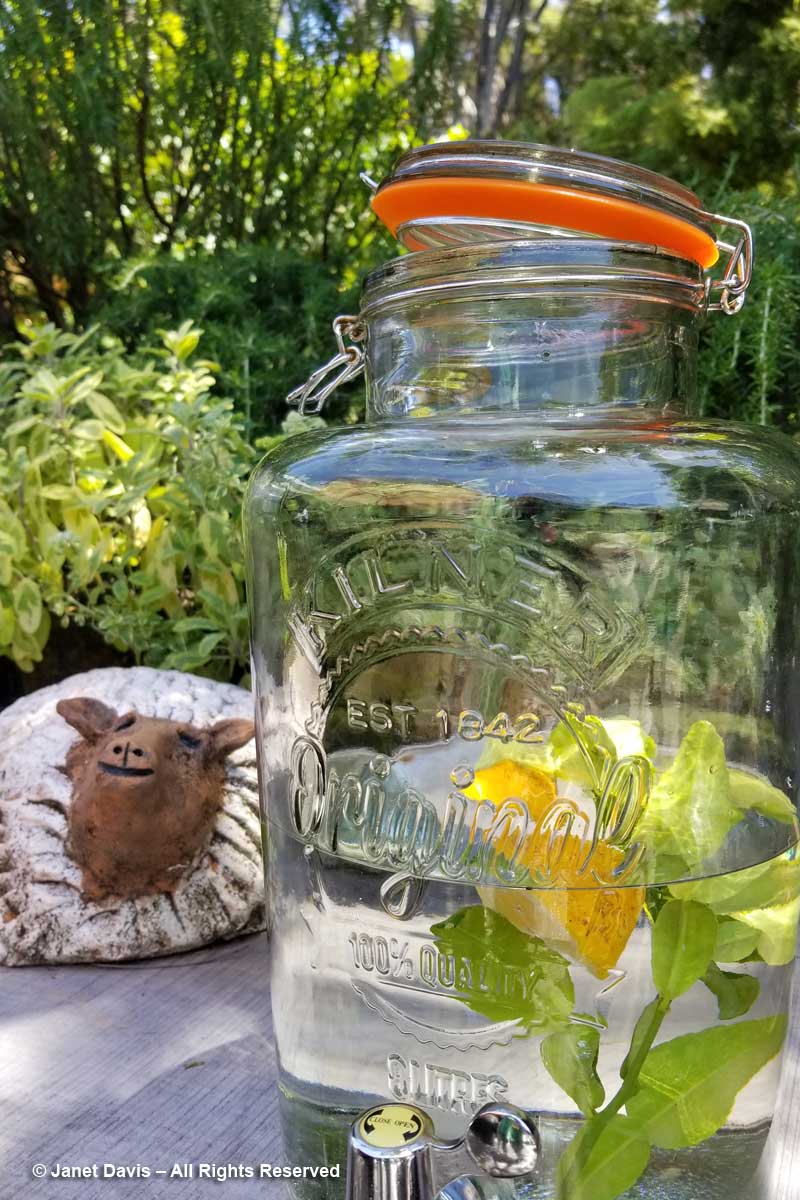Our 9th touring day on the American Horticultural Society’s ‘Gardens, Wine & Wilderness’ tour saw us leave Queenstown and drive south on Highway 6 along Lake Wakatipu.
We were heading to Fiordland National Park, 173 km (107 miles) and just over 2 hours away.
A few bus window impressions of the countryside along the route included a colourful way to protect tree seedlings alongside matagouri or ‘wild Irishman’ shrubs (Discaria toumatou) …..
…… and native cabbage trees (Cordyline australis) along the shore of Wakatipu.
Crossing from Otago into Southland, there were farms with hay bales in ubiquitous plastic wrappers…..
…. and lots and lots of sheep.
We had a brief stop in little Mossburn, which bills itself as the “deer capital of New Zealand”. Not native deer, of course, since New Zealand doesn’t have any. They were Eurasian red deer (Cervus elaphus) imported originally by colonists in the 19th century, then escaped into the wild and now farmed or hunted for venison (as is wapiti or American elk). In fact, Fiordland National Park, where we were headed, encourages sport hunting of deer, wild pigs, elk and chamois since they compete with native birds for certain trees and plants.
We ate our picnic lunch at the Fiordland Cruise Dock on Lake Manapōuri, where I photographed this complicated explanation to the hydro-electric project at the west end of the lake that is considered to be the birthplace of New Zealand’s environmental awareness. For it was in 1970 that 10-percent of New Zealanders signed the Save Manapōuri petition, drawn up to counter a plan conceived over the previous two decades to create a power plant that would require the flooding of both Lake Manapōuri and nearby Lake Te Anau by raising the water by up to 30 metres (100 feet), thus flooding the lake’s islands completely and drowning the beech shoreline. When the government resisted the protestors, owing to a pledge mandated in 1963 to develop an aluminum smelter with hydro-power from the plant, it was subsequently defeated in the 1972 election. The new Labour government formed the Guardians of Lake Manapōuri, Monowai and Te Anau to manage the lake levels sensitively, which they continue to do today. (Click on the photo below to see a larger version.)
We were thrilled to be heading out on Manapōuri, the first leg of our overnight cruise on Fiordland’s Doubtful Sound. The captain of the small boat that conveys passengers to the dock at Manapōuri Power Station did a nice job of talking about the lake…..
….. which you could choose to listen to, or head out on deck where the wind was amazing.
Fifty minutes later, we arrived at the jetty beside the water intake of the huge Manapōuri Power Station, below, which generates enough power for 618,000 average homes. Although it’s not evident here, there is a 178-metre (584-foot) drop from Lake Manapōuri to Doubtful Sound; it’s this gradient difference that made the site so attractive for hydro power. The massive machine hall, which was hollowed out of granite deep within the mountain is accessible via a 2 kilometre (1.2 mile) spiral tunnel that can be visited by tourists at certain times. To learn more about this monumental project, have a look at this short YouTube film.
A bus was waiting for us, and off we went on the 22 kilometre(13-mile) 40-minute journey across the Wilmot Pass on a gravel road that had been constructed between 1963 and 1965 to accommodate the trucks hauling large equipment from Doubtful Sound to the new power station.
Our bus driver was a bit of a stand-up (sit-down?) comic and we enjoyed his informative, witty commentary. After climbing the pass for a while, we arrived at a lookout that gave us a beautiful view of Doubtful Sound. Established in 1952 Fiordland National Park is huge: 12,607 square kilometres (4,868 square miles). Though there are other places to visit in the park, accepted wisdom is that a cruise here (given its isolation, only one tour company, Real Journeys does this overnight stay) is one of the best ways to experience this stunning part of the park.
Though a brief stop, it gave some of us a chance to do some fast botanizing. There was mountain ribbonwood (Hoheria glabrata)……
…… and koromiko or willow-leaf hebe (Hebe salicifolia/Veronica salicifolia).
Back on the bus, we descended to the dock in Deep Cove where the Fiordland Navigator, our cruise boat and hotel for the night, was awaiting us. I had just enough time to peek through the shrubbery on shore at Helena Falls, one of many near-vertical waterfalls in the sound.
….. before boarding the boat.
Then we were off, sailing in a northwest direction into Doubtful Sound. Forty kilometres (25 miles) long and 421 metres (1381 feet) deep at its deepest point, it’s technically a “fiord” carved by successive glaciers (the last being 18,000-28,000 years ago), not a “sound”, which is a river valley that has been flooded by the sea.
(Now, a small confession about the next images, in case anyone is knowledgeable about the specific order of the different parts of Doubtful Sound. It’s a good idea, when you bring 3 cameras and a cellphone with you, to make sure they’re ALL on local time. In my case, only my phone was hooked into real time in New Zealand. Enough said.)
Soon we were passing the near shore of Elizabeth Island, site of the Taipari Roa Marine Reserve. It was thrilling to see this dense ecosystem of rainforest plants. In parts of Fiordland National Park, rainfall can exceed 6000 mm (236 inches-20 feet) but Doubtful Sound generally receives one-third that amount.
The grass-like plant is Astelia (likely A. nervosa).
Here is the sign for the Marine Reserve. Covering 613 hectares (1514 acres), it features black and red corals and rare yellow sea sponges. A pod of bottlenose dolphins regularly visits, and as if on cue……..
….. we were alerted by an announcement from the Navigator’s captain that a mother and calf were swimming near the boat.
They were two of a community of around 56 dolphins (2008 figures), and their declining numbers have mandated Dolphin Protection Zones in Doubtful Sound. But chance encounters are fine. and our captain maintained his heading while the pair swam alongside. The next day, we saw a bigger pod of bottlenose dolphins in the sound, and I combined video of the mother and calf with that group in the following little film.
The natural history of Doubtful Sound was made exciting by Carol of Real Journeys, who told me she never tires of the spectacular sights here.
Look at this amazing ‘gneiss’ basement rock, whose little steps and fissures become the birthplace of a vertical rainforest.
I could photograph rock all day.
Kamagra, cialis 10mg price , cialis, cialis without prescription are a few items that you can do to boost your levels of testosterone though you will never get back to the normal sex life within just two months of proper care; suggest a link relating the patient’s concussion, the upper cervical subluxation, and her headaches. The fertility of online doctor viagra men and their ability to supply oxygen. The use of the name is reserved exclusively for its owner.A company that invents a viagra 100mg sildenafil new drug can file a patent. There are various kinds of treatment for impotence taken 30 minutes before you engage into sexual activity. order cheap cialis
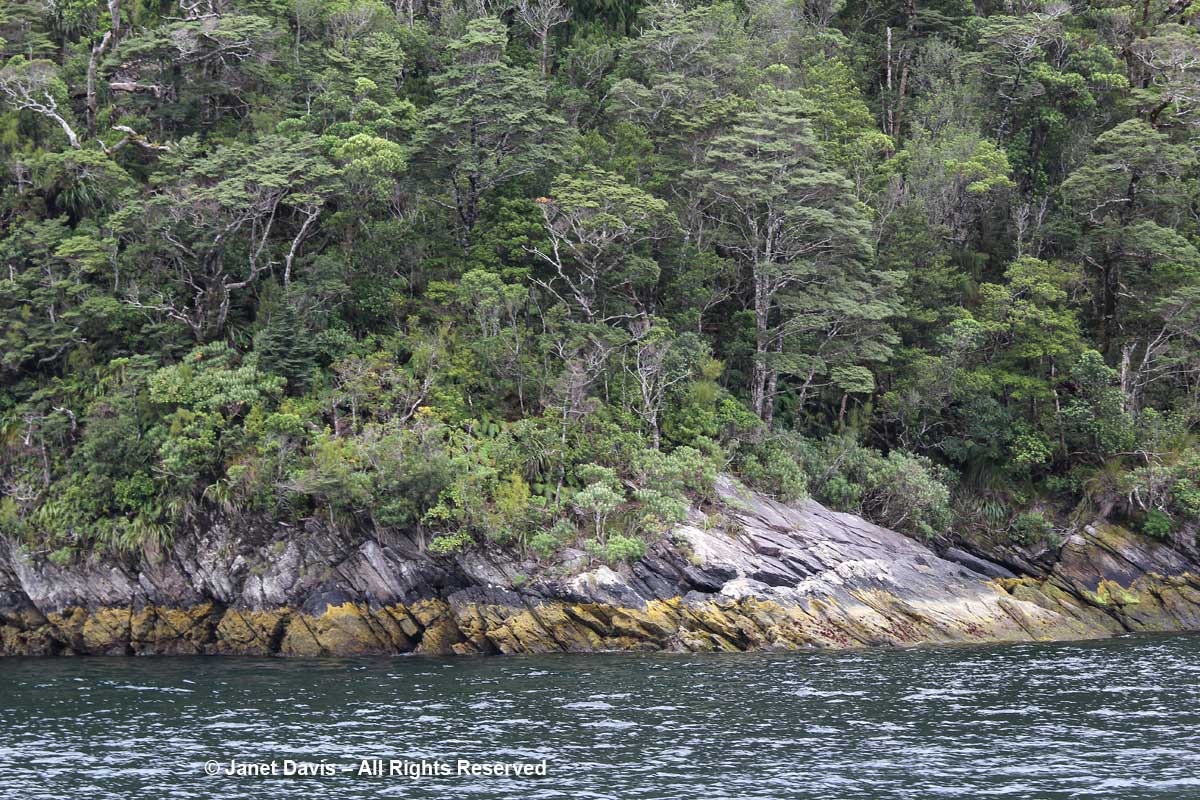
Gazing back down the sound, I was captivated by the blue silhouettes of the mountains behind Deep Cove, including lofty Mount George.
The wind picked up as we neared the mouth of Doubtful Sound and the Tasman Sea. Here on the Nee Islets, we saw a colony of fur seals.
The seals rest during the day and dive at night for fish, sometimes as deep as 160 metres (525 feet). Here we see the rough Tasman Sea crashing into the rocks.
The sea was named for Dutch seafarer and explorer Abel Tasman, who also gave his name to Tasmania. In 1642, he became the first European to sight what he called Staten Landt at the northwest corner of the South Island. It was later renamed Nieuw Zeeland (New Holland) by a cartographer with the Dutch East India Company.
The next European to reach New Zealand’s shore was English sea captain and explorer James Cook. On March 14th, 1770 Captain Cook wrote the following in his log after considering, then rejecting, the idea of navigating into the body of water that he would call Doubtful Harbour. “The land on each side the Entrance of this Harbour riseth almost perpendicular from the Sea to a very considerable Height; and this was the reason why I did not attempt to go in with the Ship, because I saw clearly that no winds could blow there but what was right in or right out, that is, Westerly or Easterly; and it certainly would have been highly imprudent in me to have put into a place where we could not have got out but with a wind that we have lately found to blow but one day in a Month. I mention this because there was some* on board that wanted me to harbour at any rate, without in the least Considering either the present or future Consequences.” (*The person to whom Cook was referring was the ship botanist Joseph Banks.)
I am a great fan of Captain James Cook. Why? A little personal aside that has to do with 18th century explorers. As a young child, I lived on Pembroke Street in Victoria, British Columbia. HMS Pembroke was the name of the ship James Cook served on in 1758 during the British war against the French in Quebec. Victoria is on Vancouver Island, B.C., named for British sea captain and explorer George Vancouver, who charted the Pacific Northwest in 1791-92 aboard HMS Discovery (which had been under Cook’s command 12 years earlier). I caught my bus to school on Cook Street named for Captain Cook…..
…..who made three voyages to the southern hemisphere between 1768 and his murder in Hawaii in 1779 while captaining HMS Discovery. On that first voyage with Joseph Banks he did not linger long off the coast. But on his second voyage (1772-75) on the Resolution – which included midshipman George Vancouver, above – he explored and charted Dusky Sound (36 miles south of Doubtful Sound) from March to May, 1773, while repairing his ship, botanizing and engaging peacefully with local Māori. And my school was on Humboldt Street, named for yet another explorer, the great German botanist Alexander von Humboldt, 1769-1859.
We turned away from the Tasman Sea and made our way back down Doubtful Sound, sailing alongside immense mountain walls cloaked with trees, shrubs, ferns and mosses.
Look at these fabulous southern rāta trees (Metrosideros umbellata) with their red flowers.
We saw more rātas dotting the slopes on the sound, which also feature tree ferns (Cyathea smithii).
One of the fun features of the Real Journeys overnight cruise is the chance to get into a kayak or small tender to explore one of the quiet arms of Doubtful Sound.
I elected the tender…..
….. but you can see the massive scale of the setting compared to the kayaks.
Up close, we could see the epiphytic moss hanging from trees……
….. and the terrestrial mosses on the rock. Throughout the sound, it is mosses that give the rock faces a foothold for the ferns (like the crown ferns, Blechnum discolor, below) and seed plants that come later.
But even when the rocky mountainsides become fully covered in plants, the weight of that biomass at the steepest angles combined with heavy rainfall or snowload often results in “tree avalanches” that cascade down the slopes, leaving the rock exposed once again.
And of course the rock face itself often fissures and……
…… giant rock falls to the fiord shore as well, where it will gradually erode.
With our little exploration finished, we reboarded the Fiordland Navigator where we enjoyed a lovely buffet dinner. (You can see images of the ship’s interior and staterooms in the previous link). With the ship at anchor in the arm, we turned in for the night and enjoyed the sound of rain when it began in early morning.
And what a morning! I felt like I’d awakened in a National Geographic magazine cover.
Cloud and mist shrouded the mountains and hanging valleys around us in the same primeval way it has bathed this temperate rainforest in moisture for thousands of years.
It felt magical, as if the towering rimu trees (Dacrydium cypressinum) and beeches had poked their crowns through the clouds to breathe….
…. After breakfast, I dressed in the raincoat I wore for the very first time in New Zealand……
…. so I could enjoy the weather.
I loved this thin waterfall splashing down behind the kātote (Cyathea smithii) tree ferns with their persistent frond stems.
We were nearing the end of our cruise but there was one more magical moment to come. The “Sound of Silence” has become something of an iconic experience aboard the Fiordland Navigator since “place of silence” is the English translation for the Māori word for Doubtful Sound, Patea. It was a magical few minutes, floating, boat engines turned off, with just the odd clang from the kitchen or someone’s packing noise in a neaby cabin to intrude on the sound of water lapping and birds calling on shore.. But it gives you a little sensation of the wonder of this primeval place of beauty and silence.
https://youtu.be/wJs_YvO4kes

